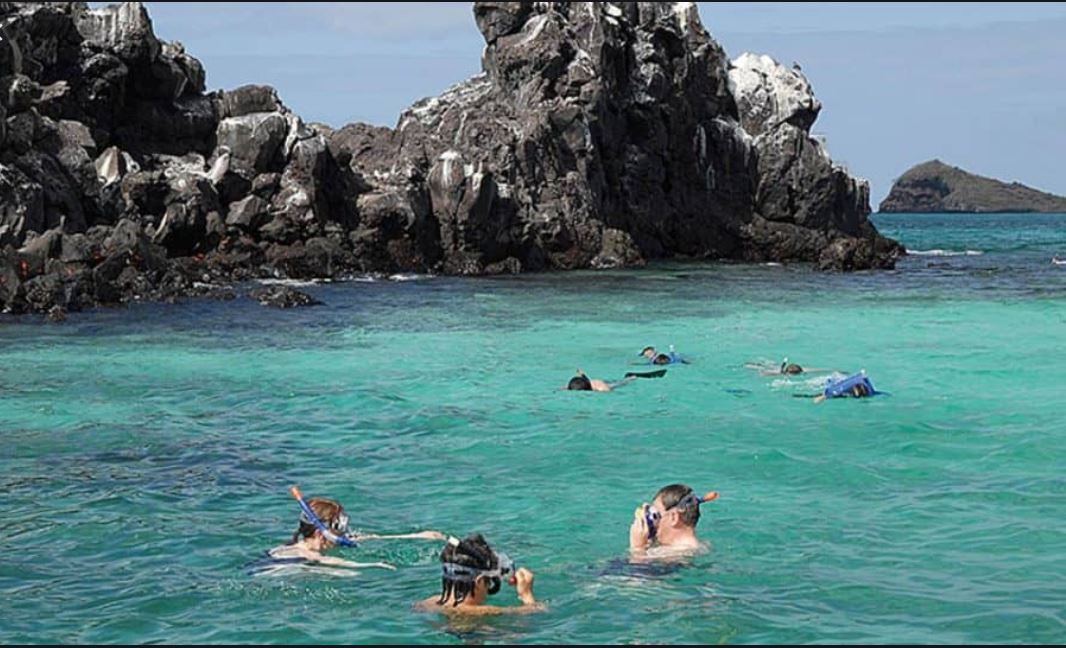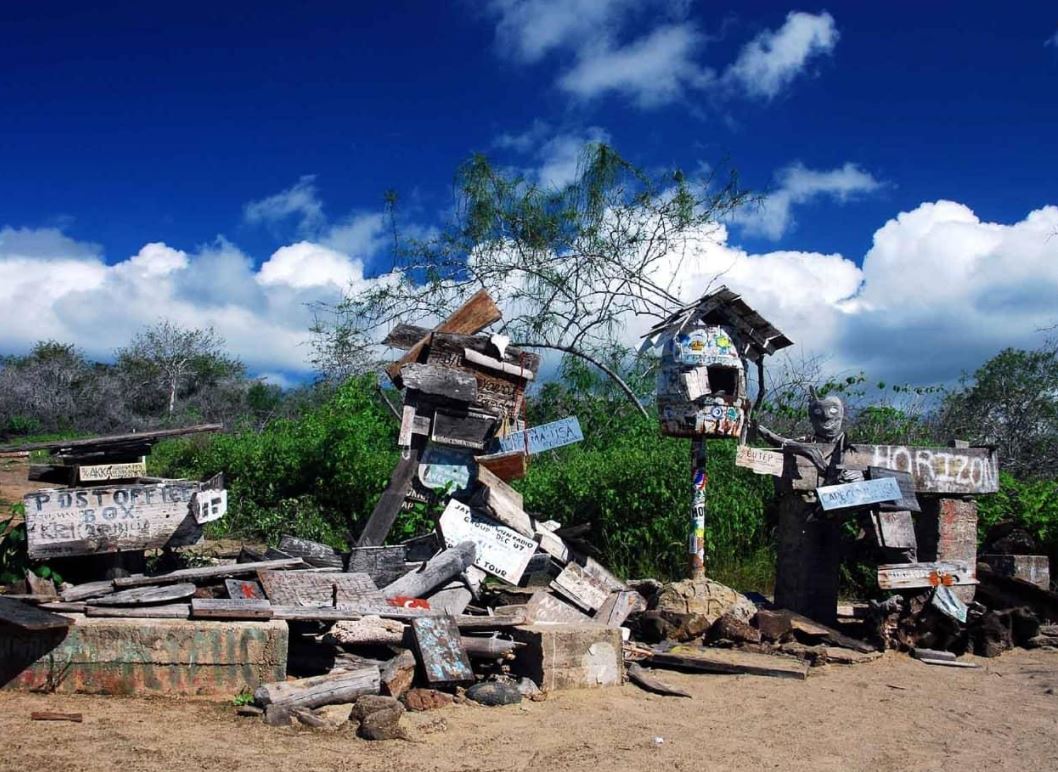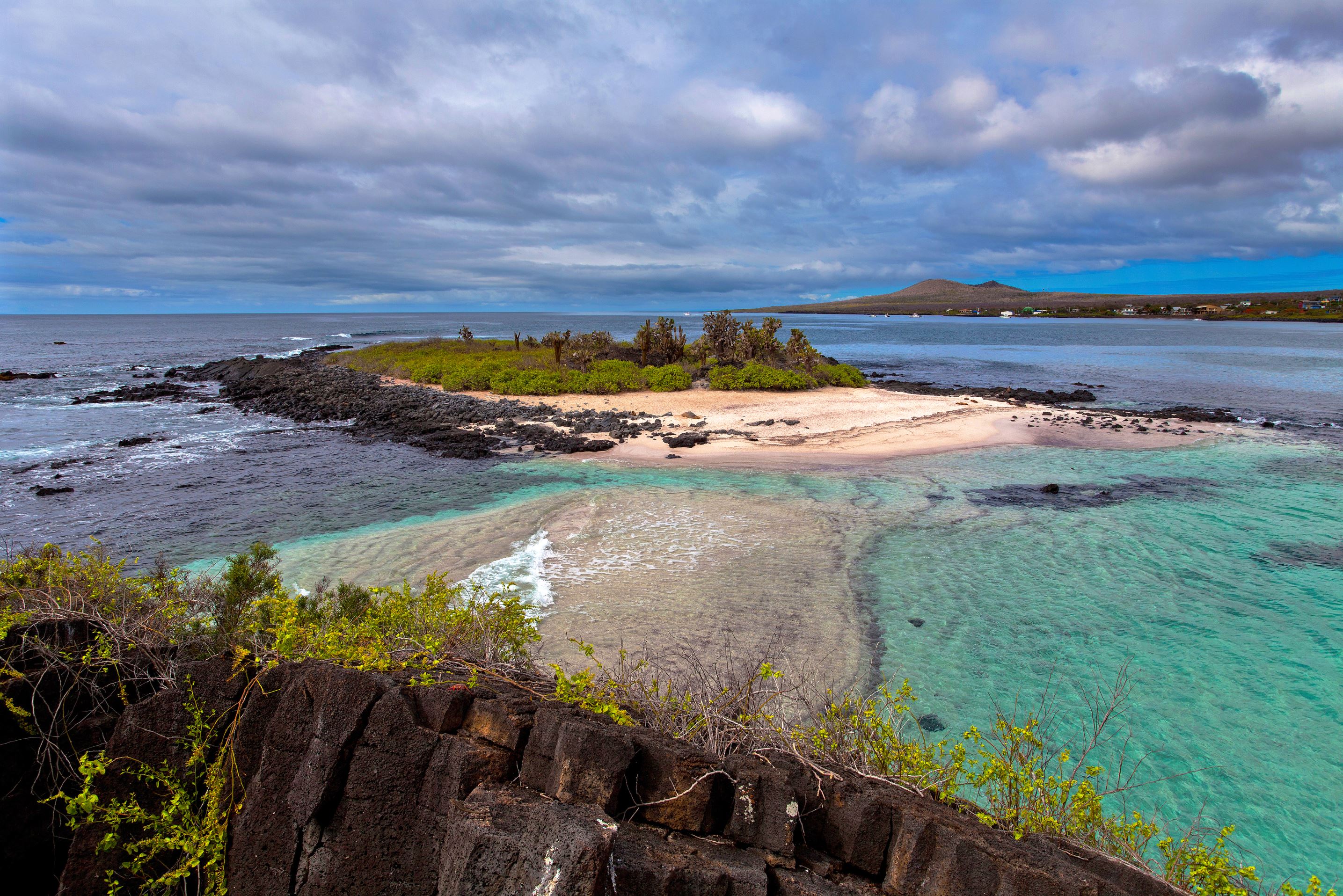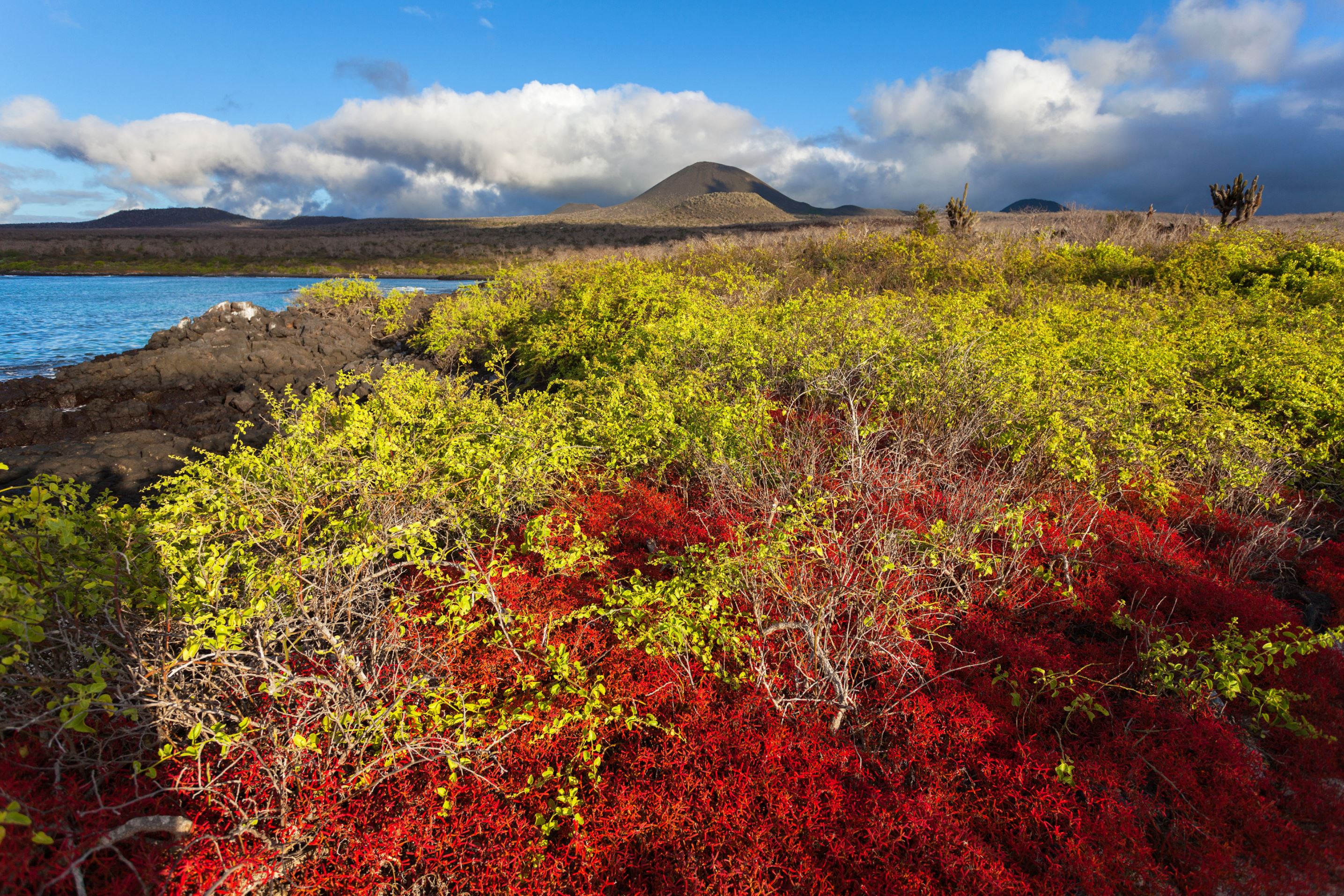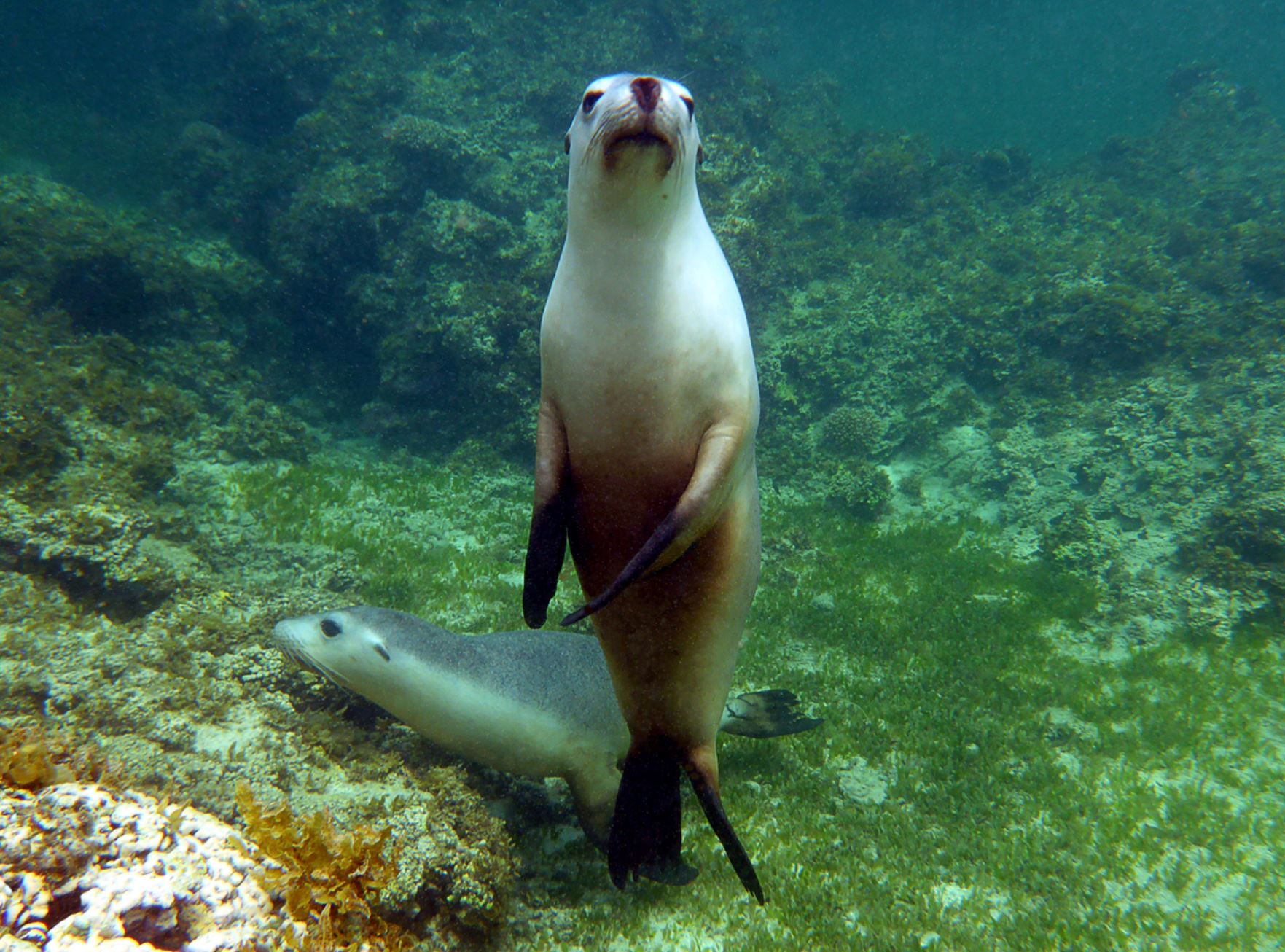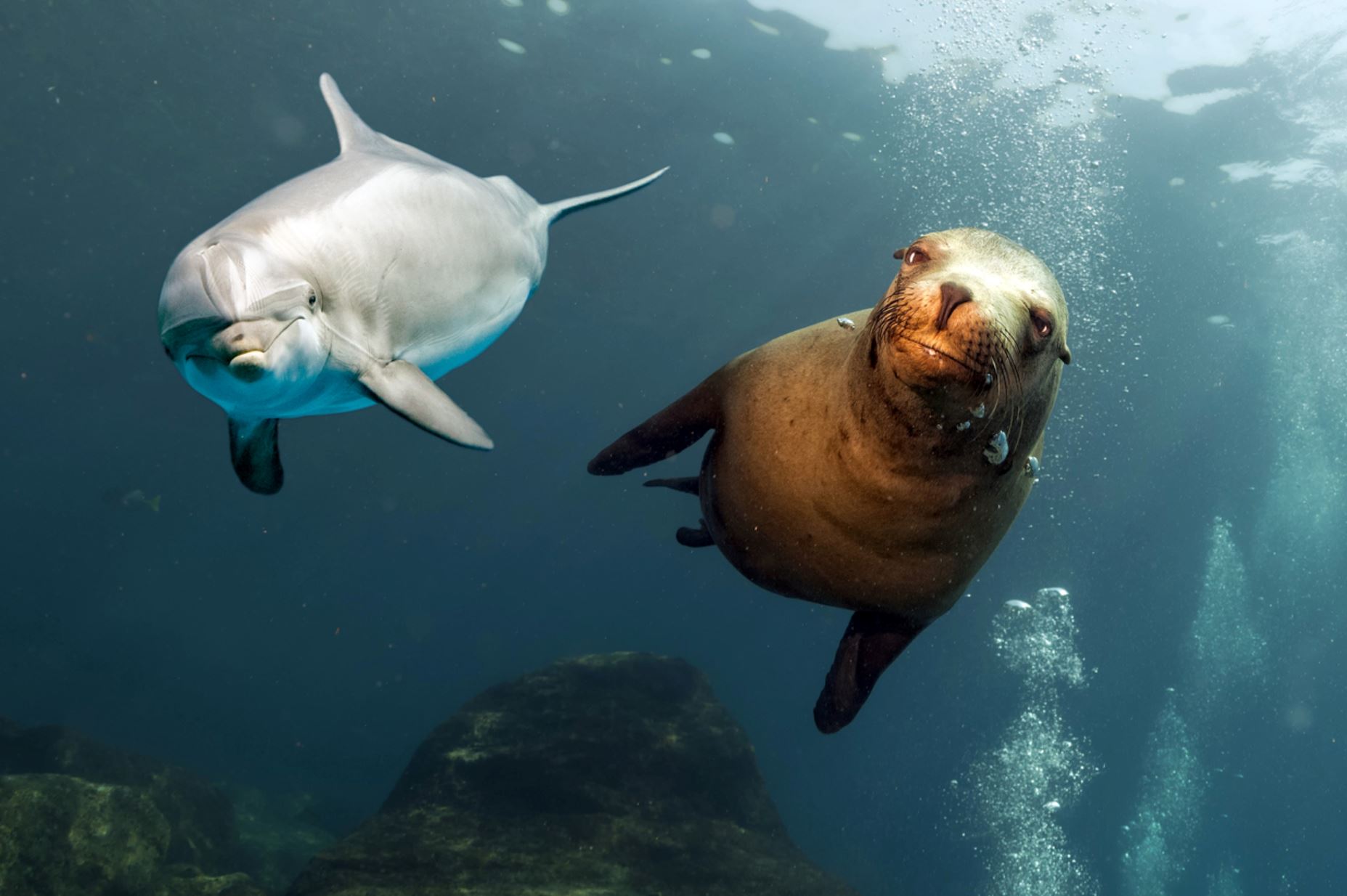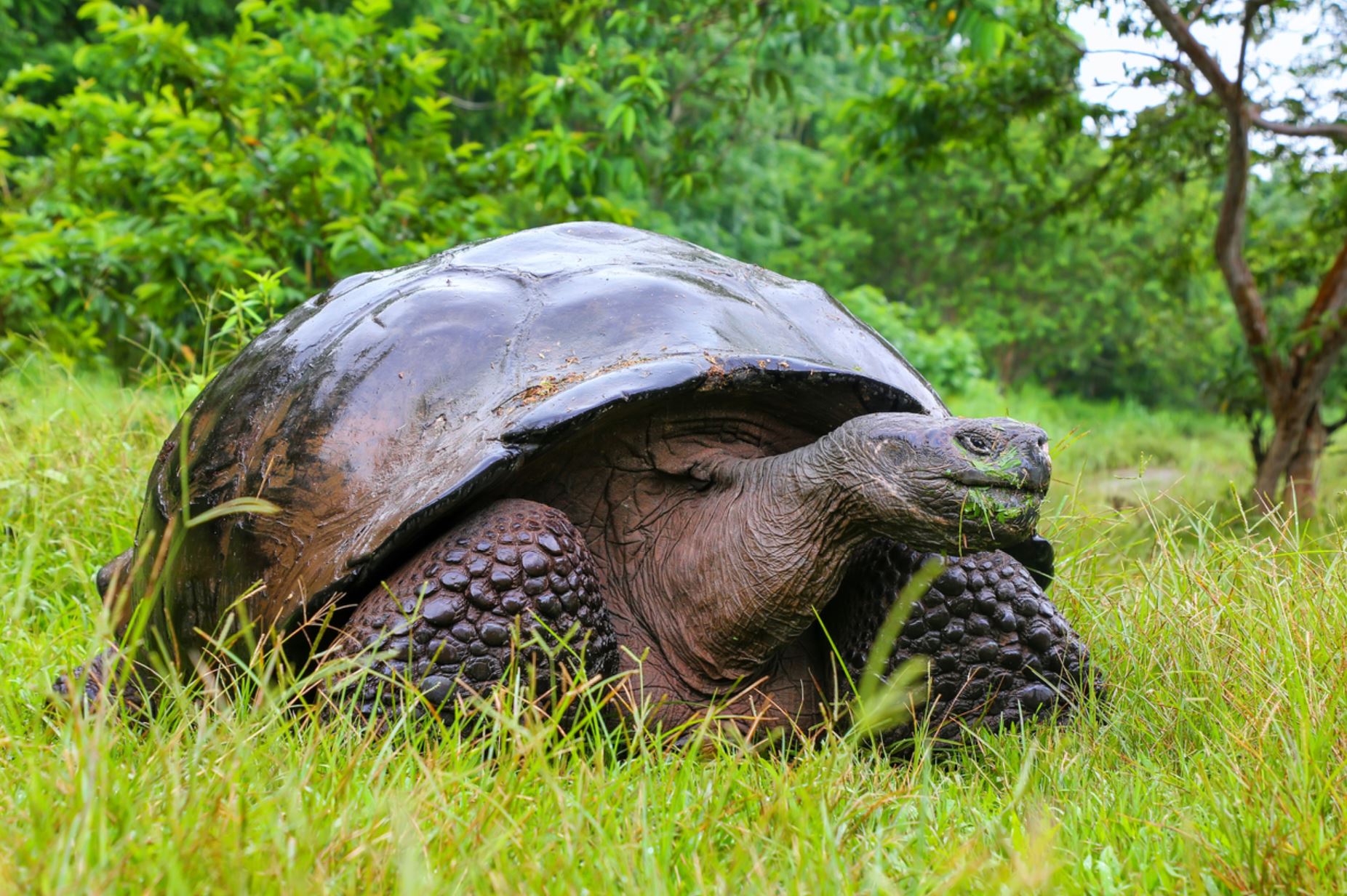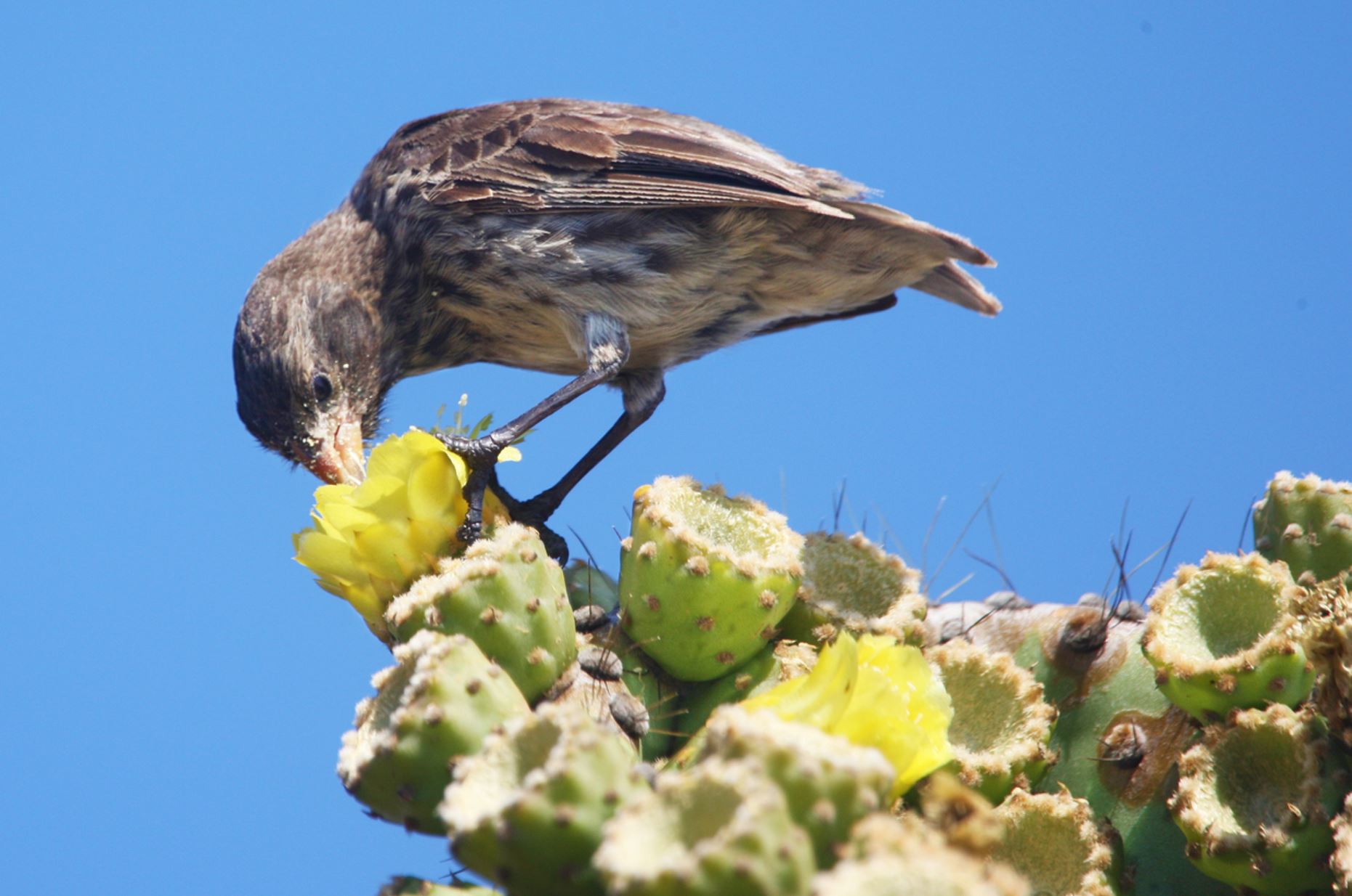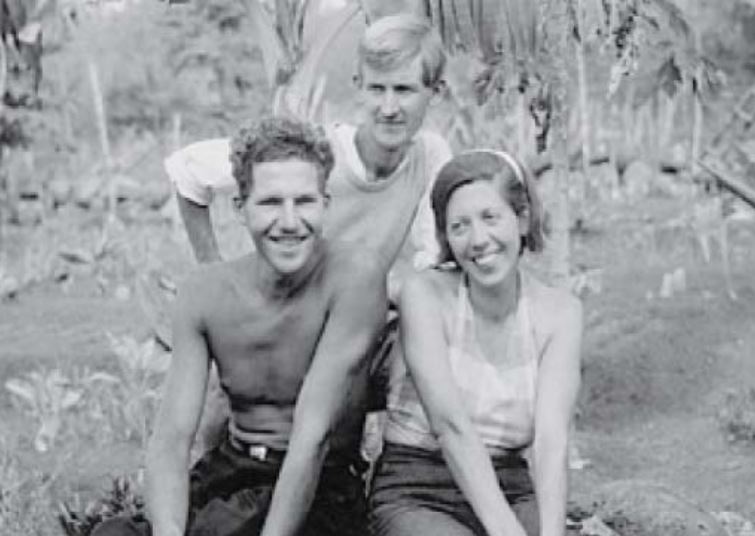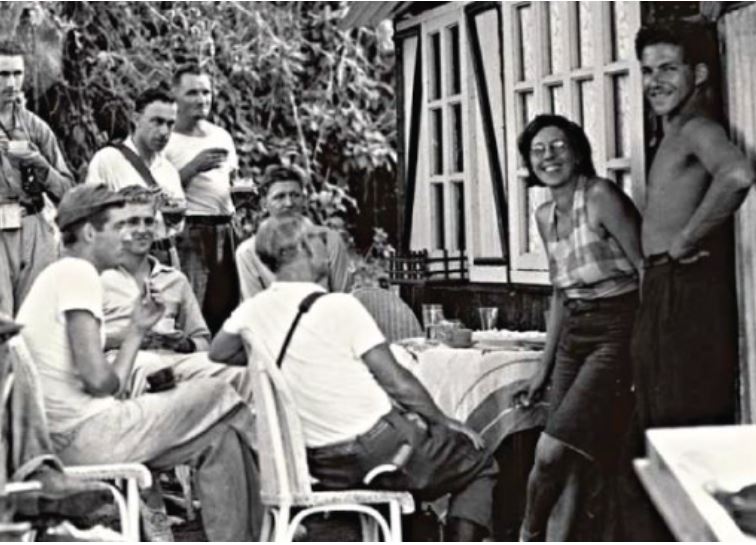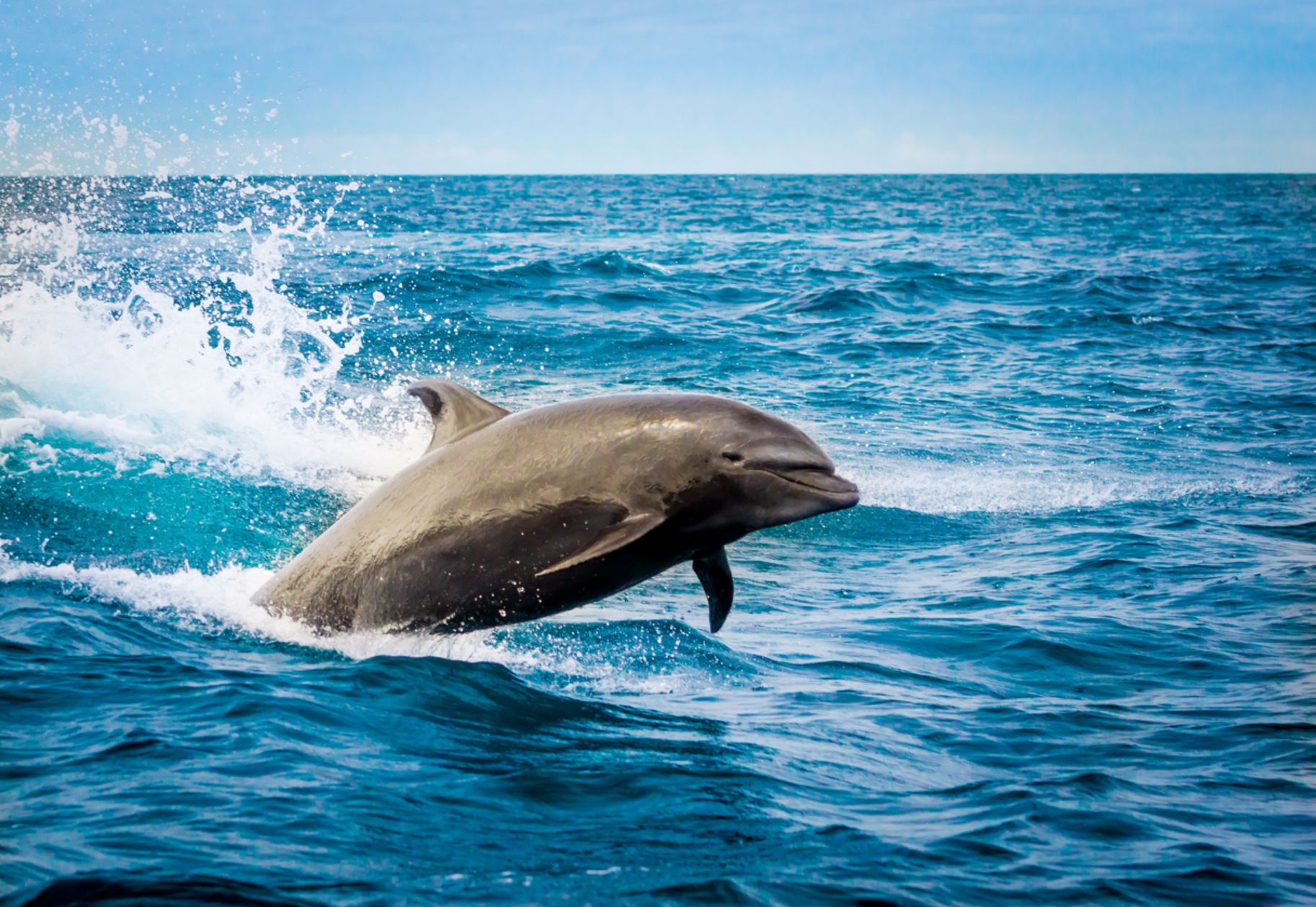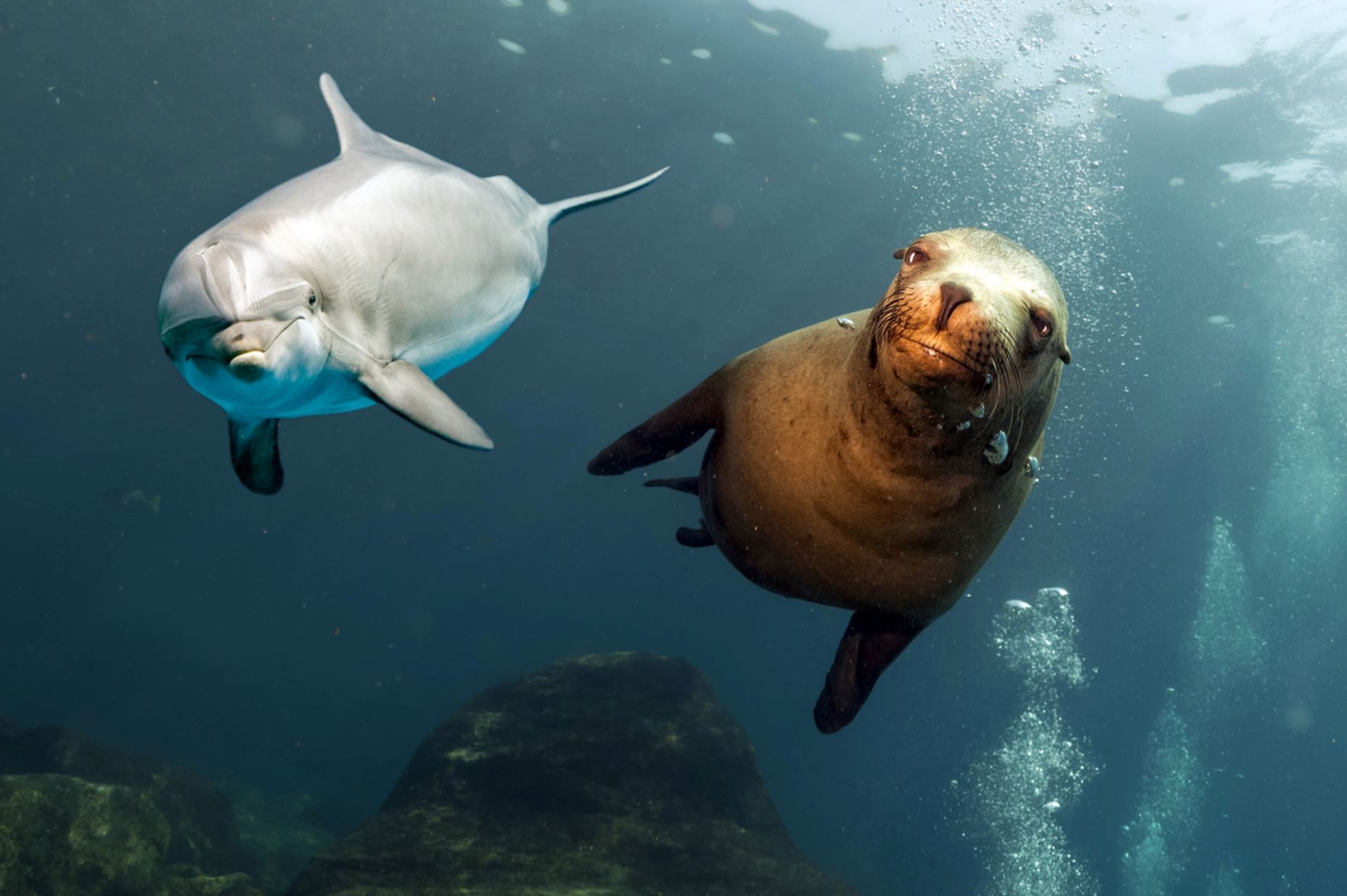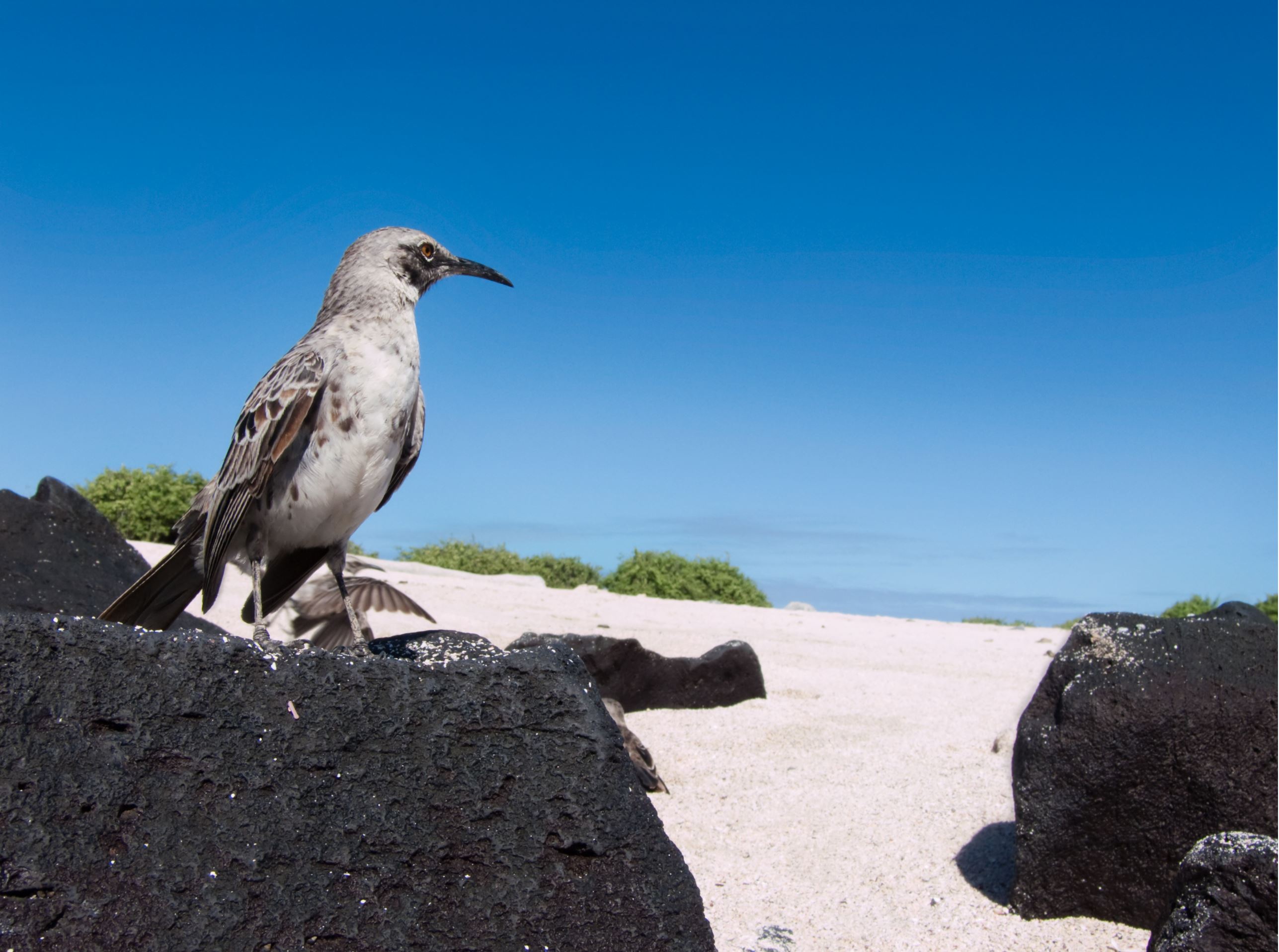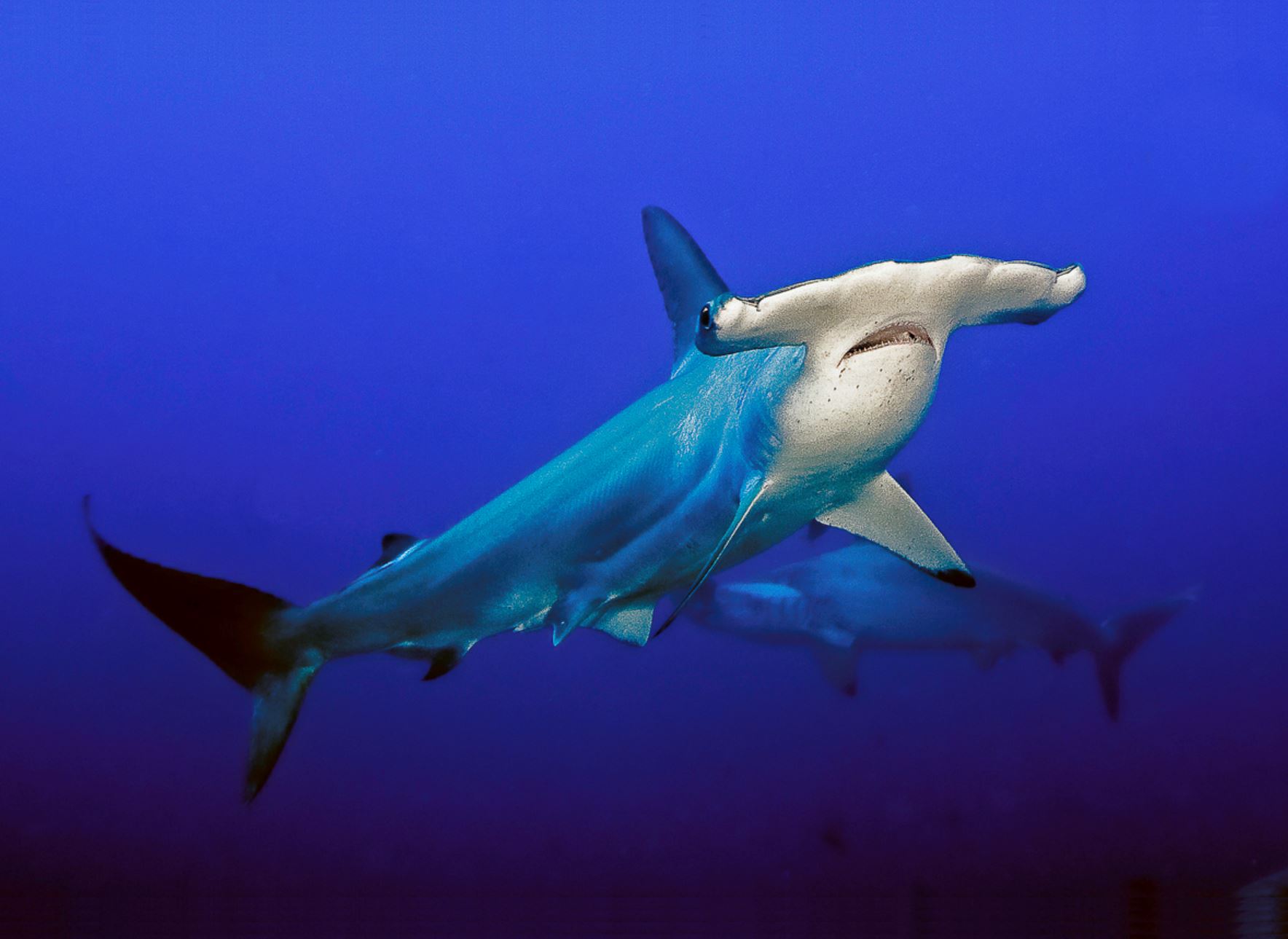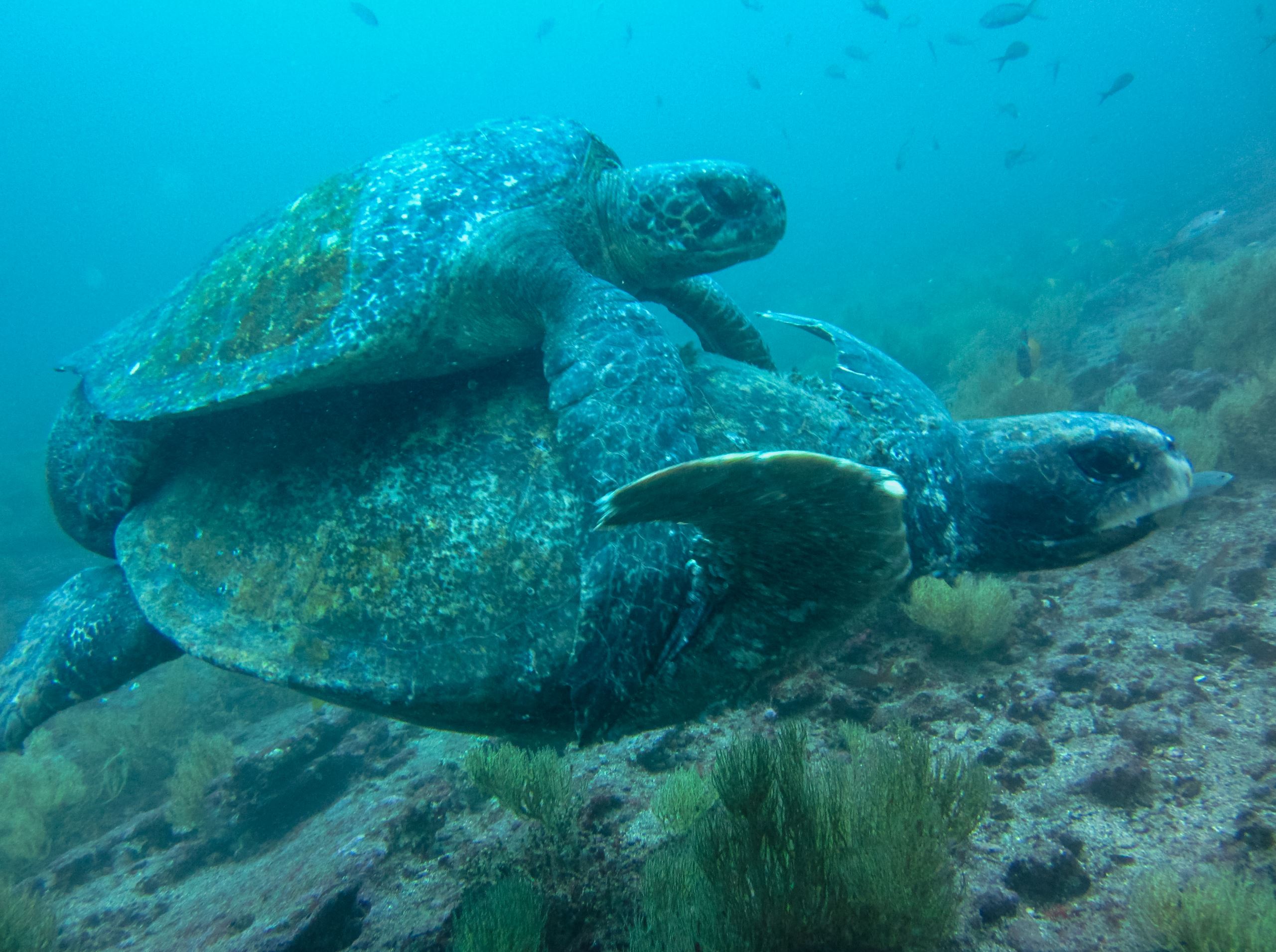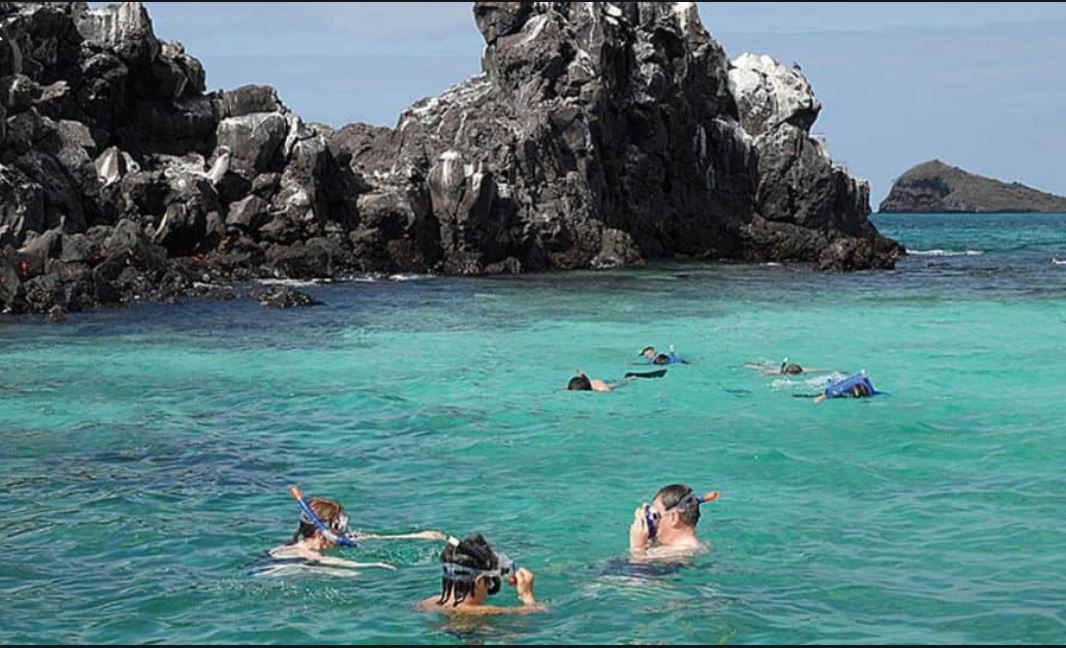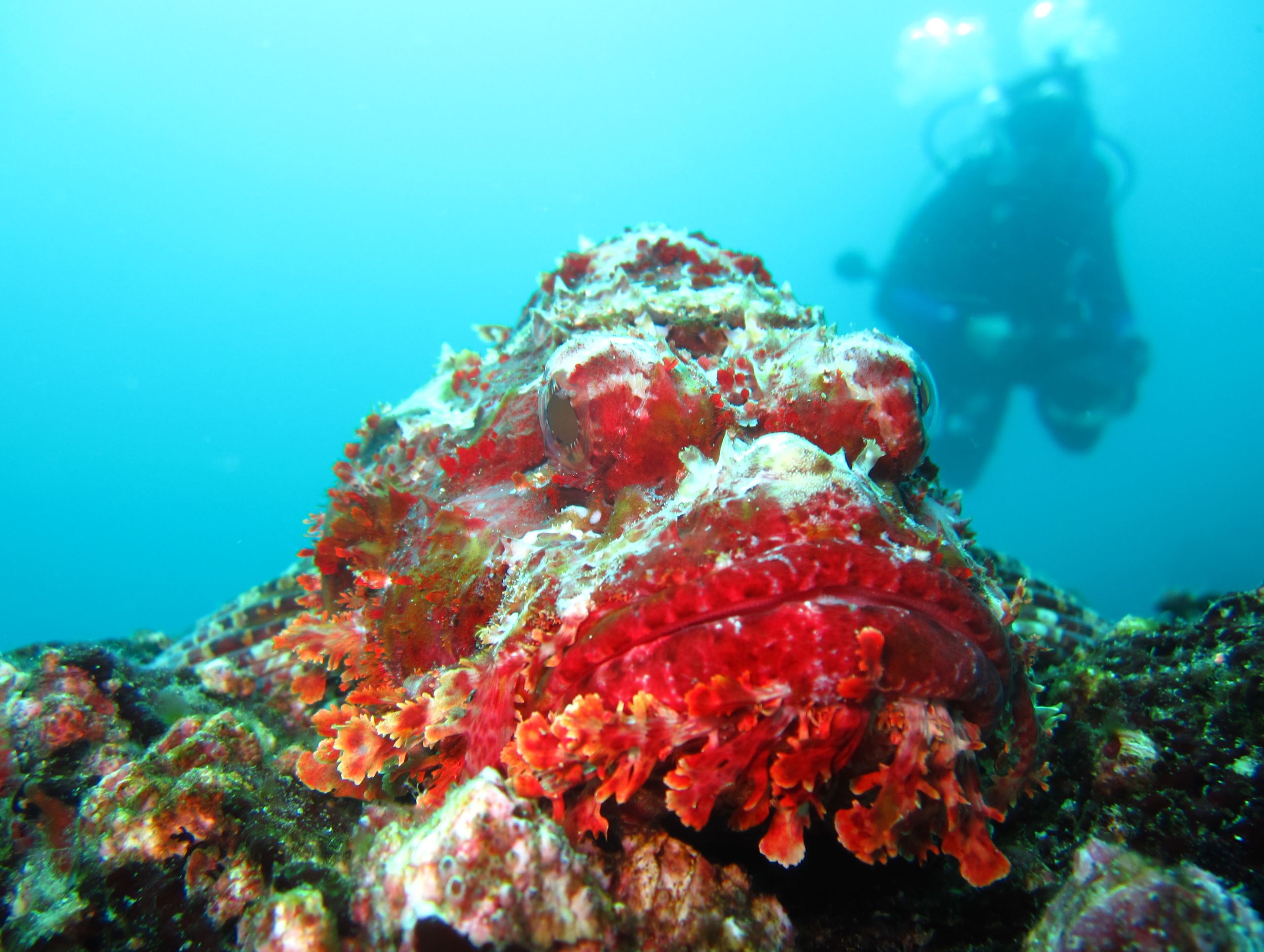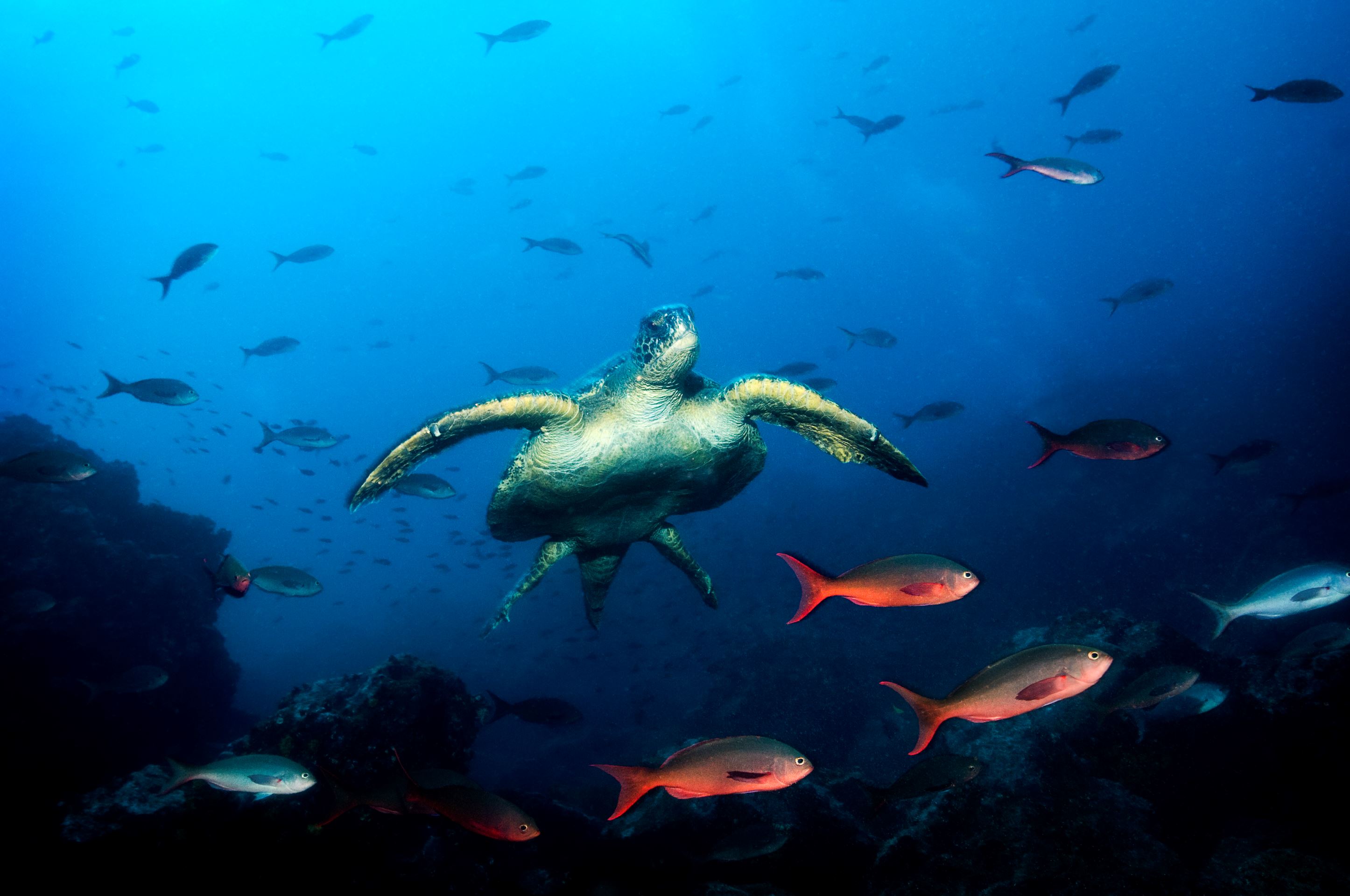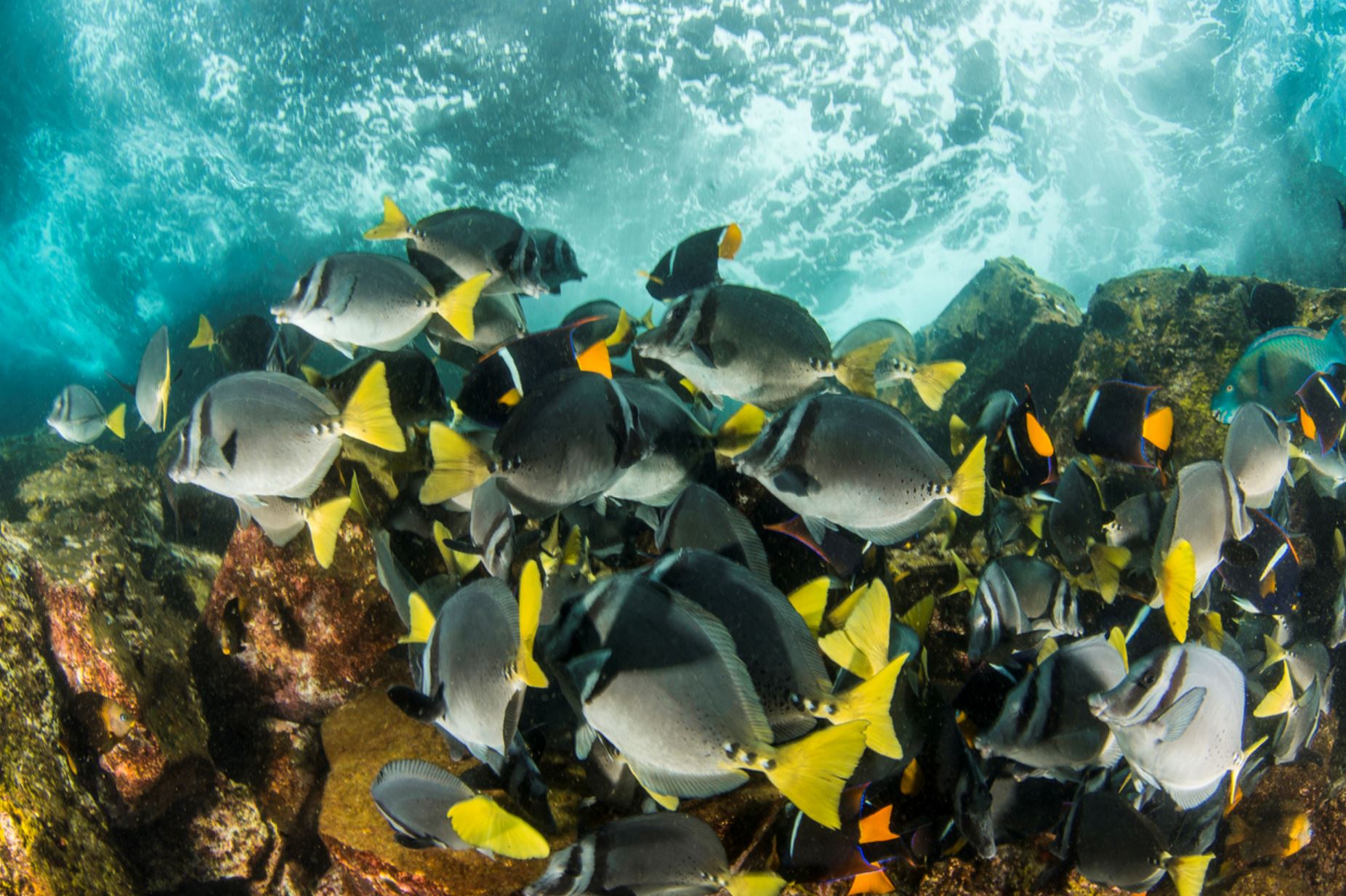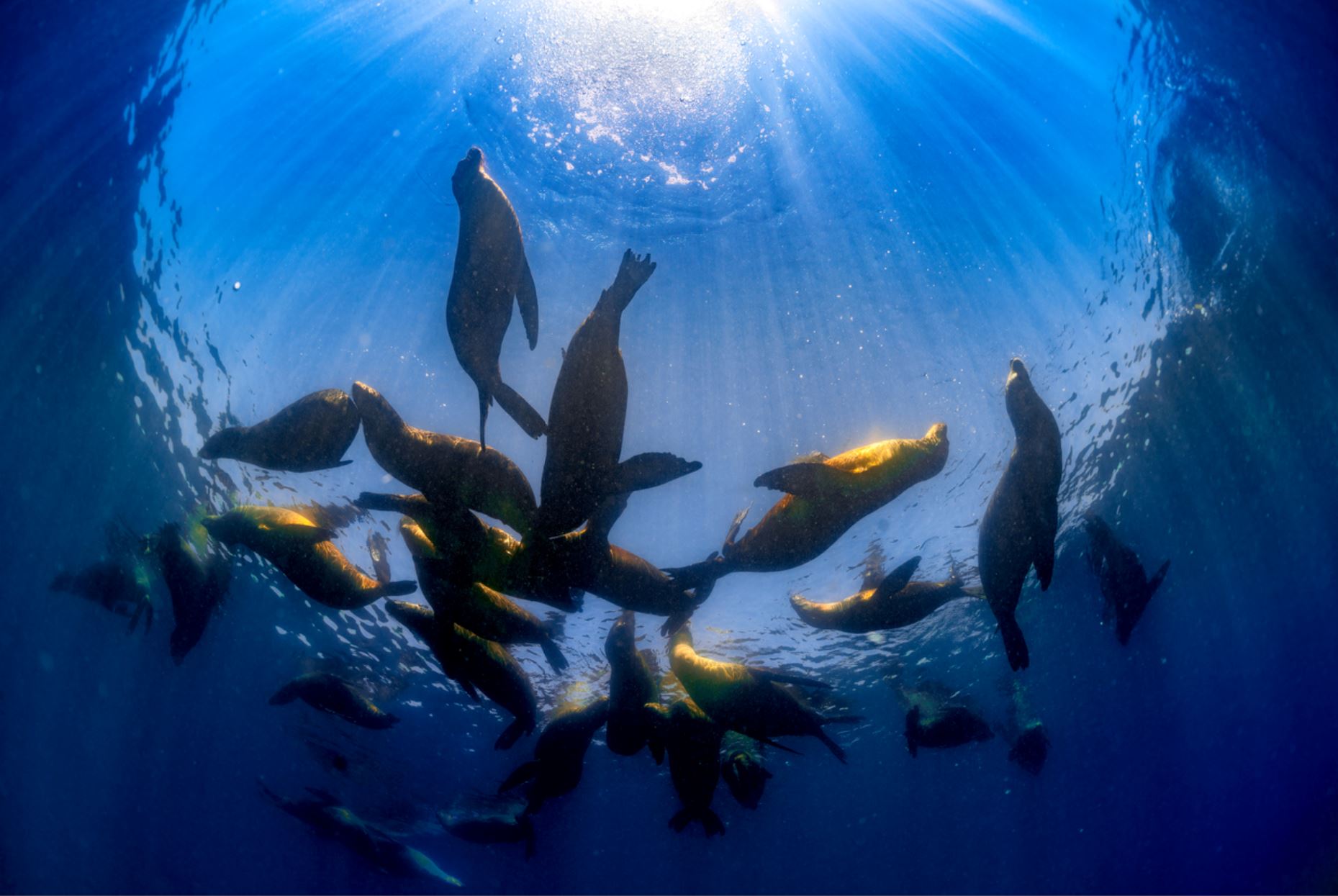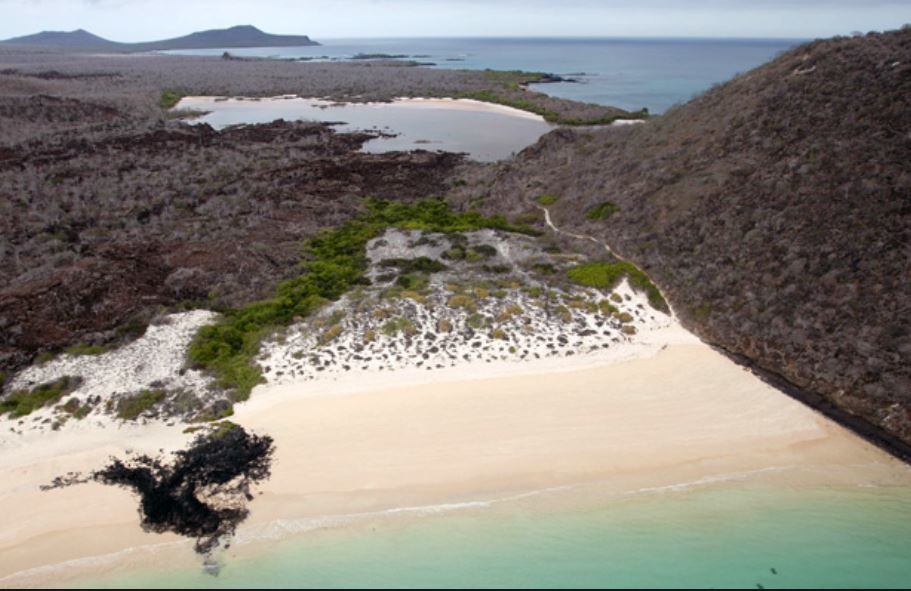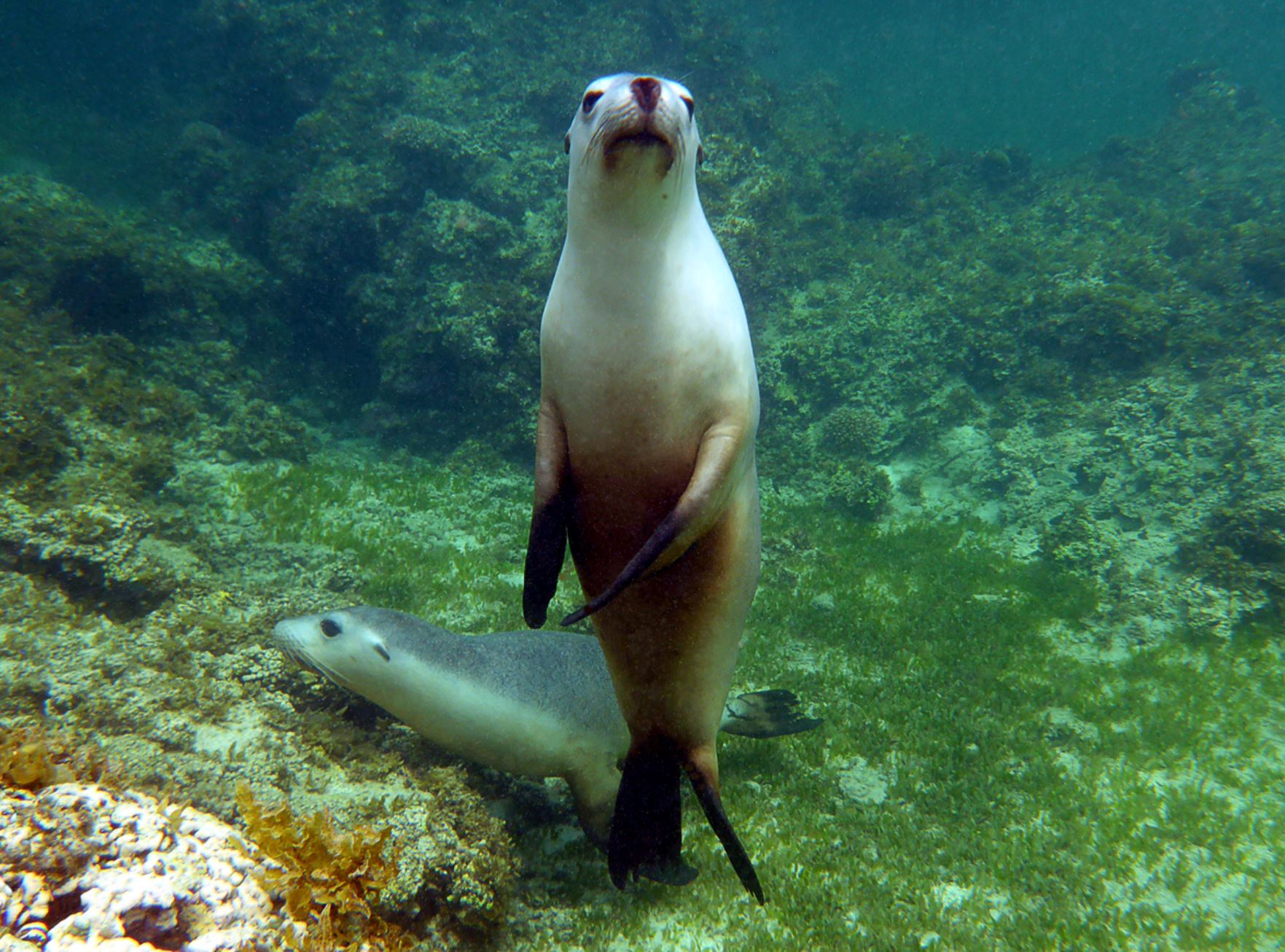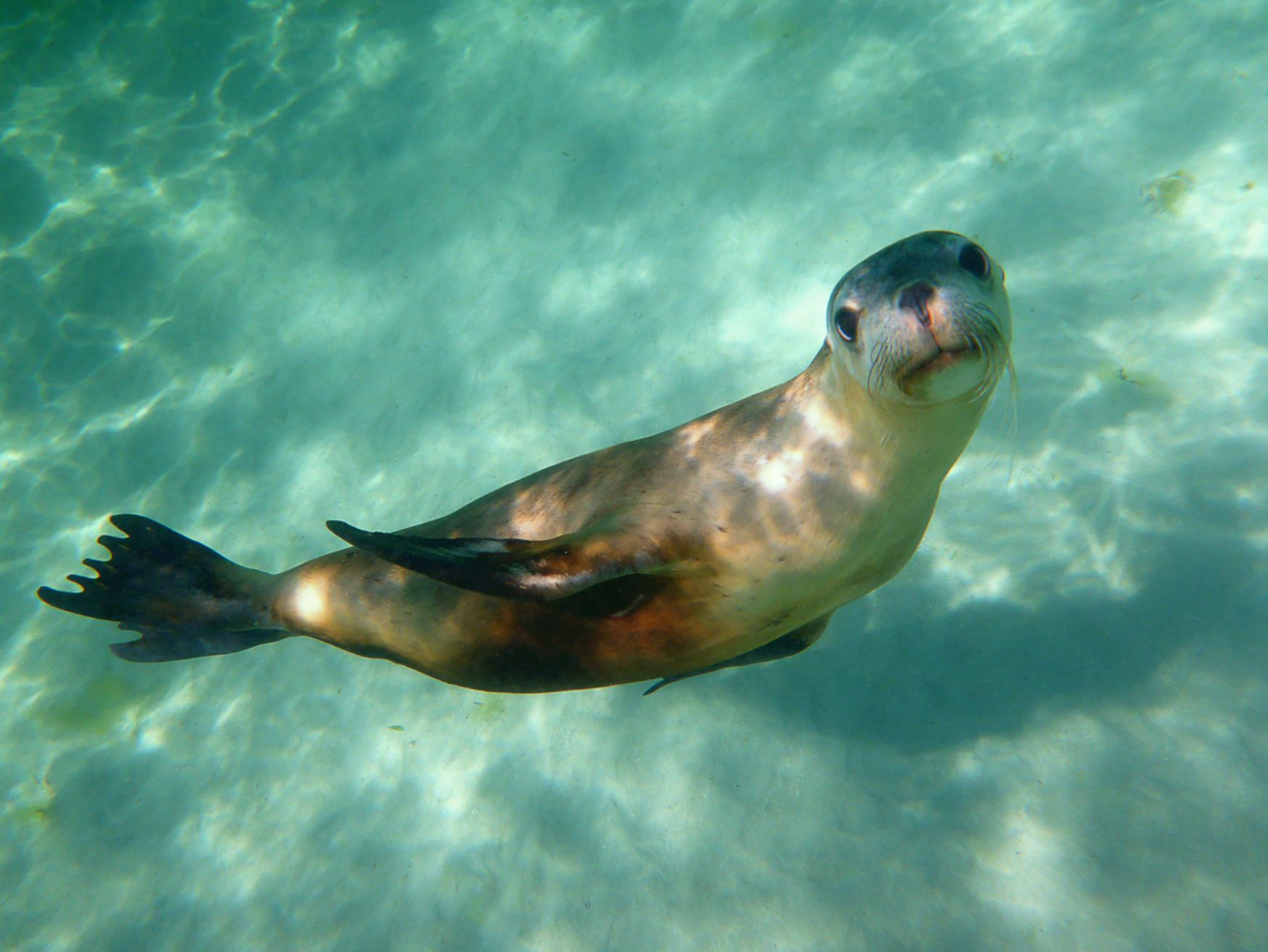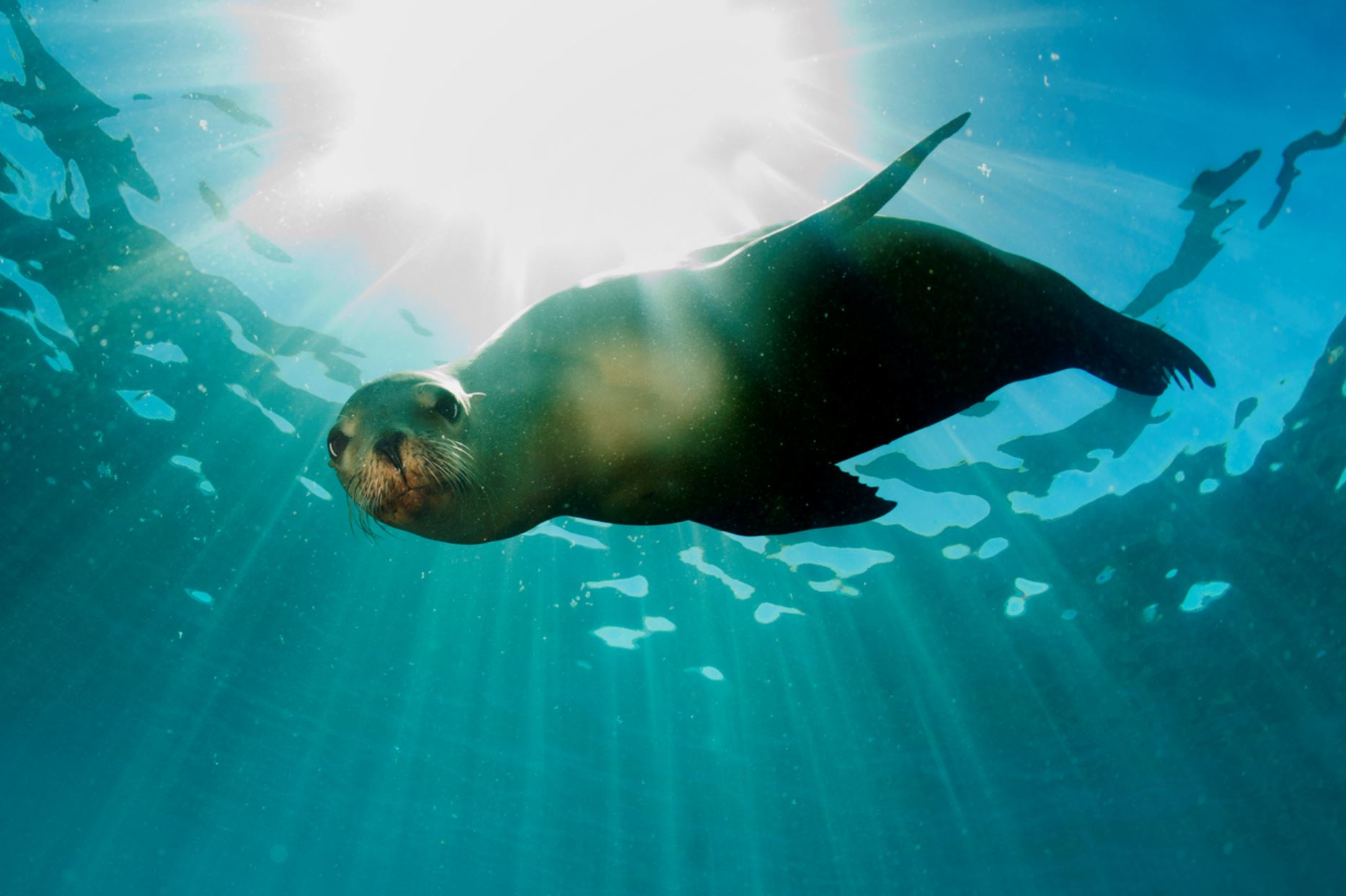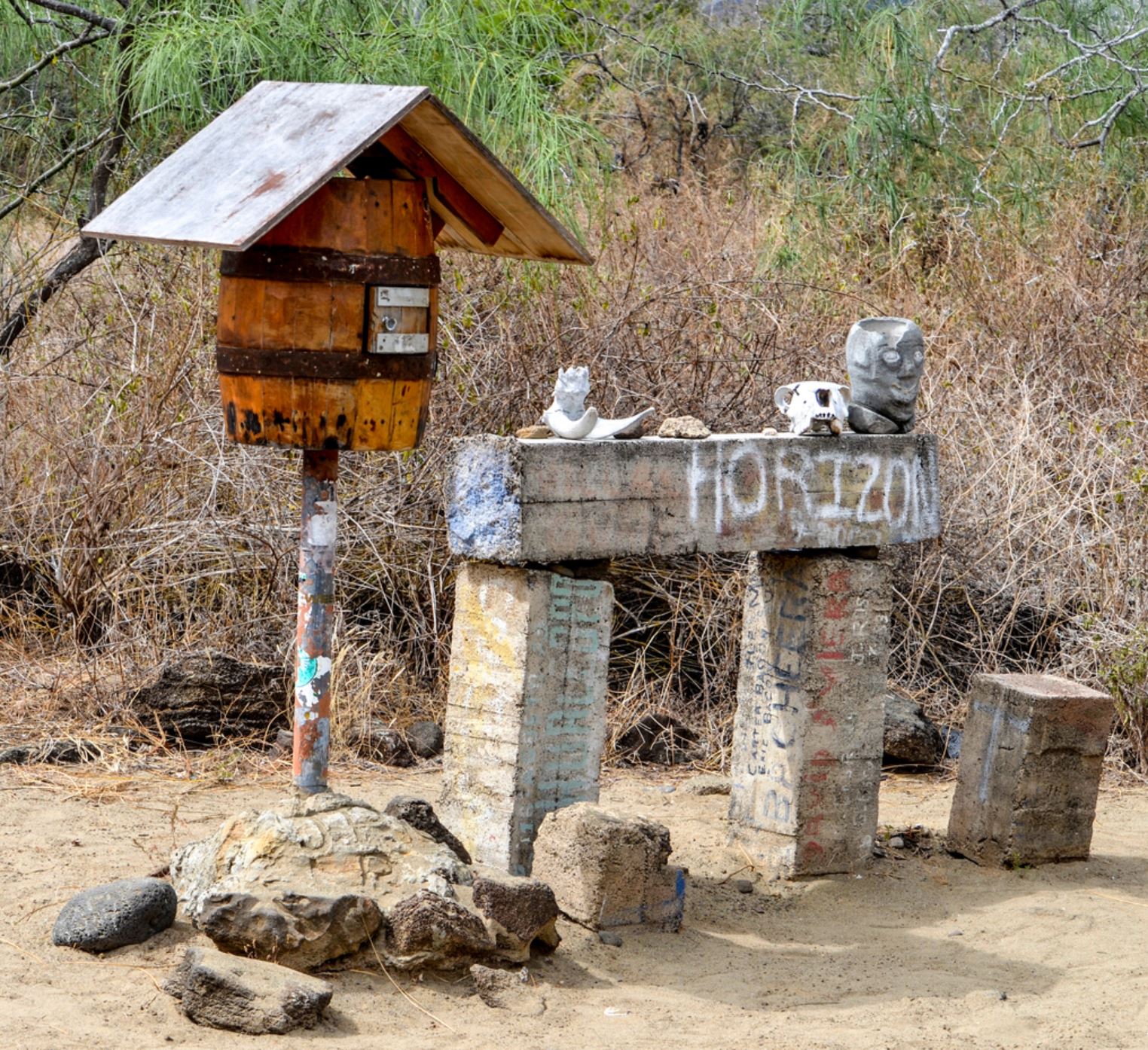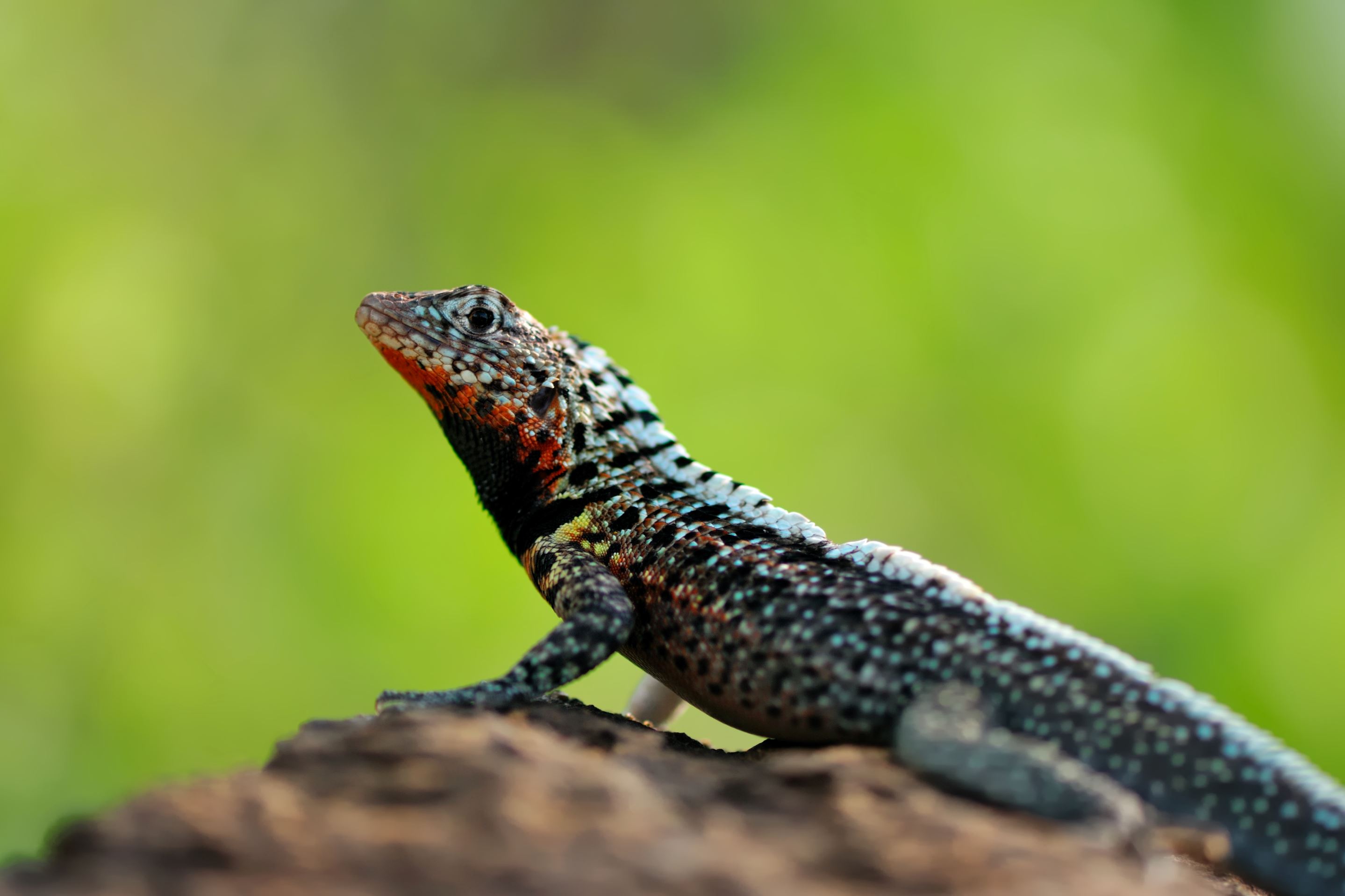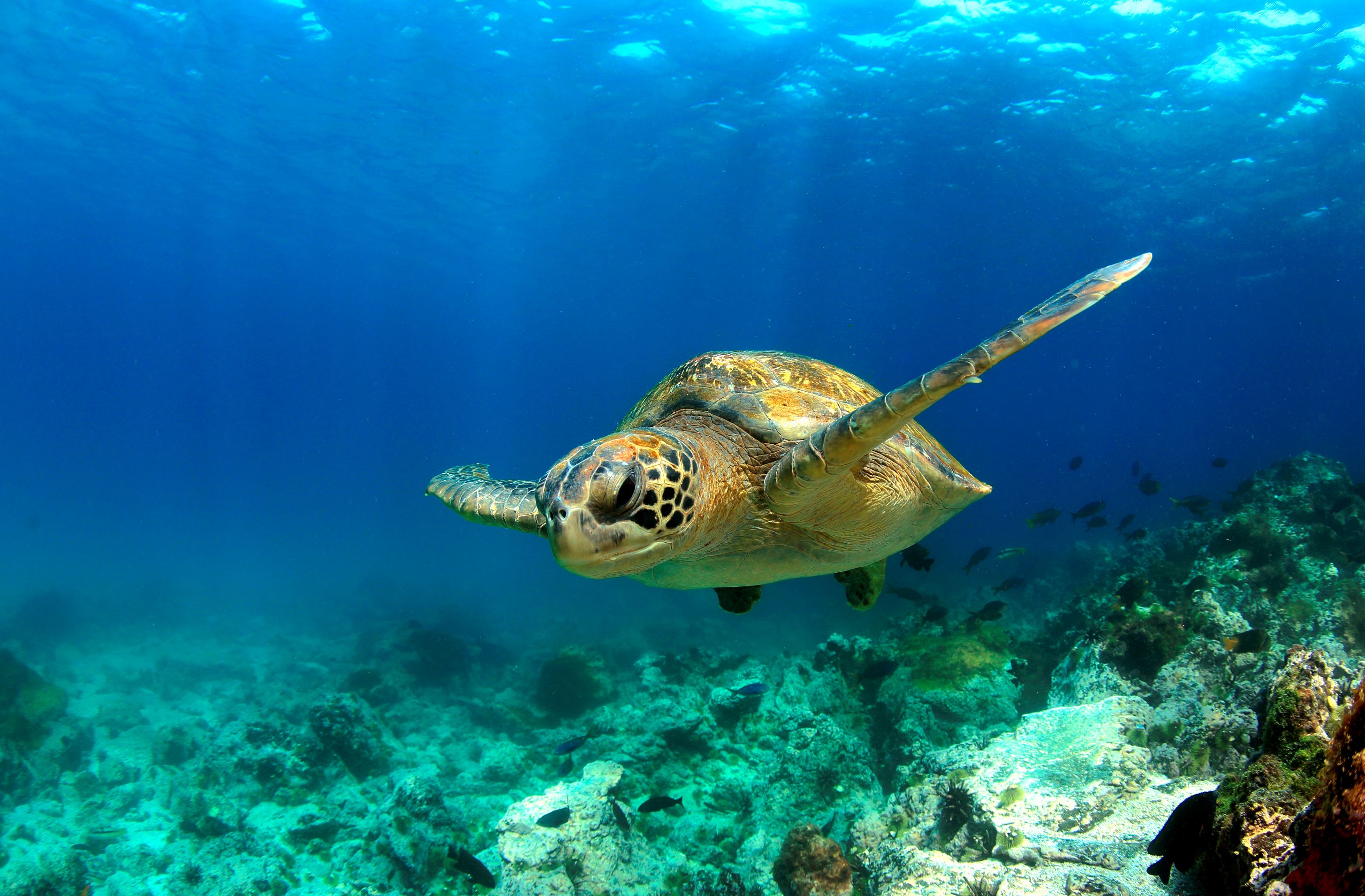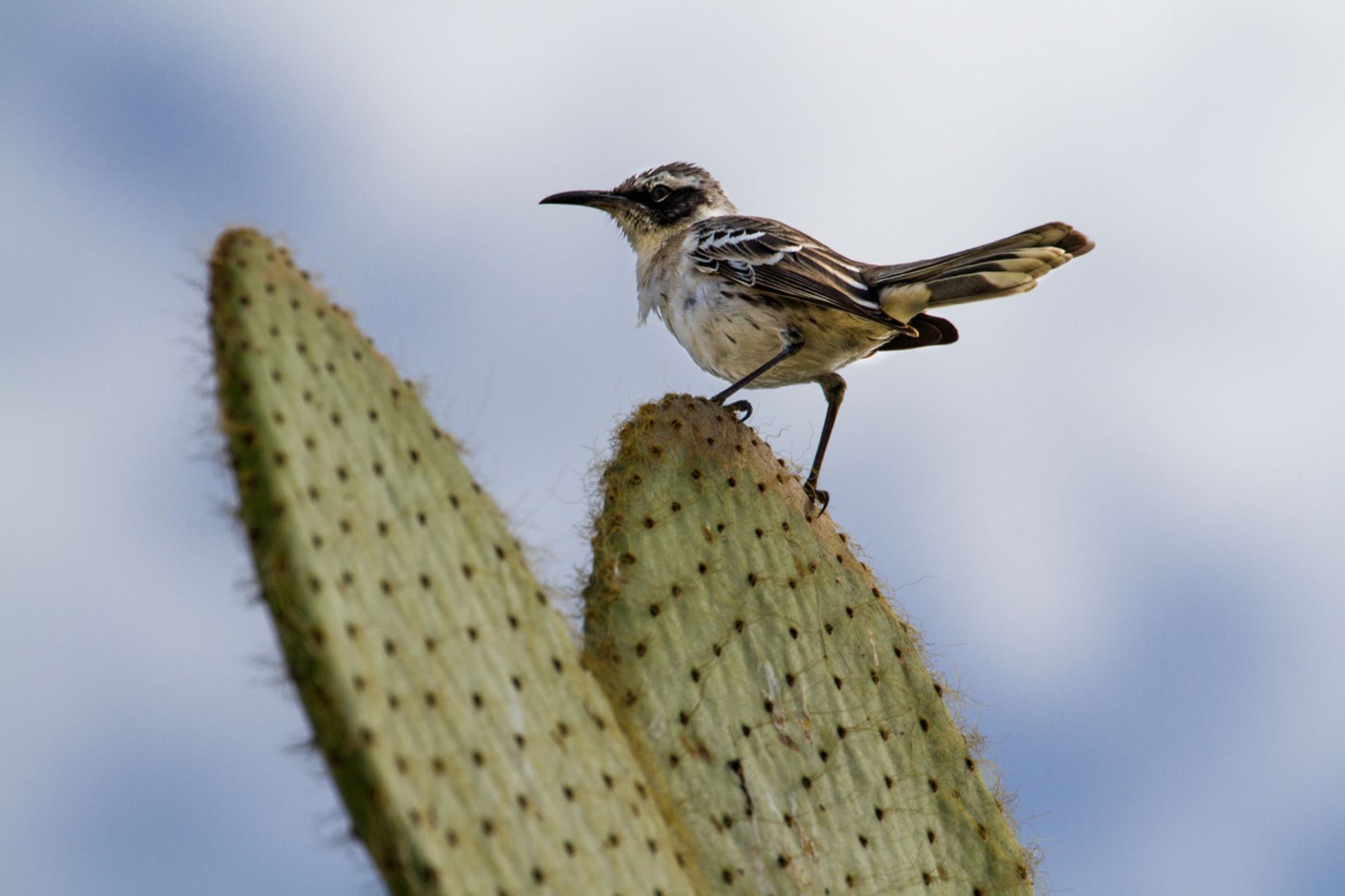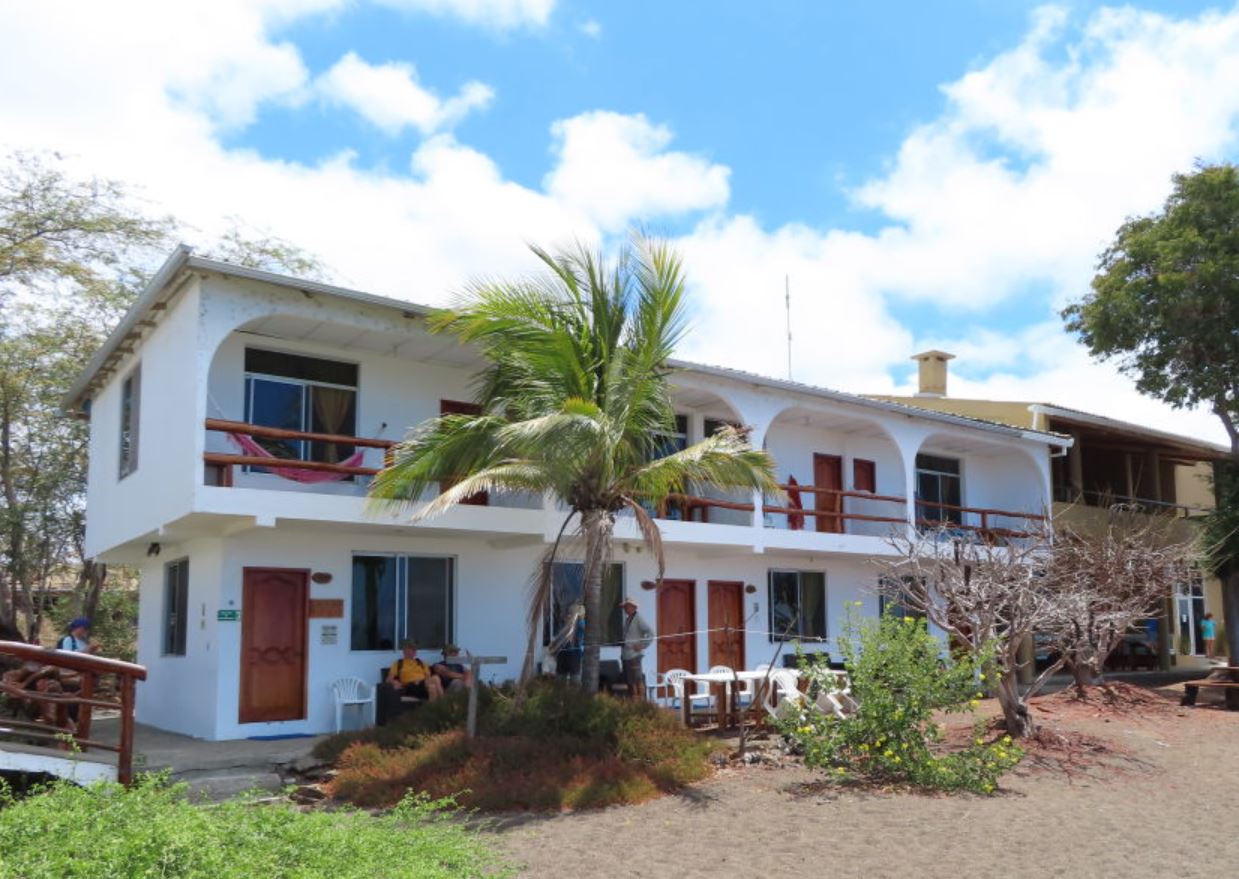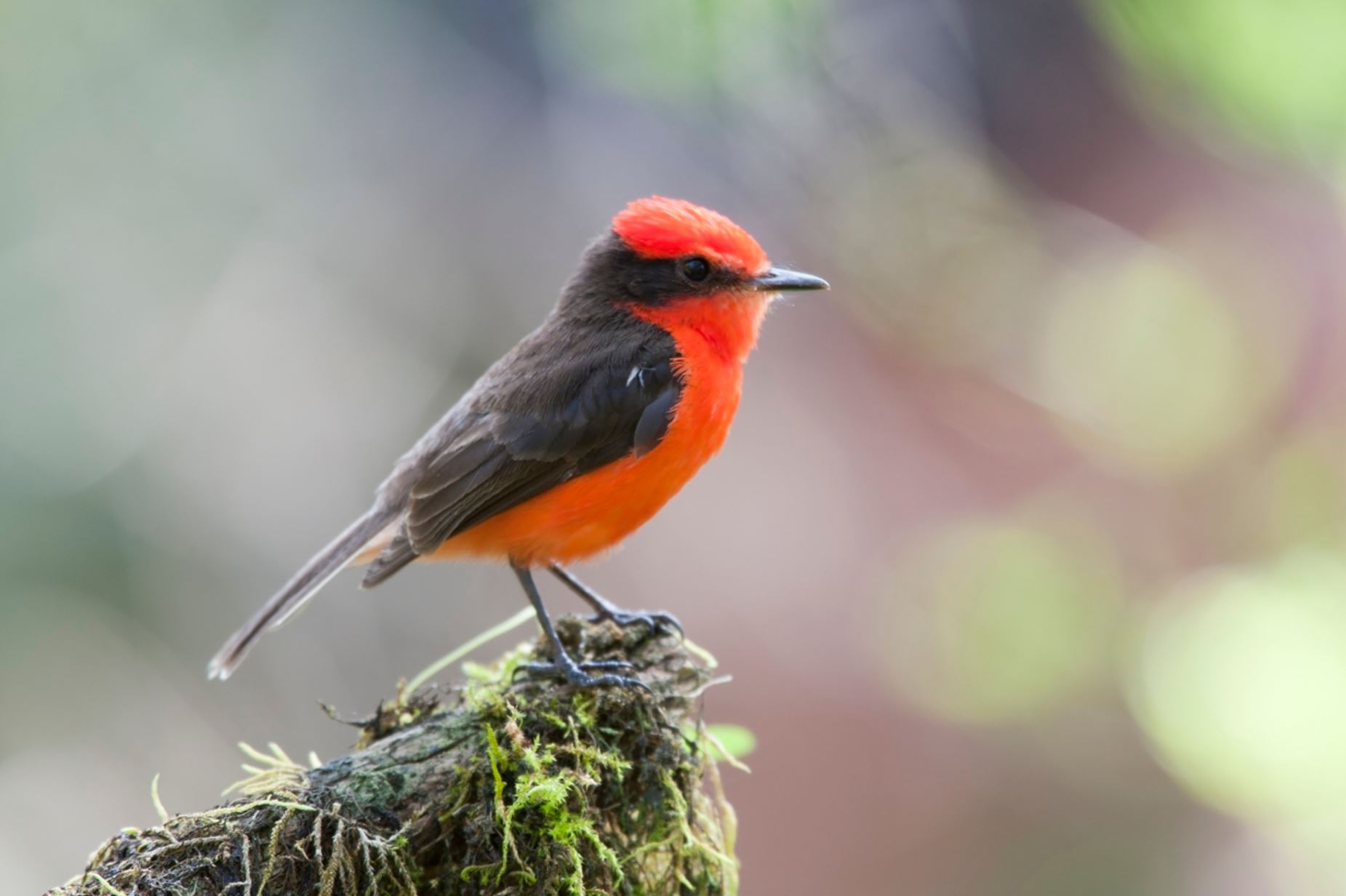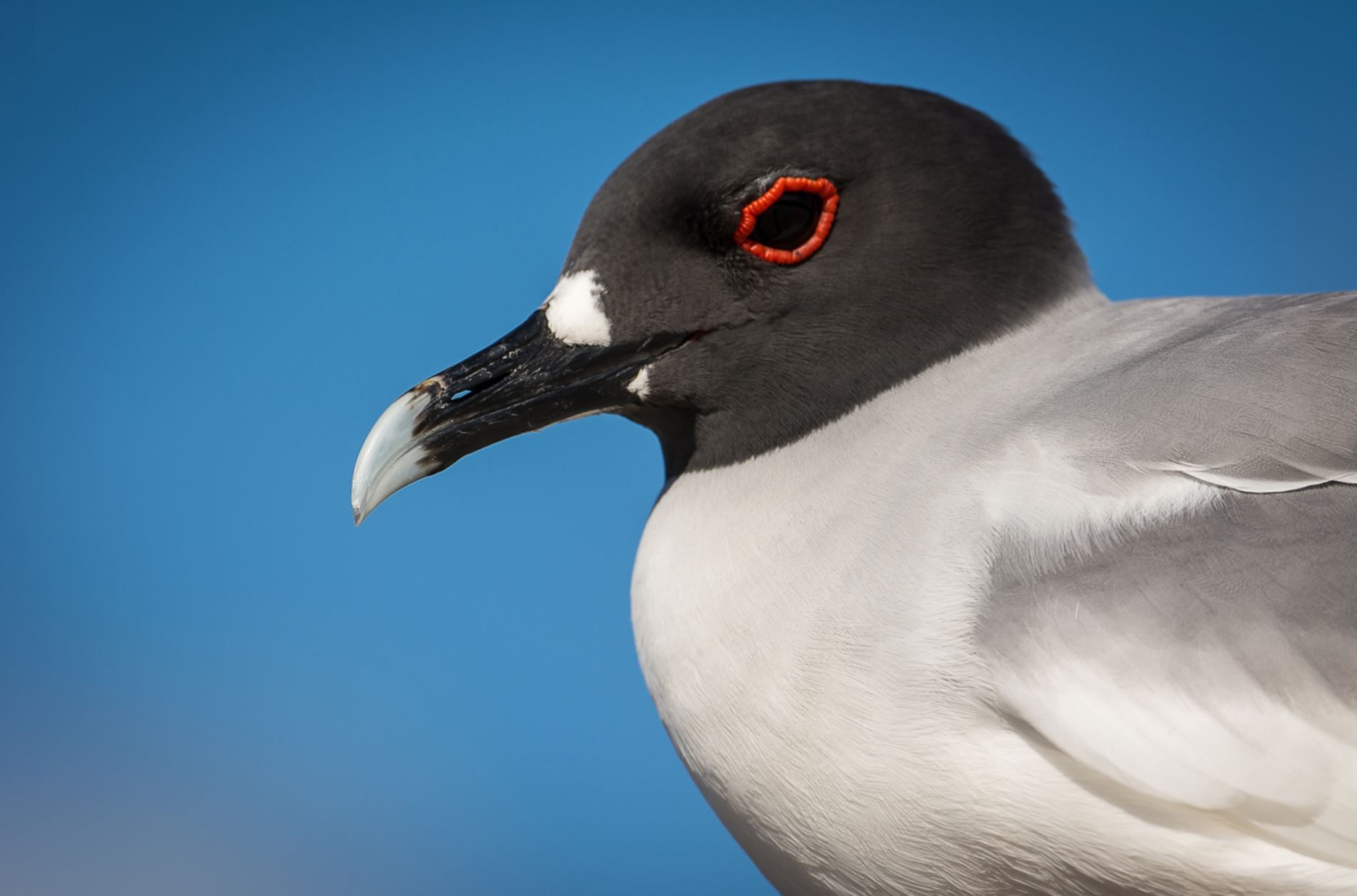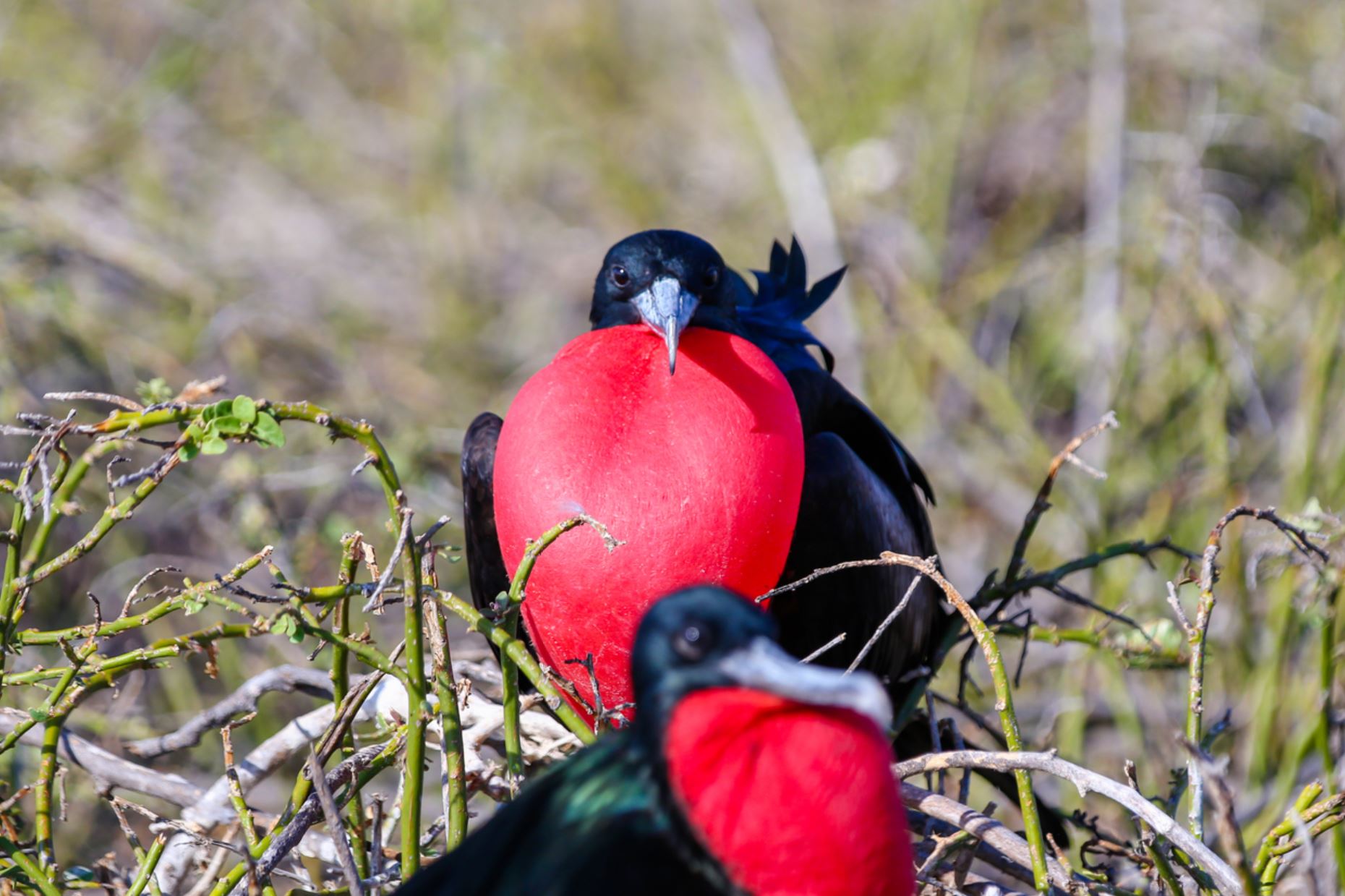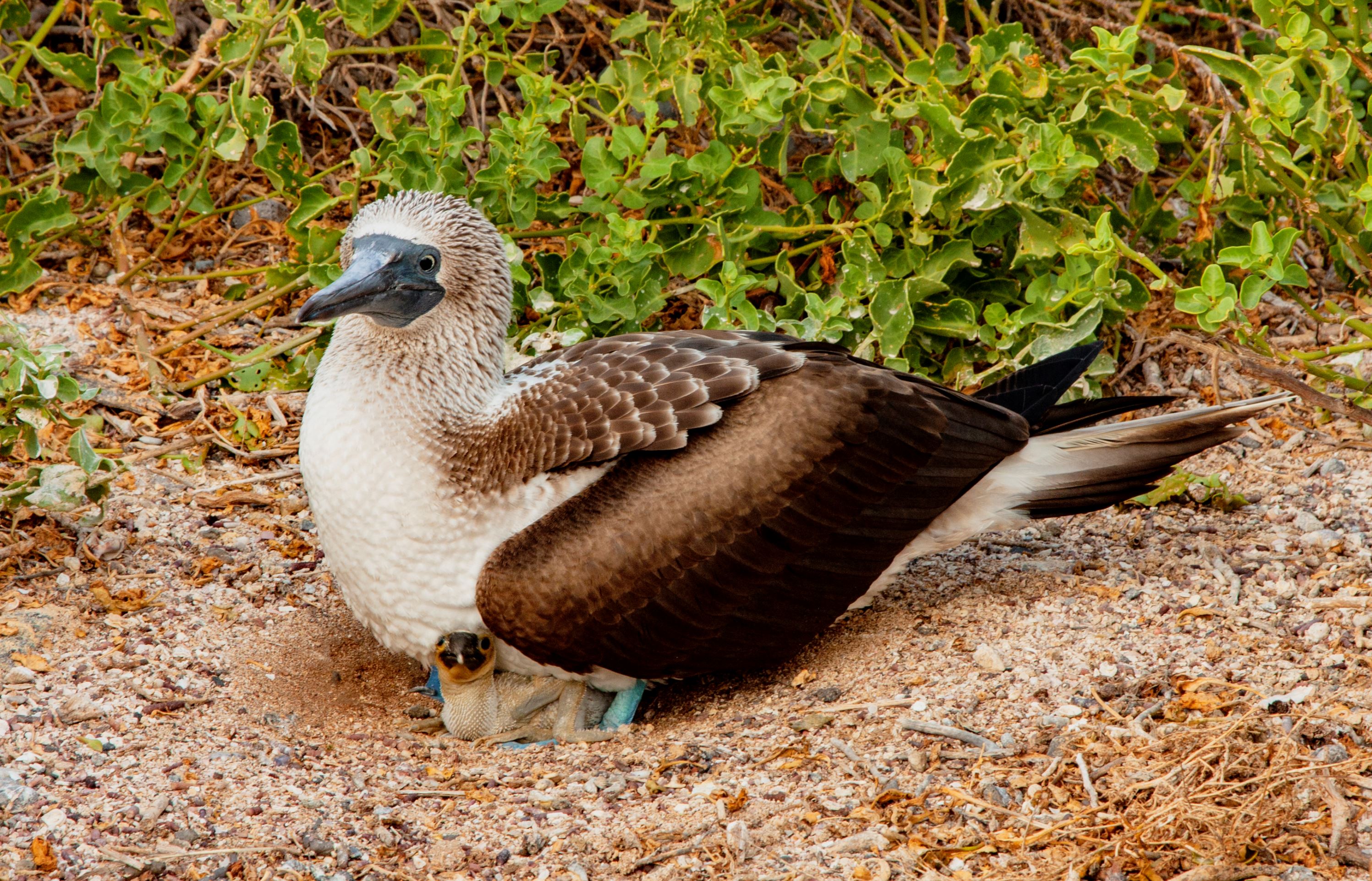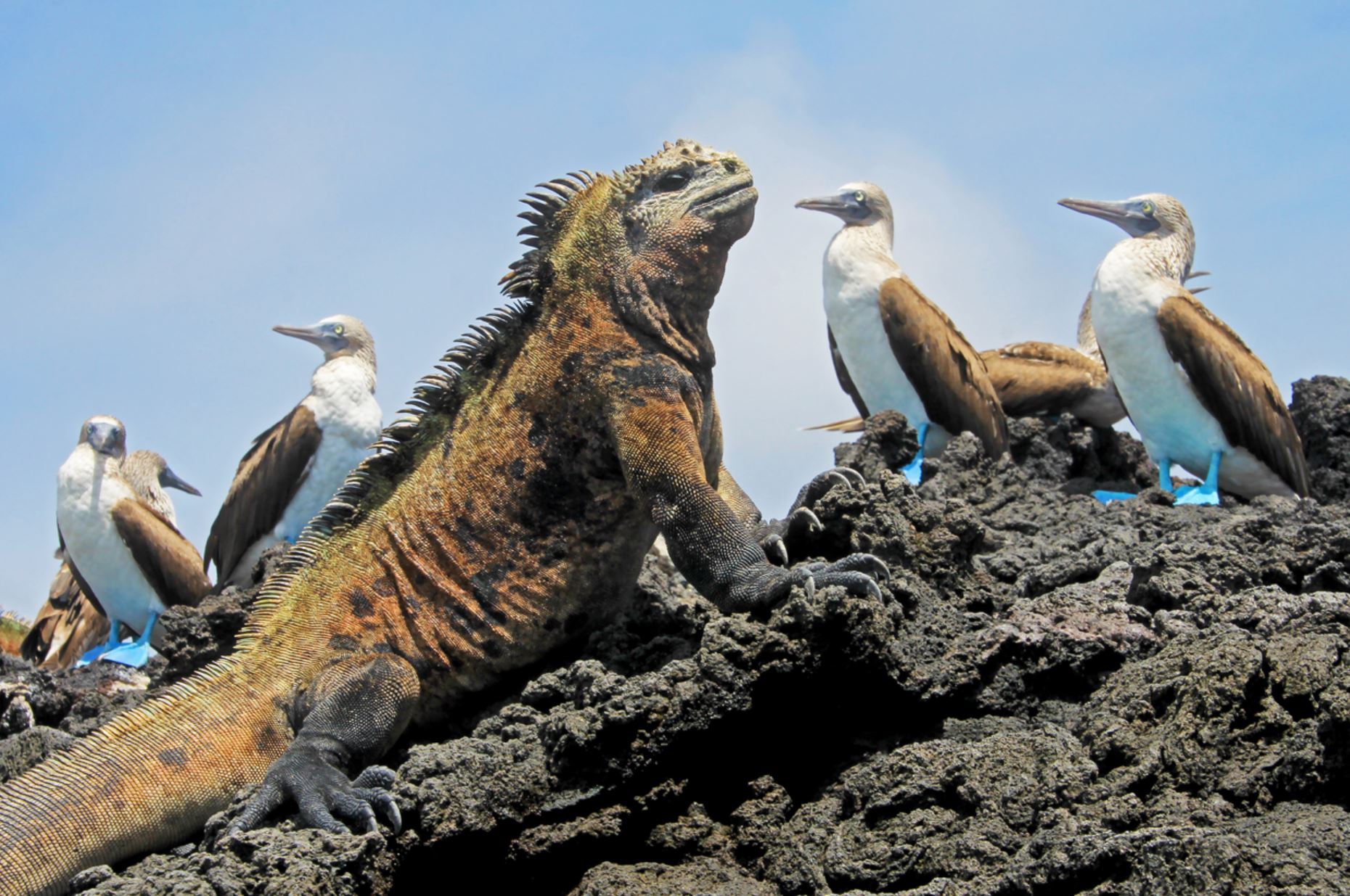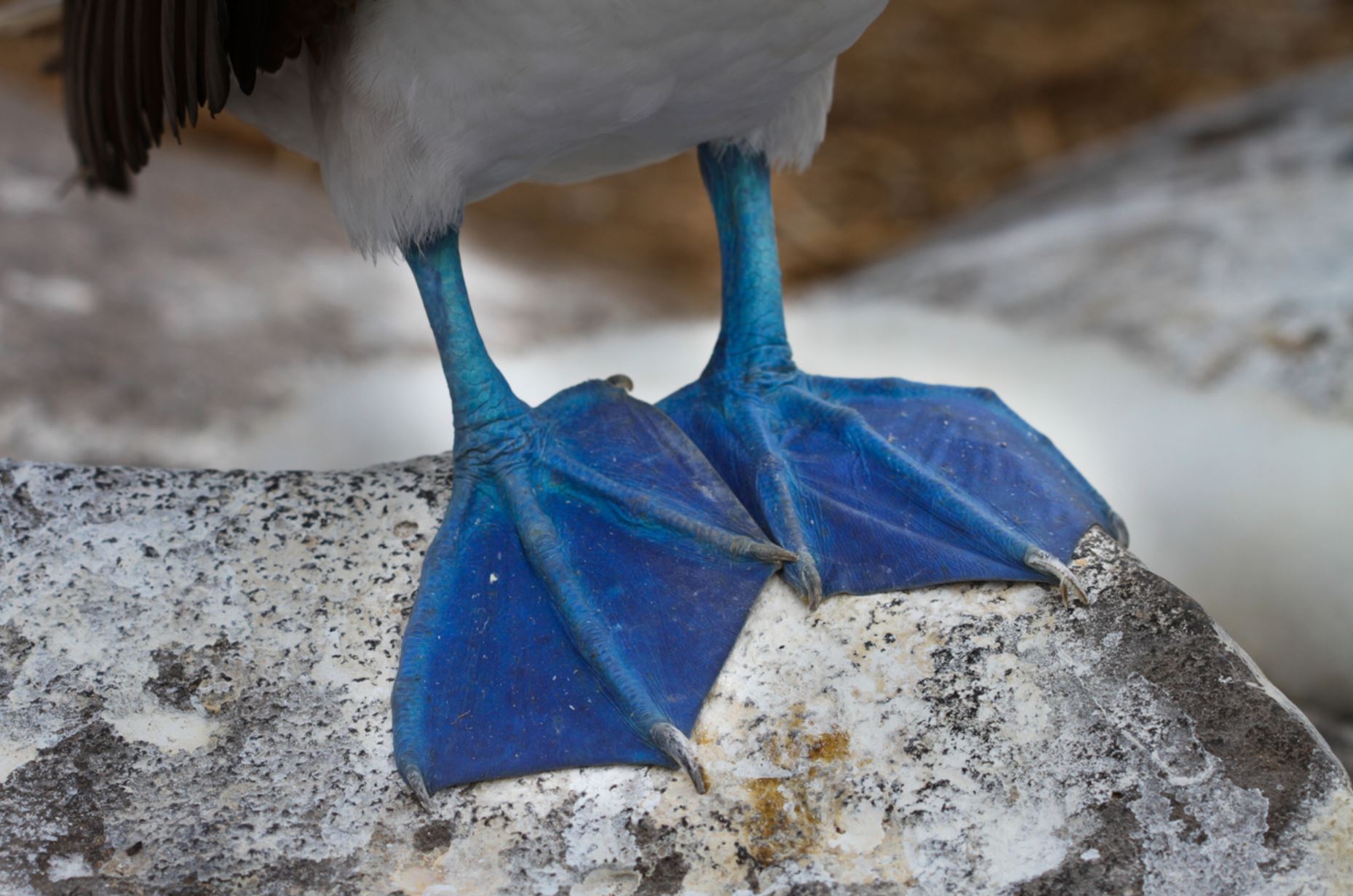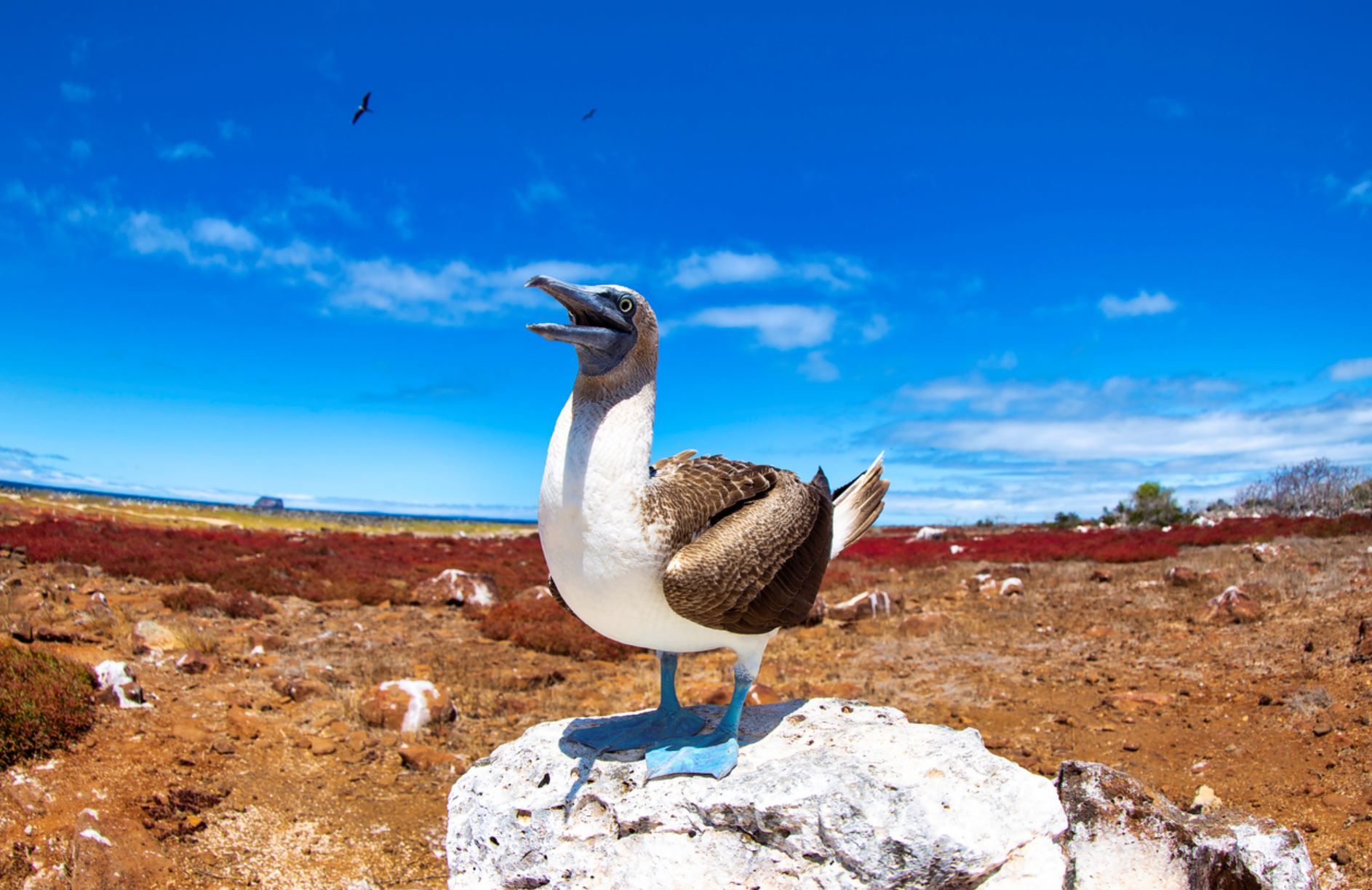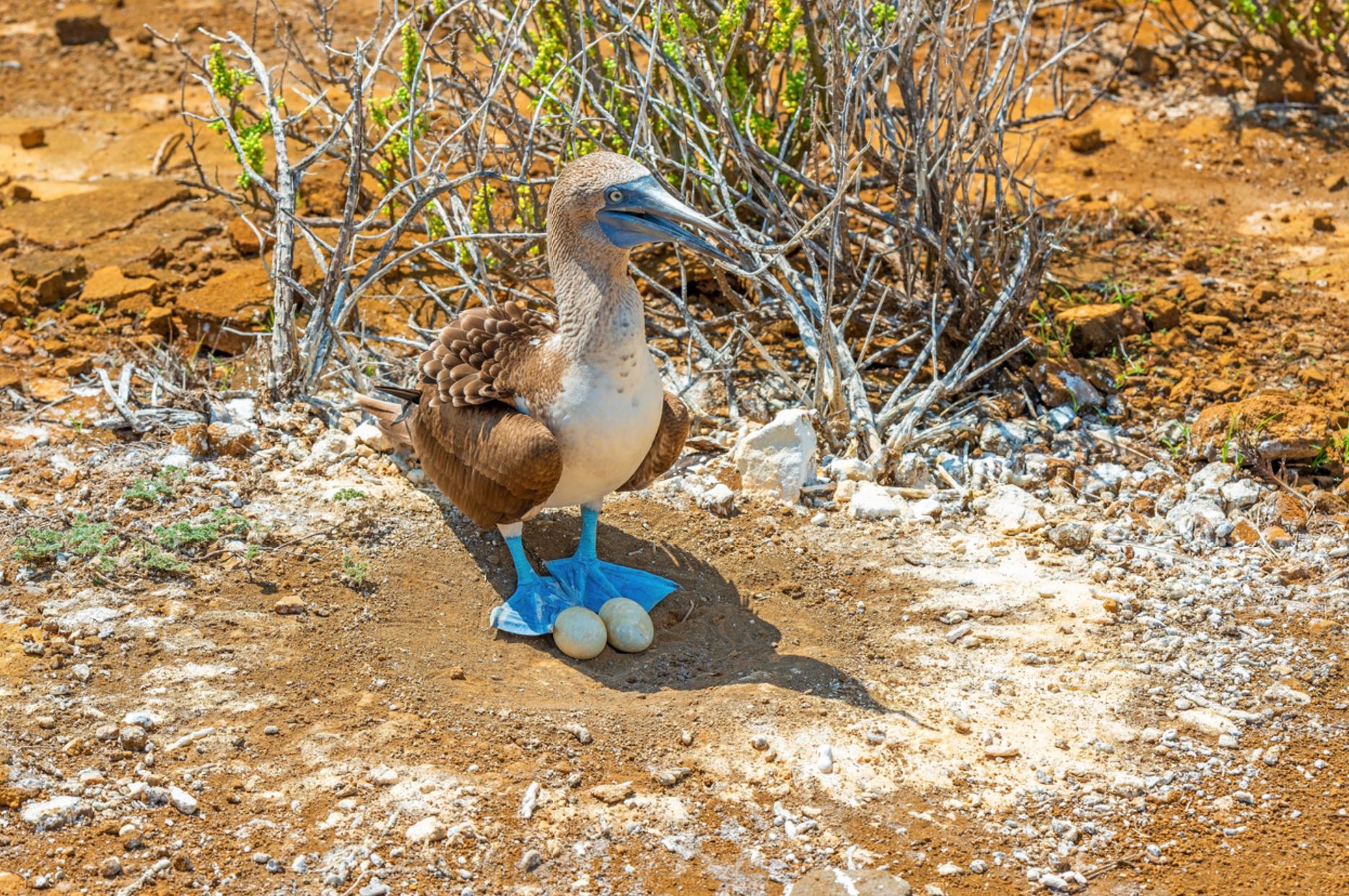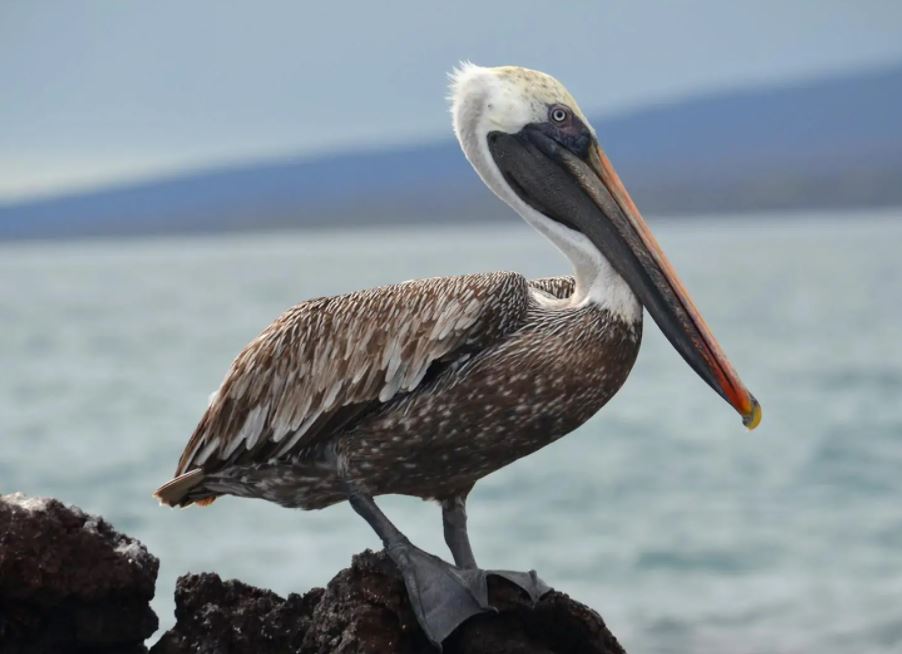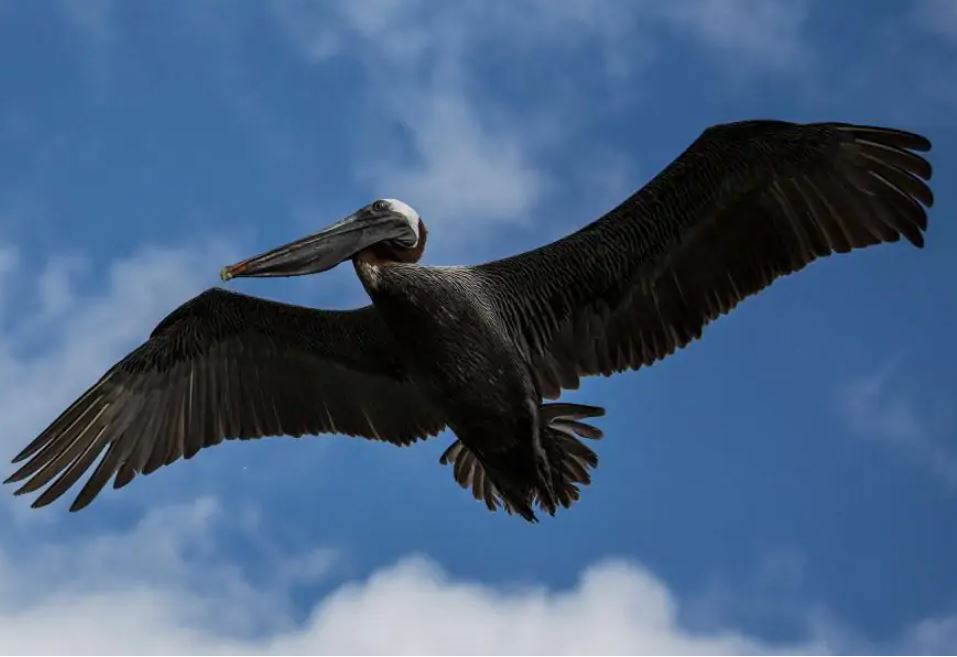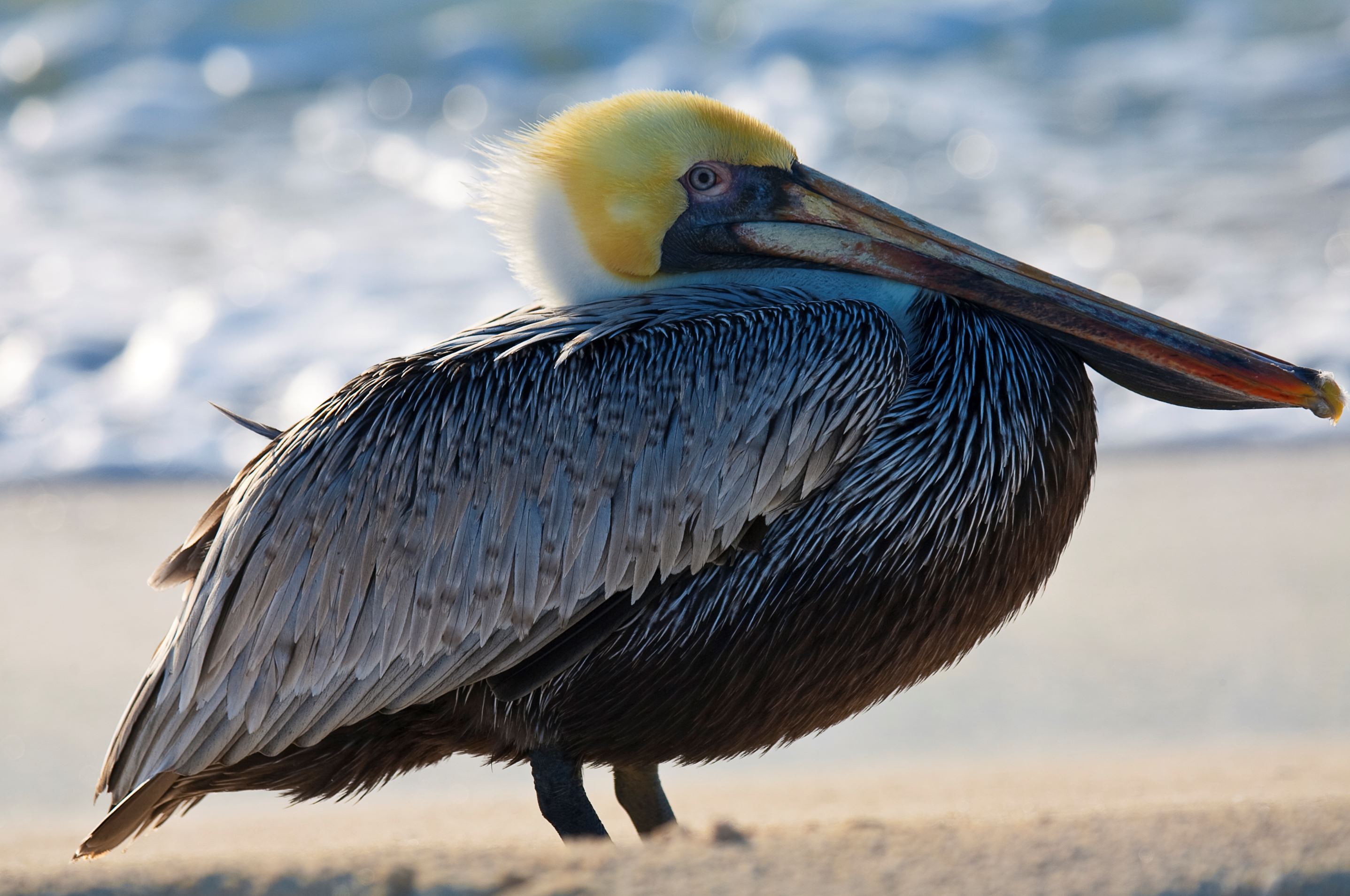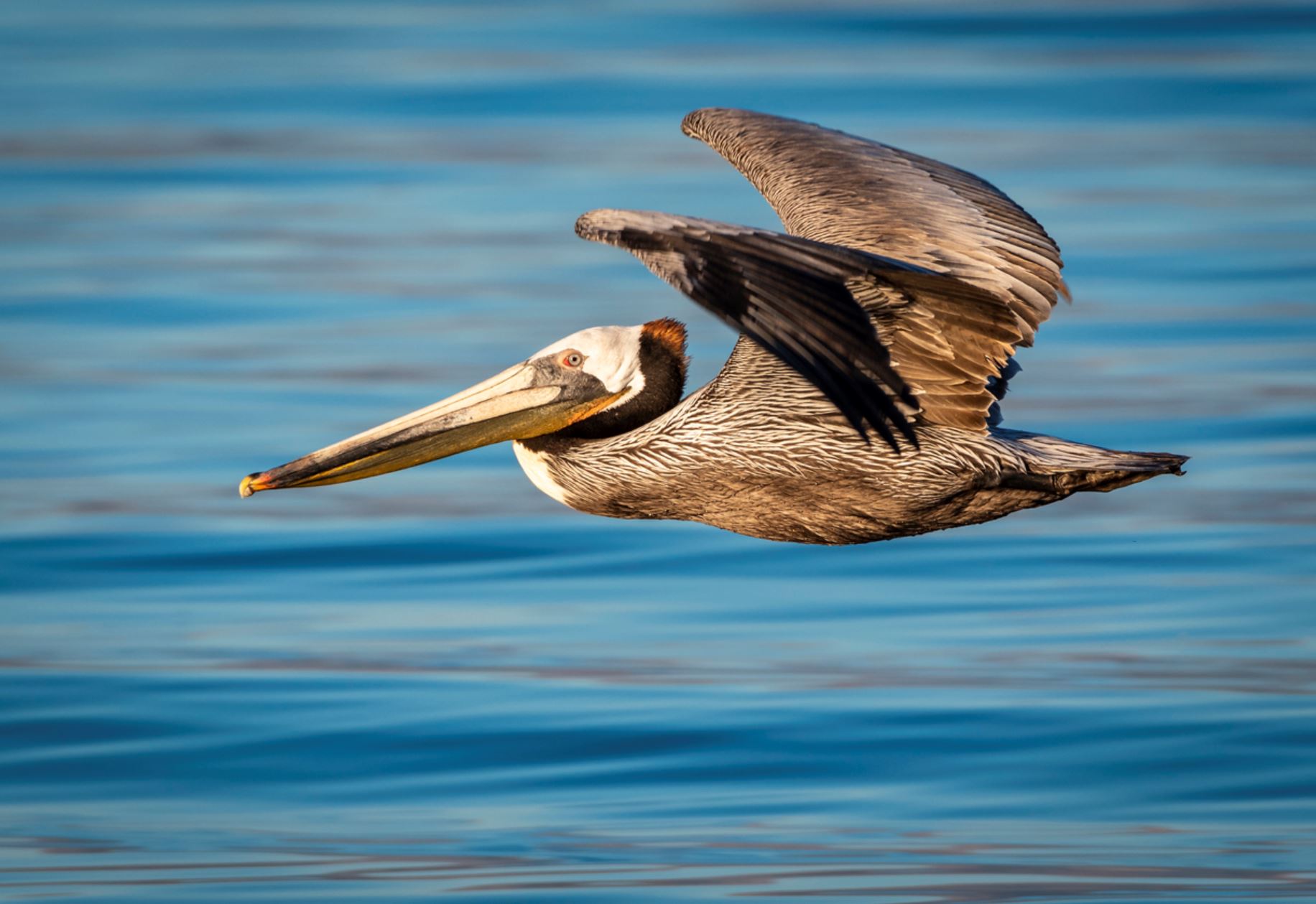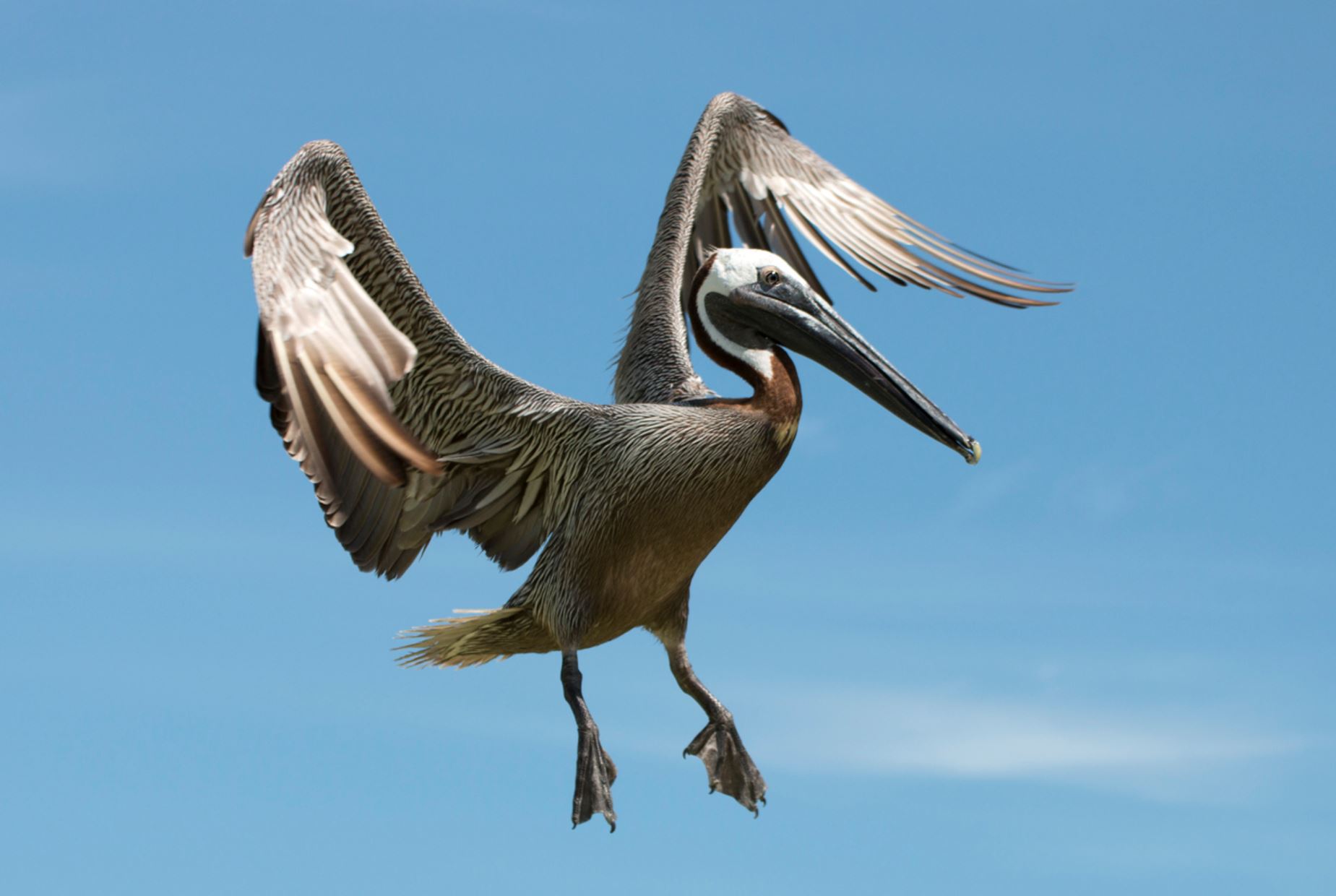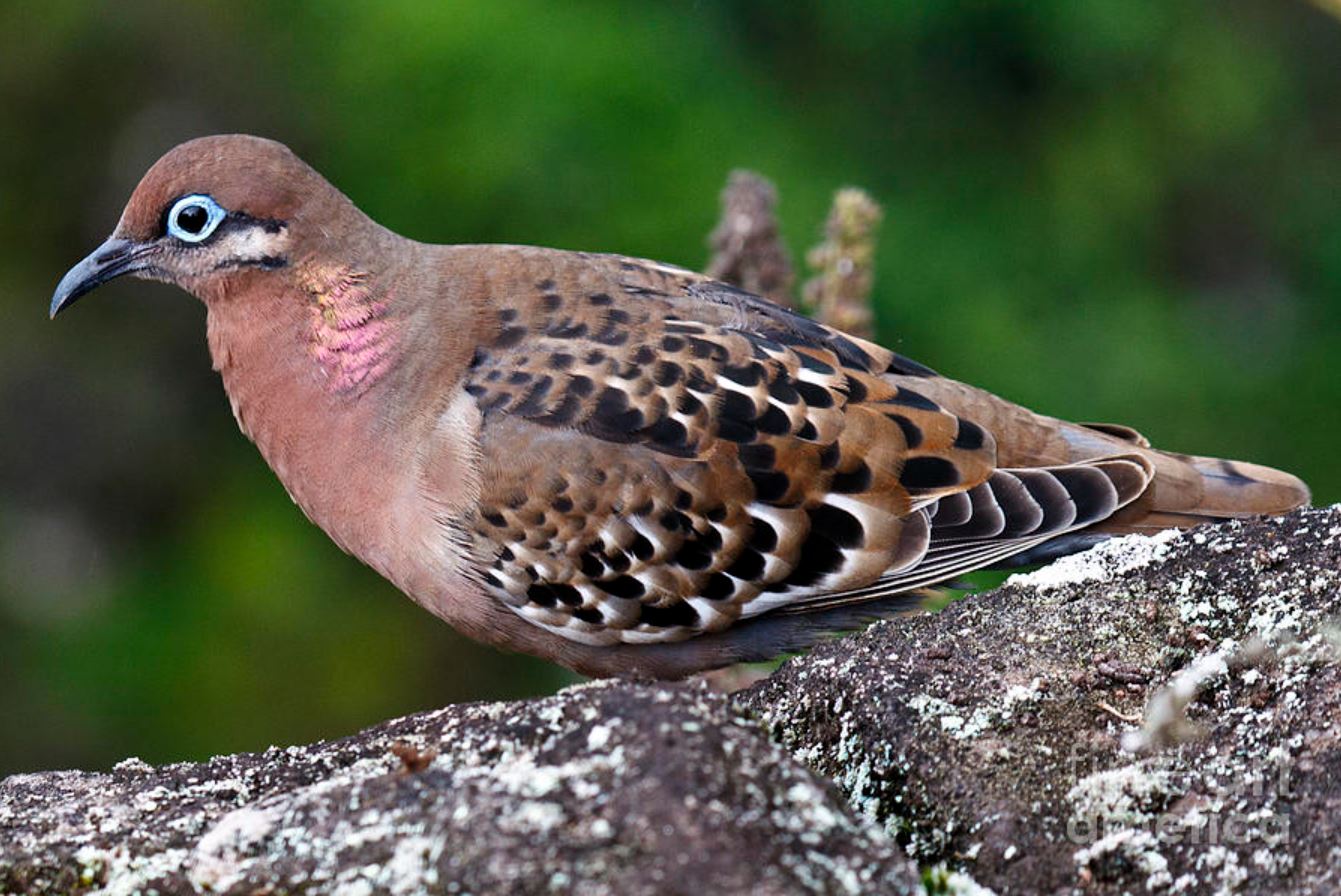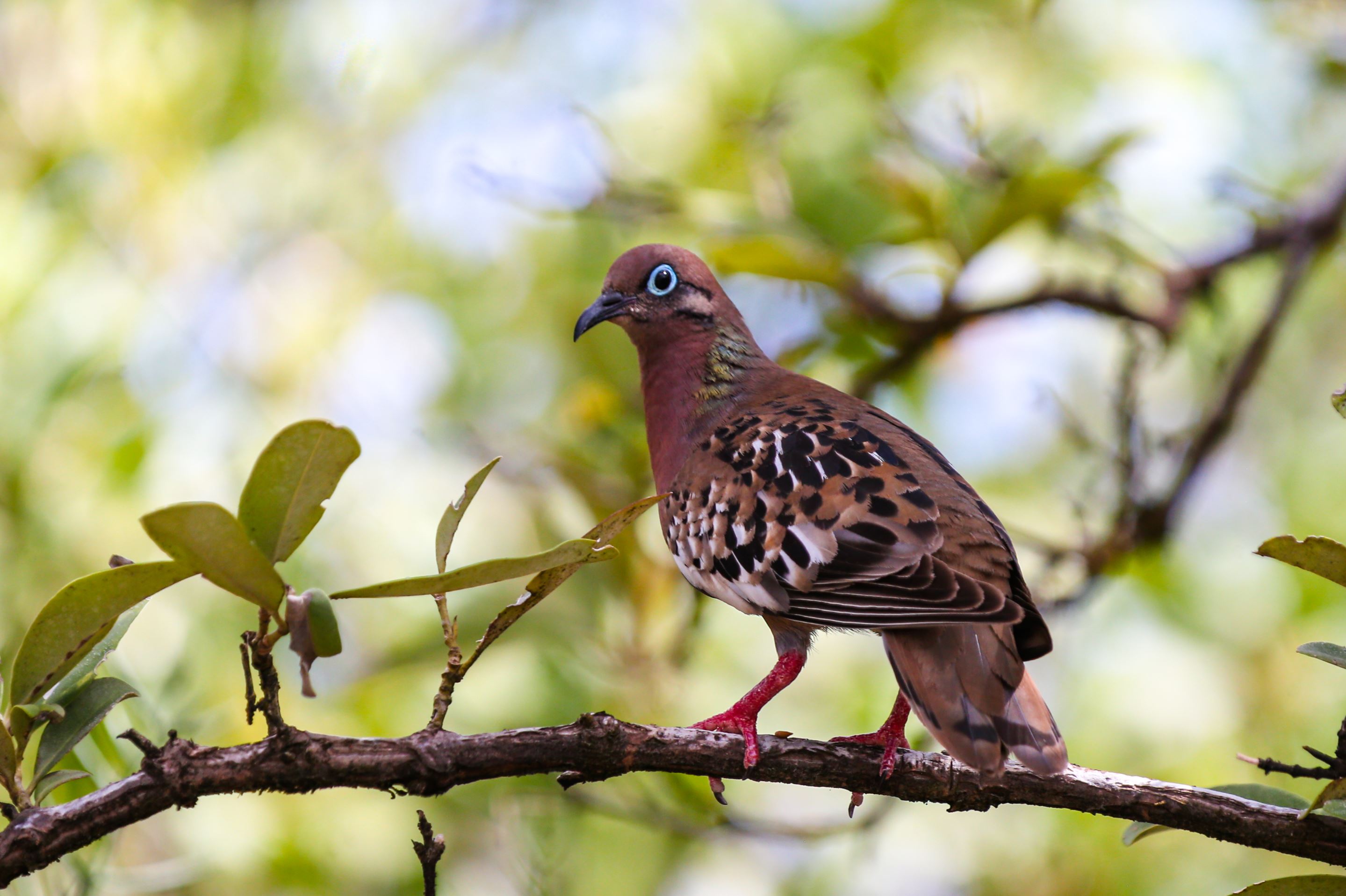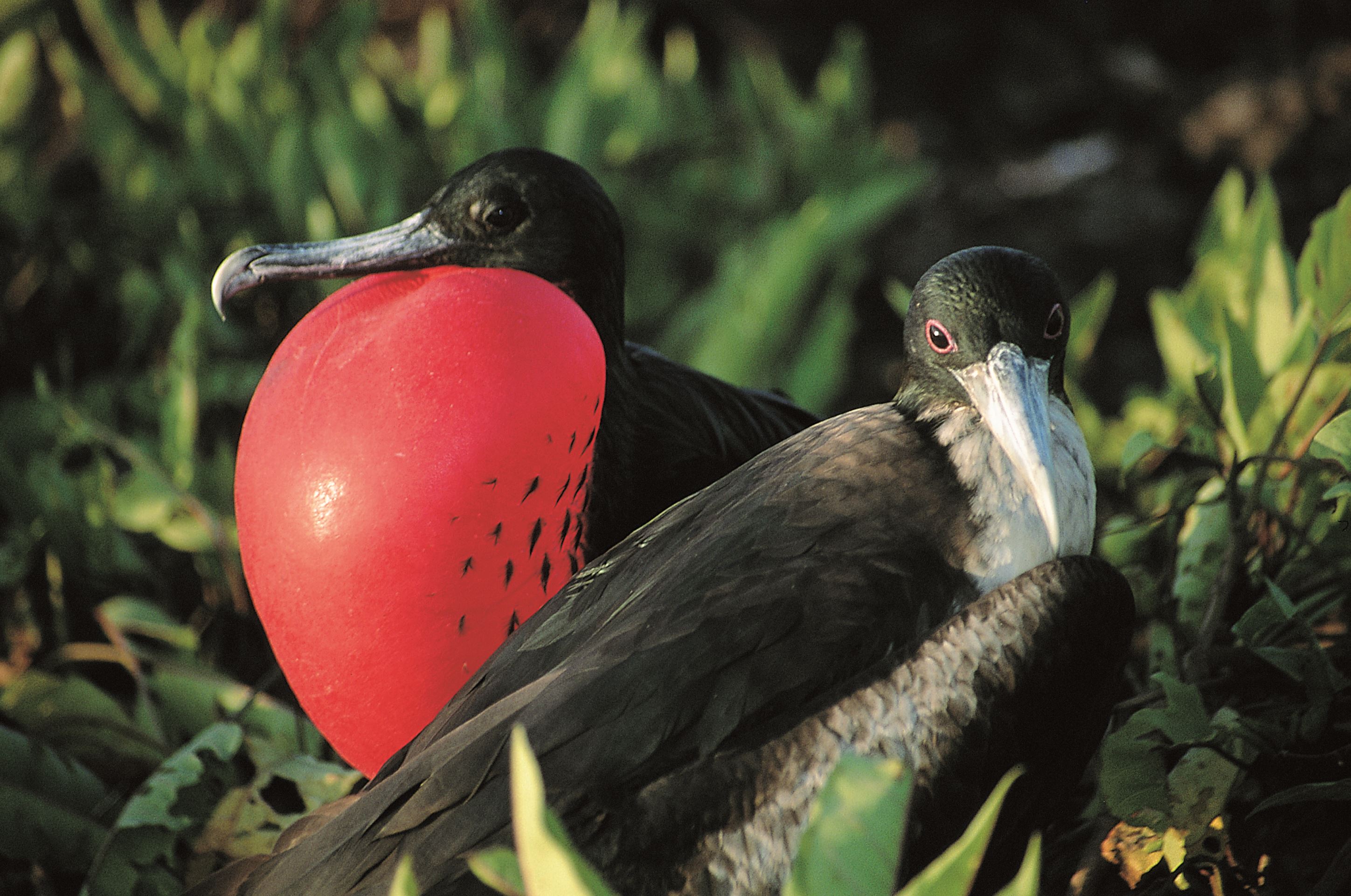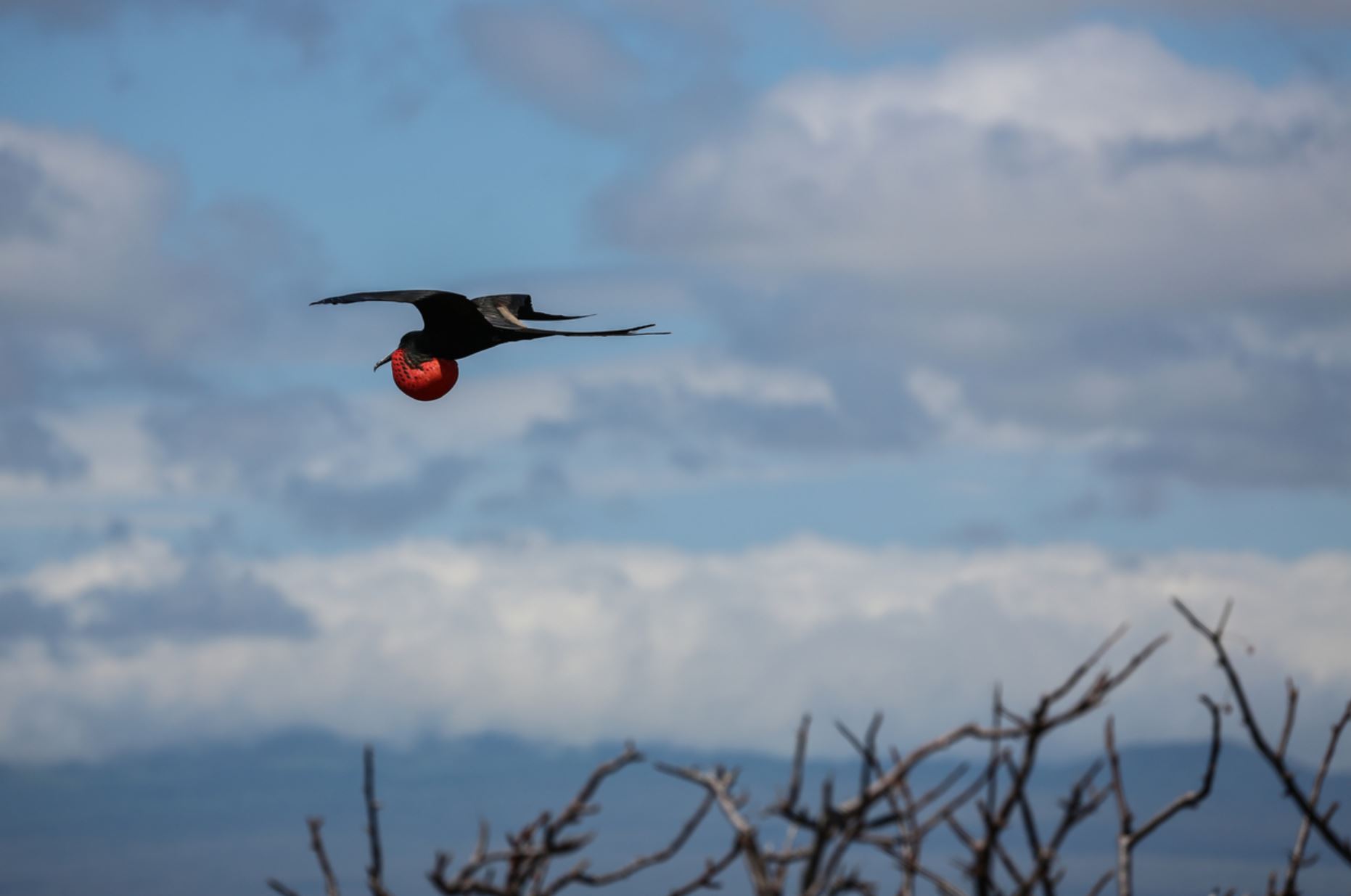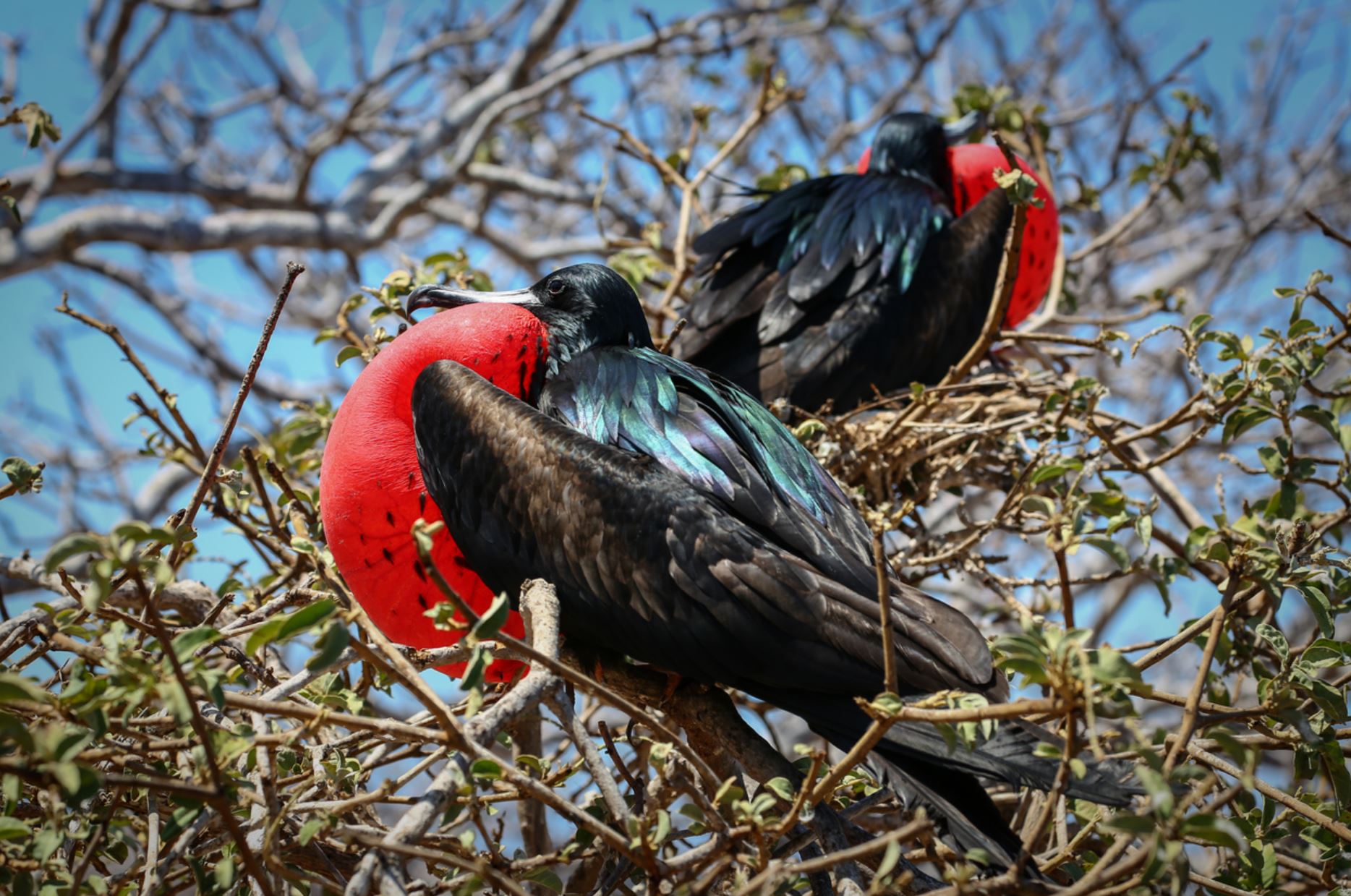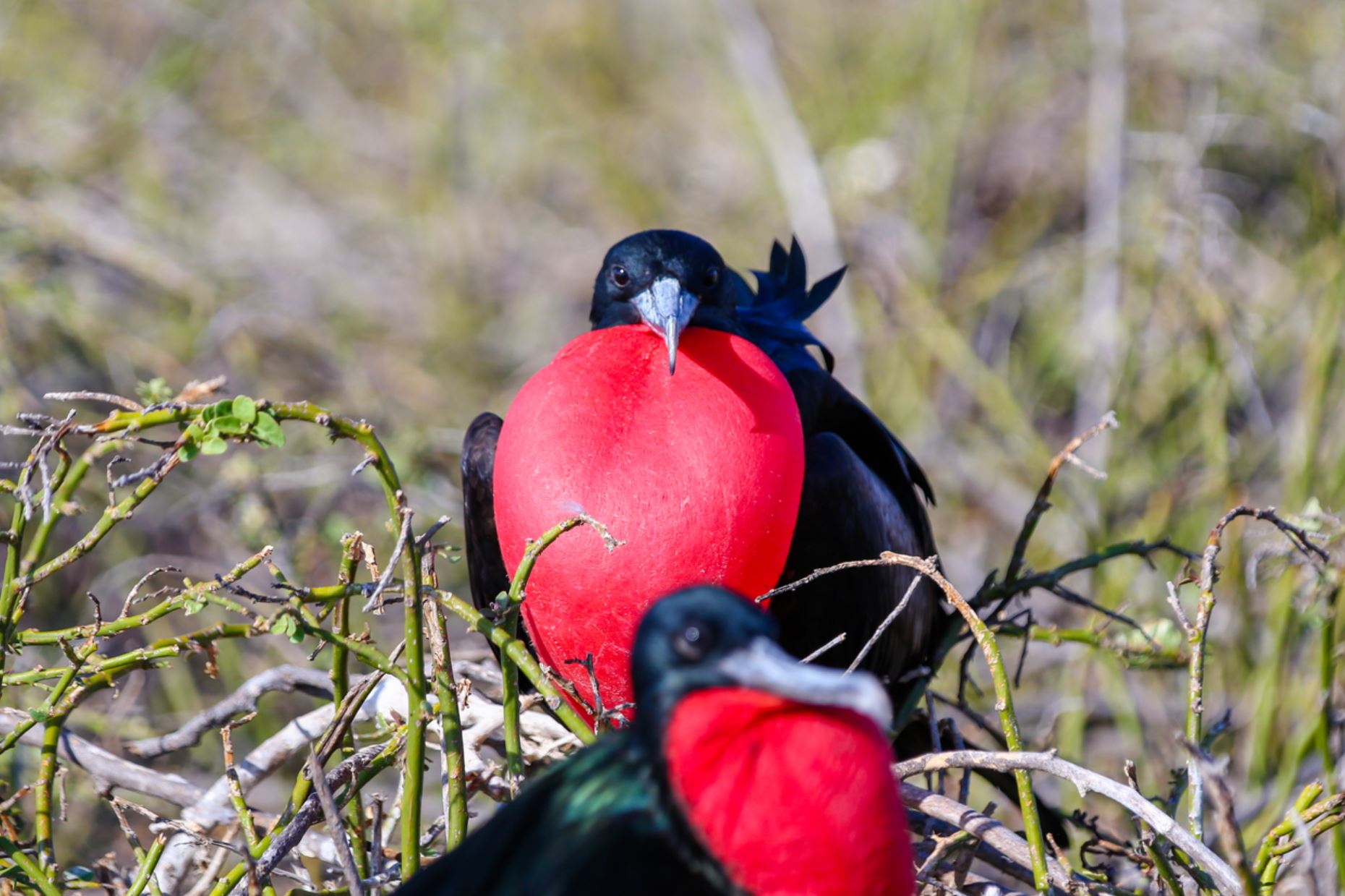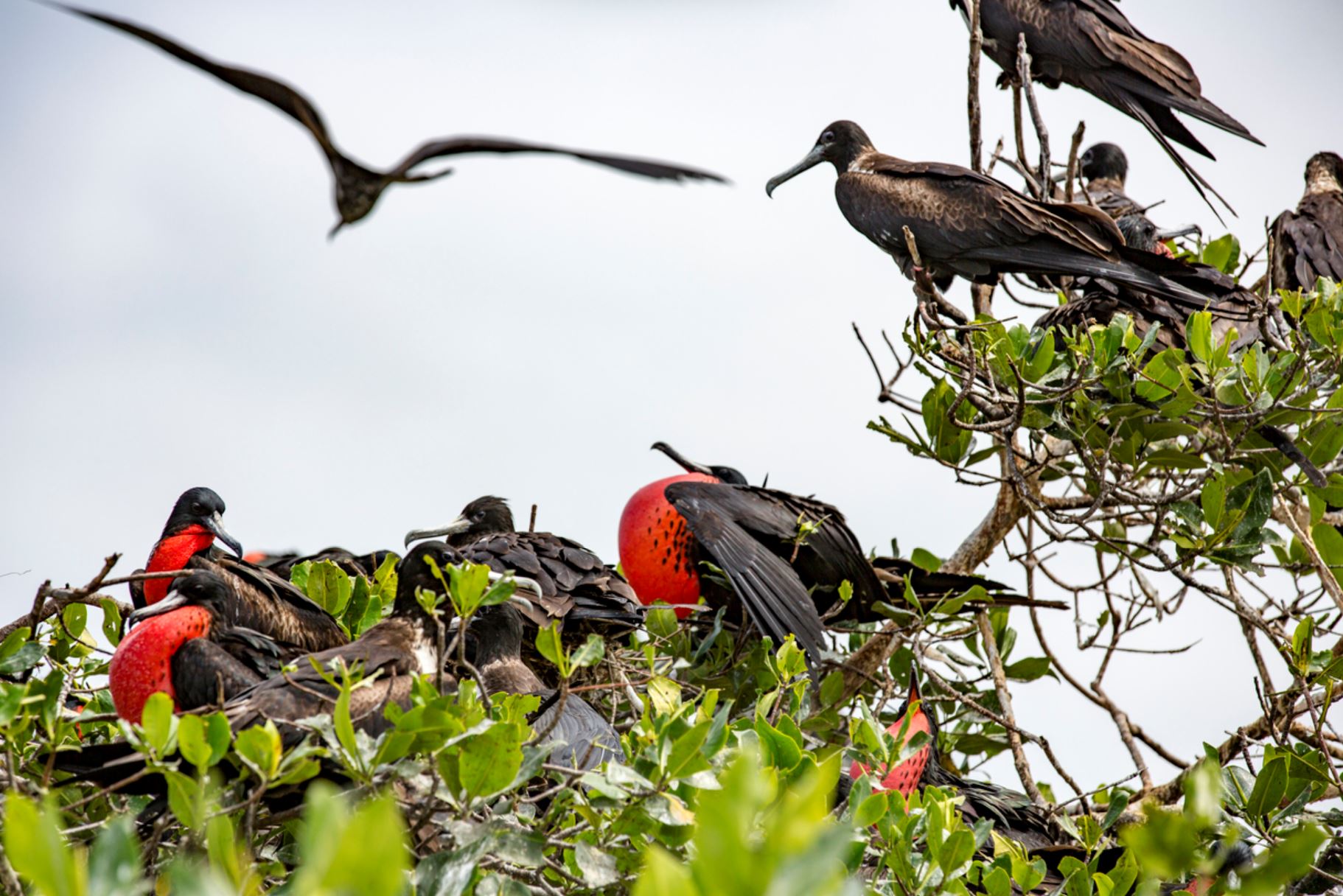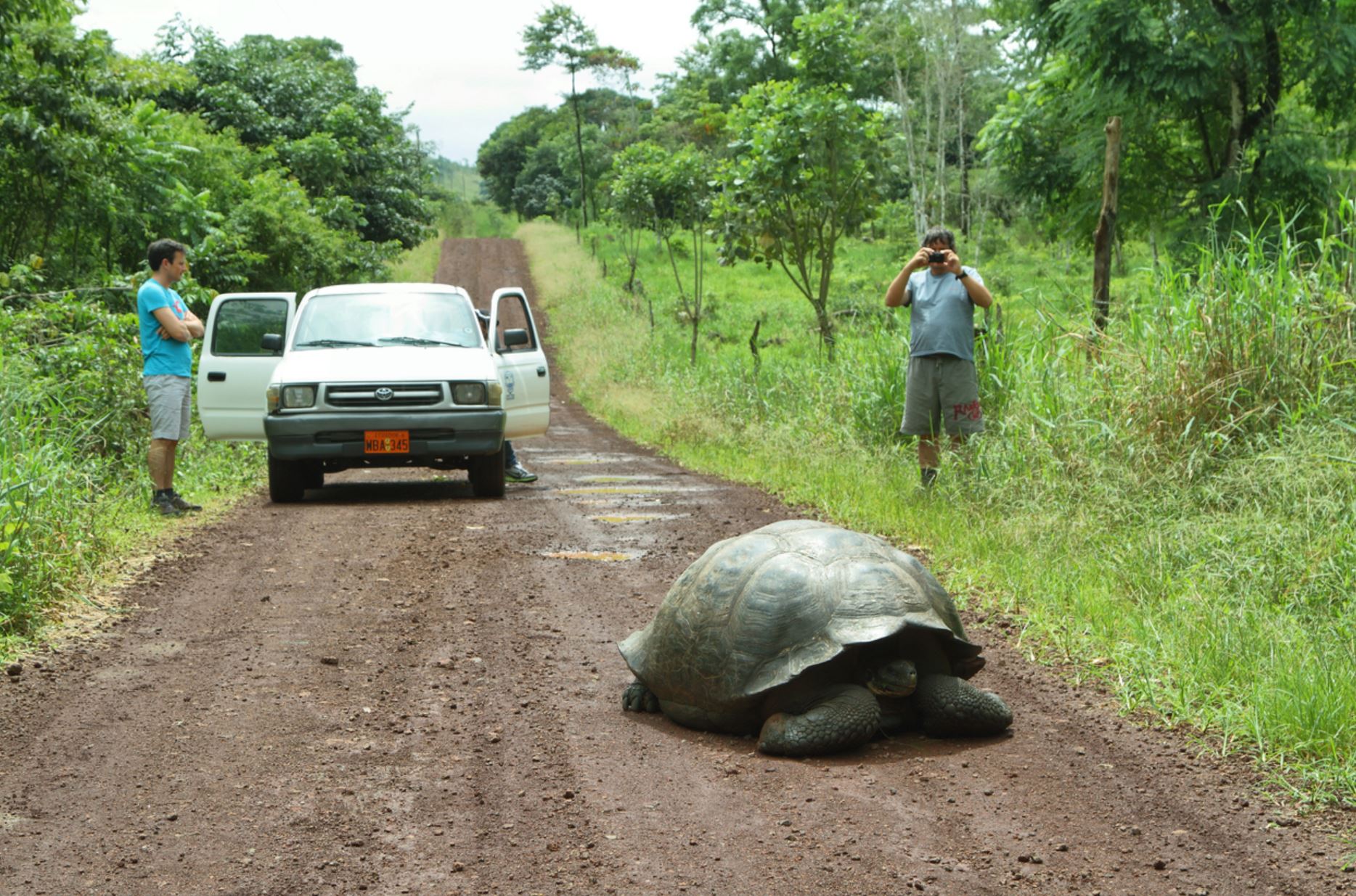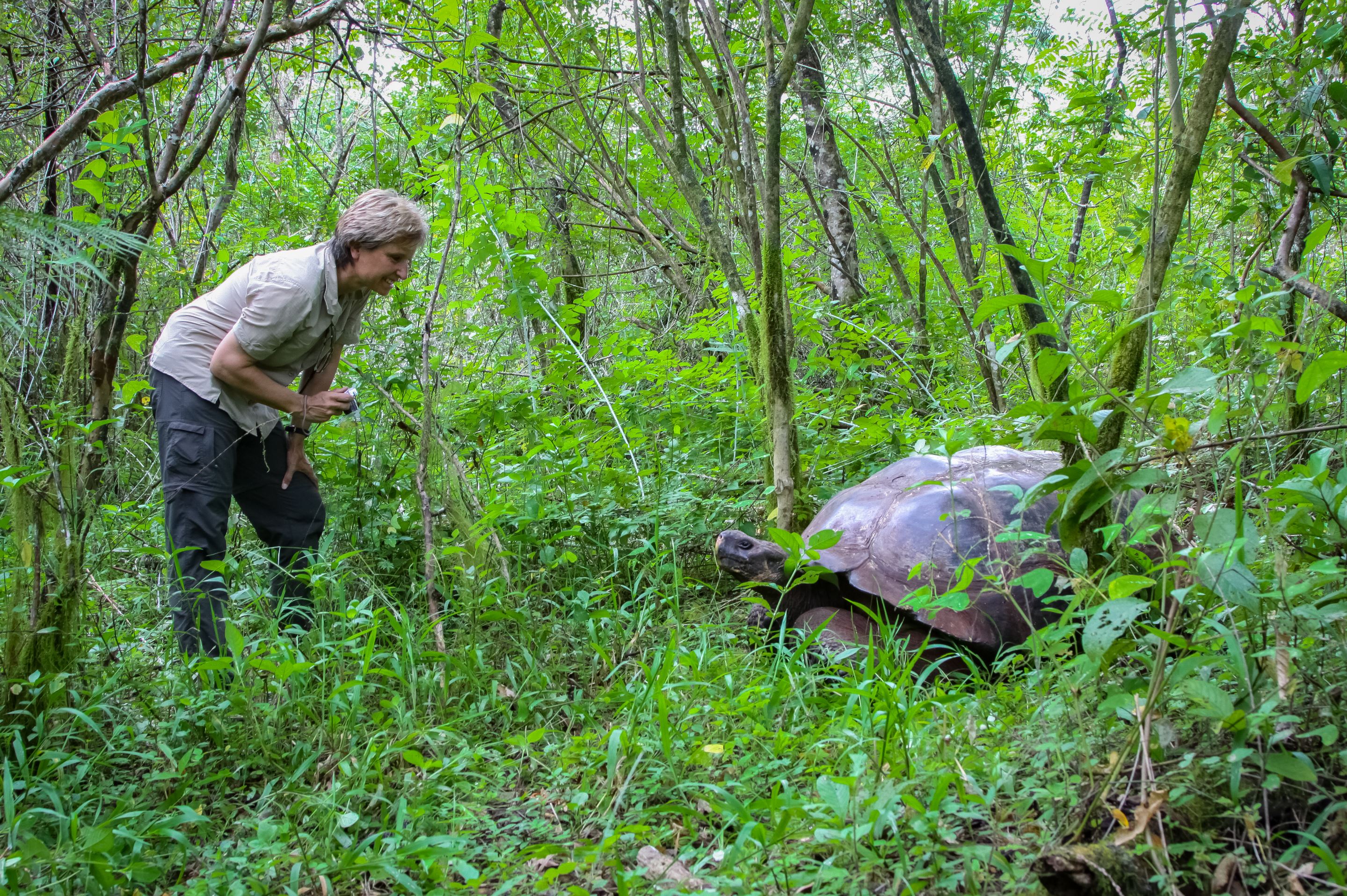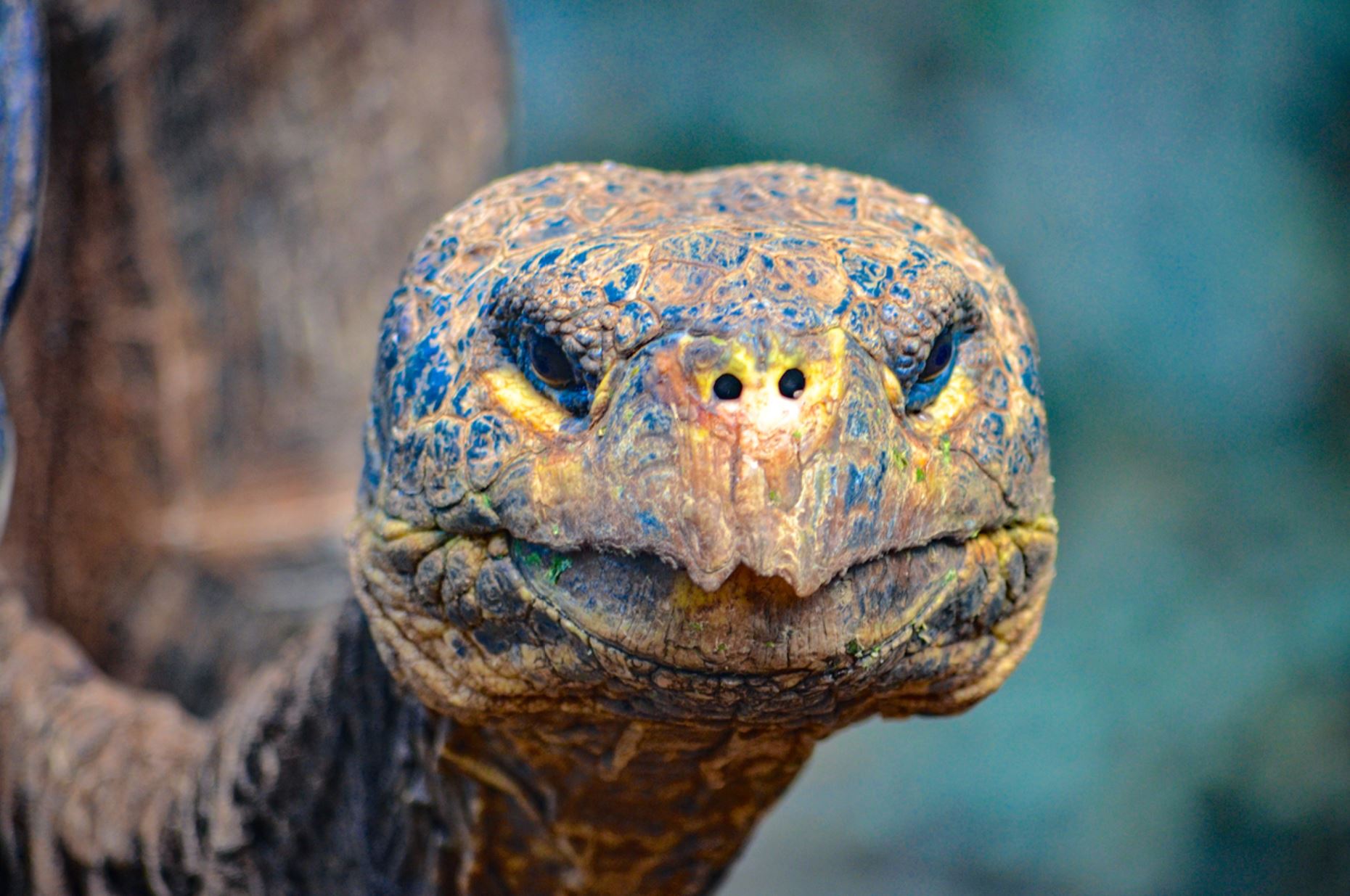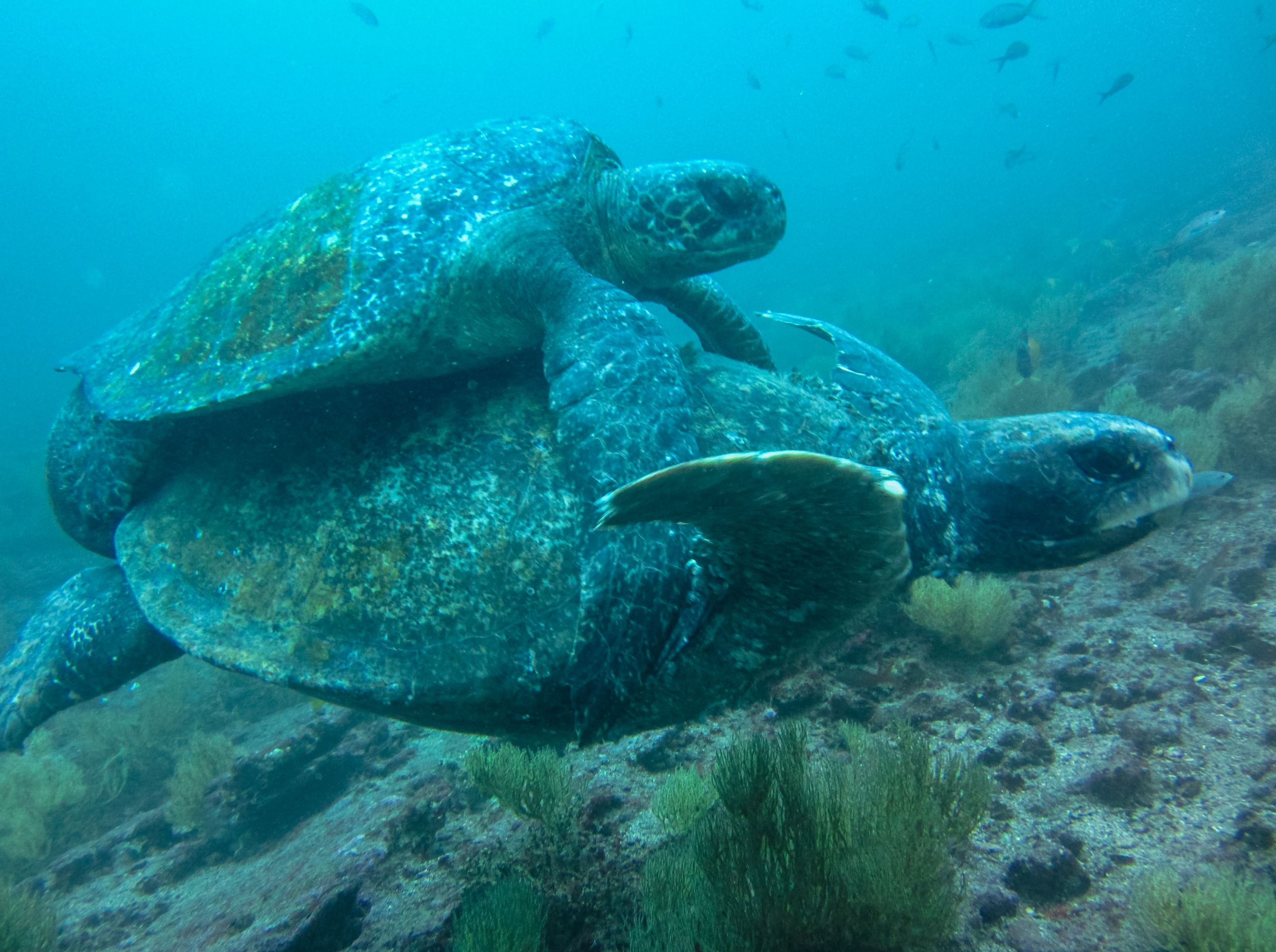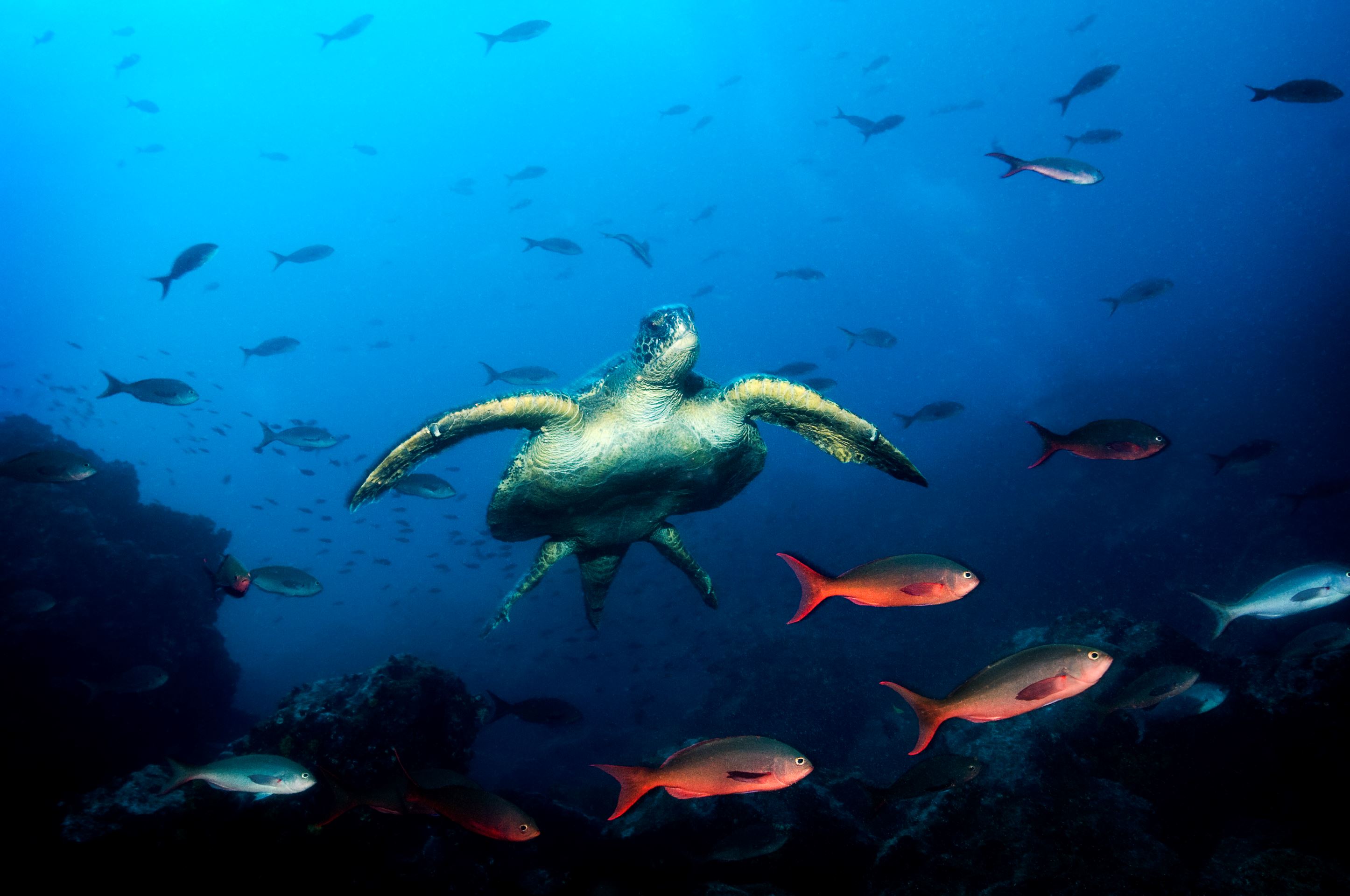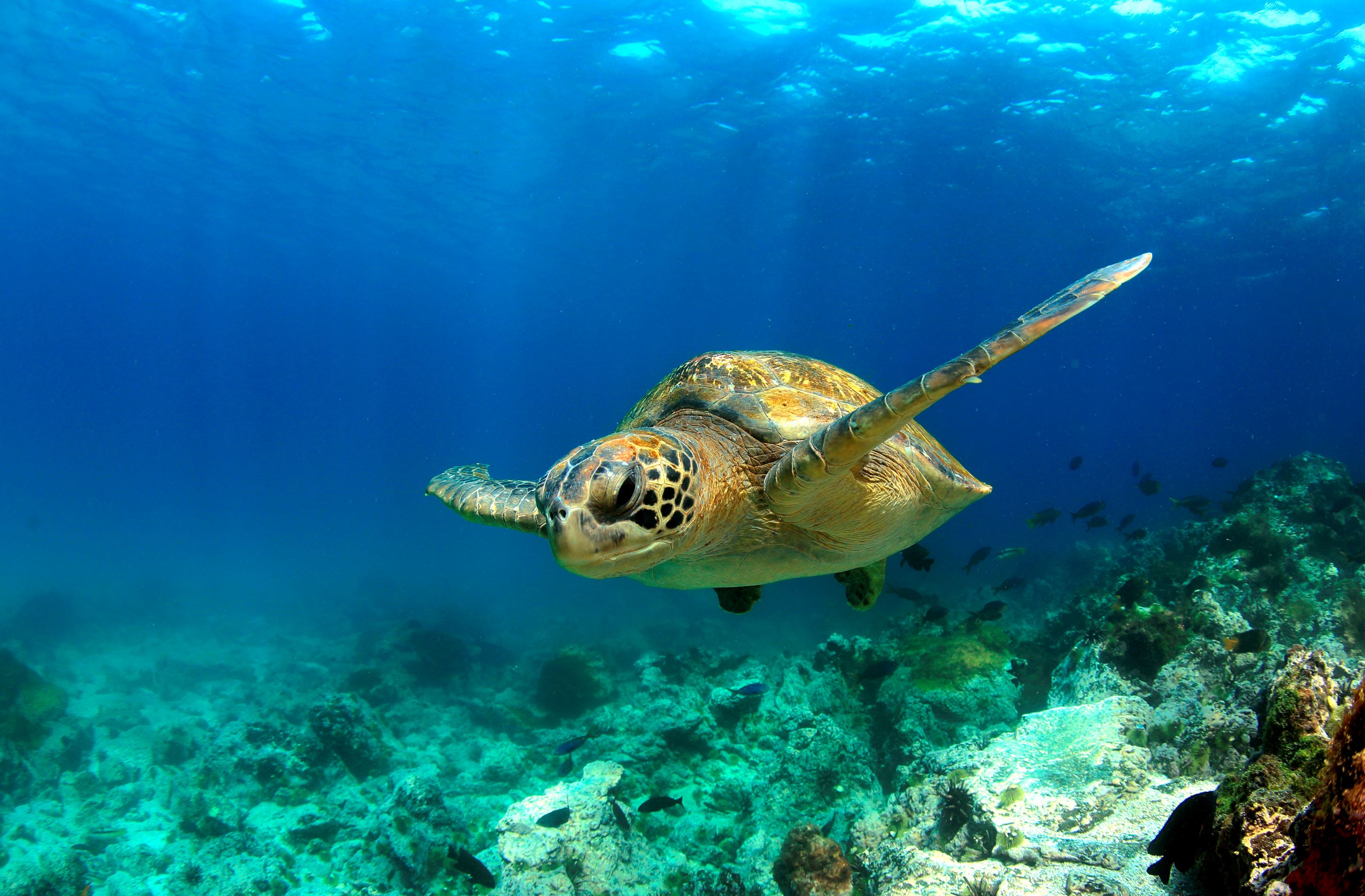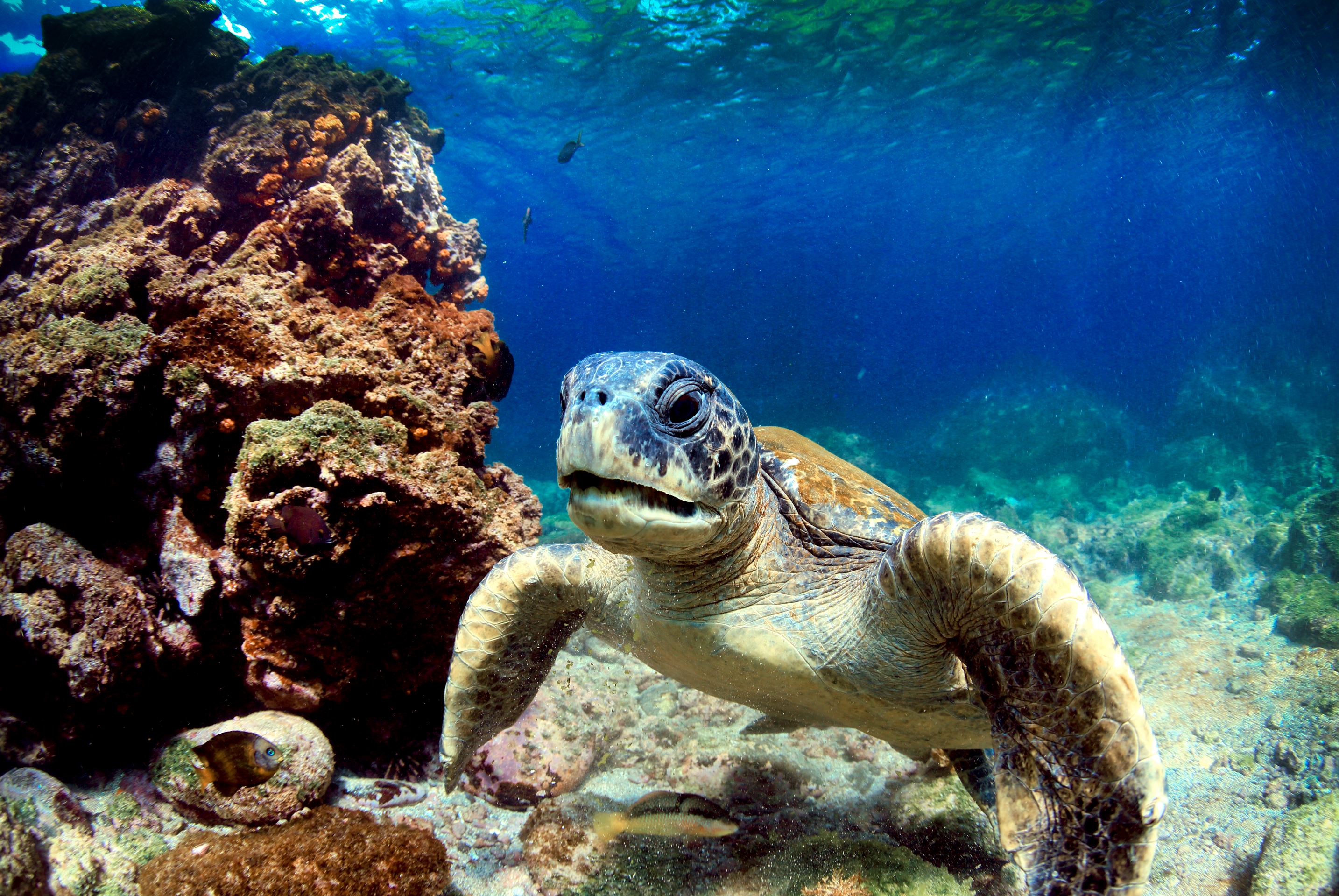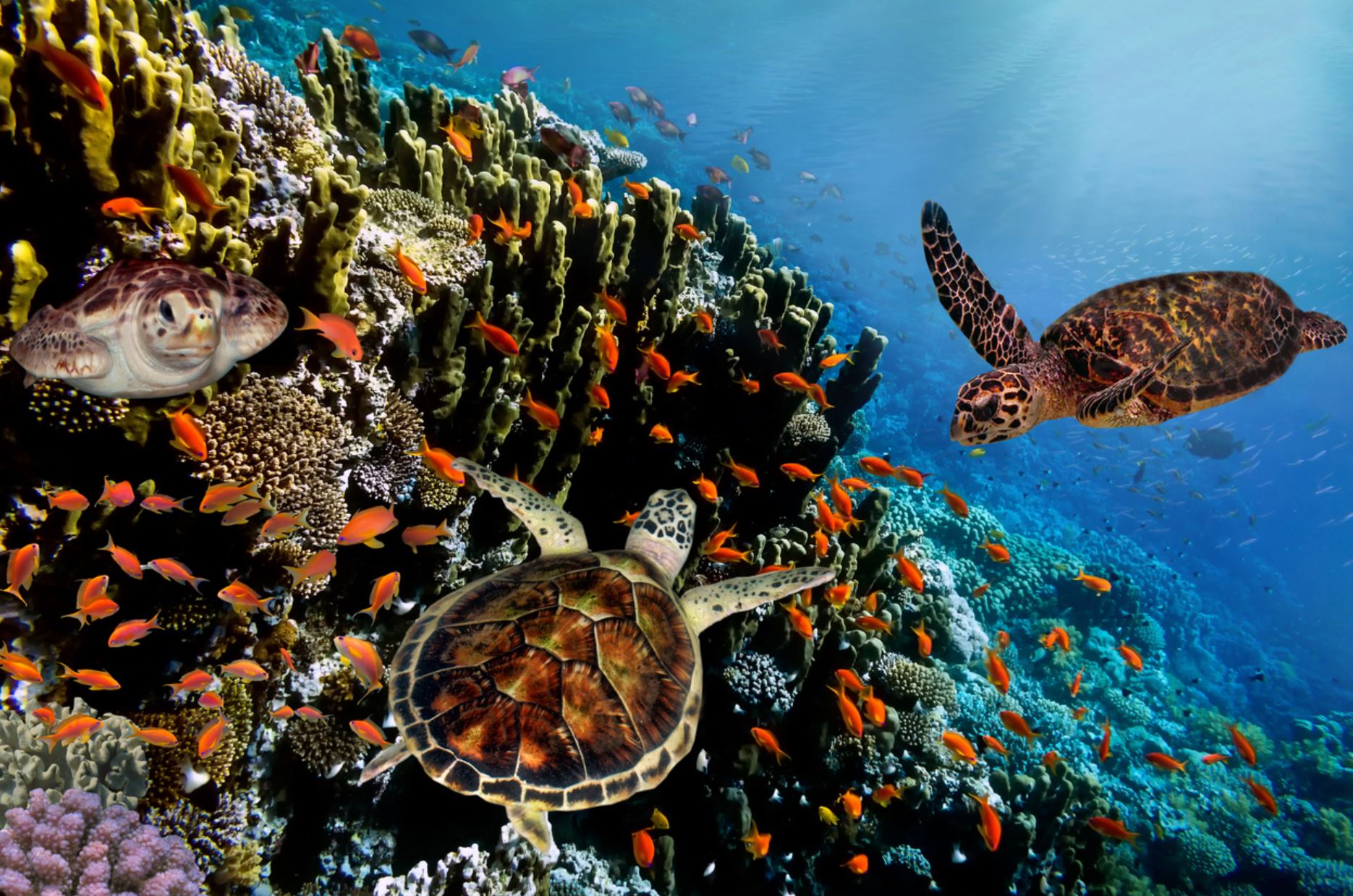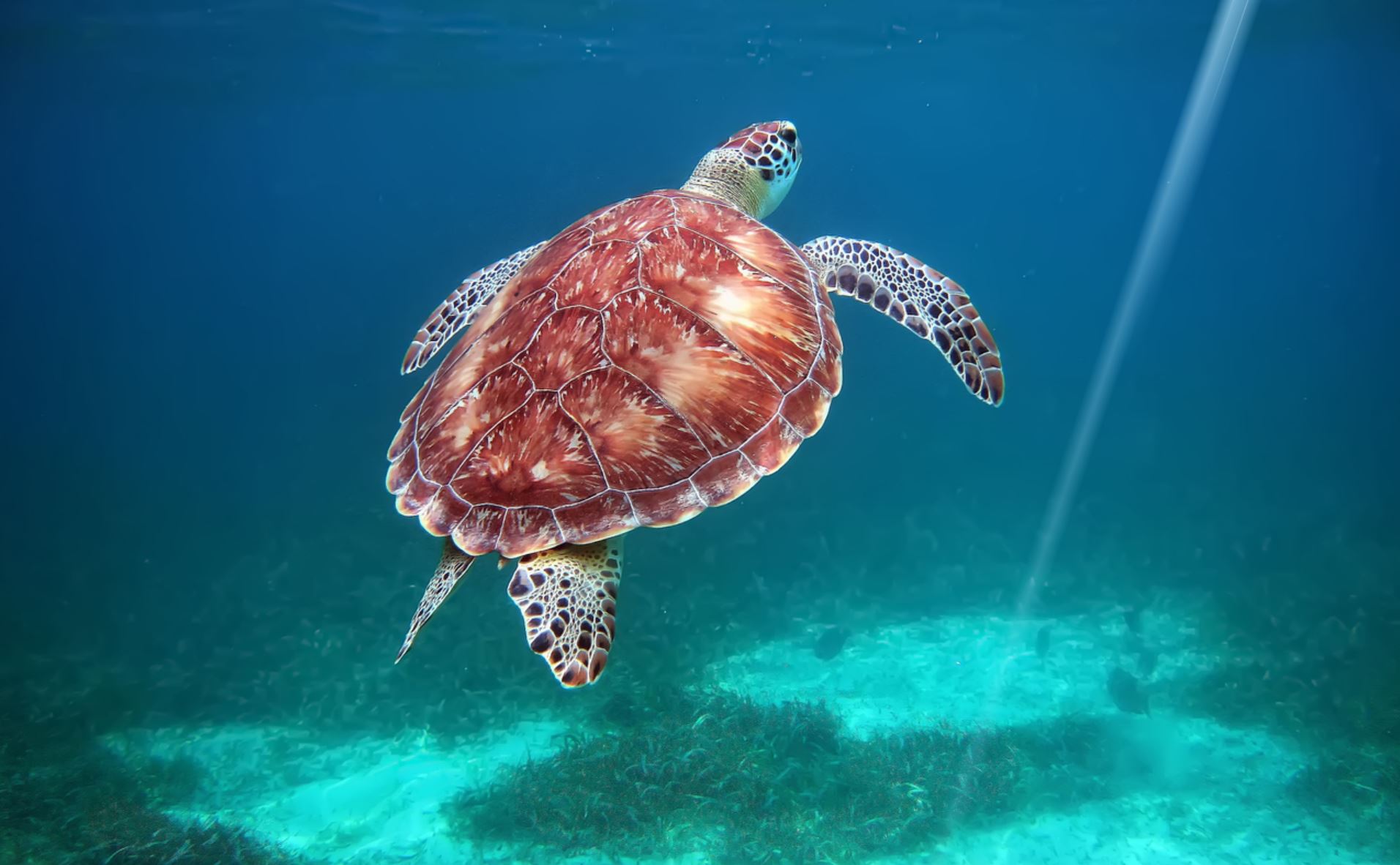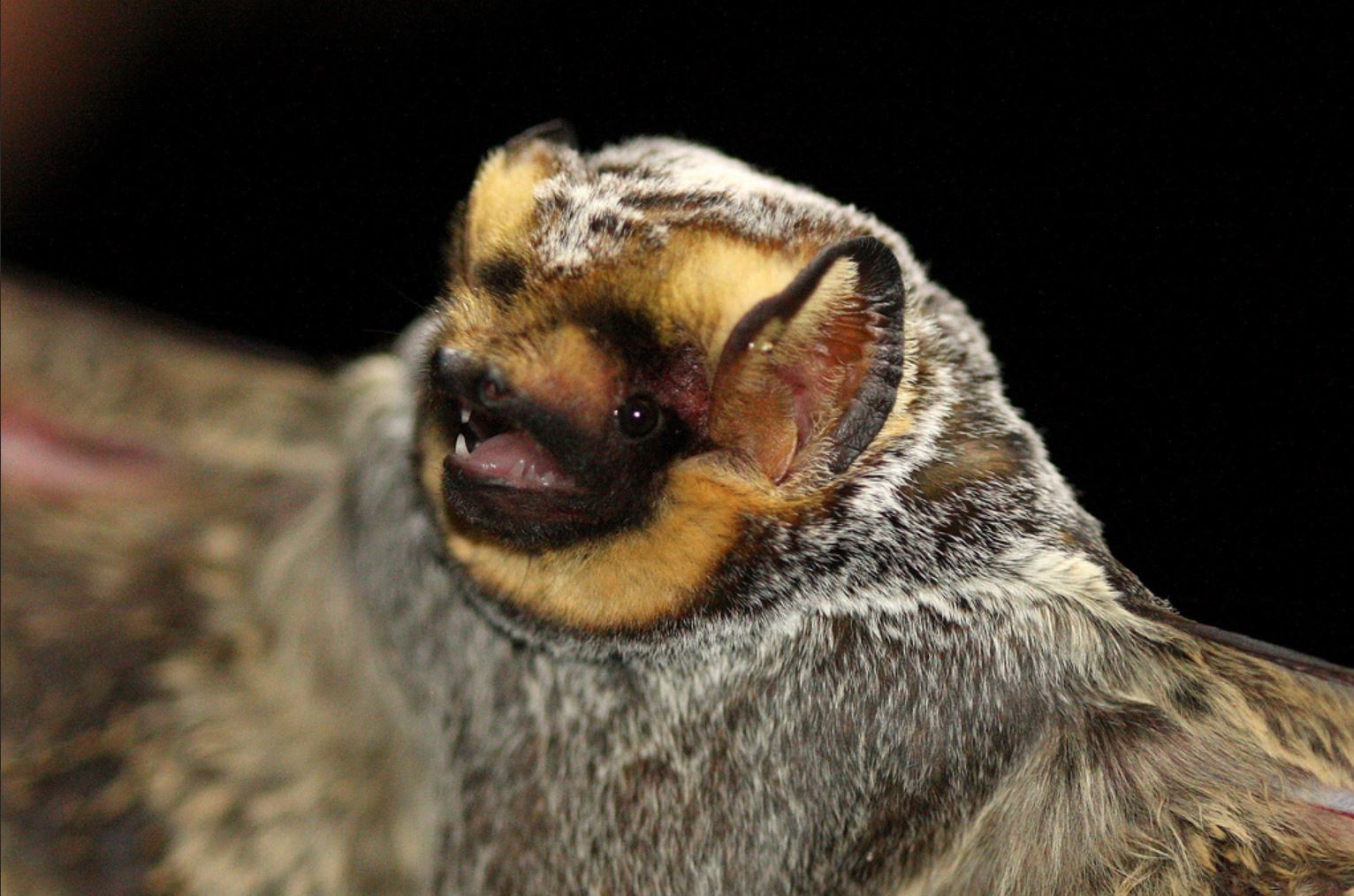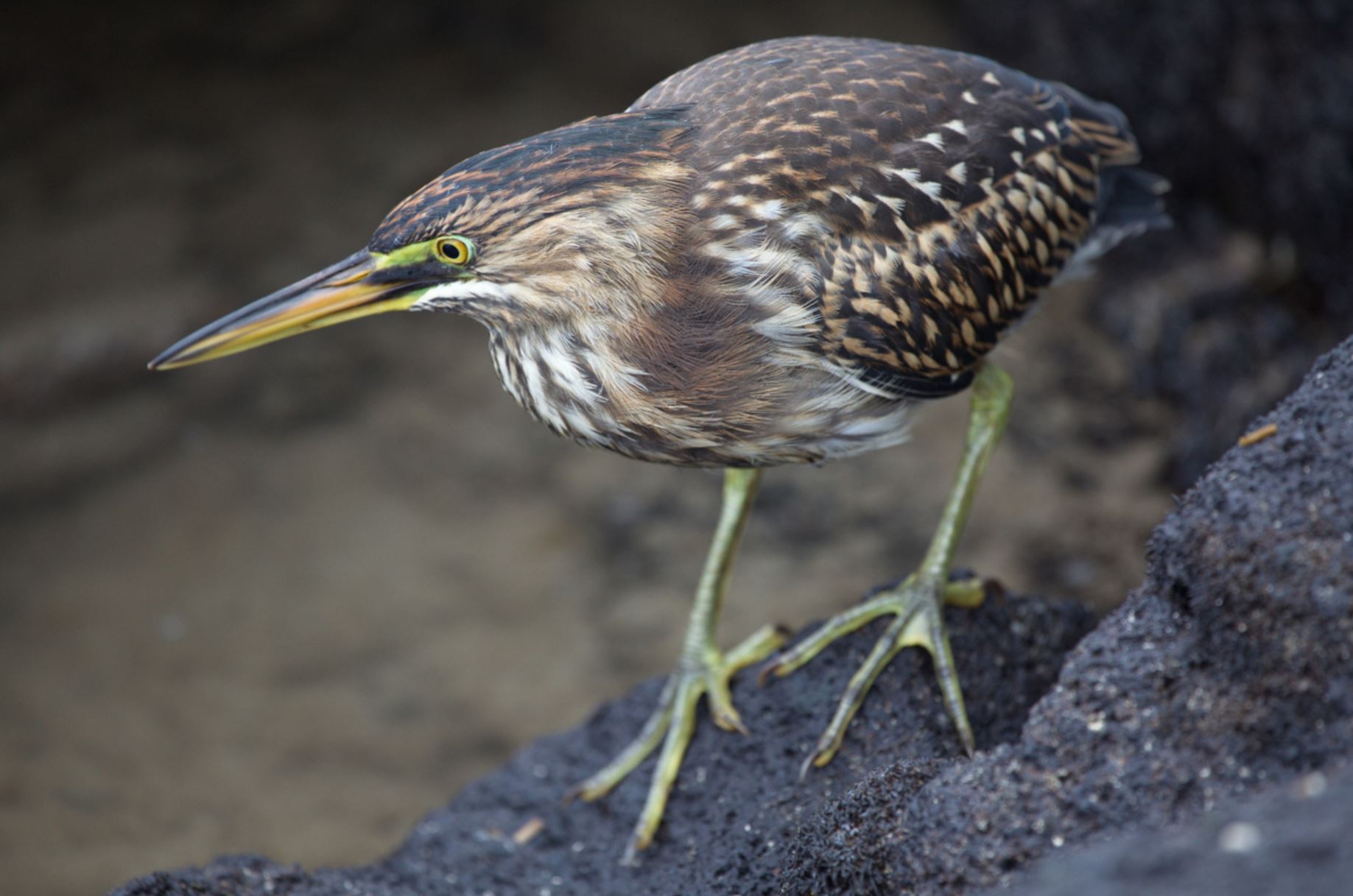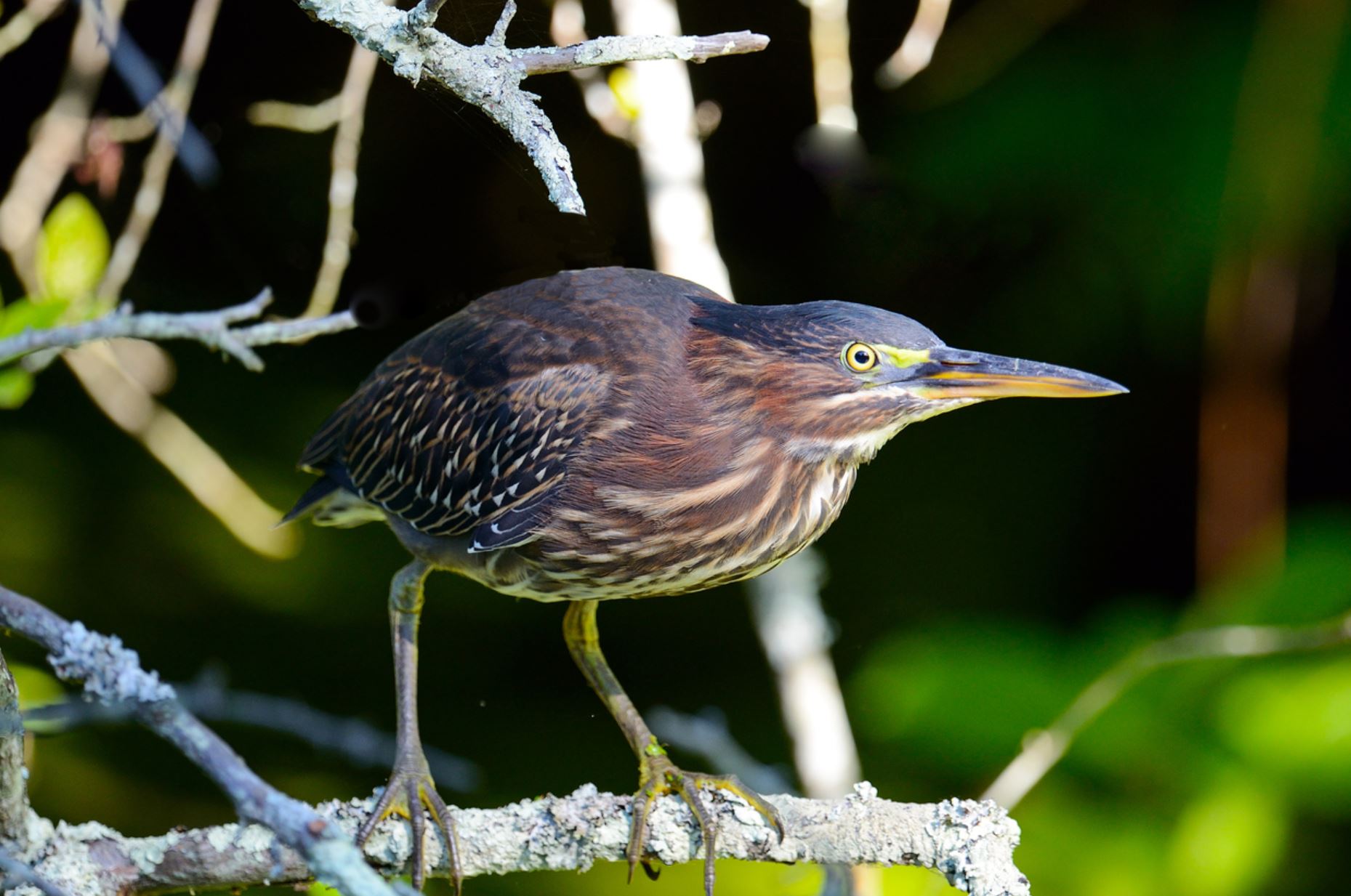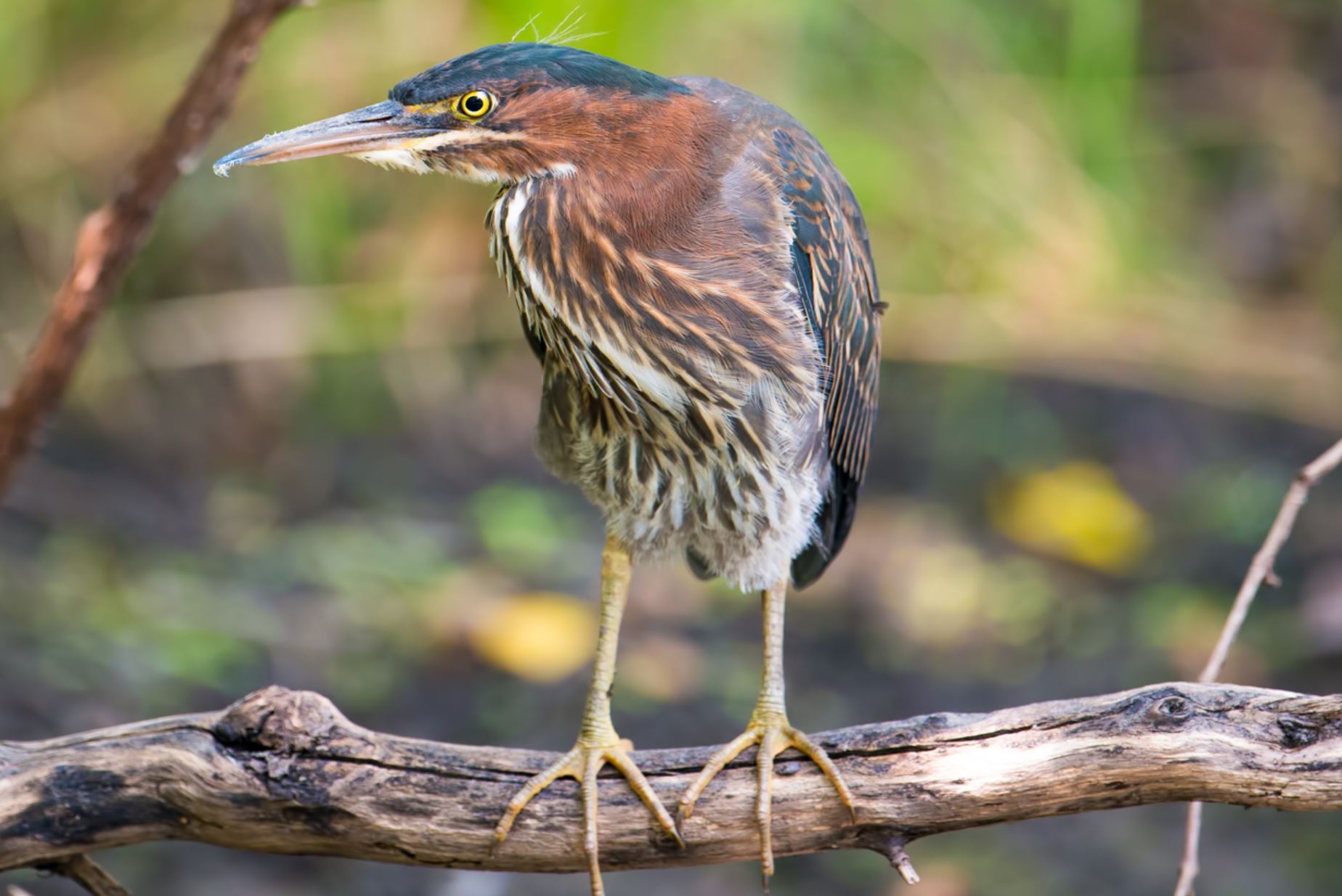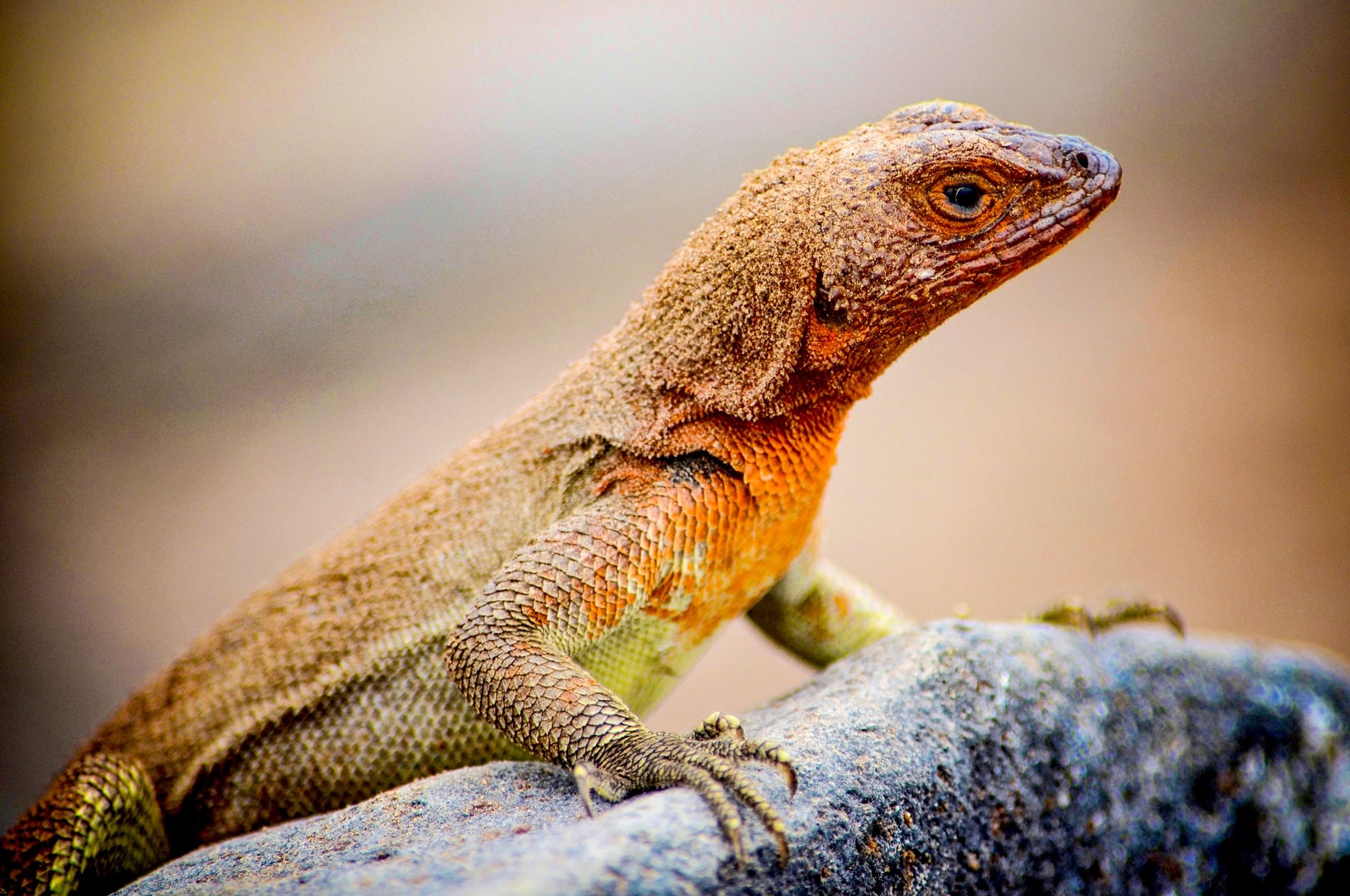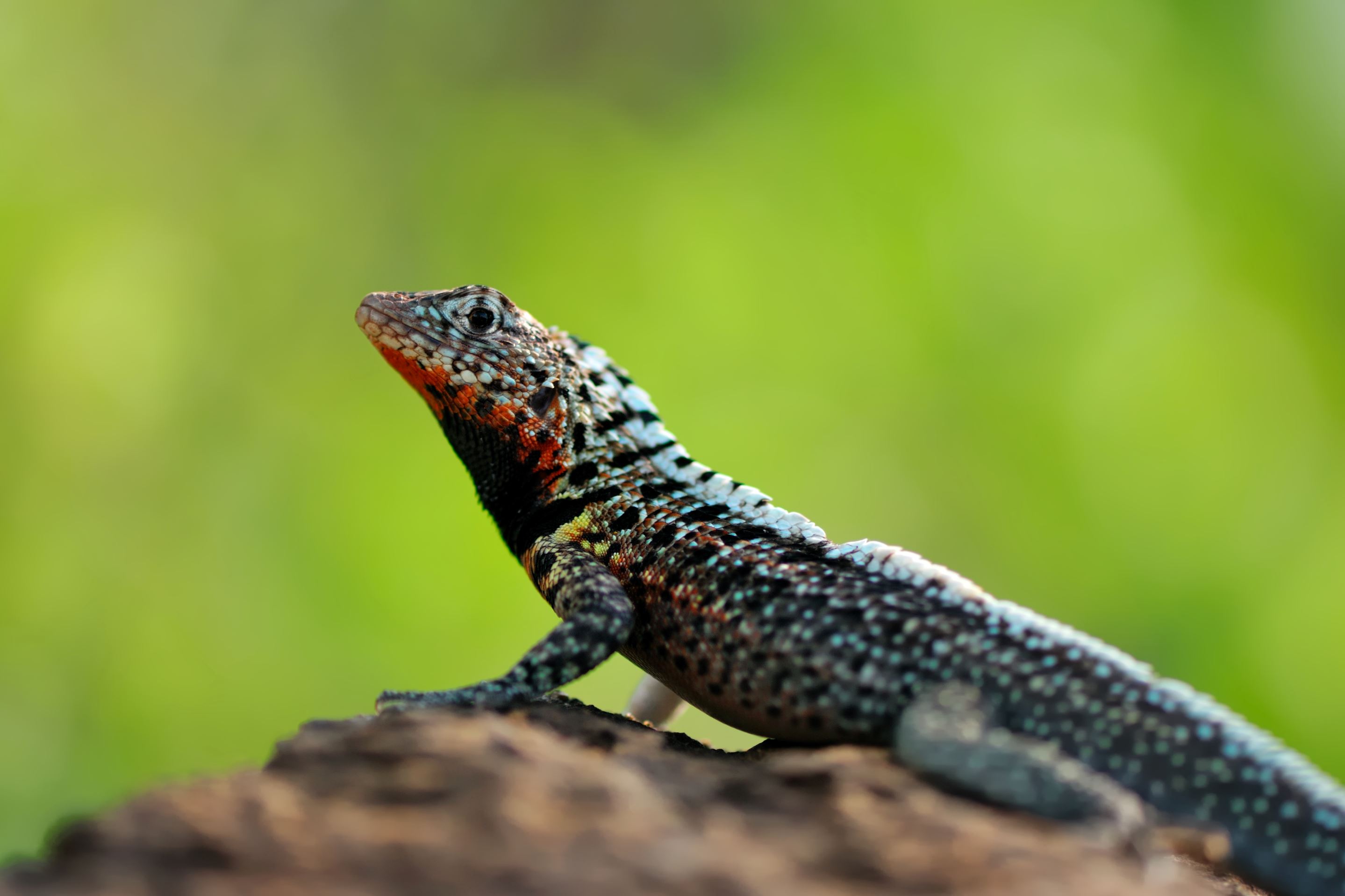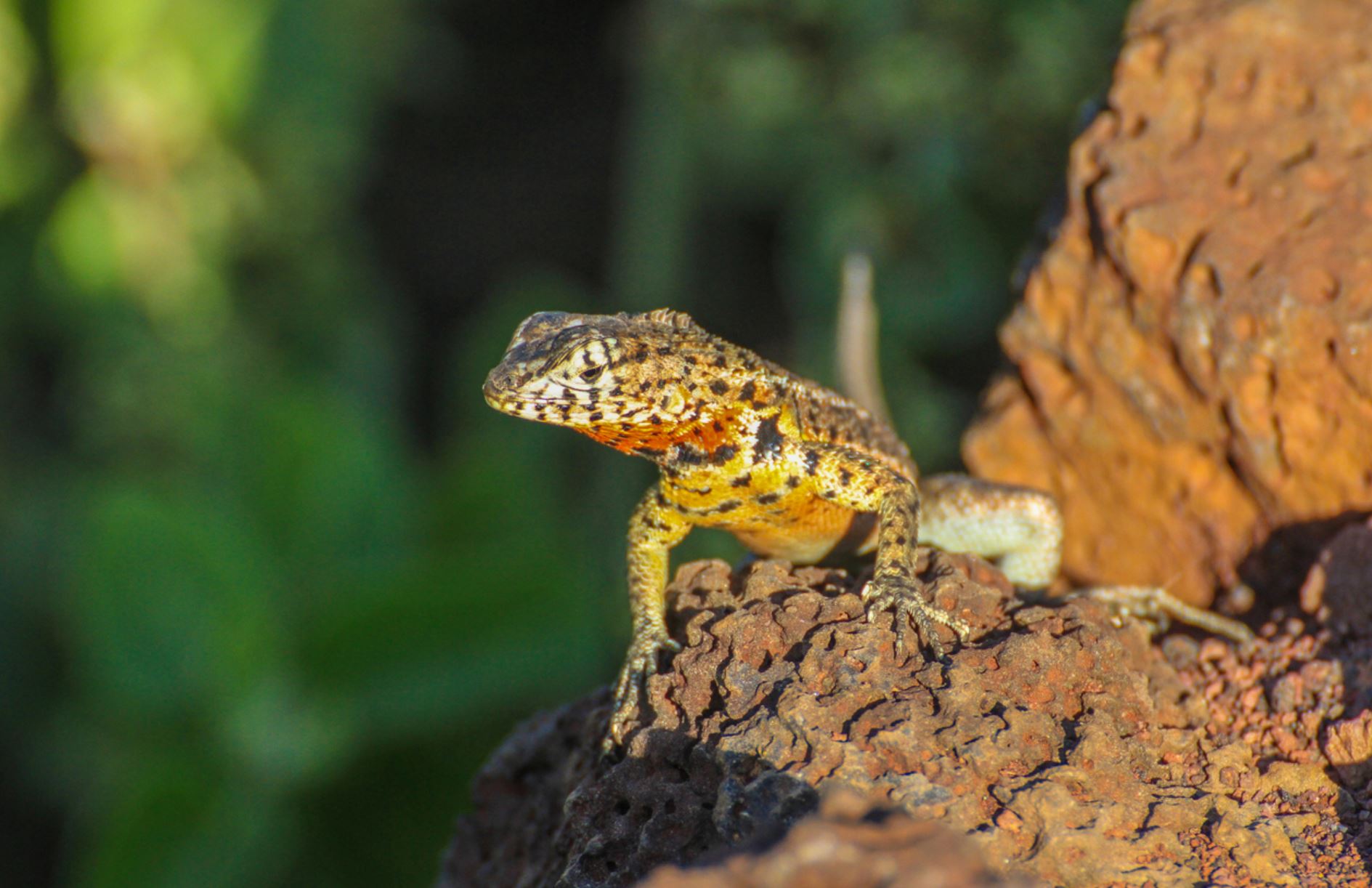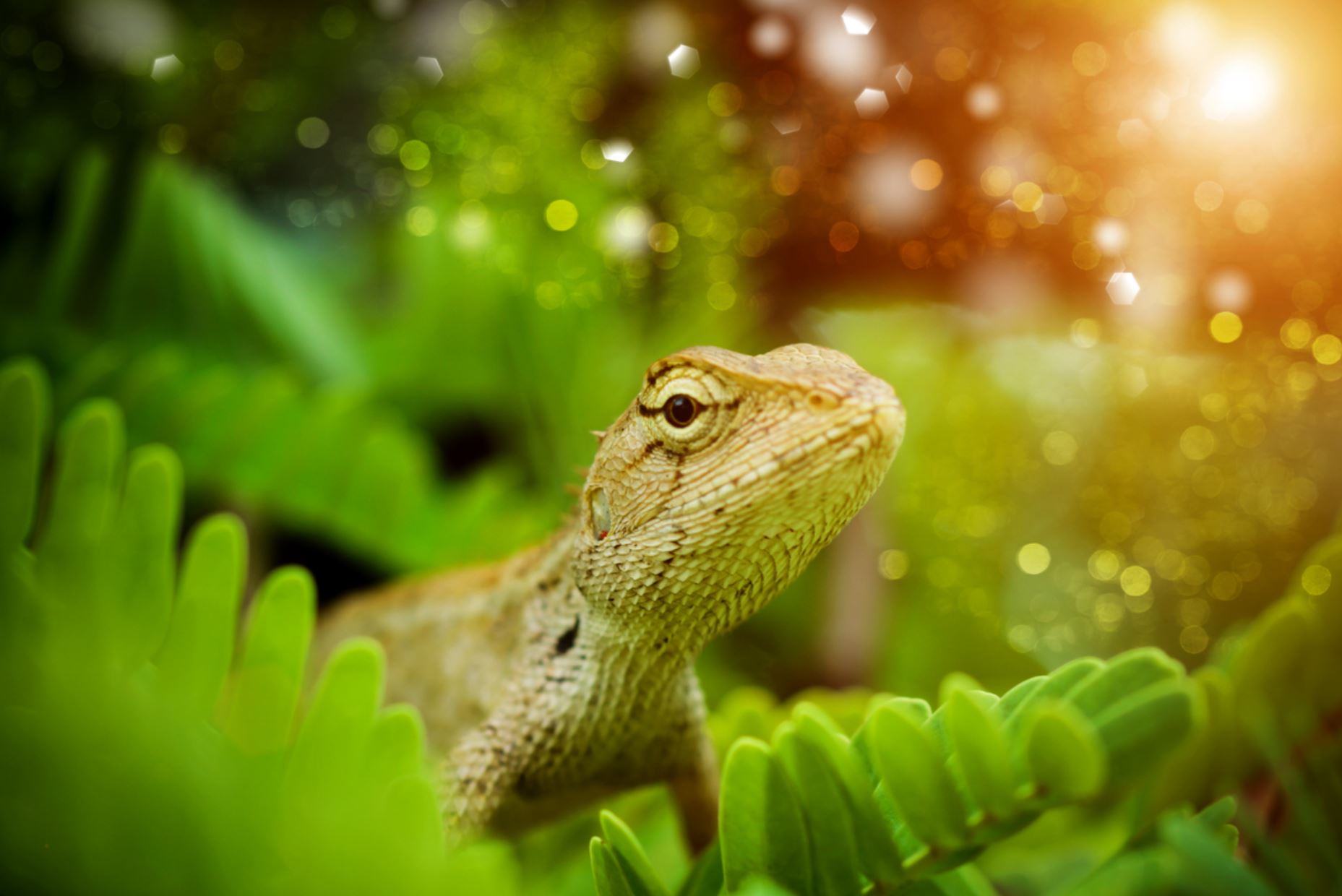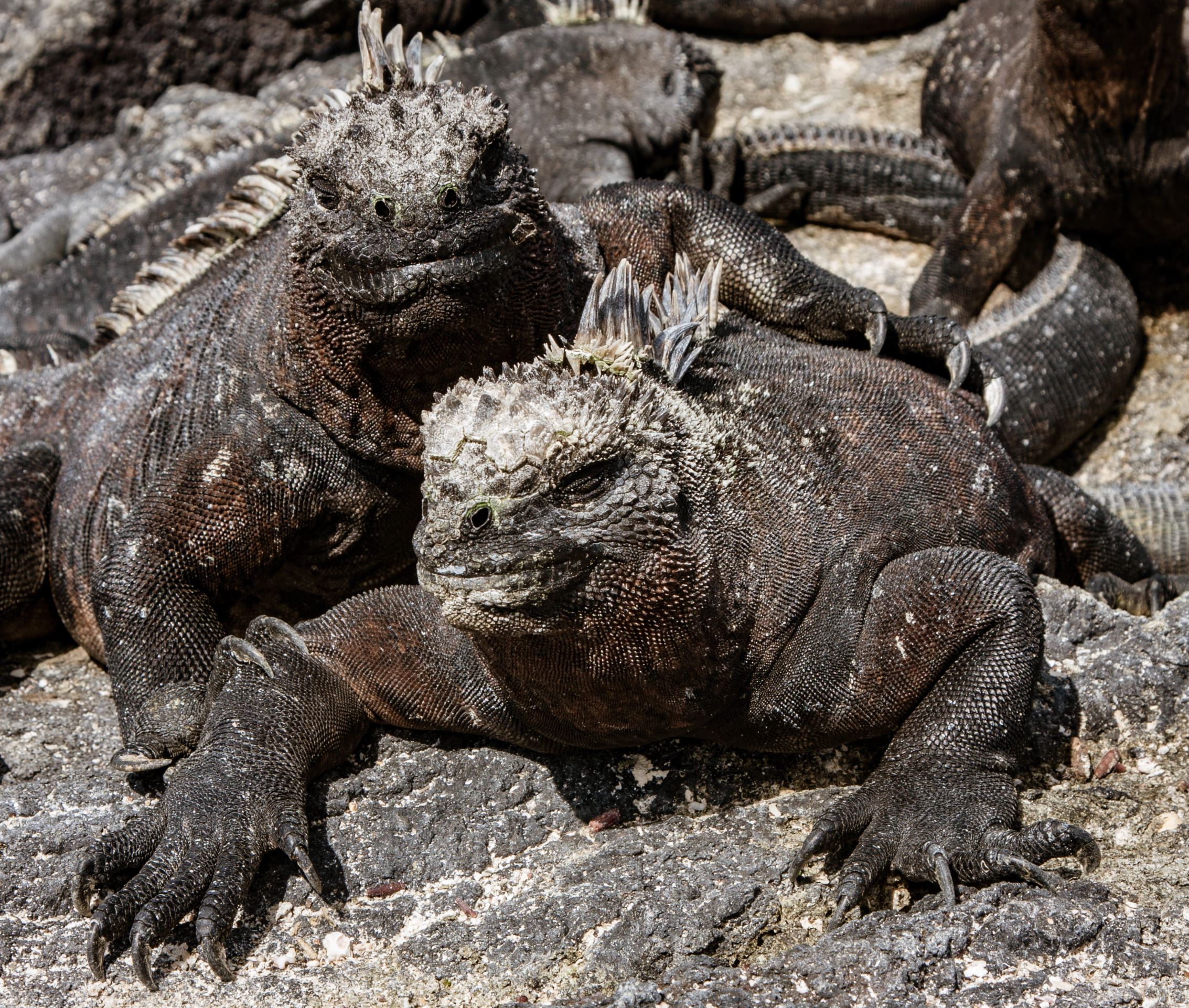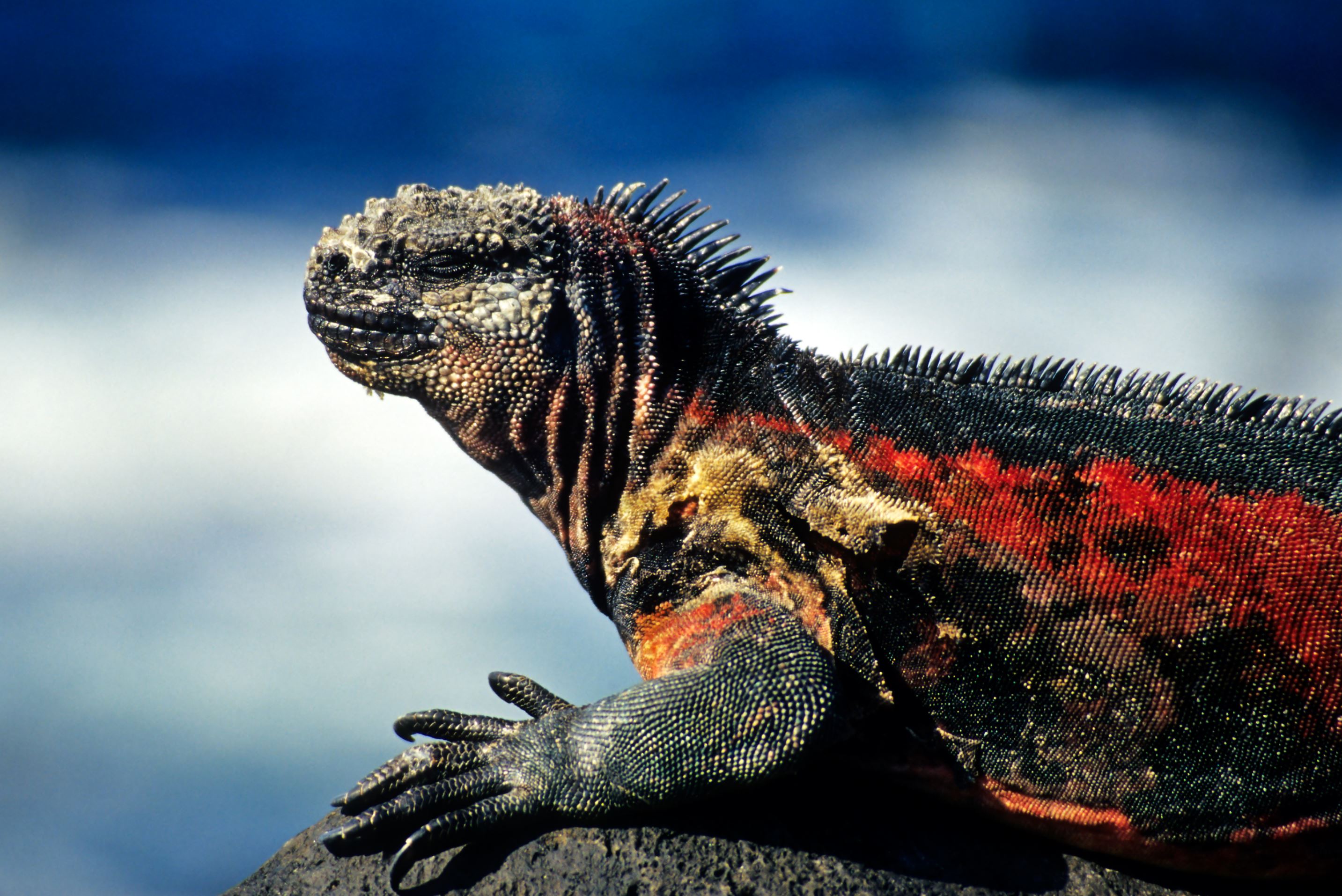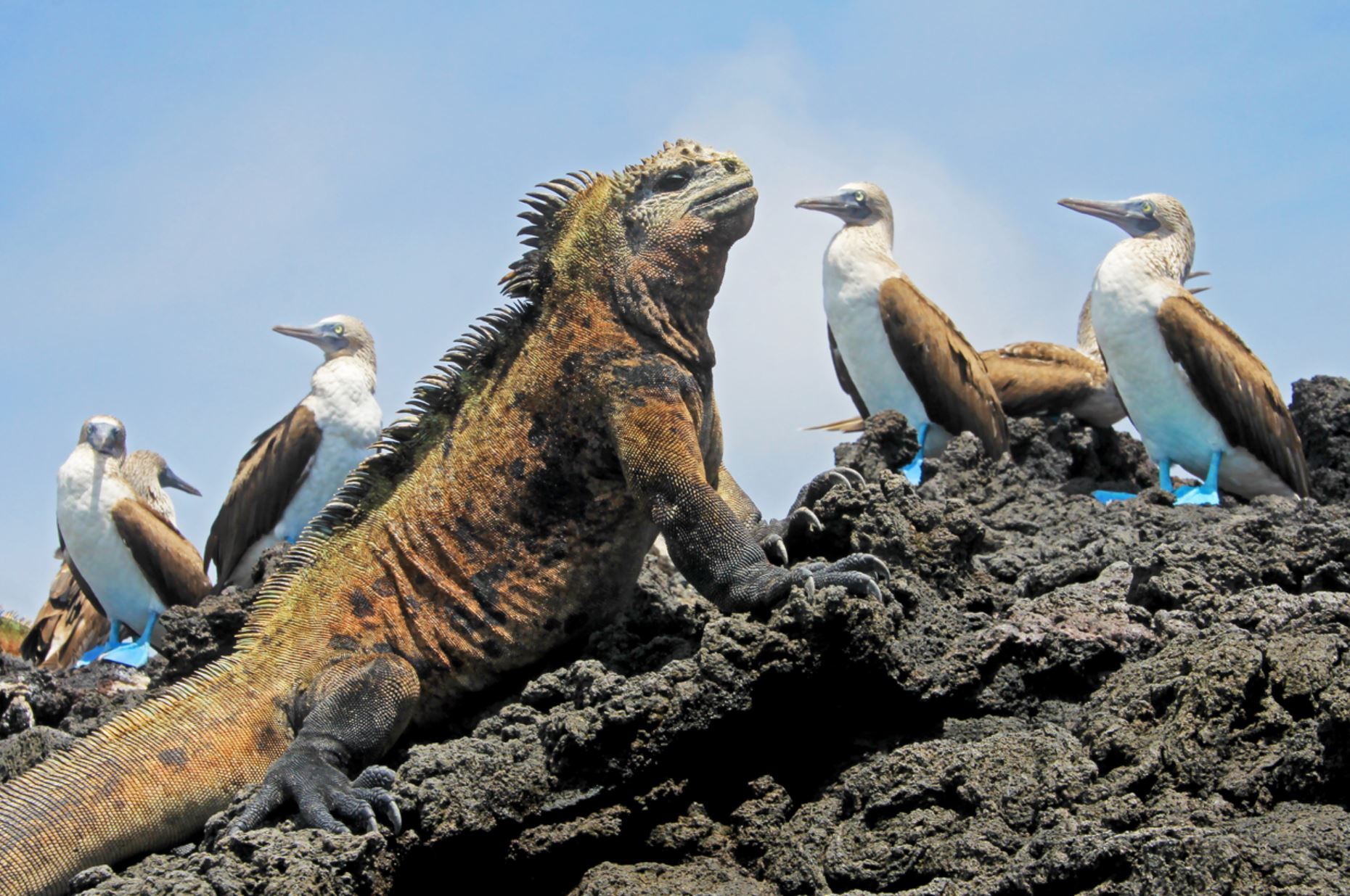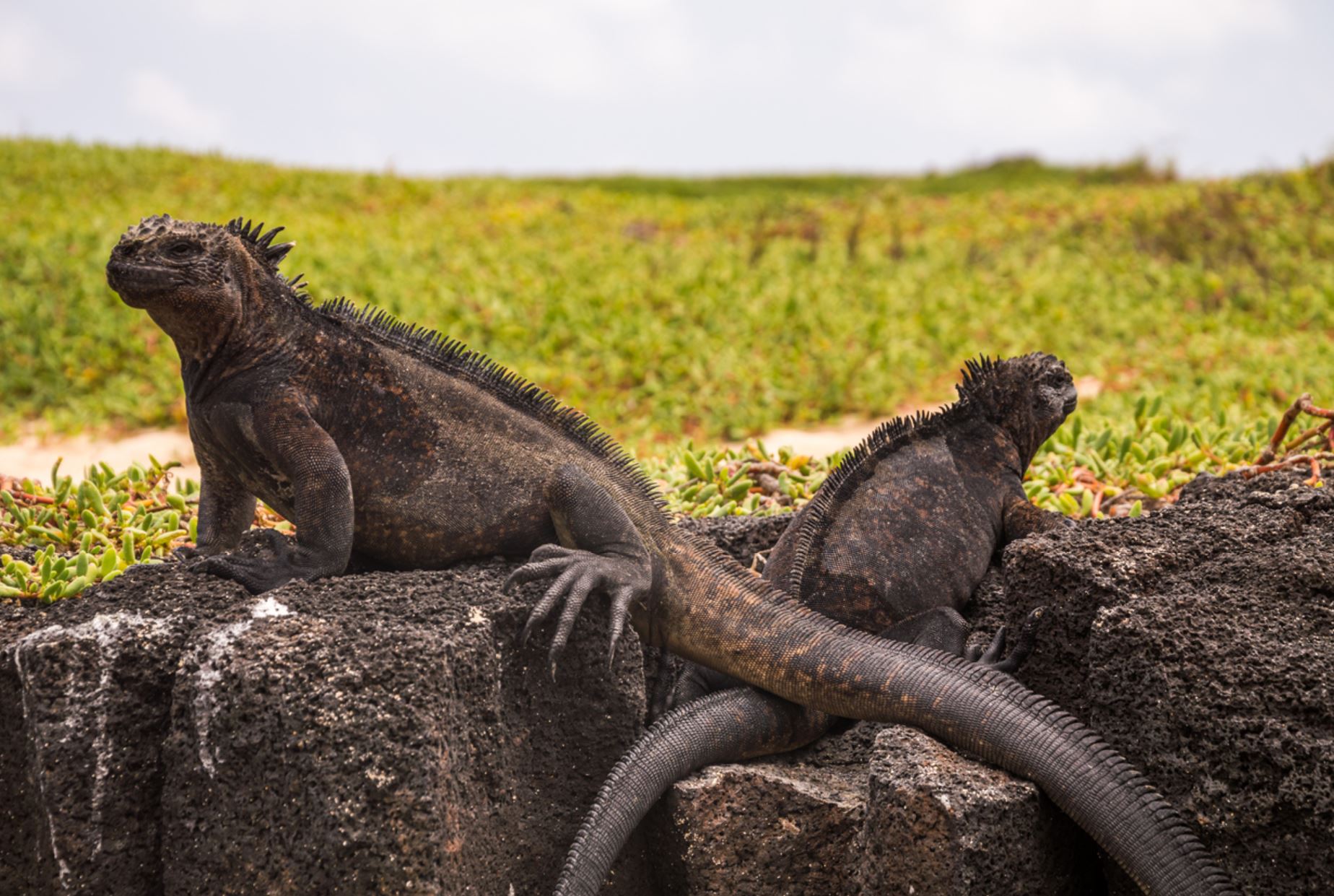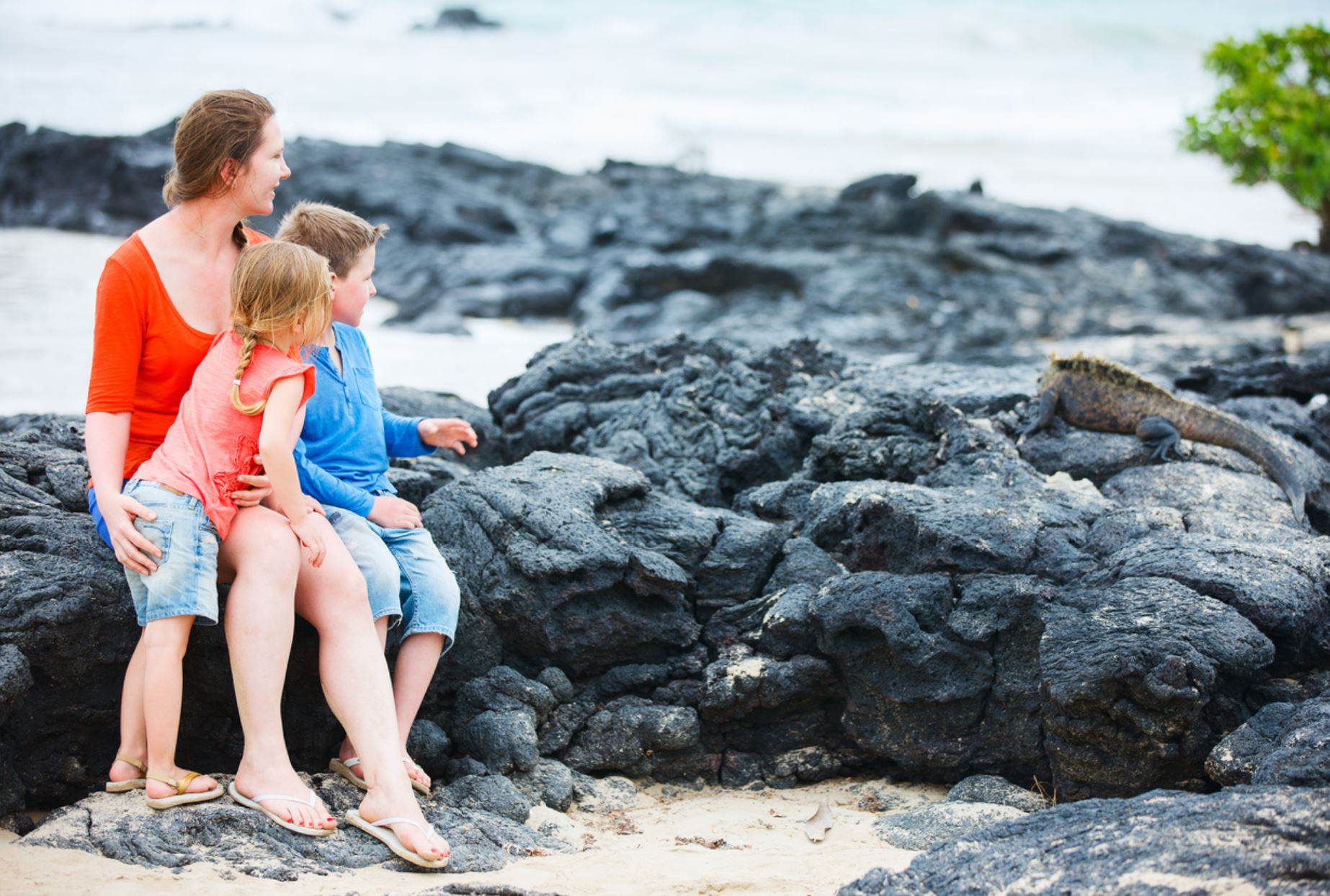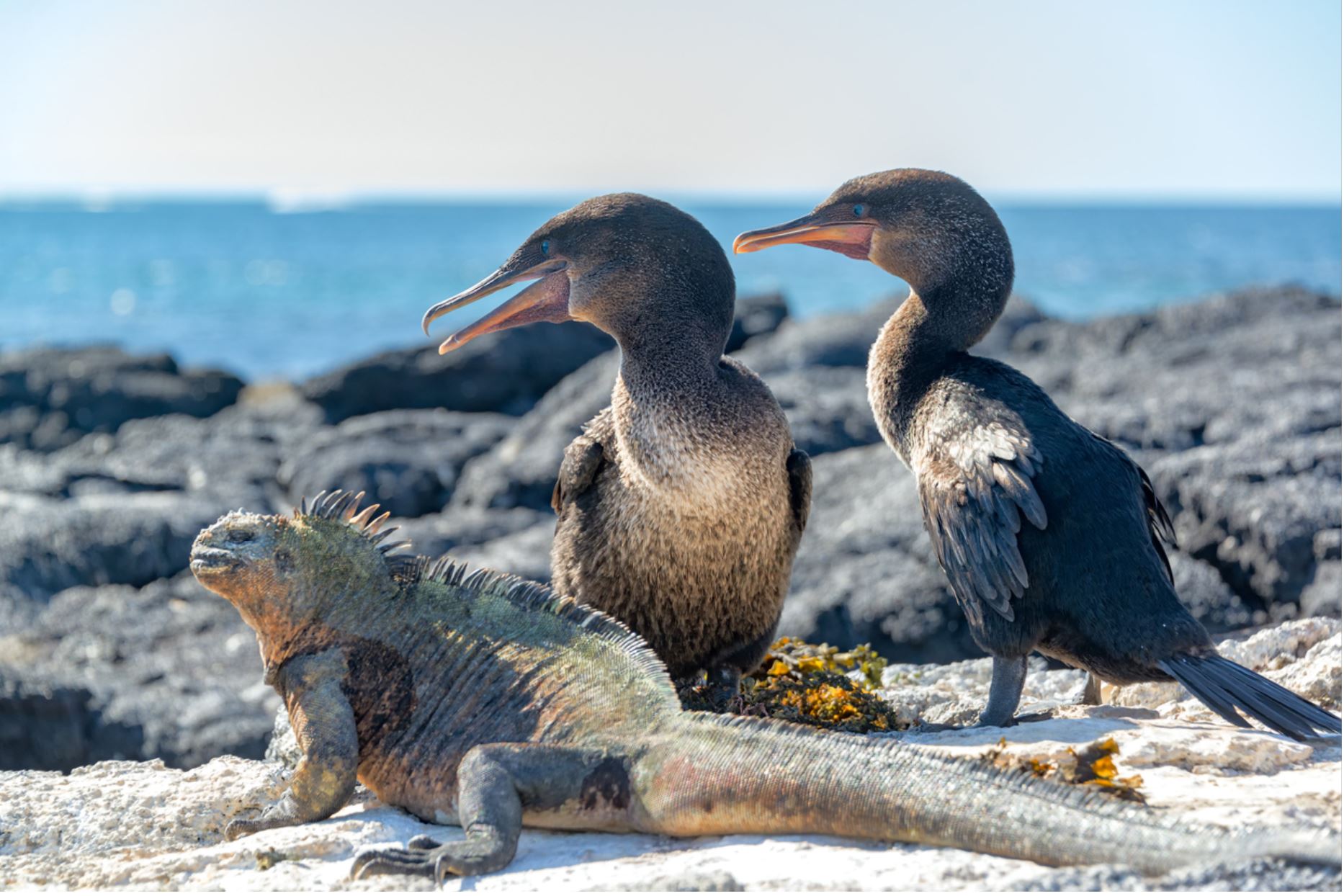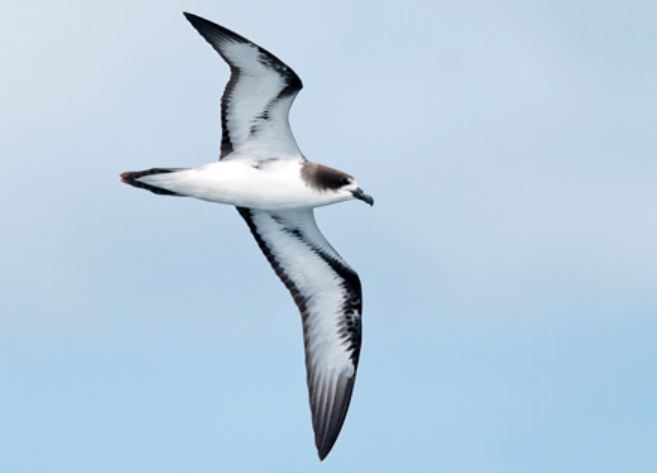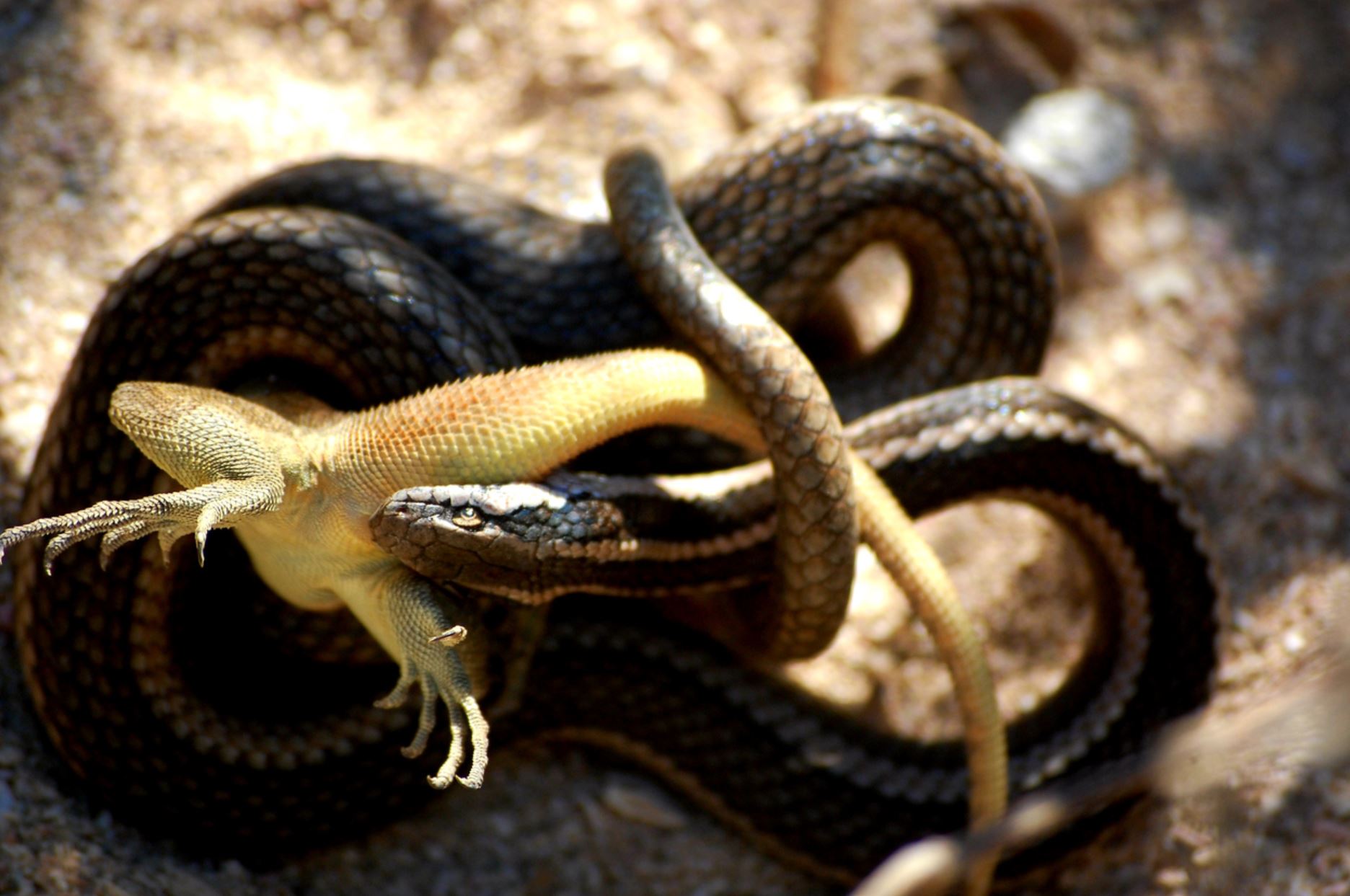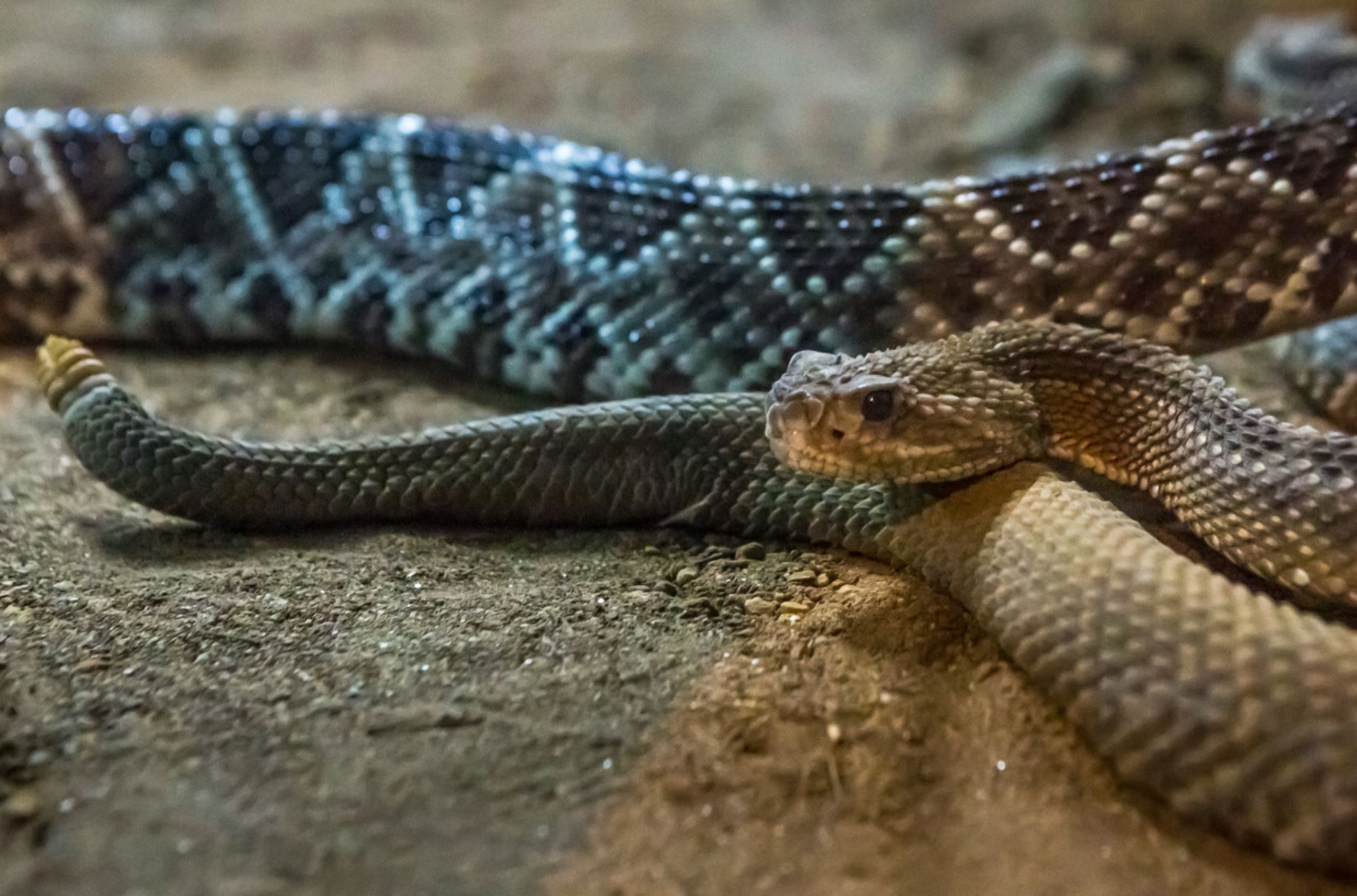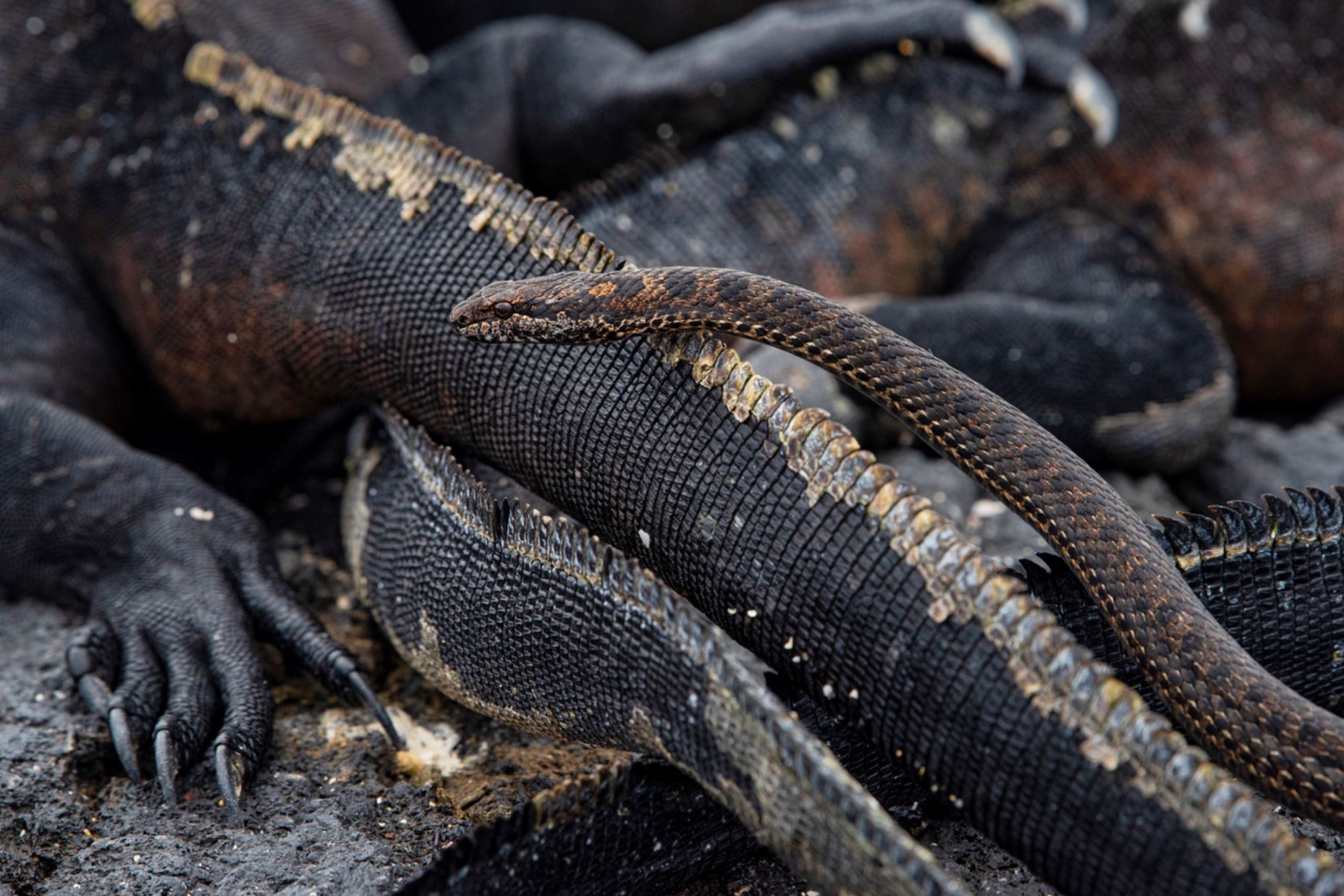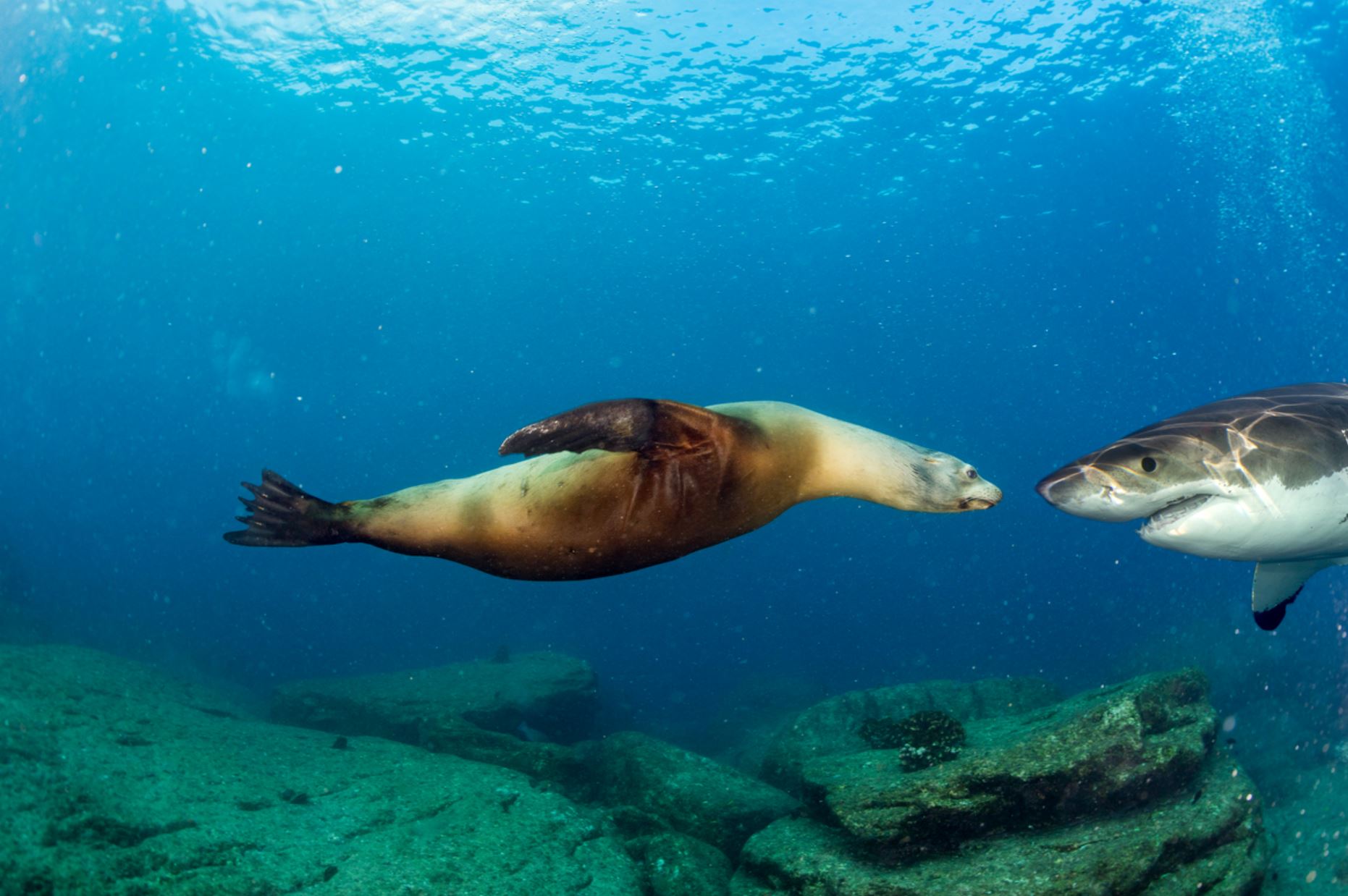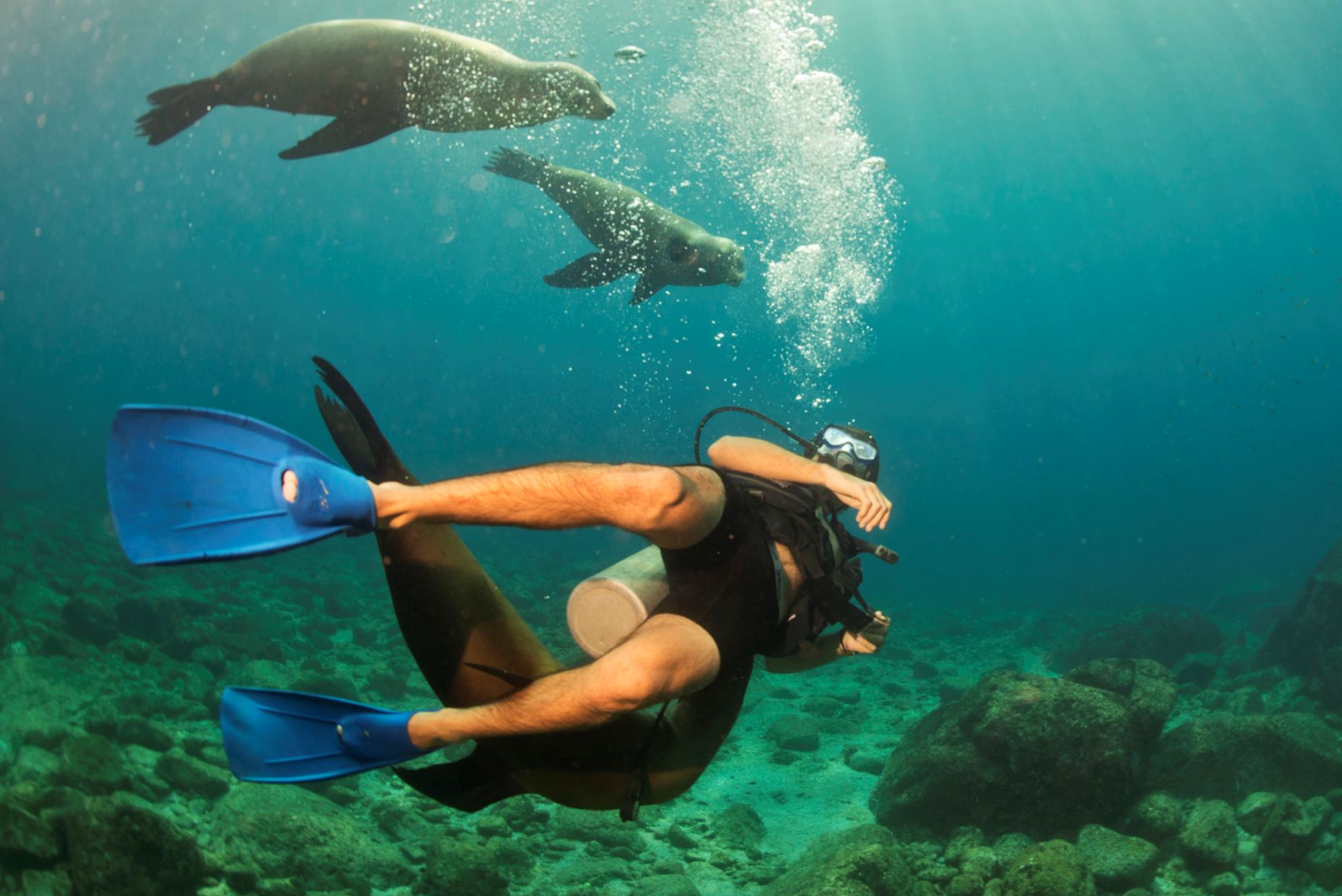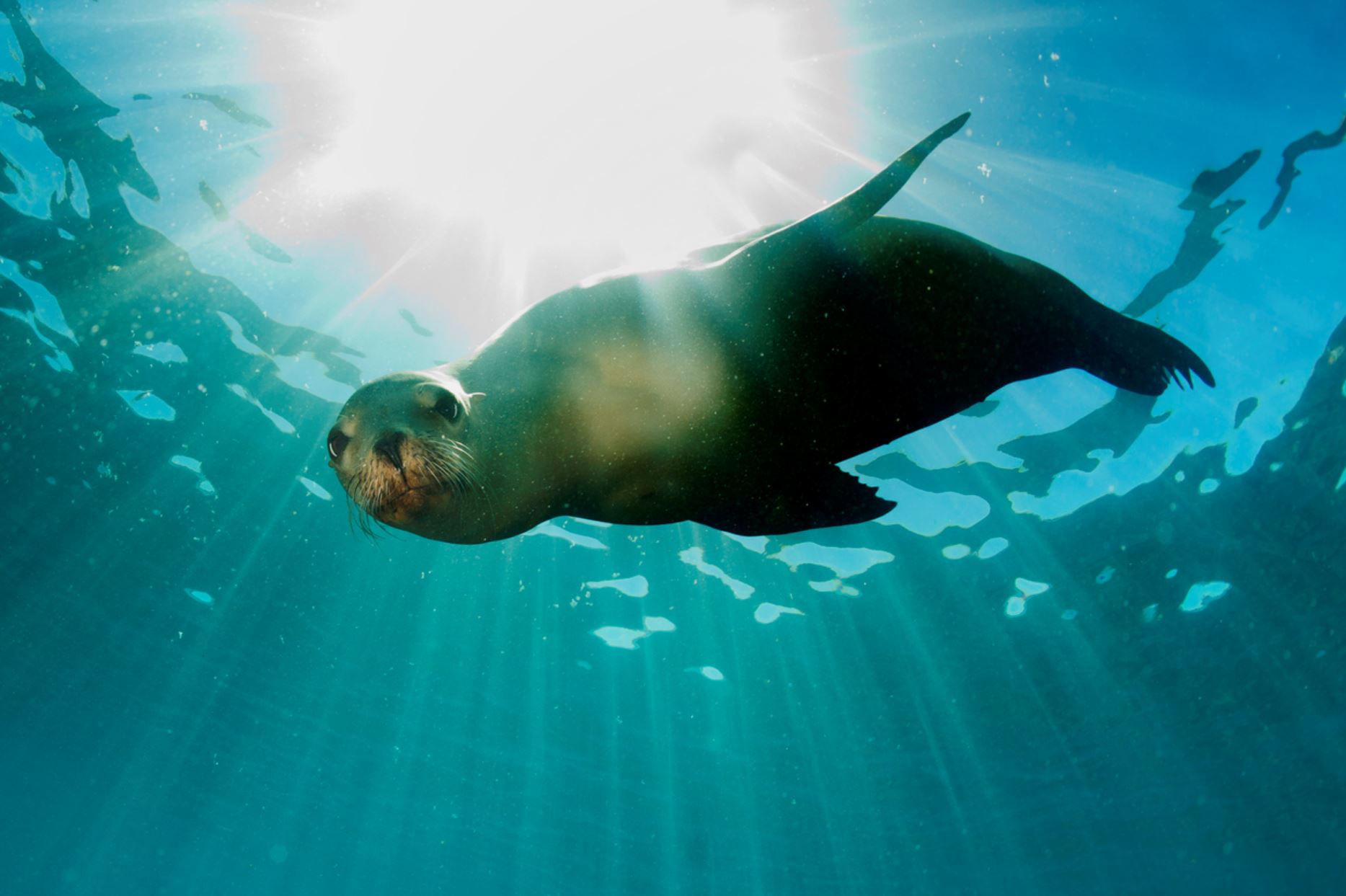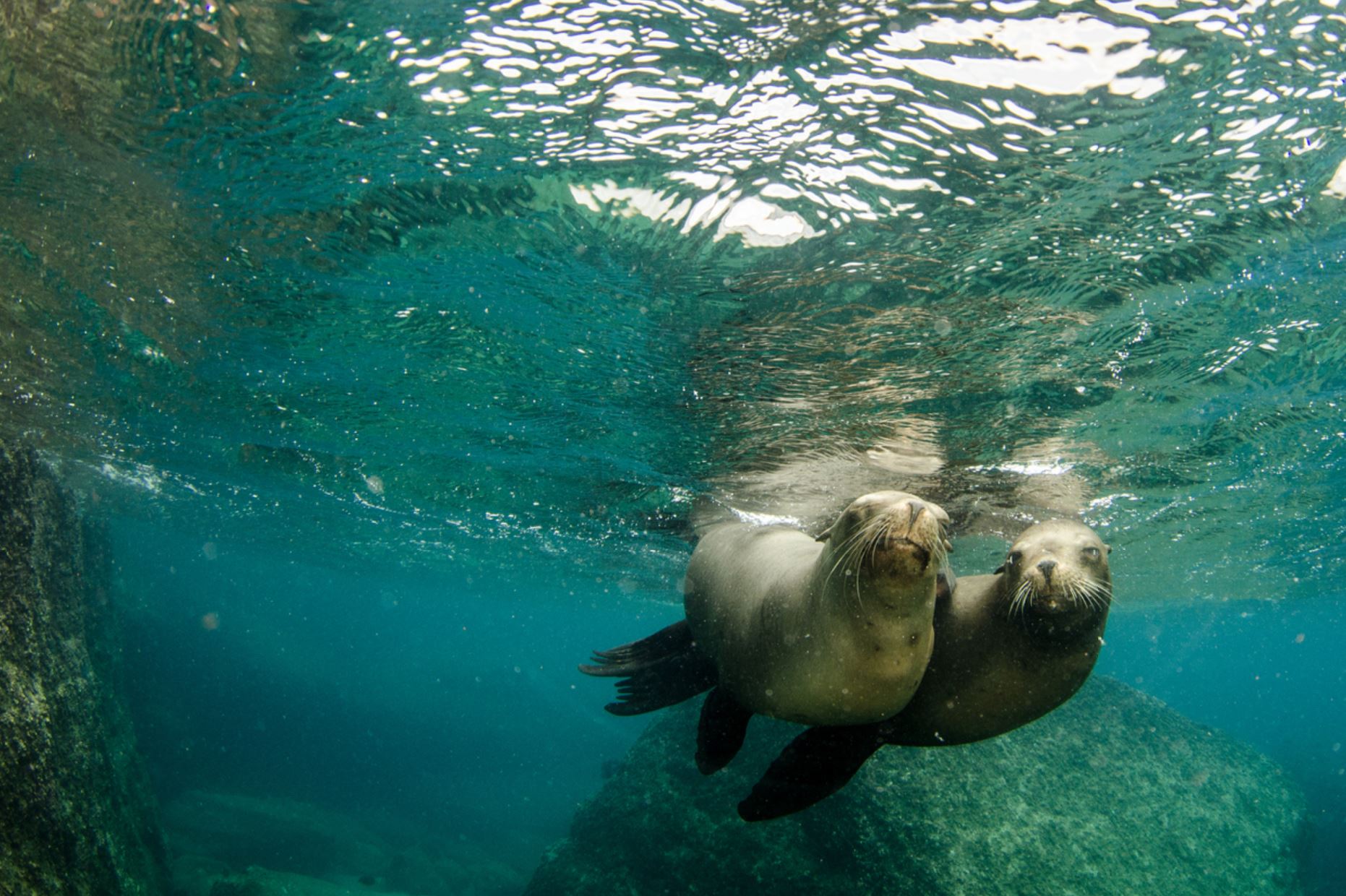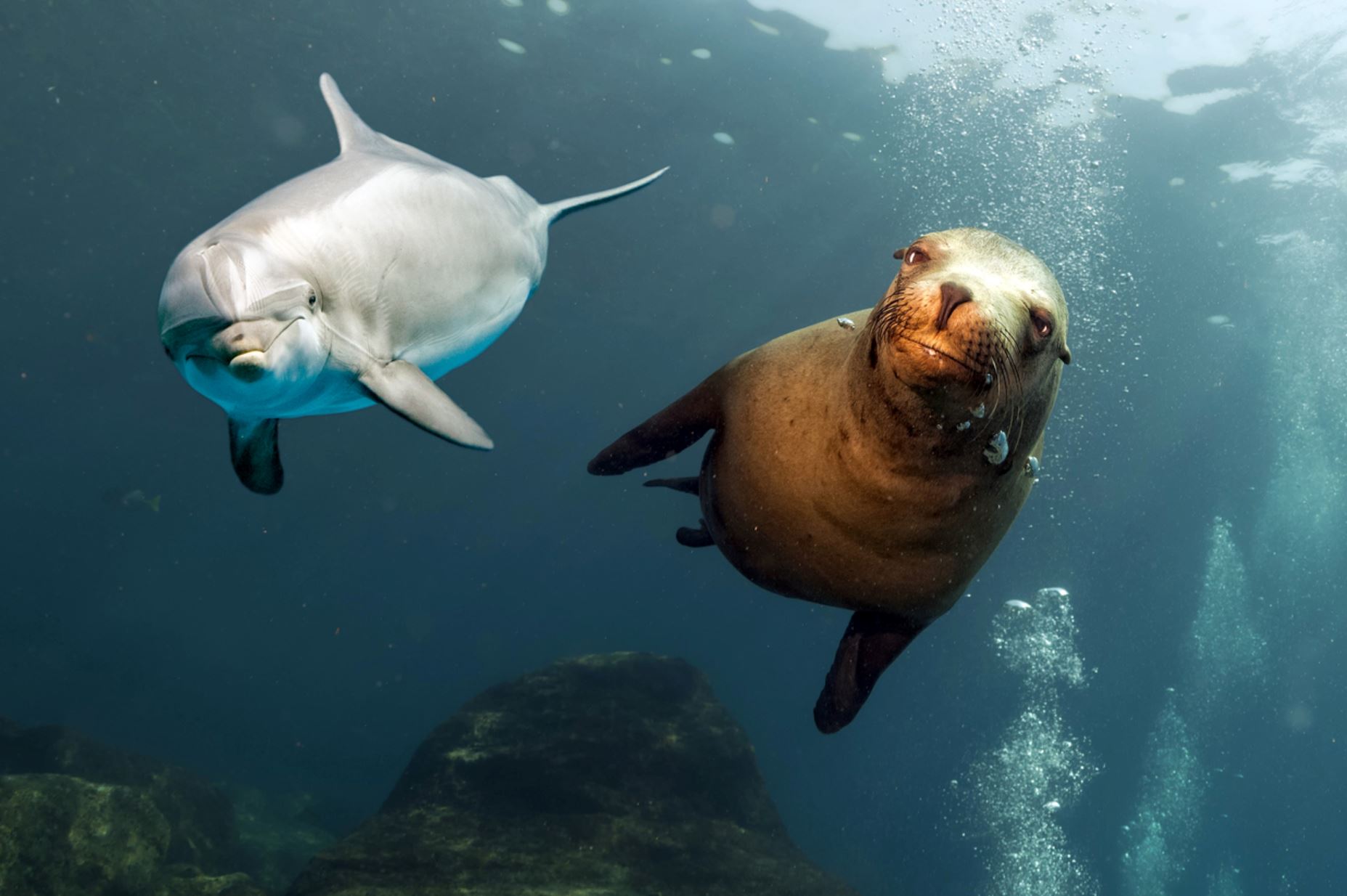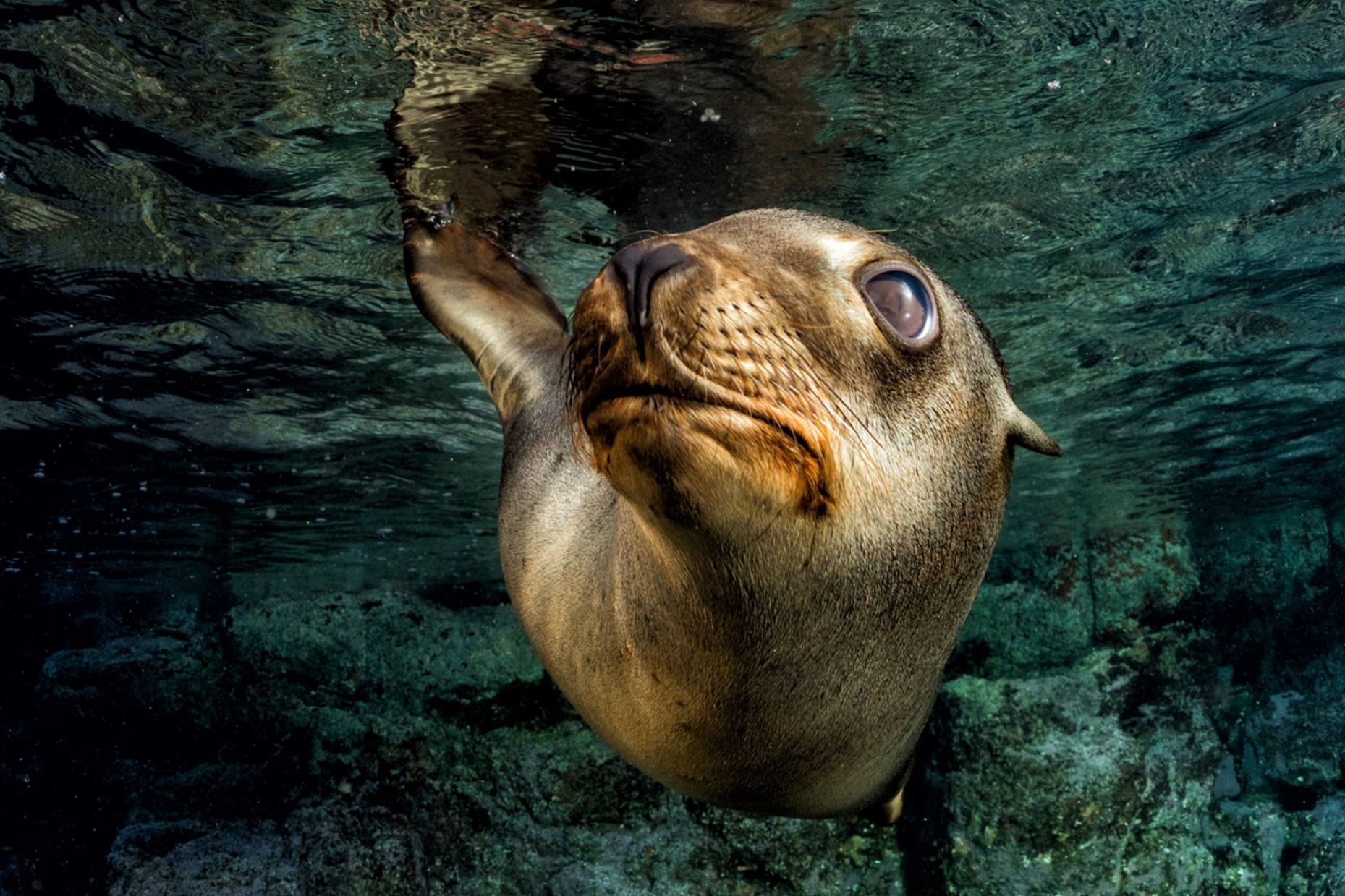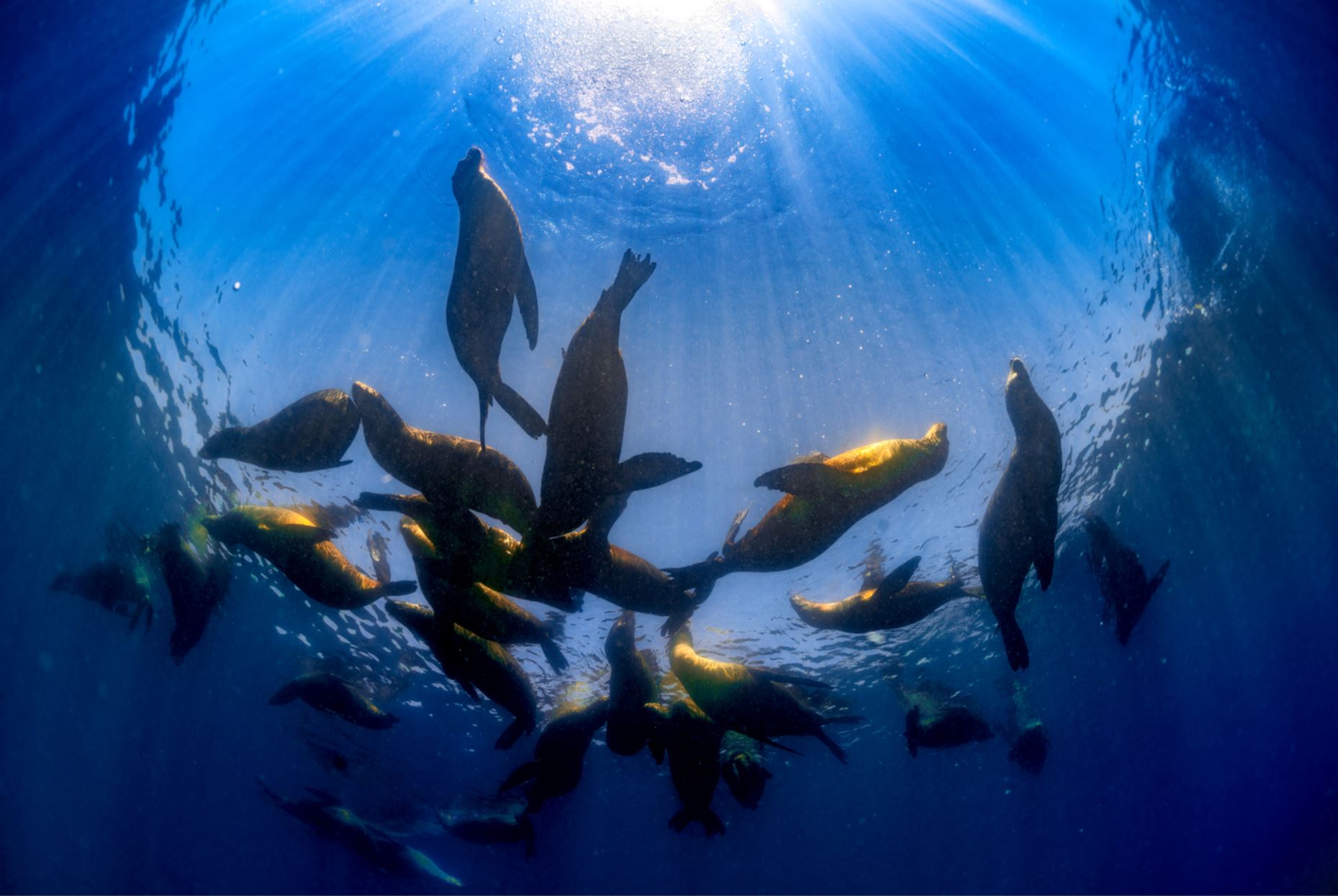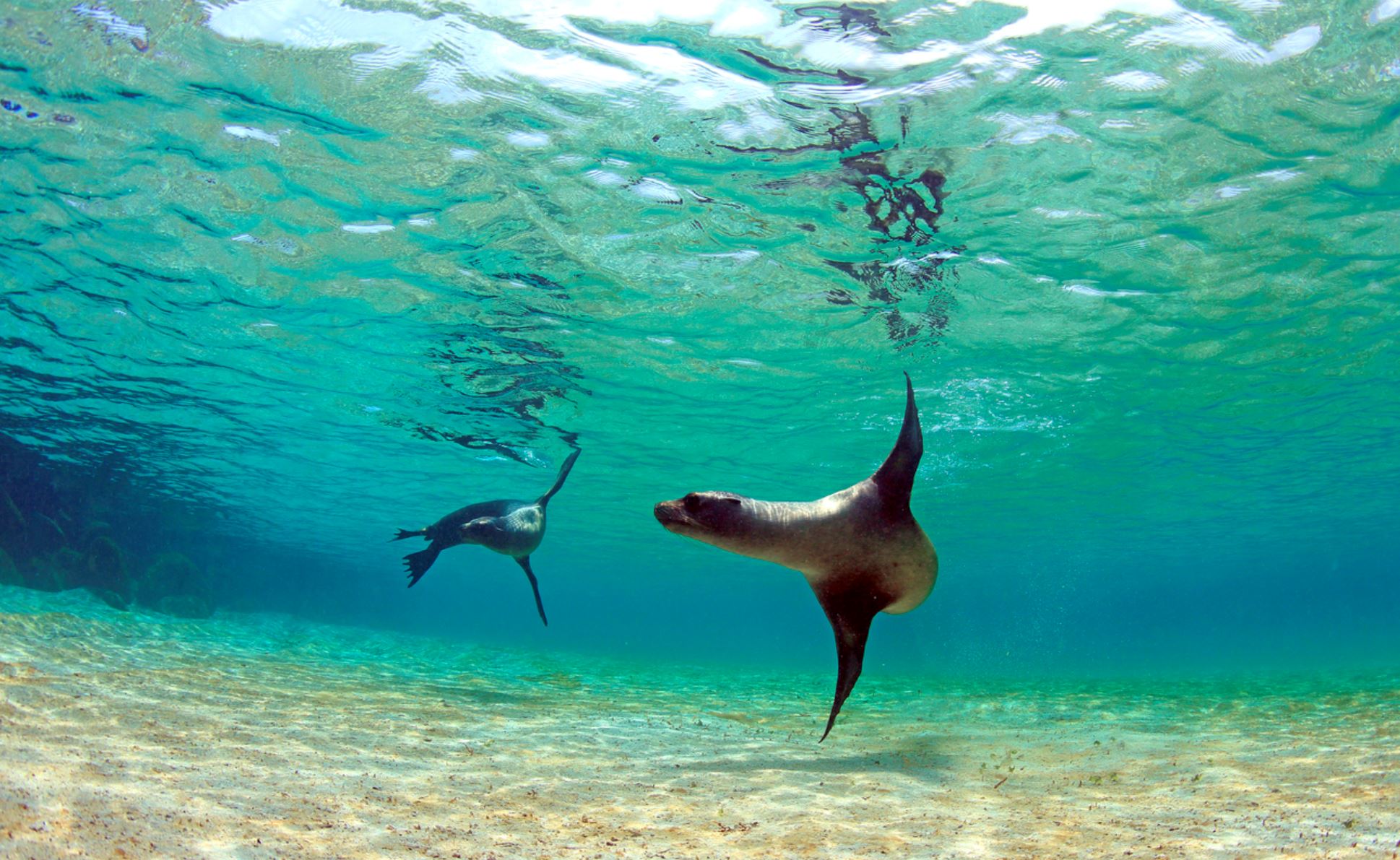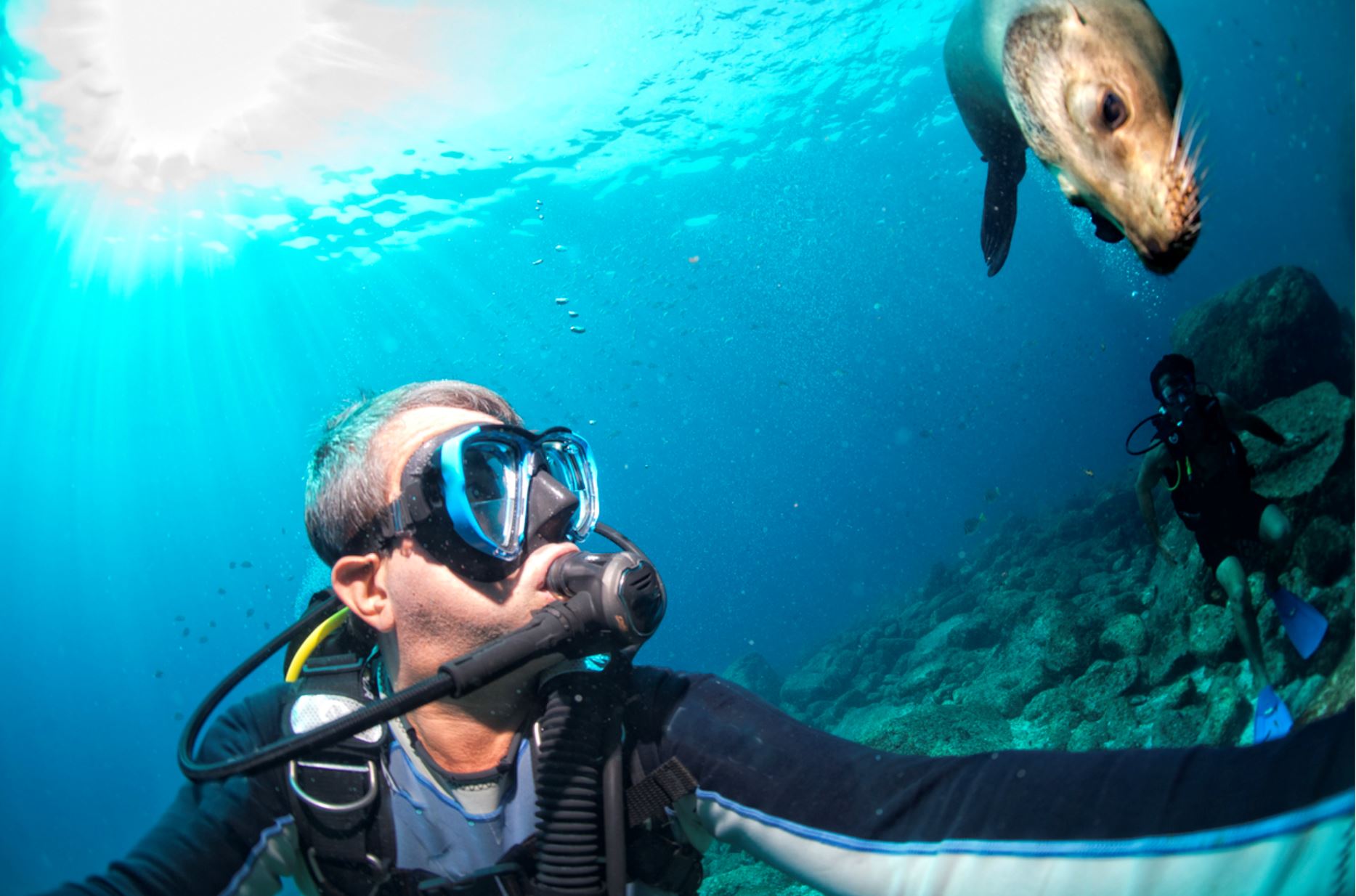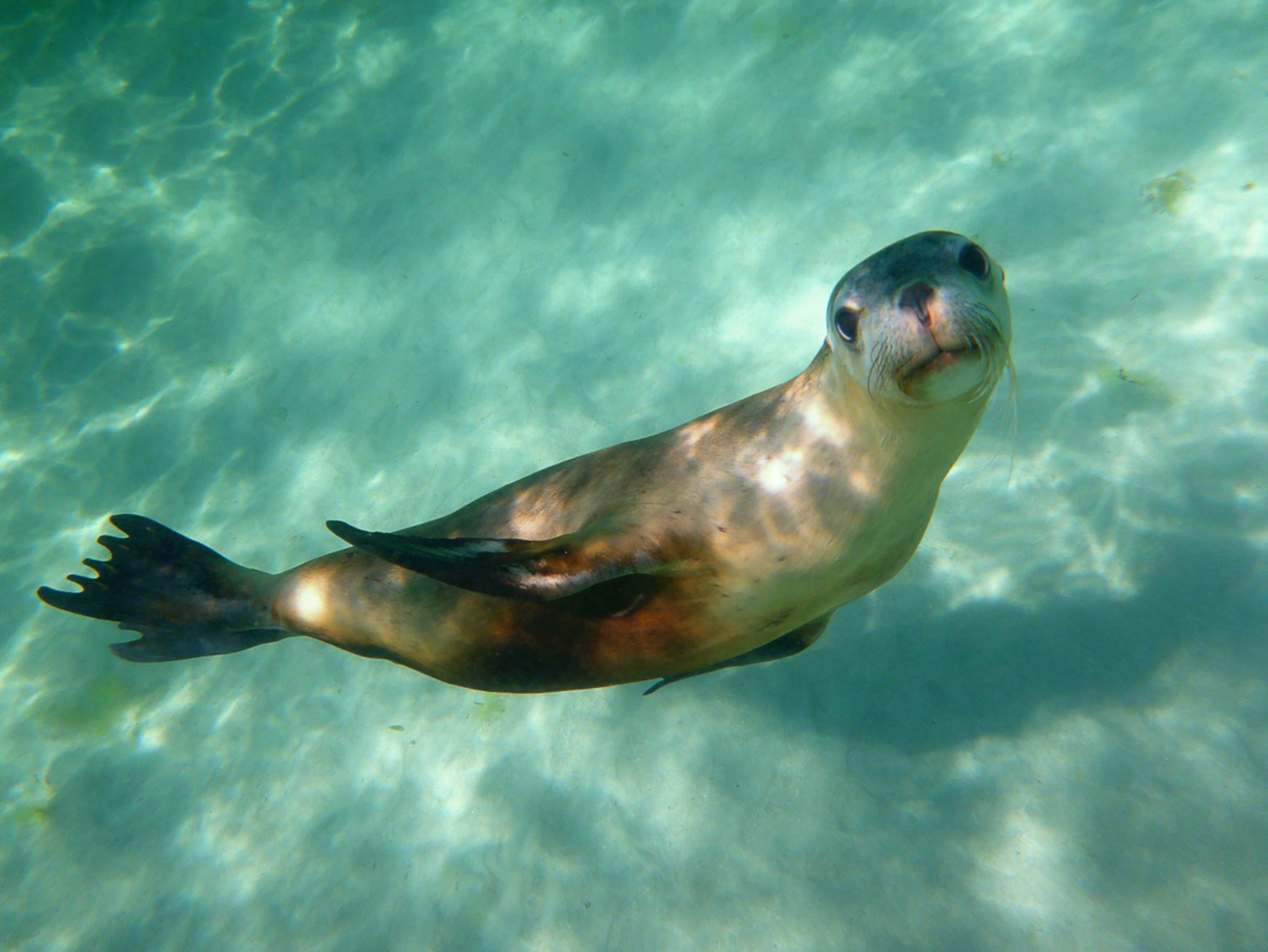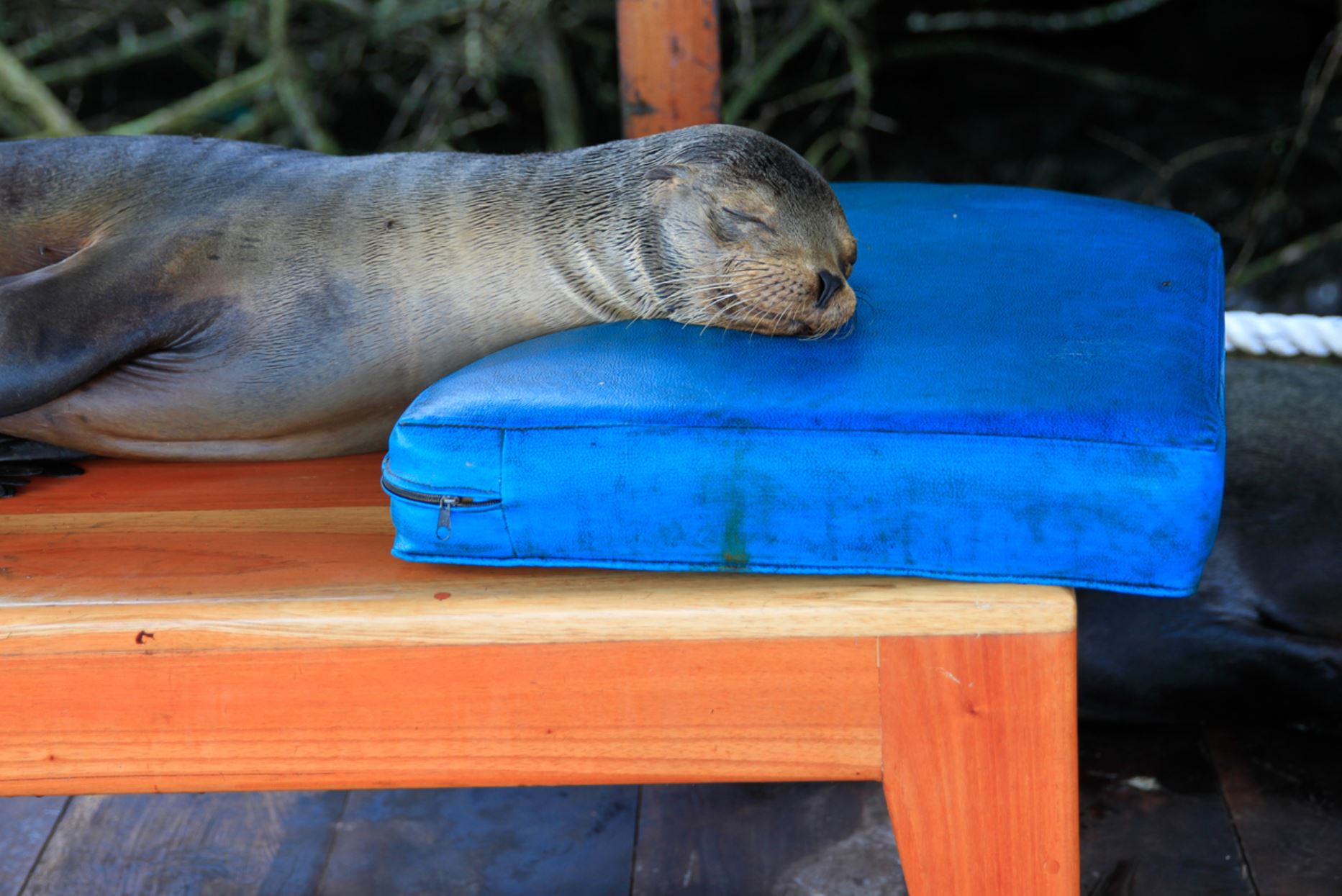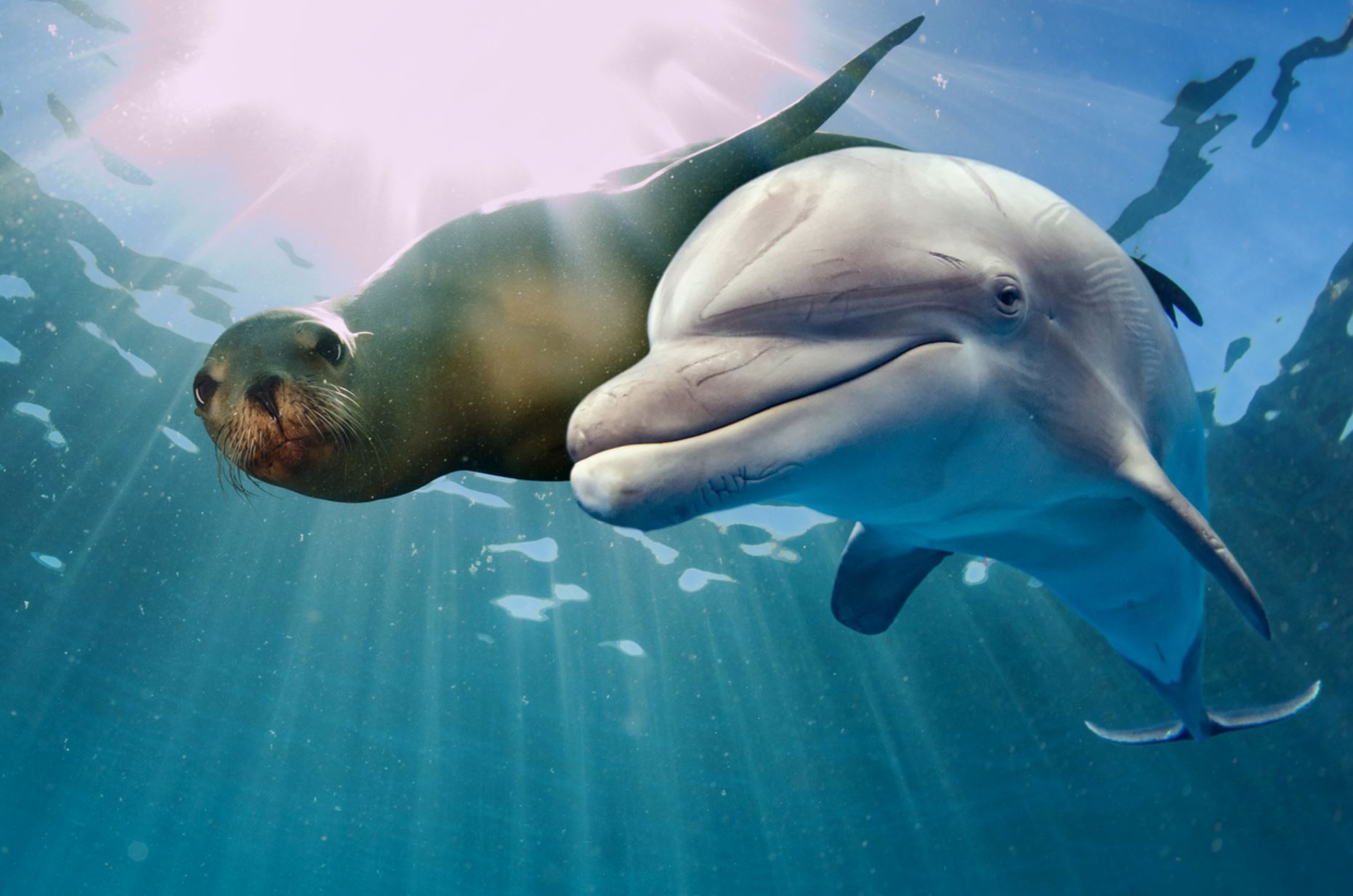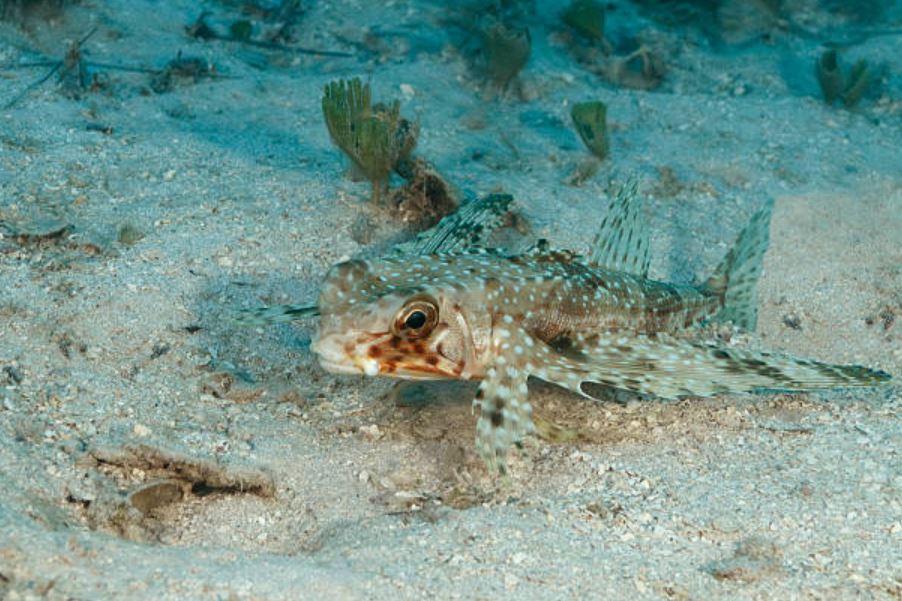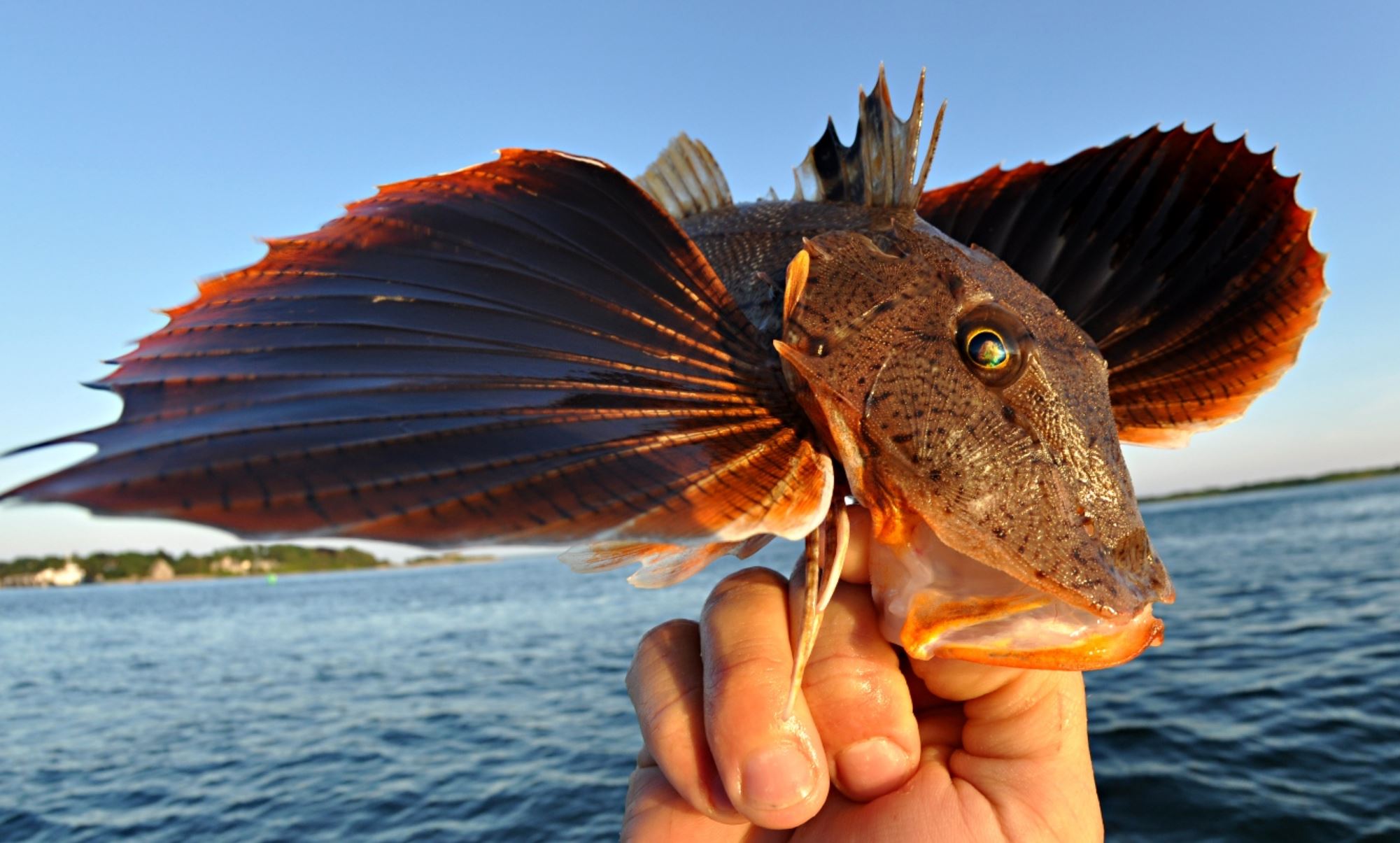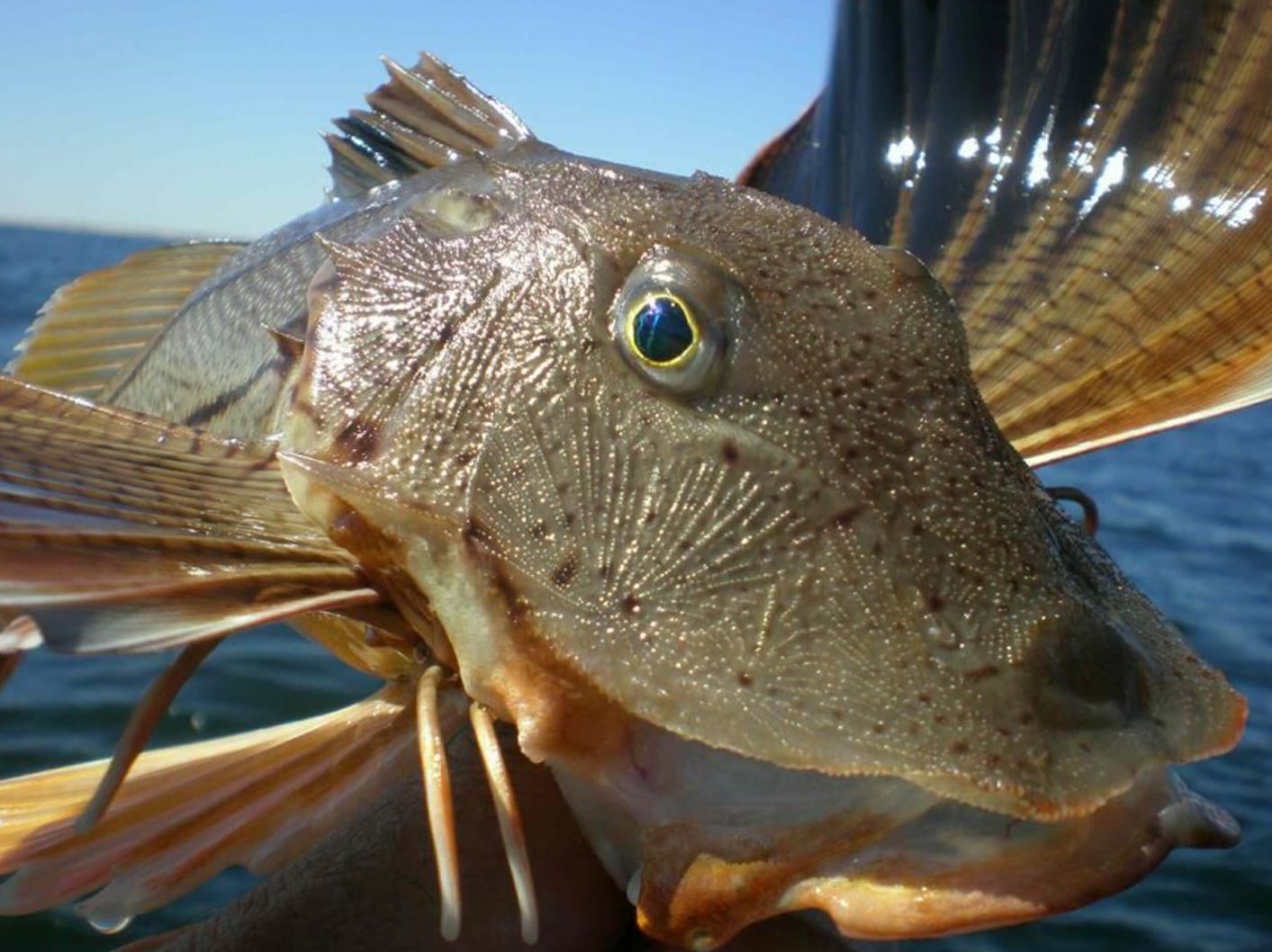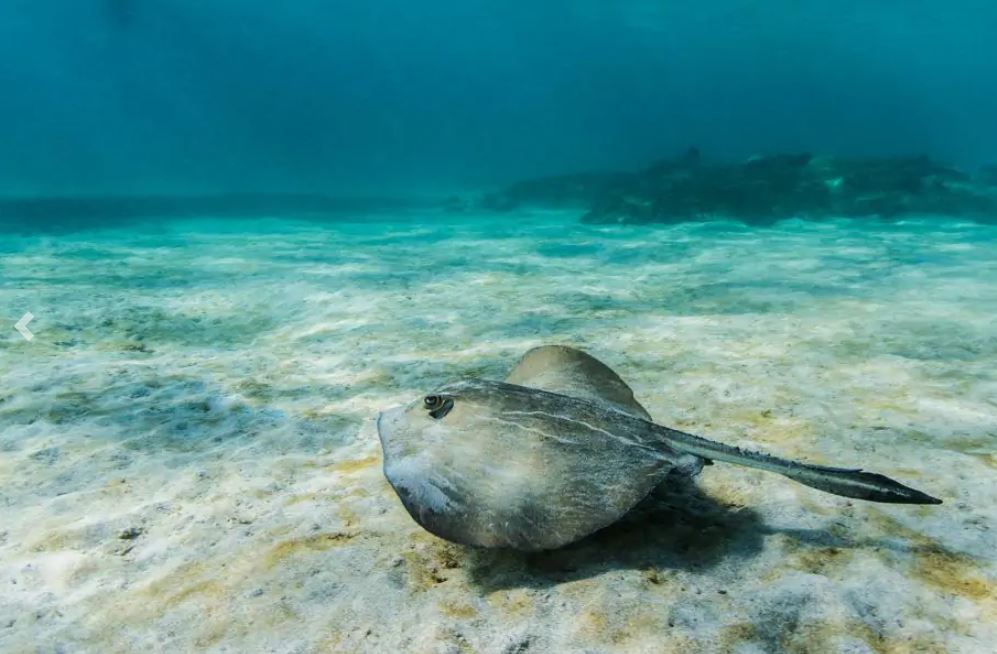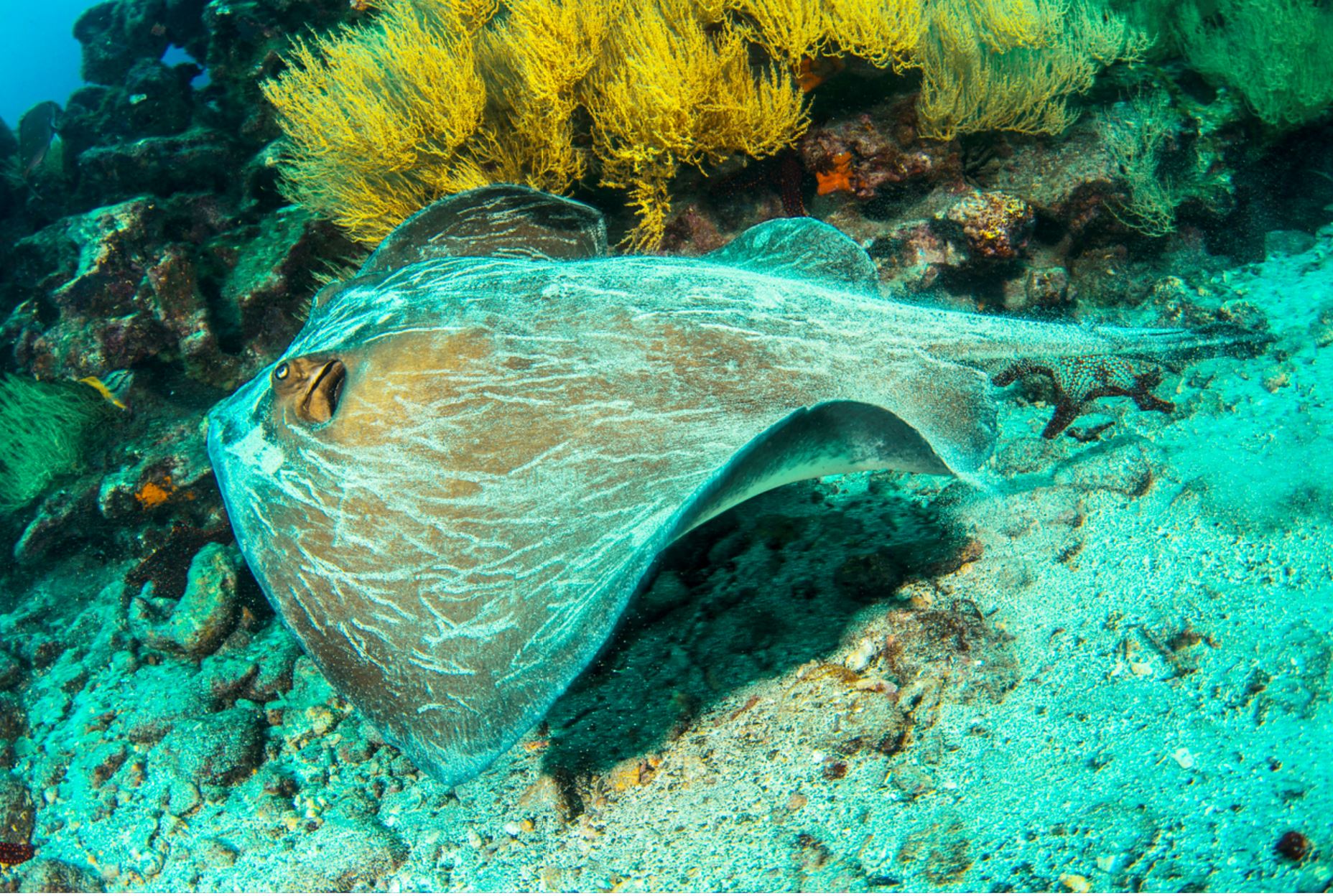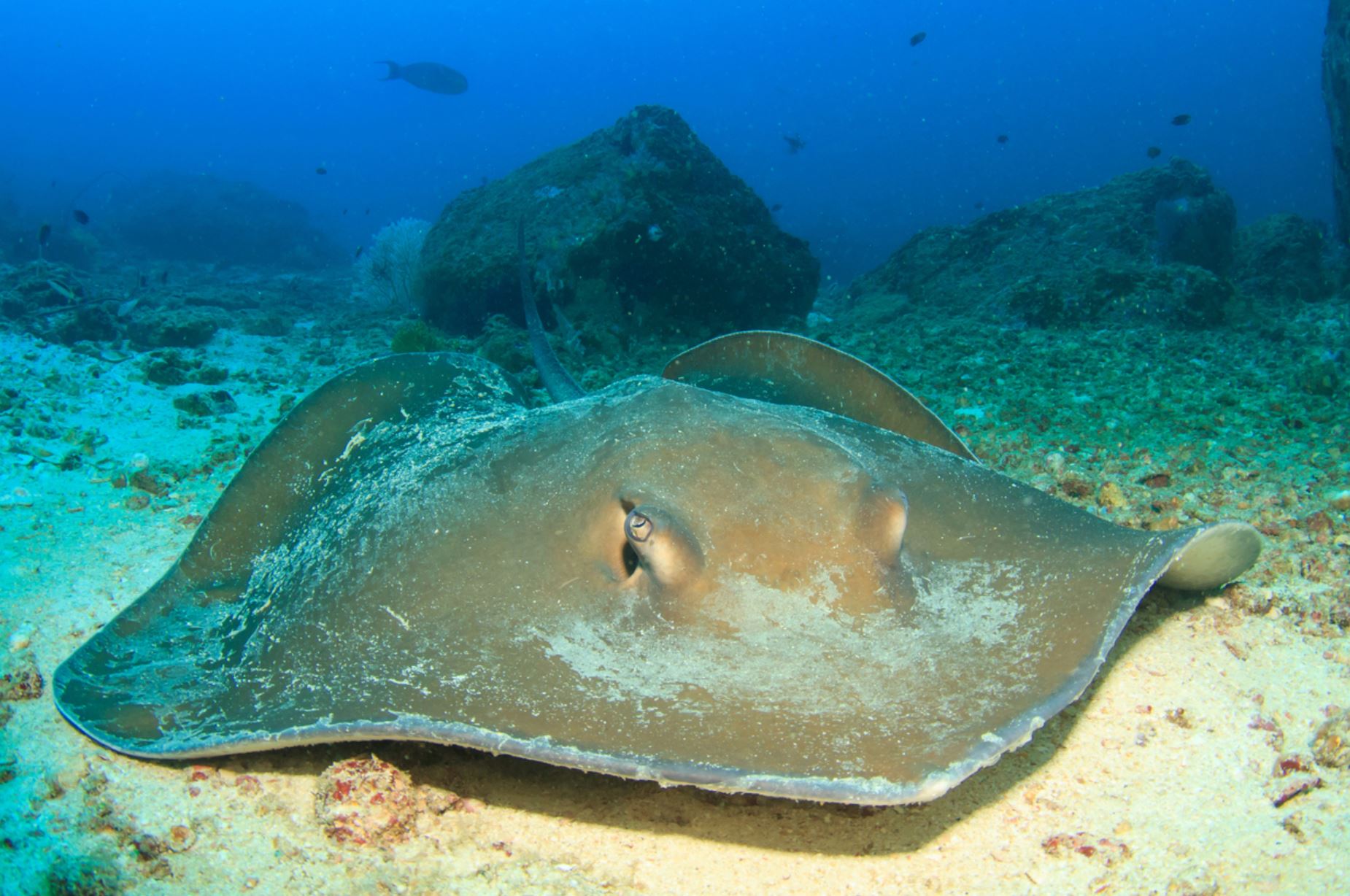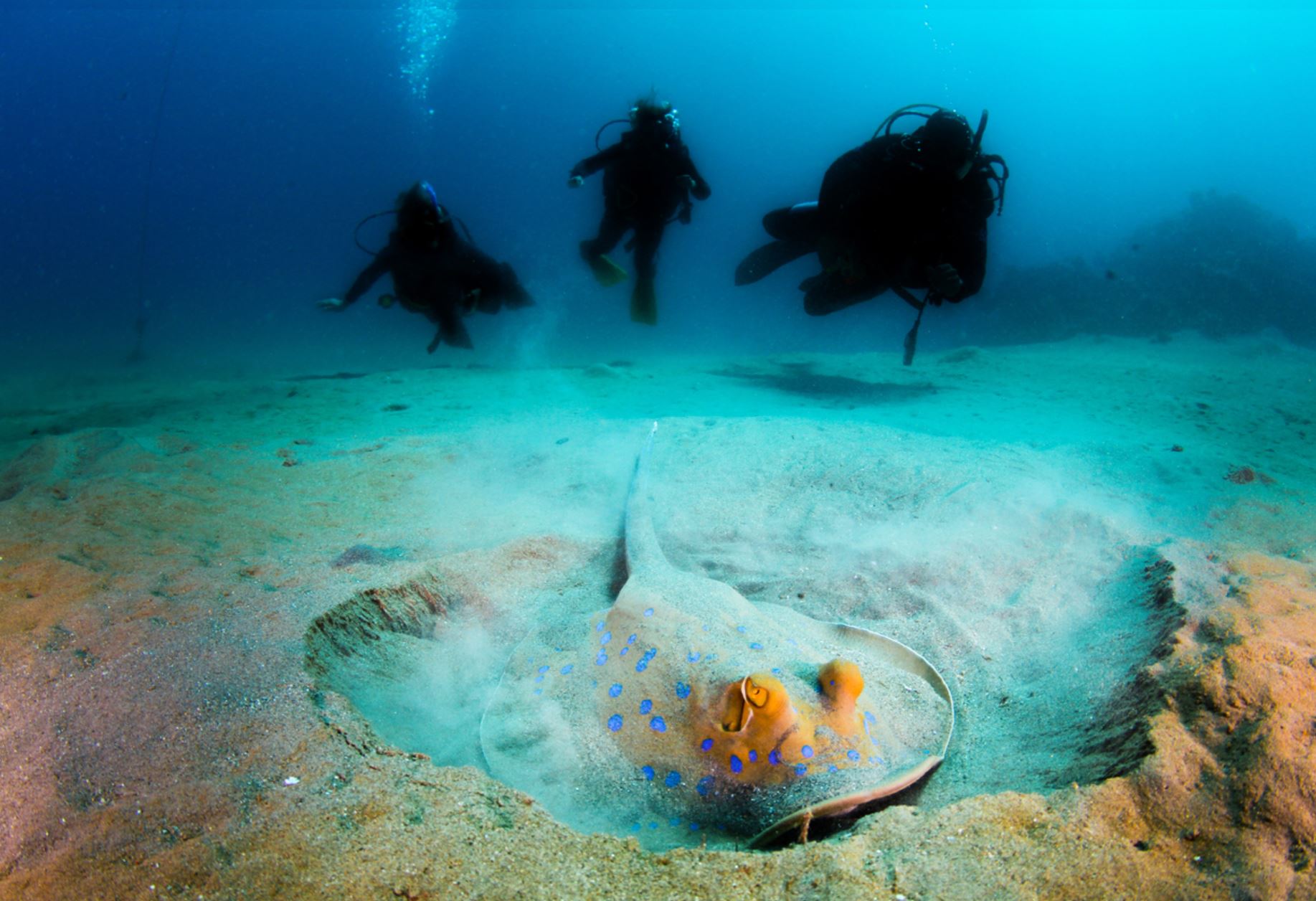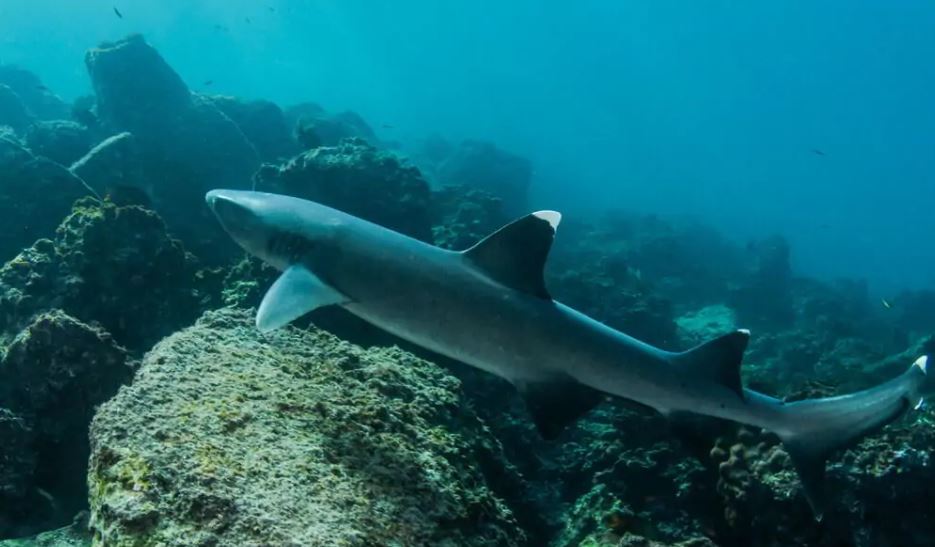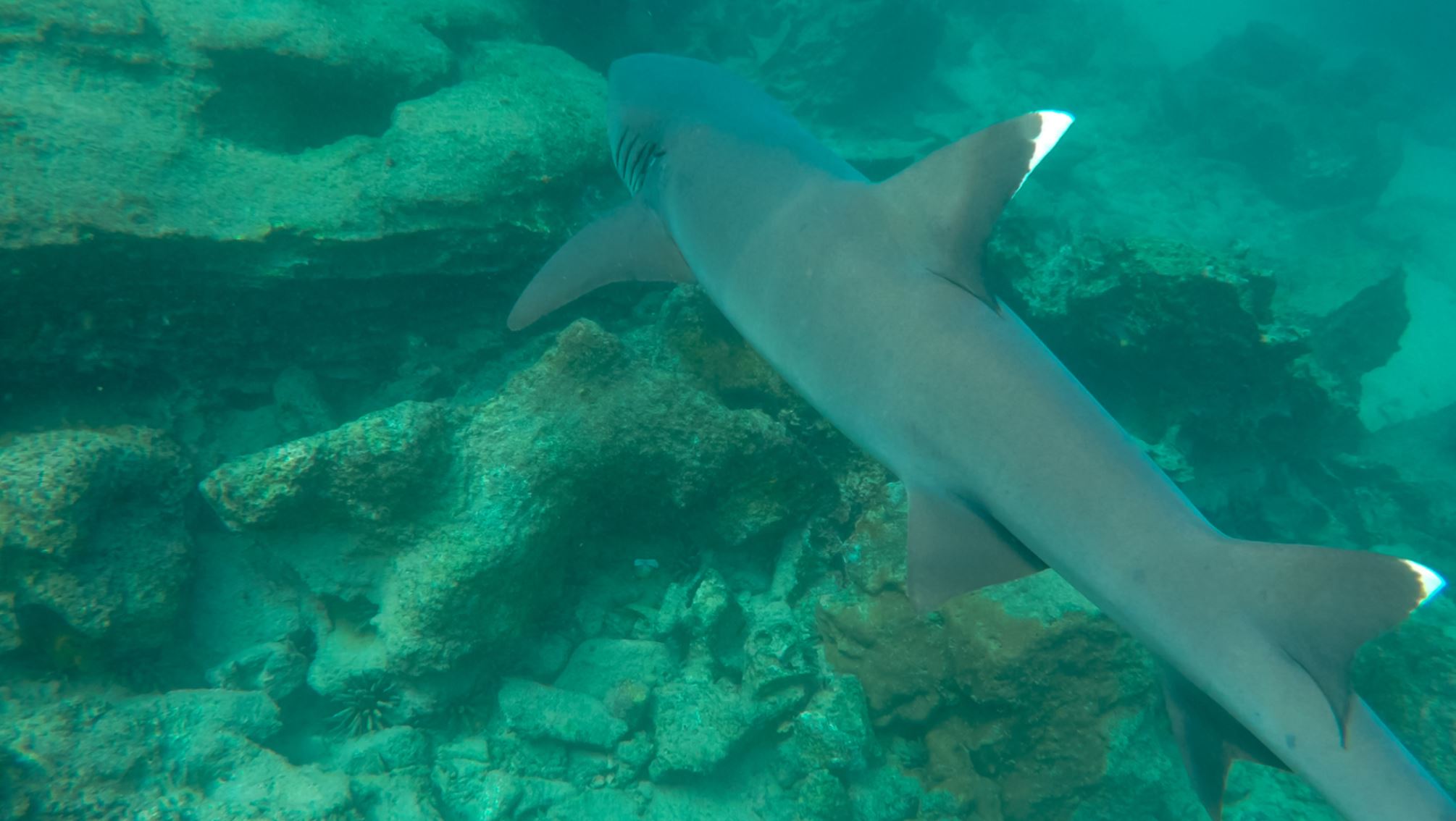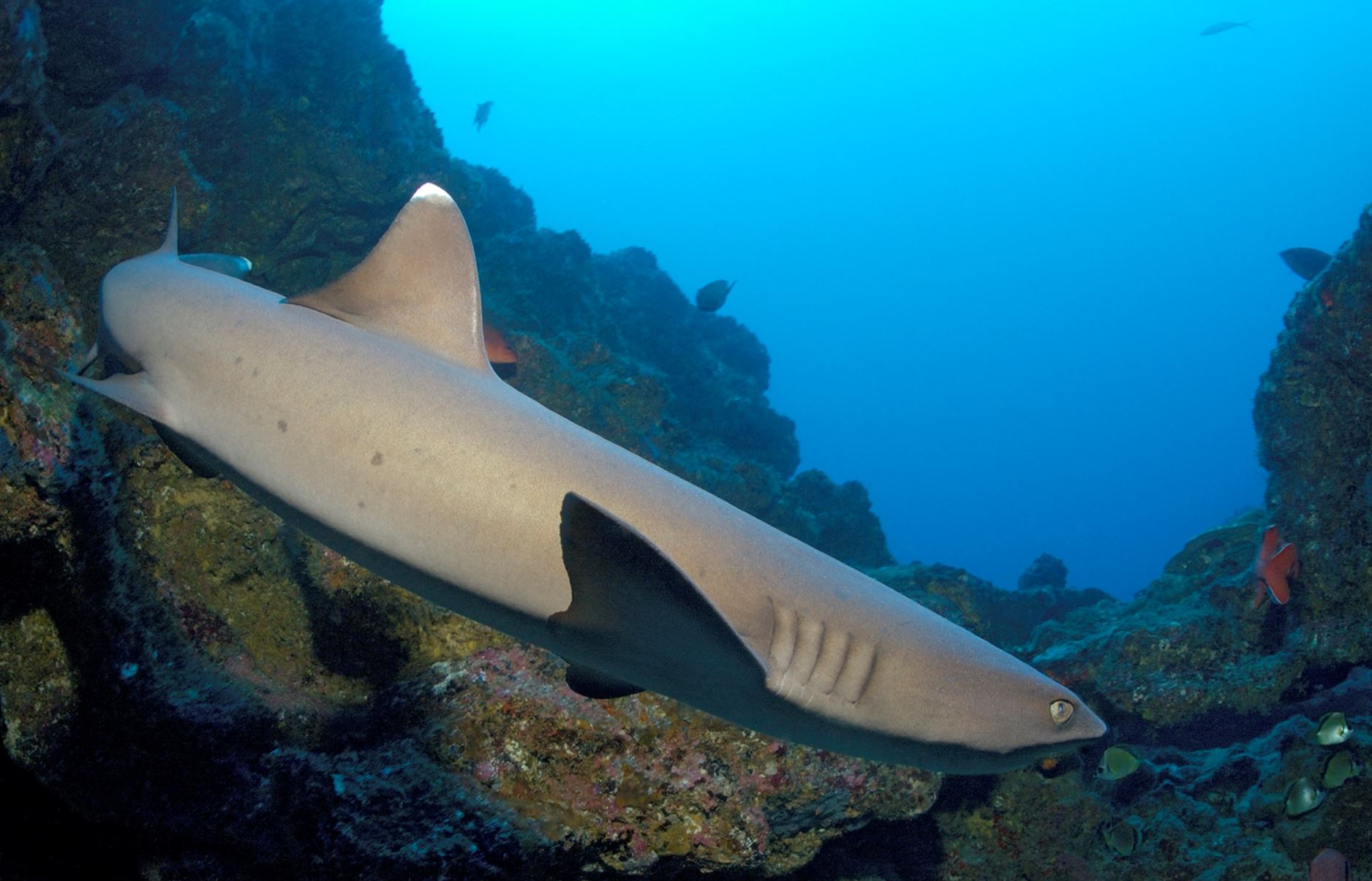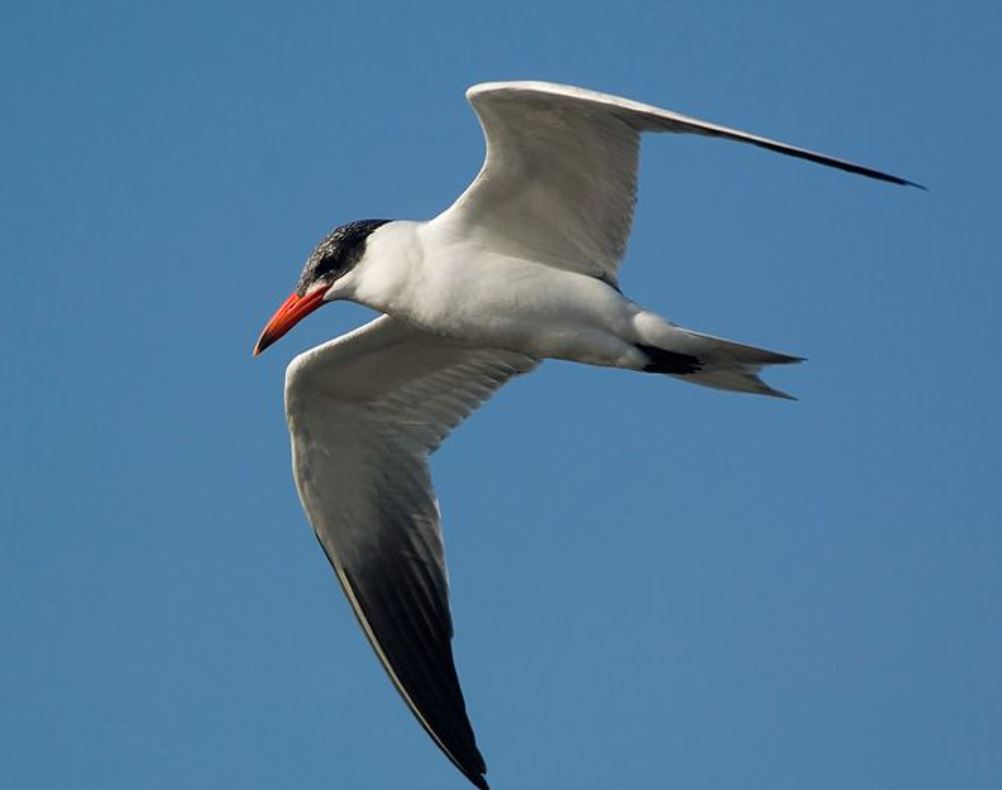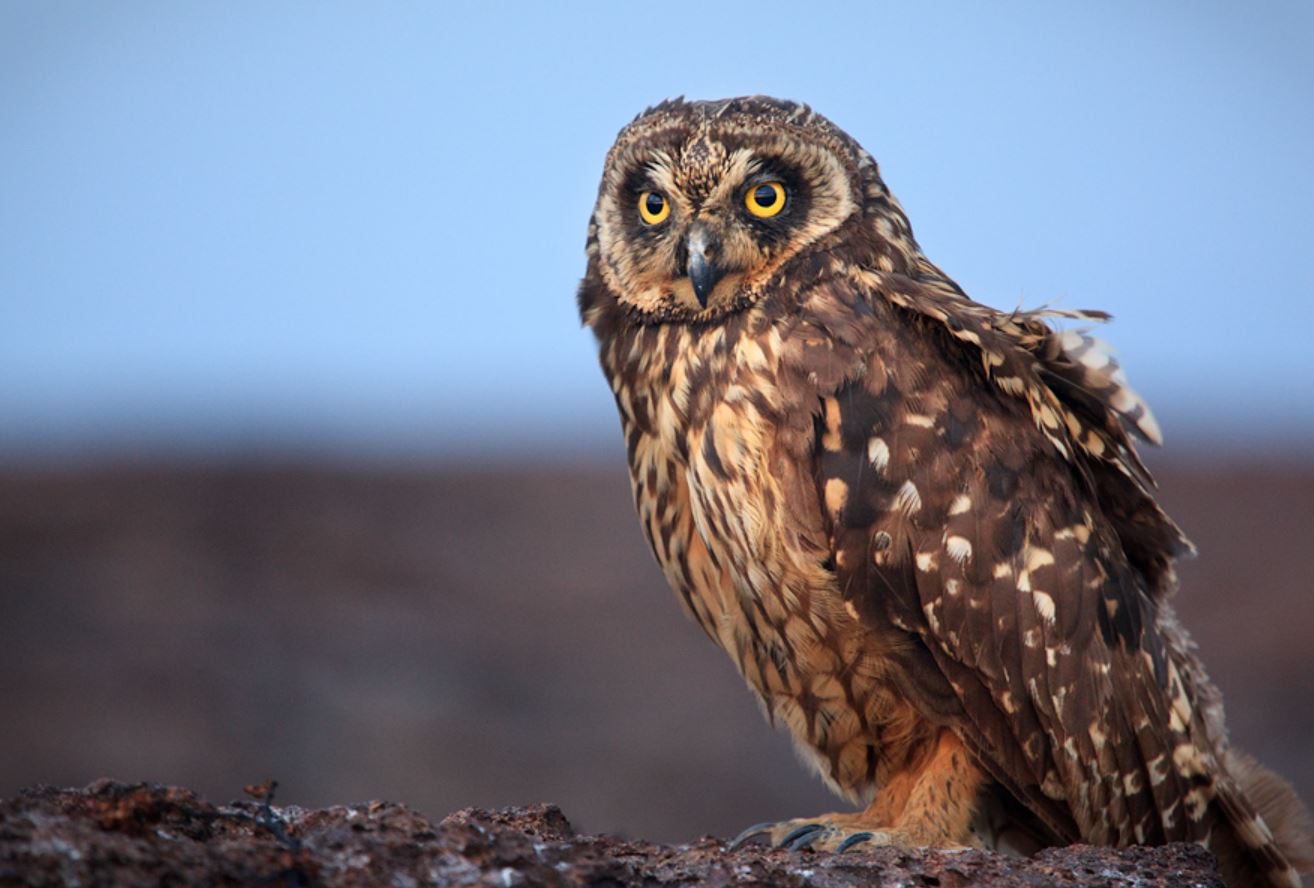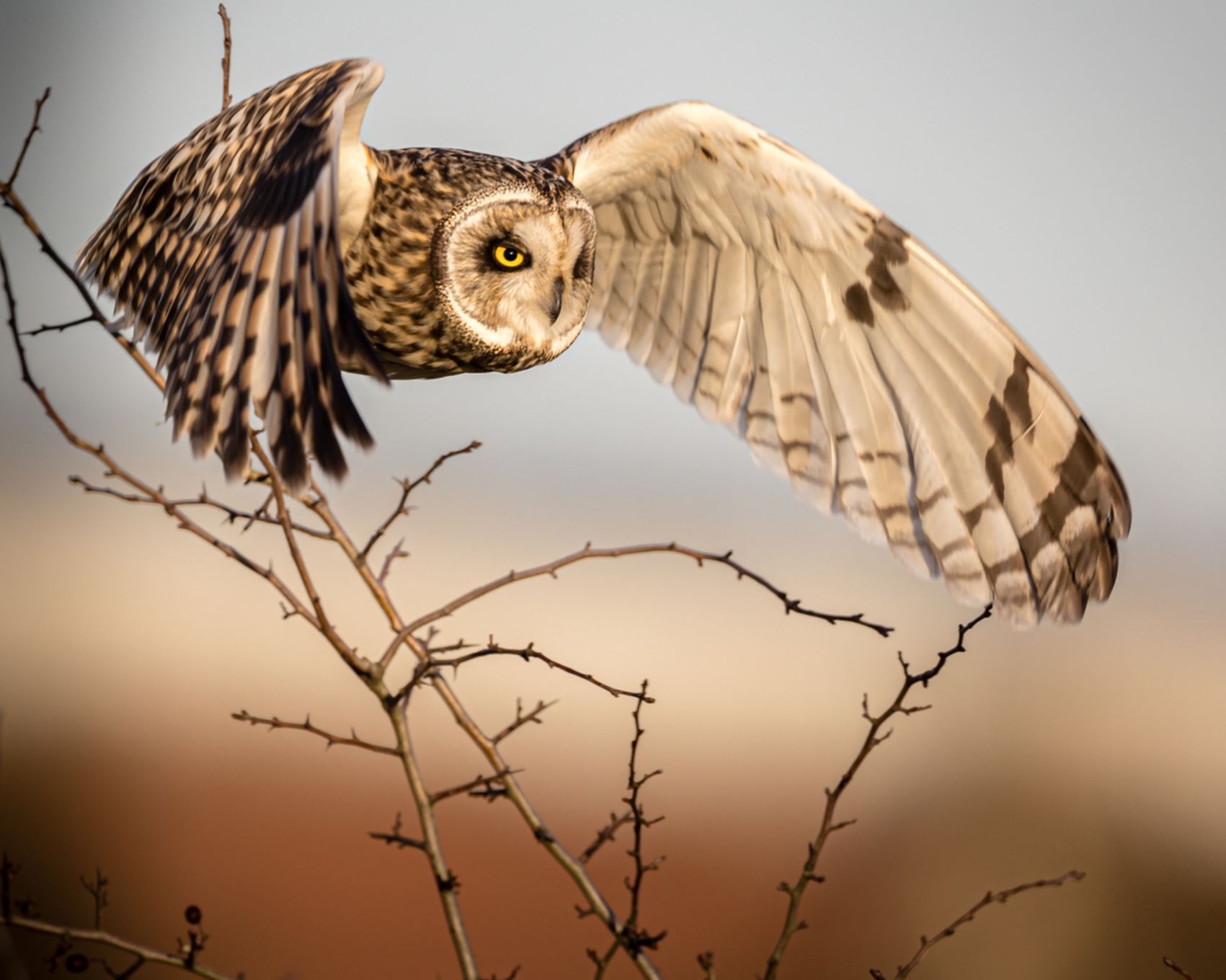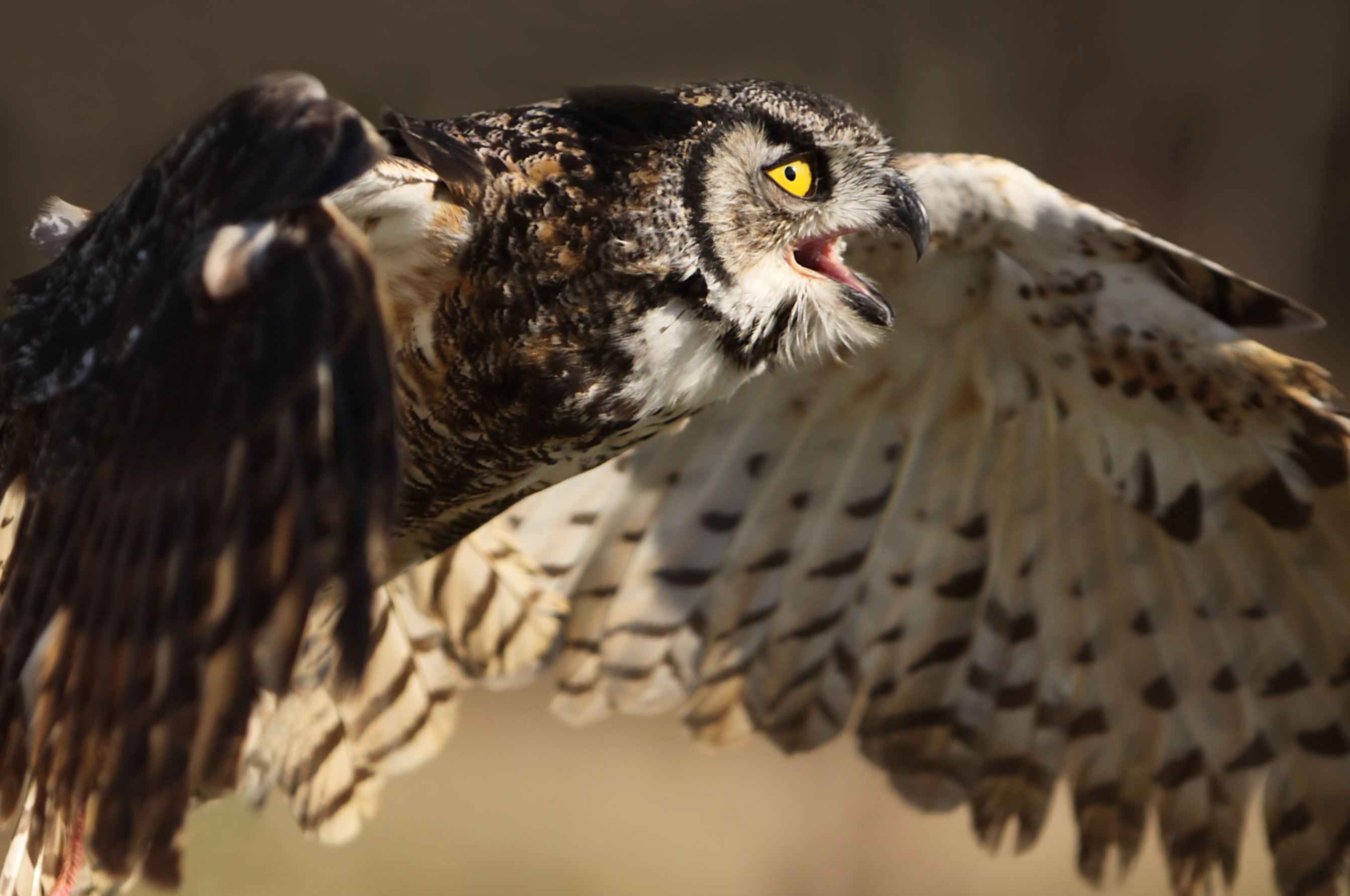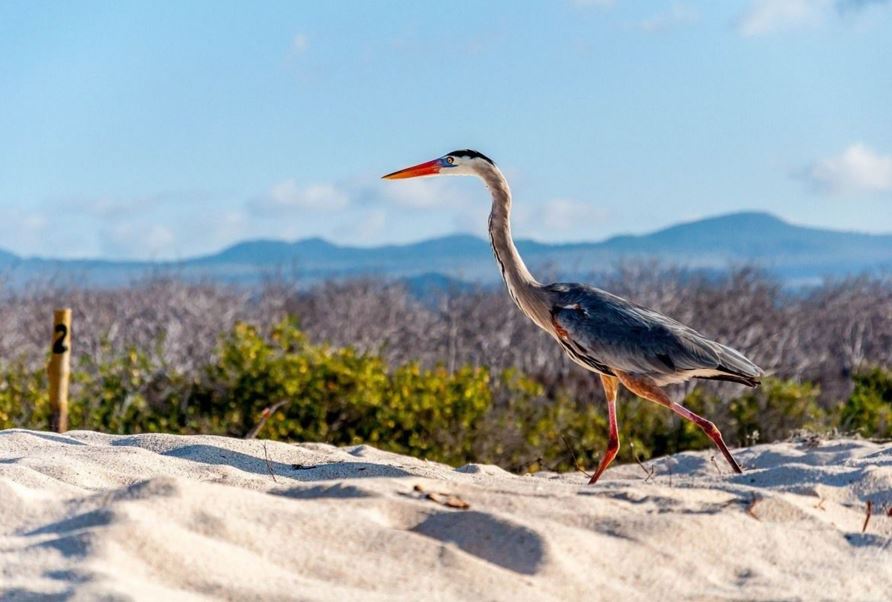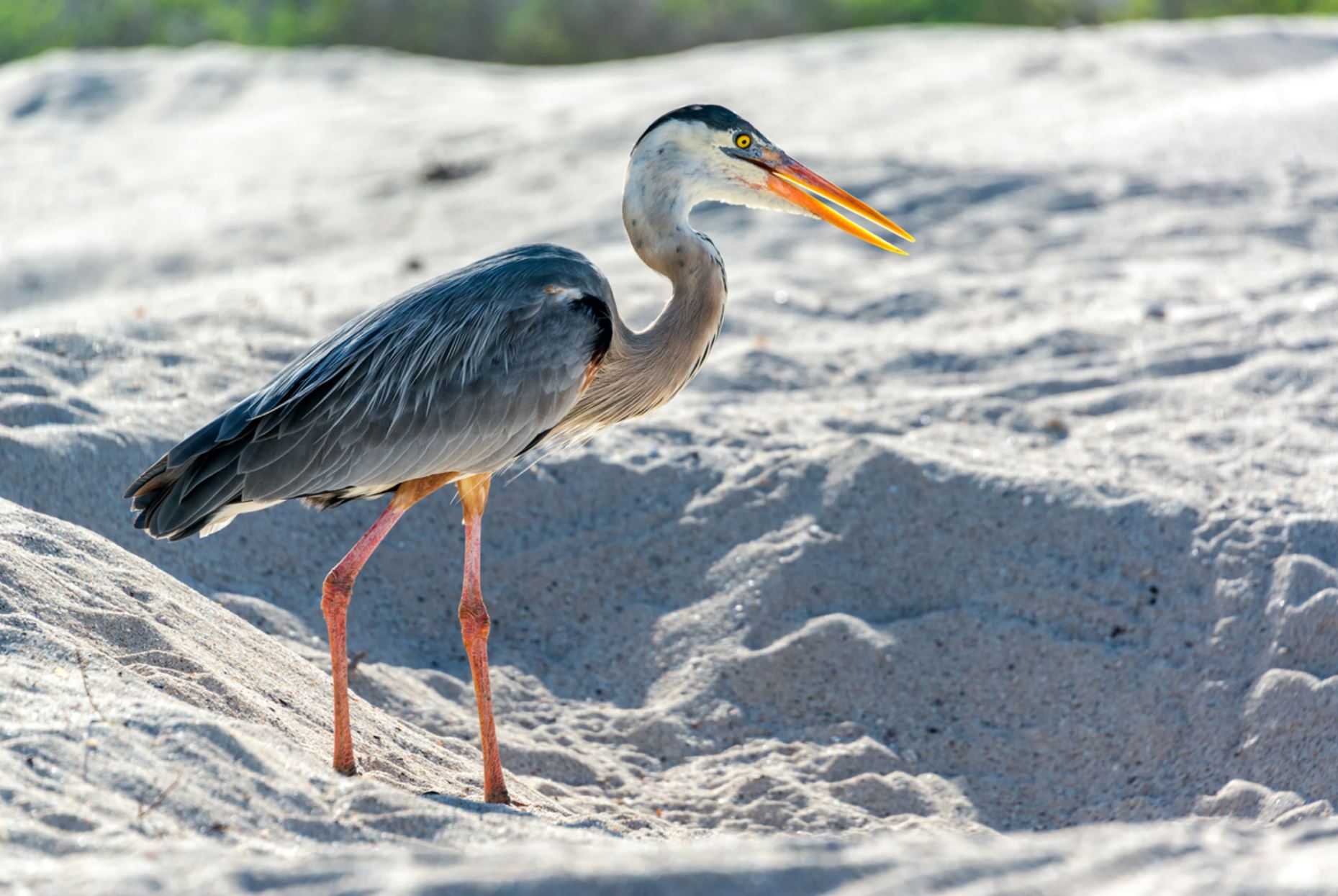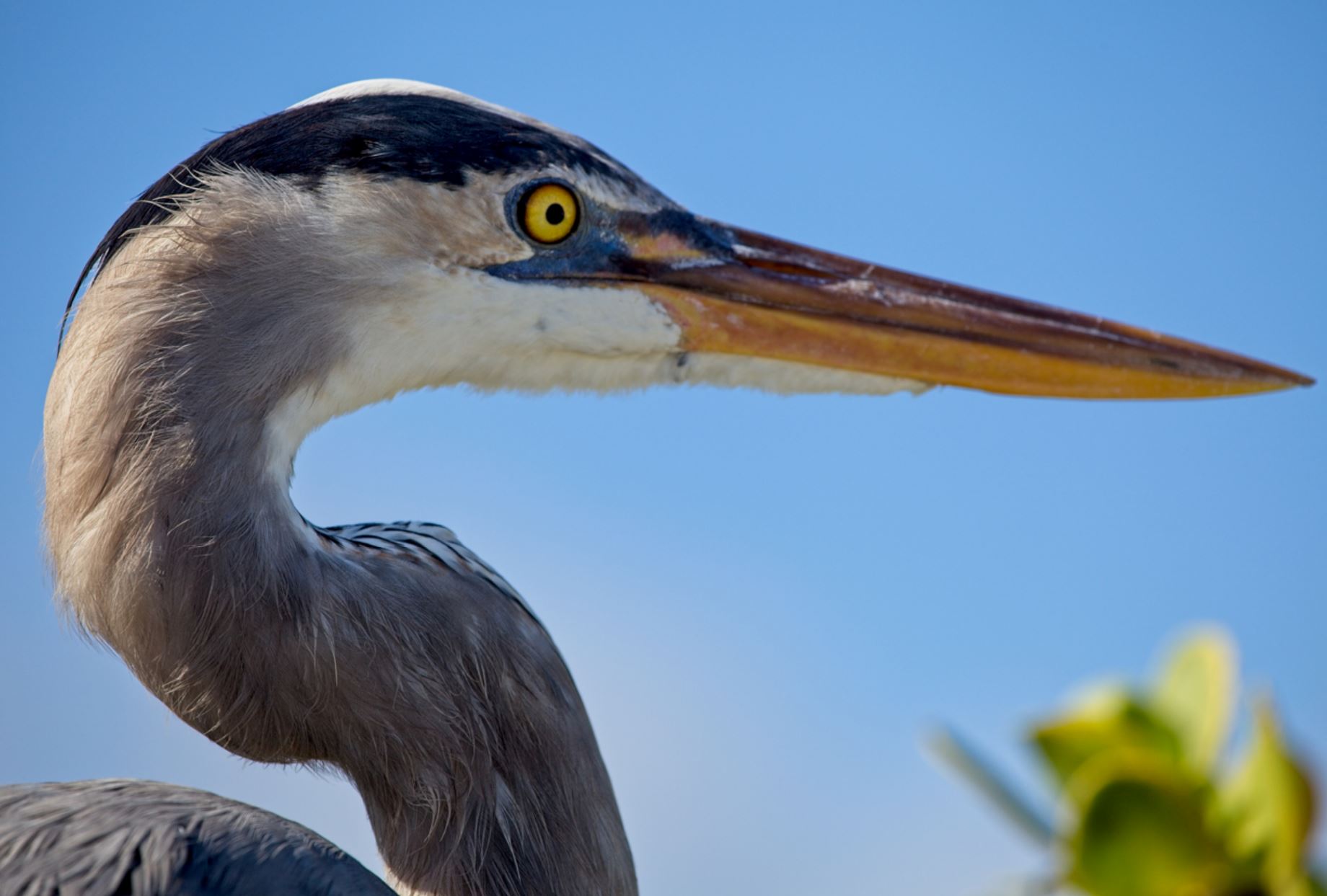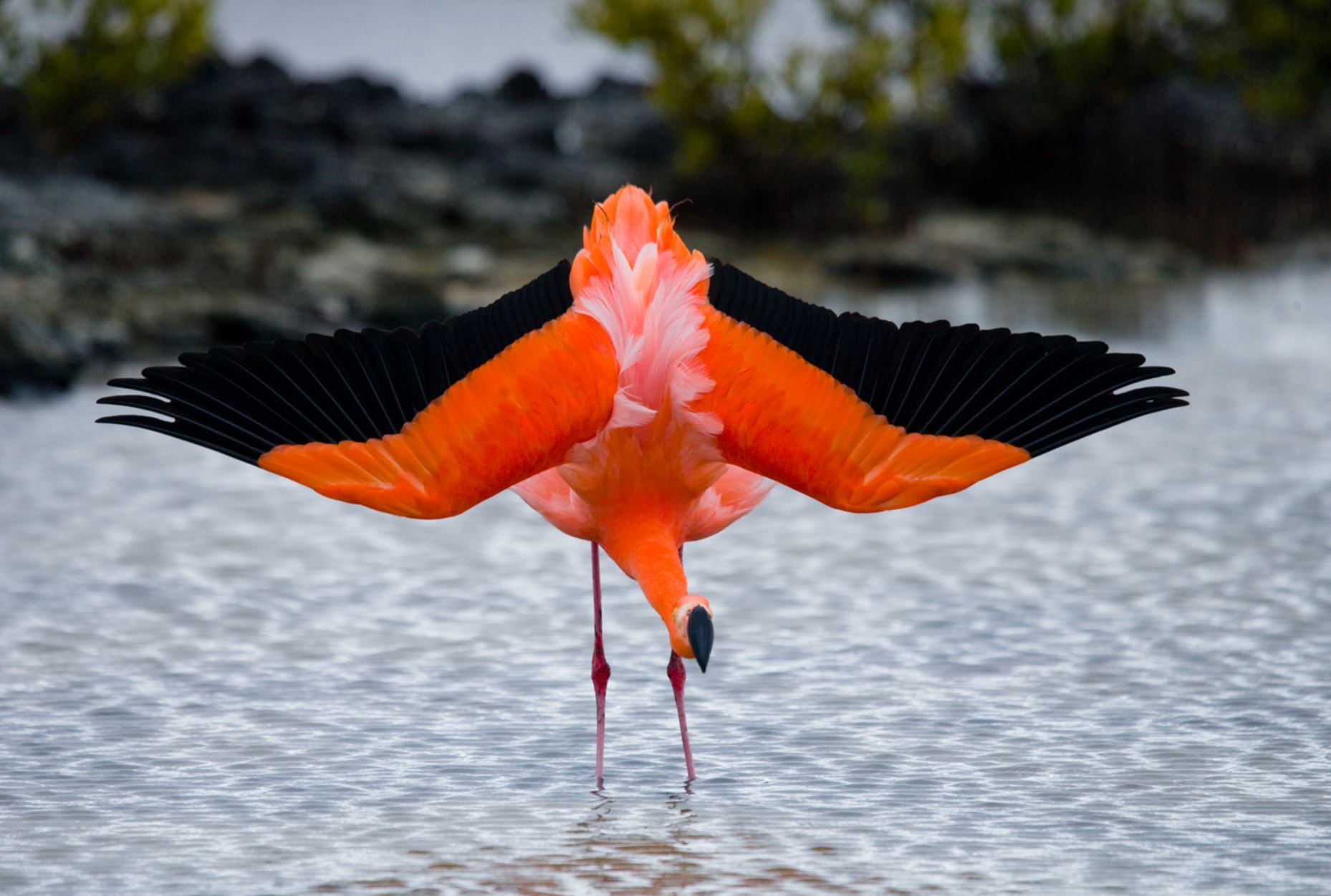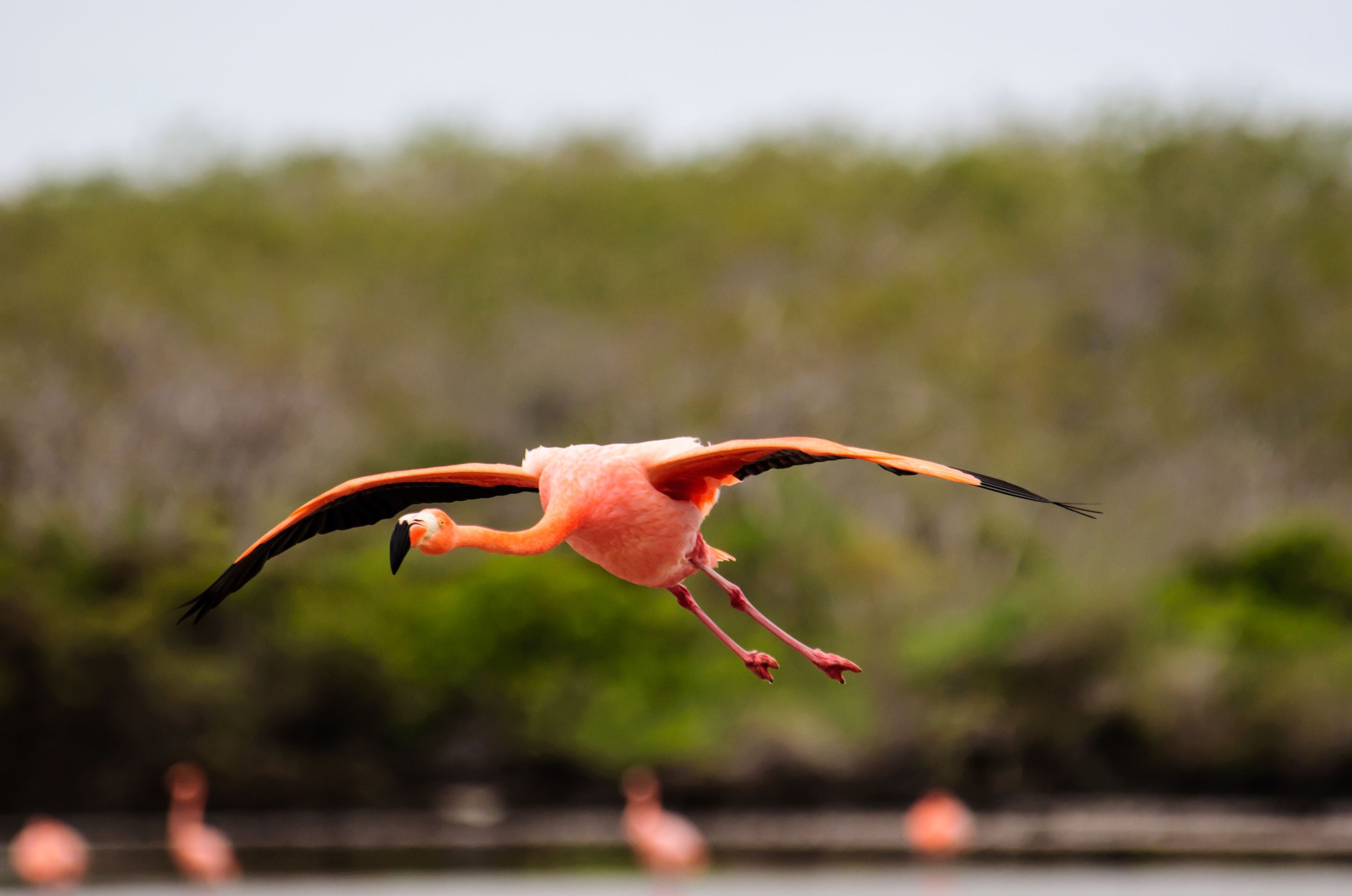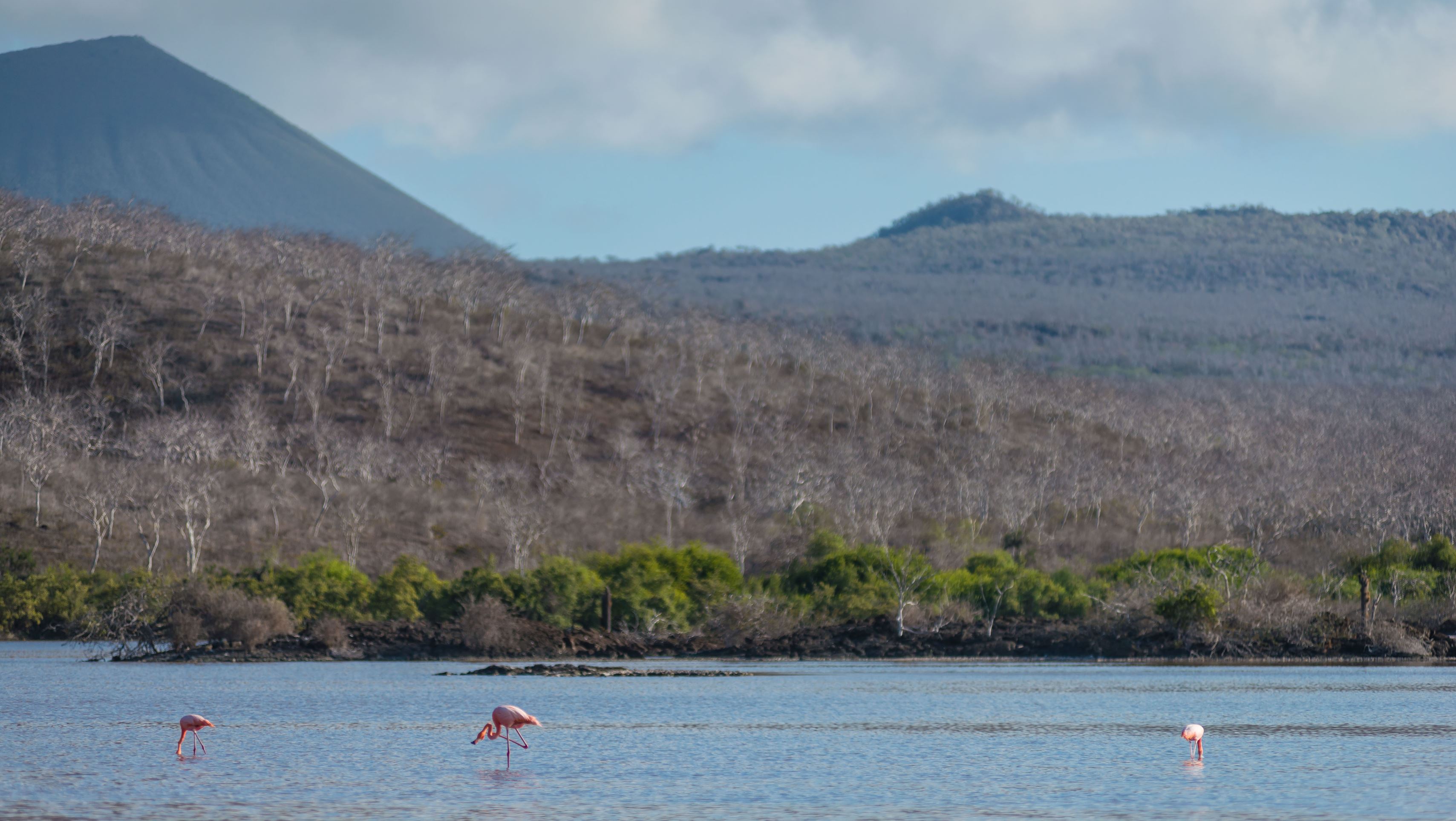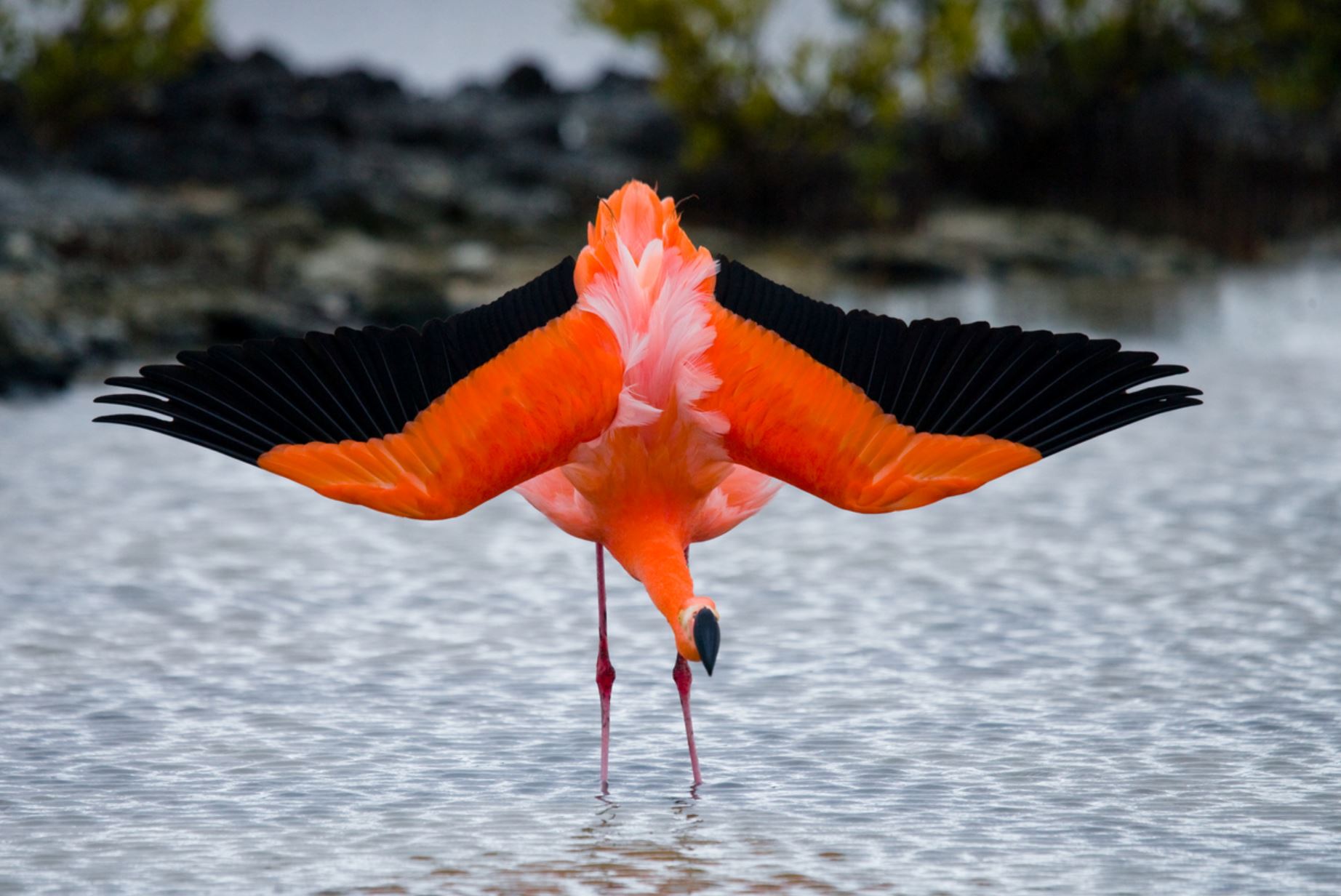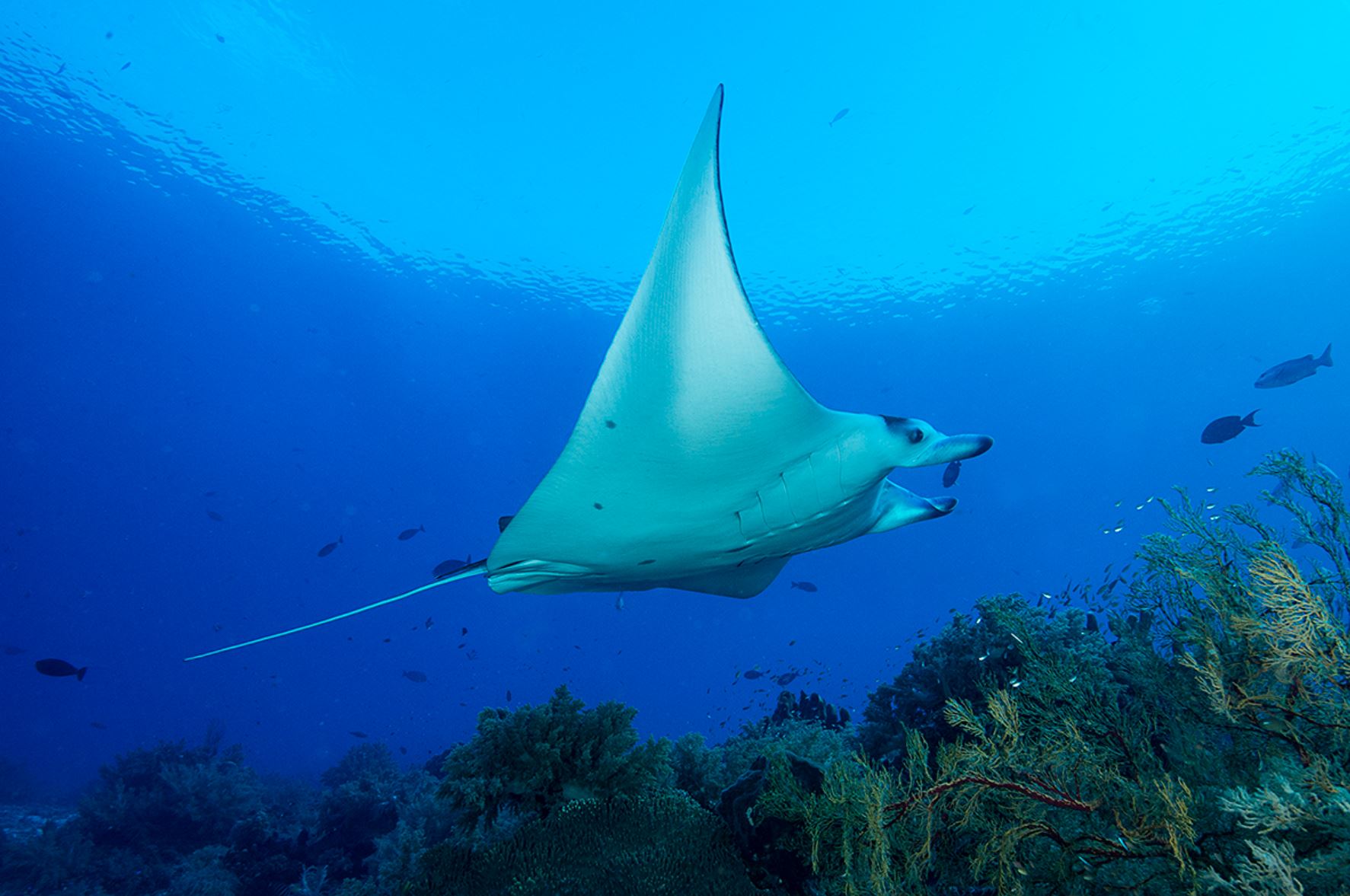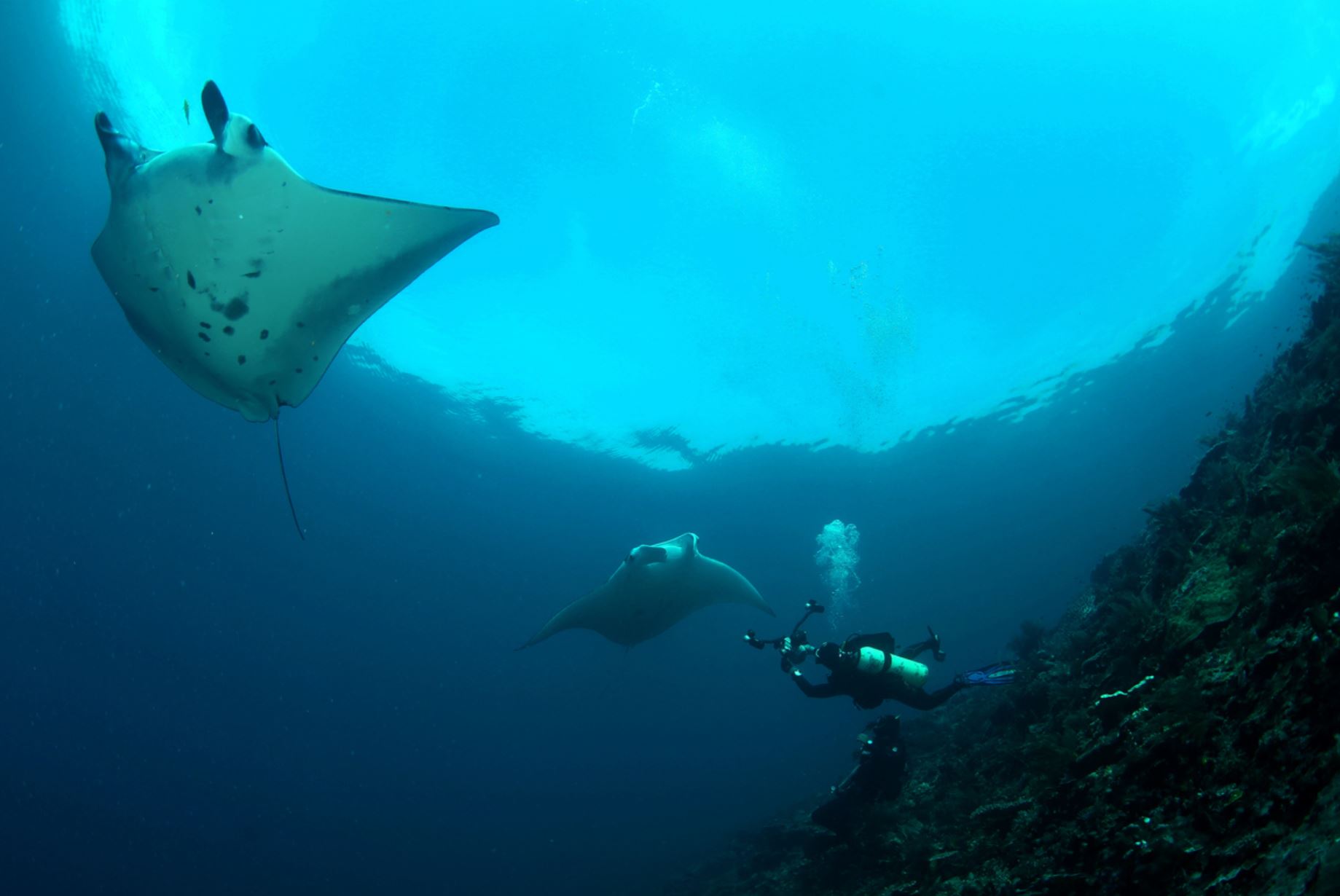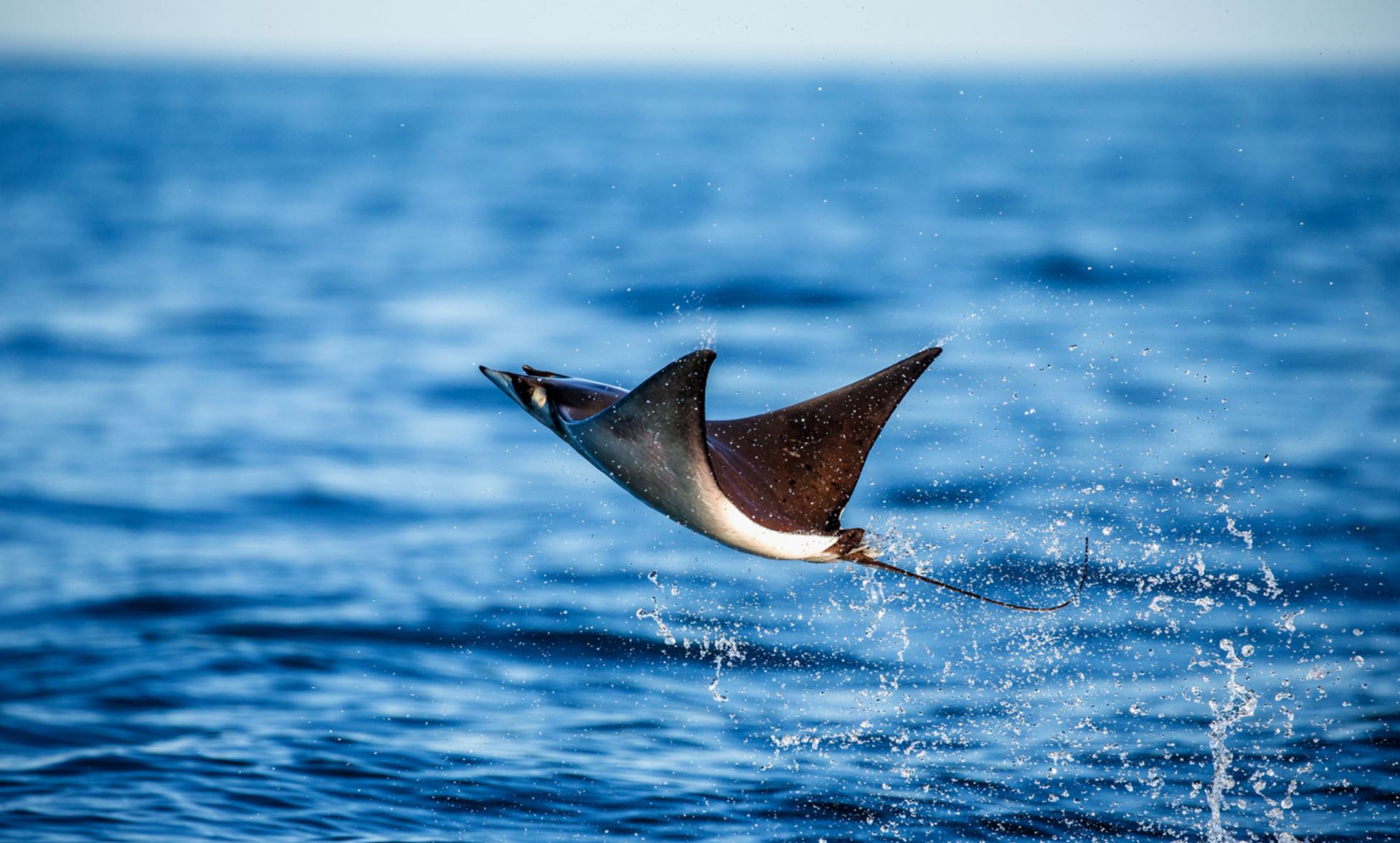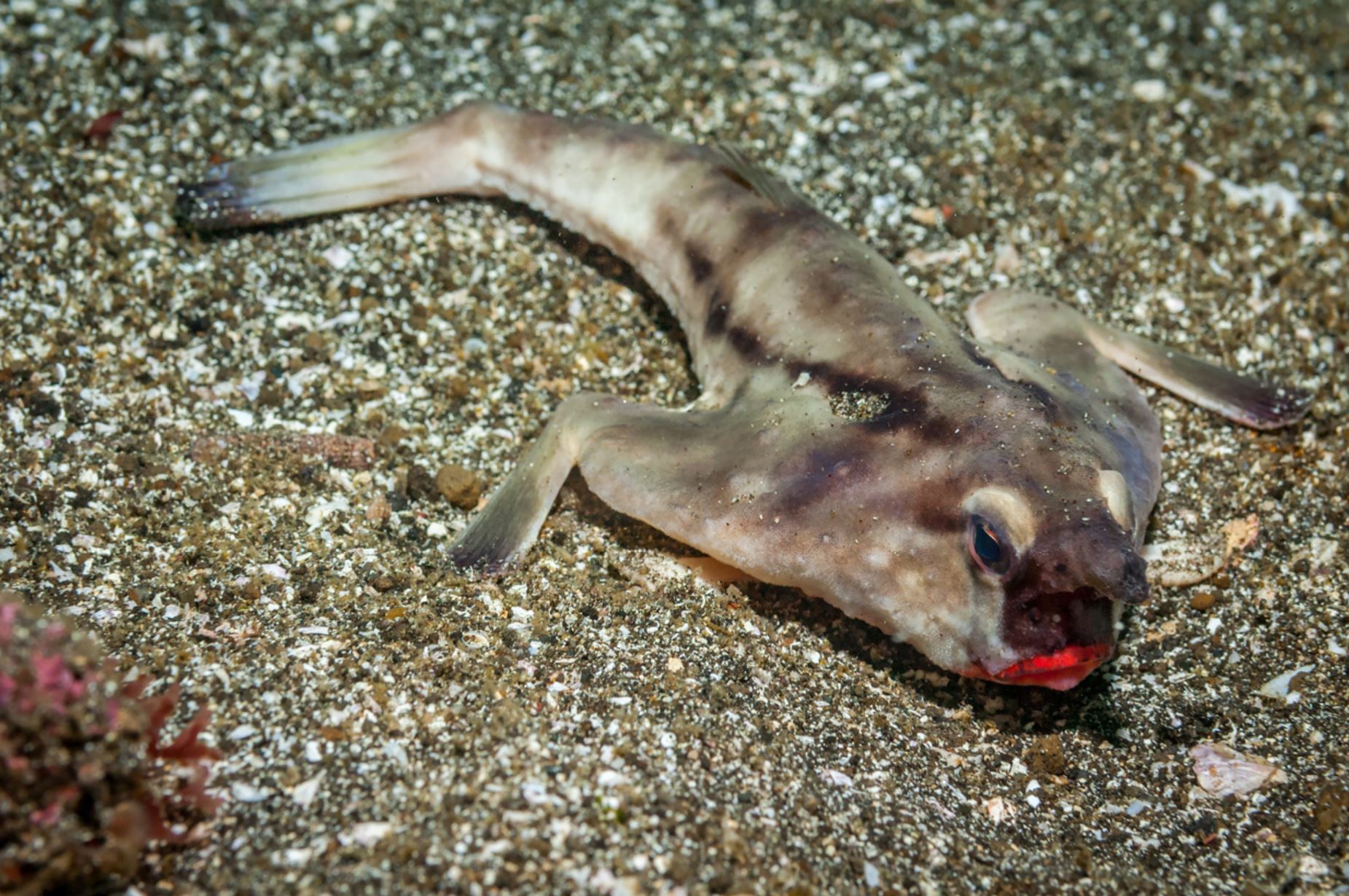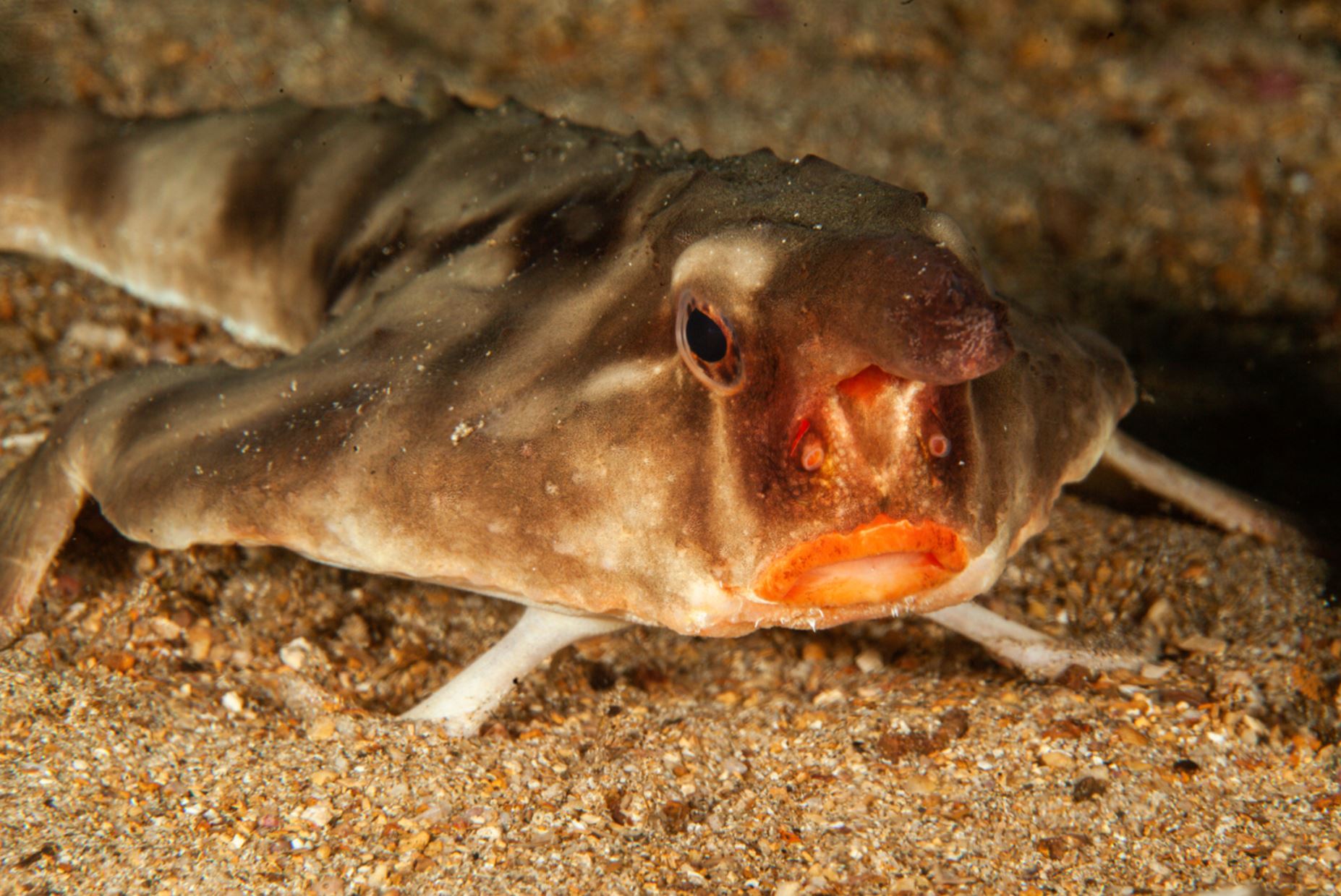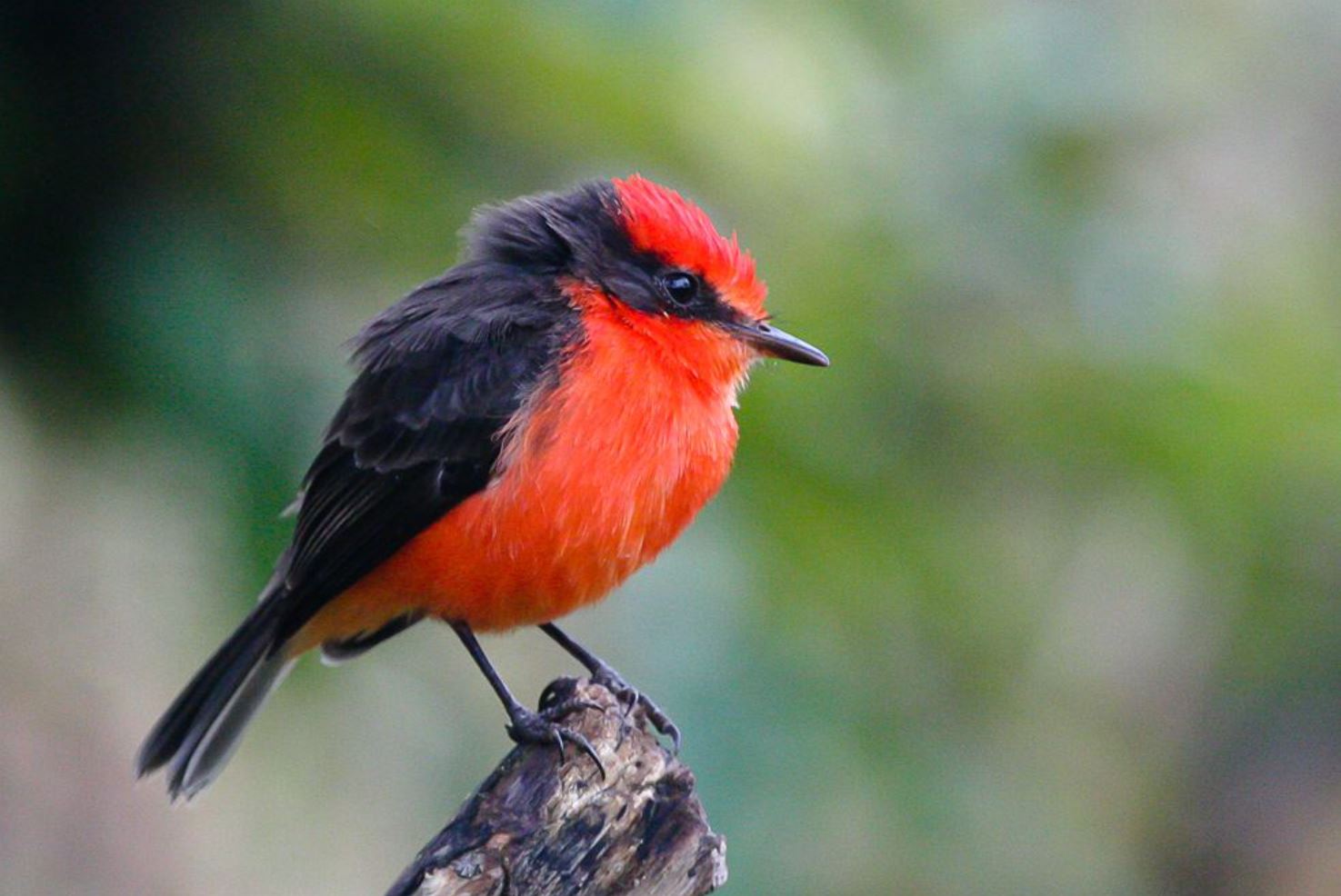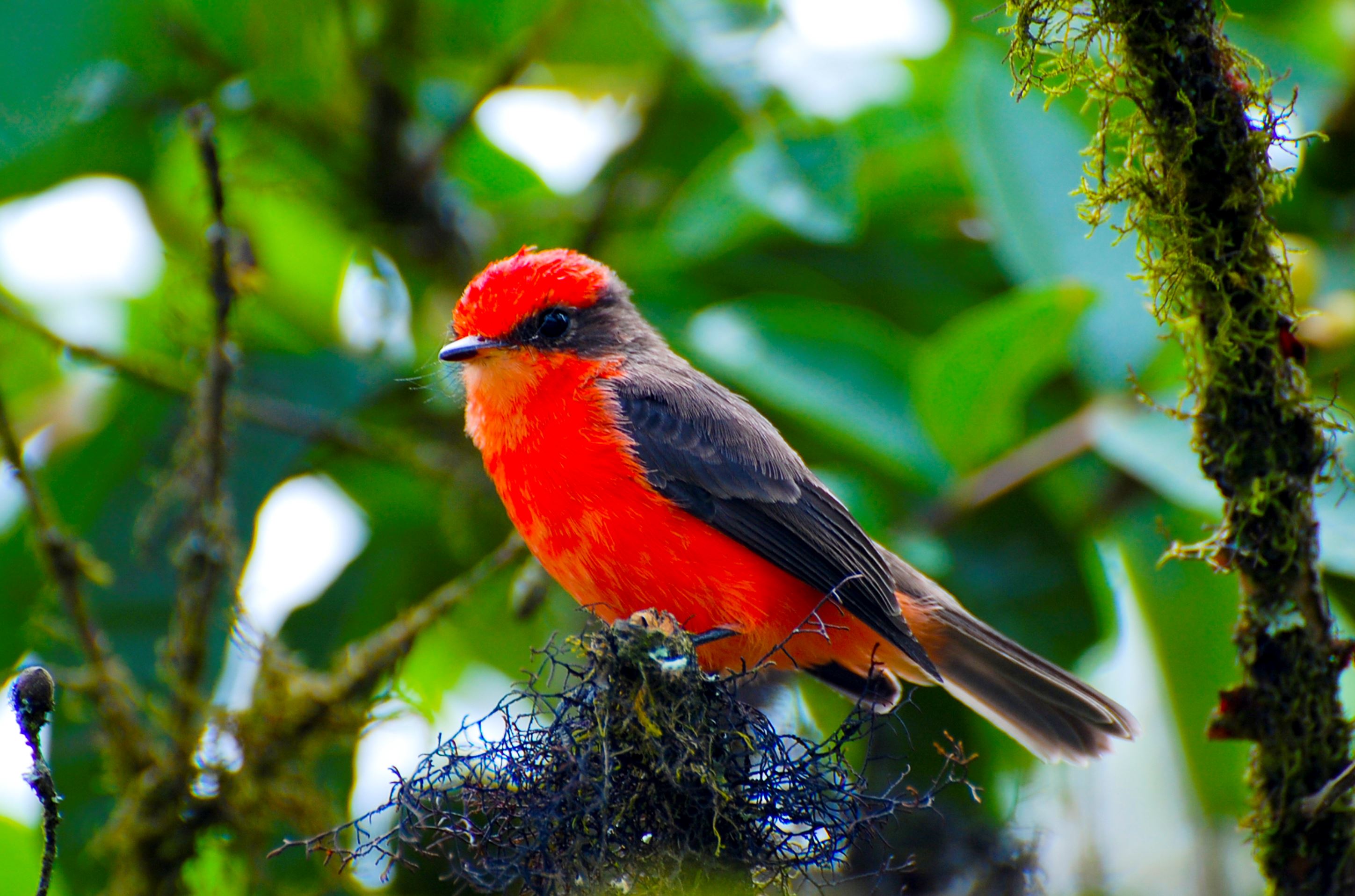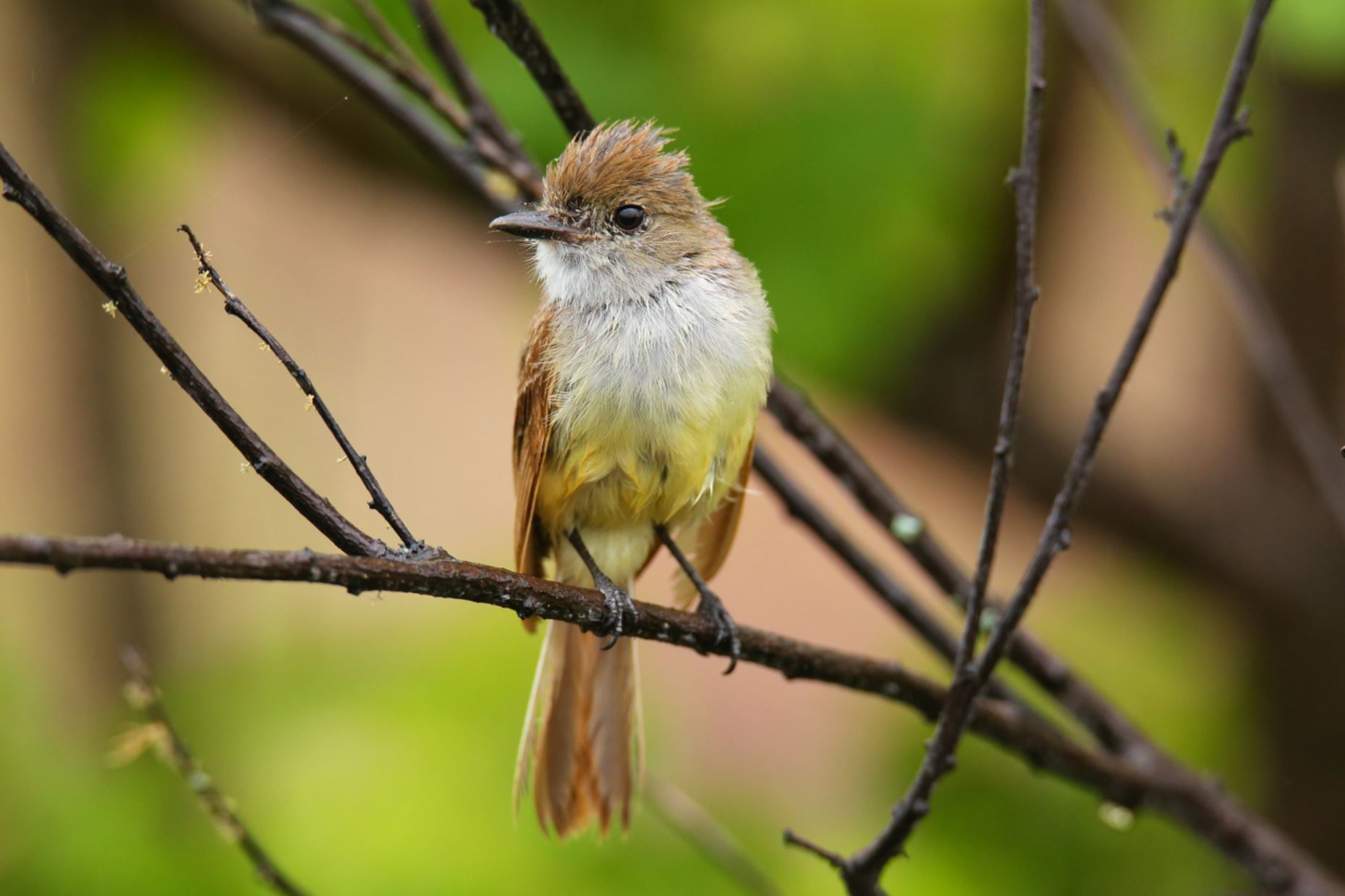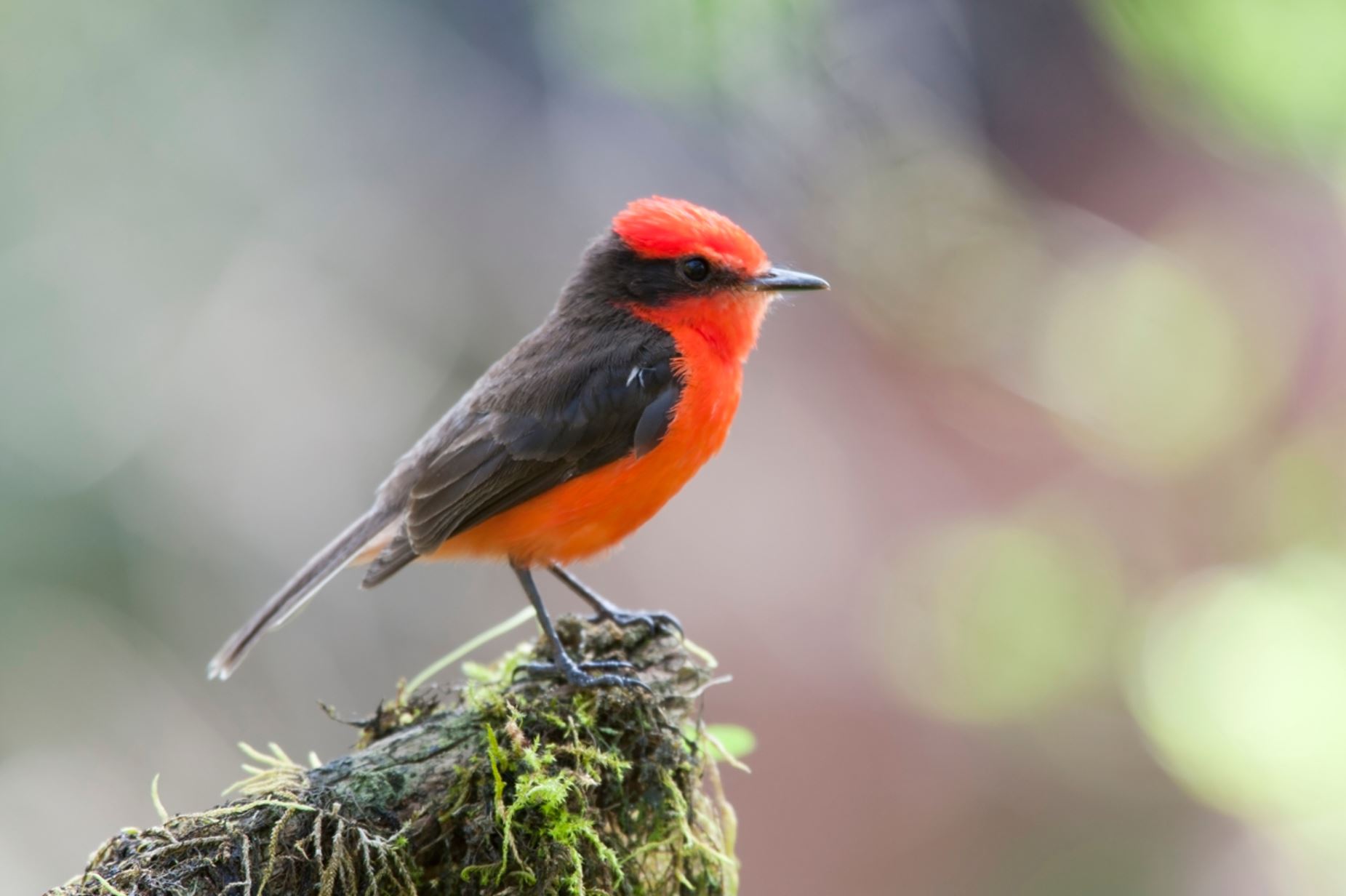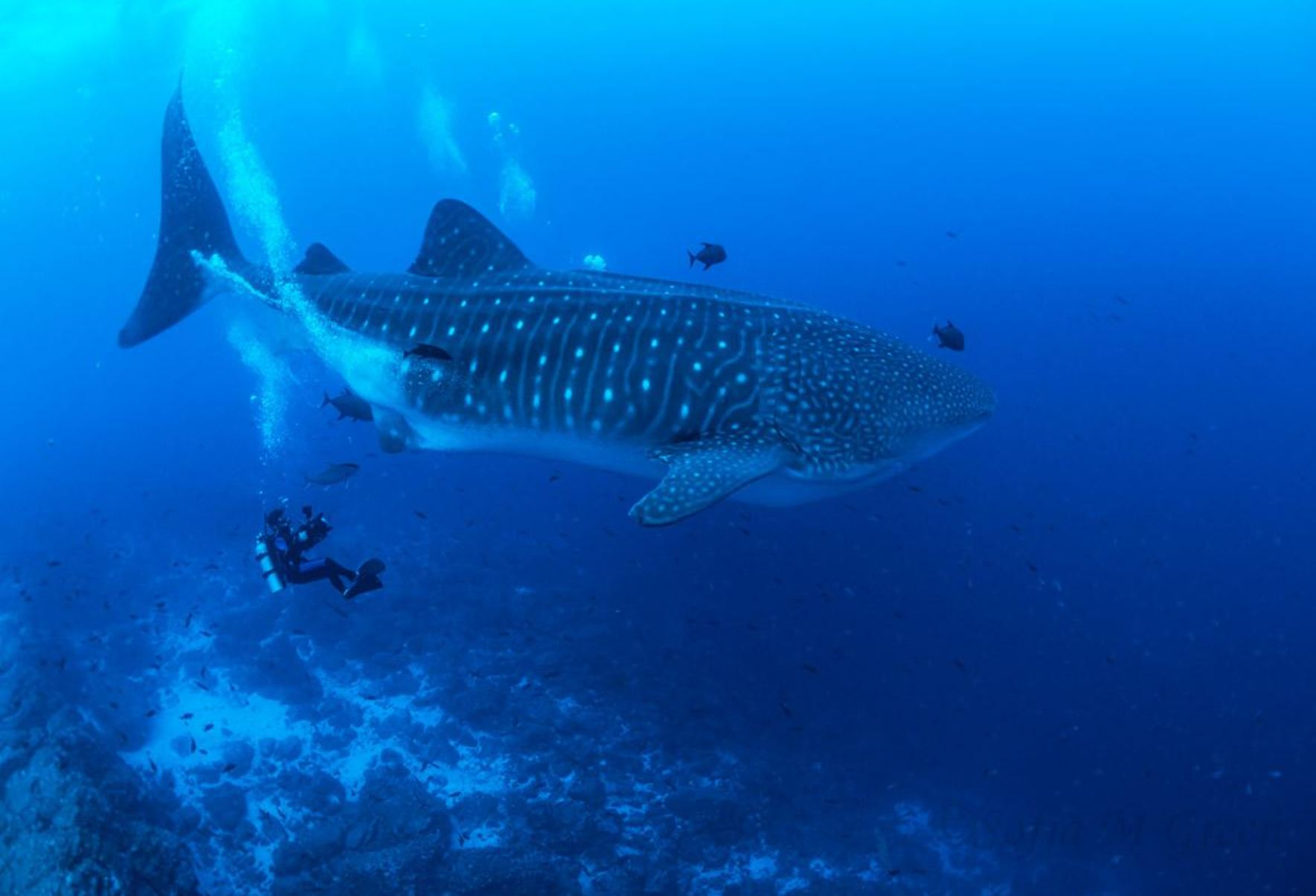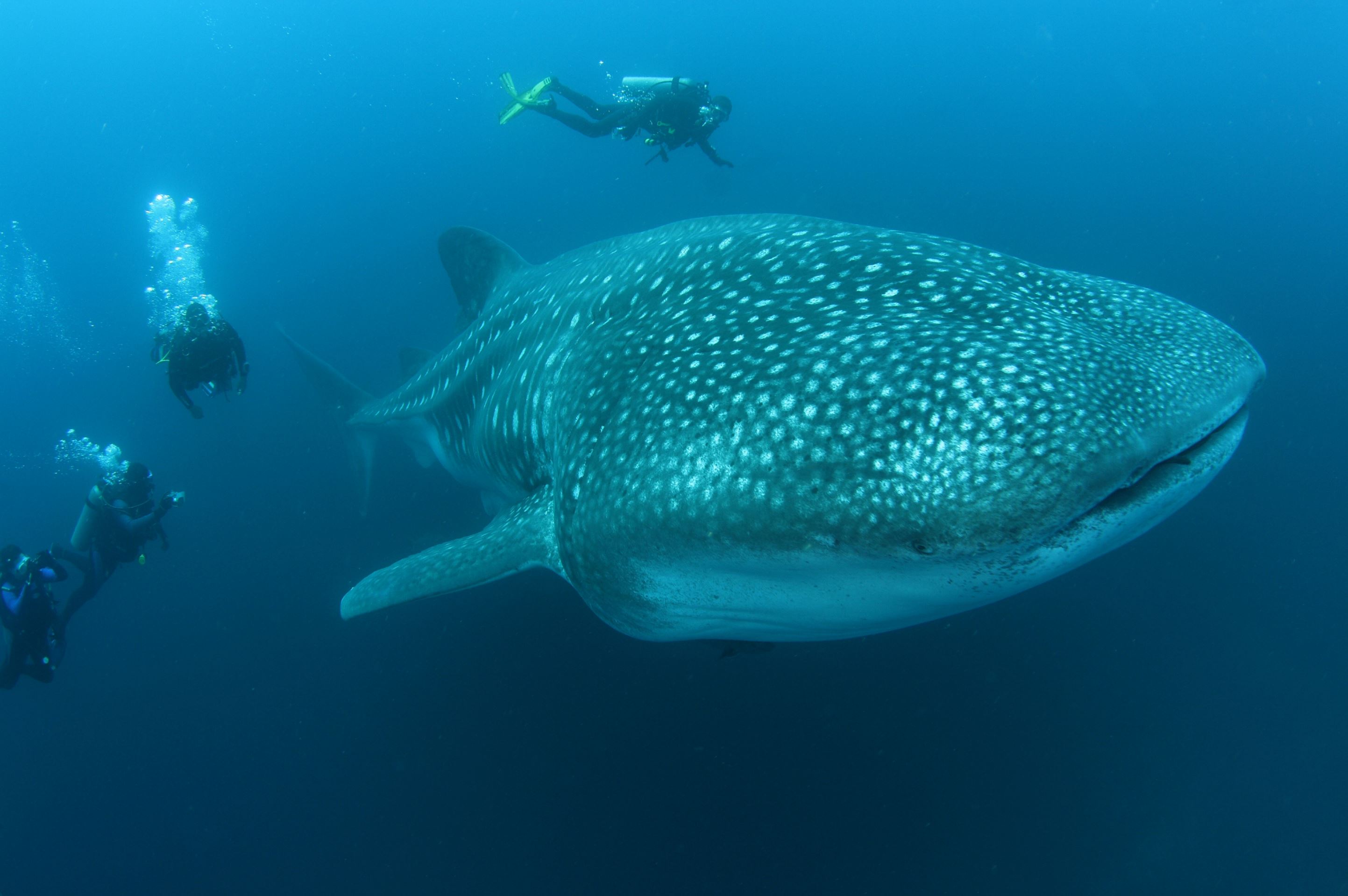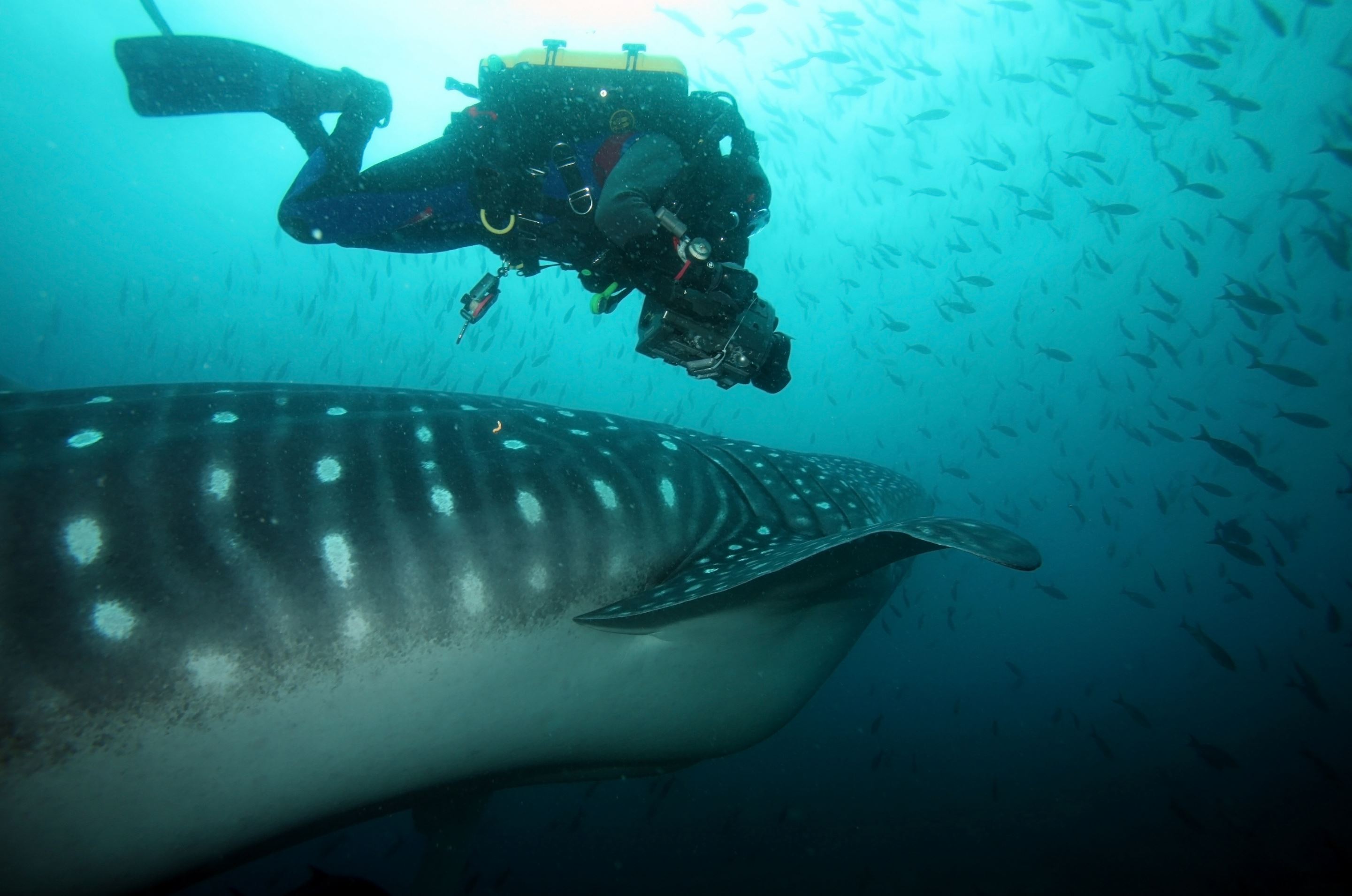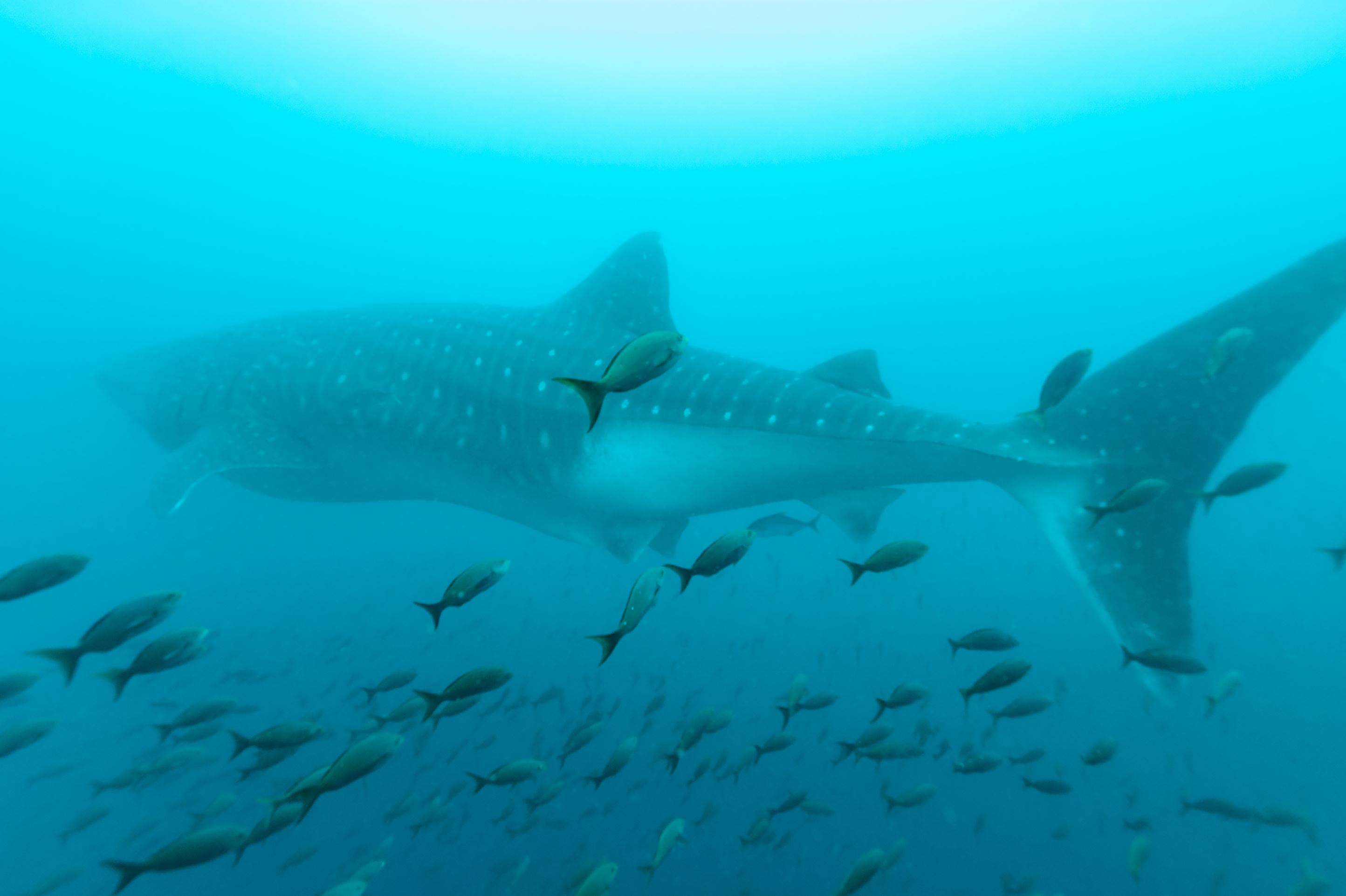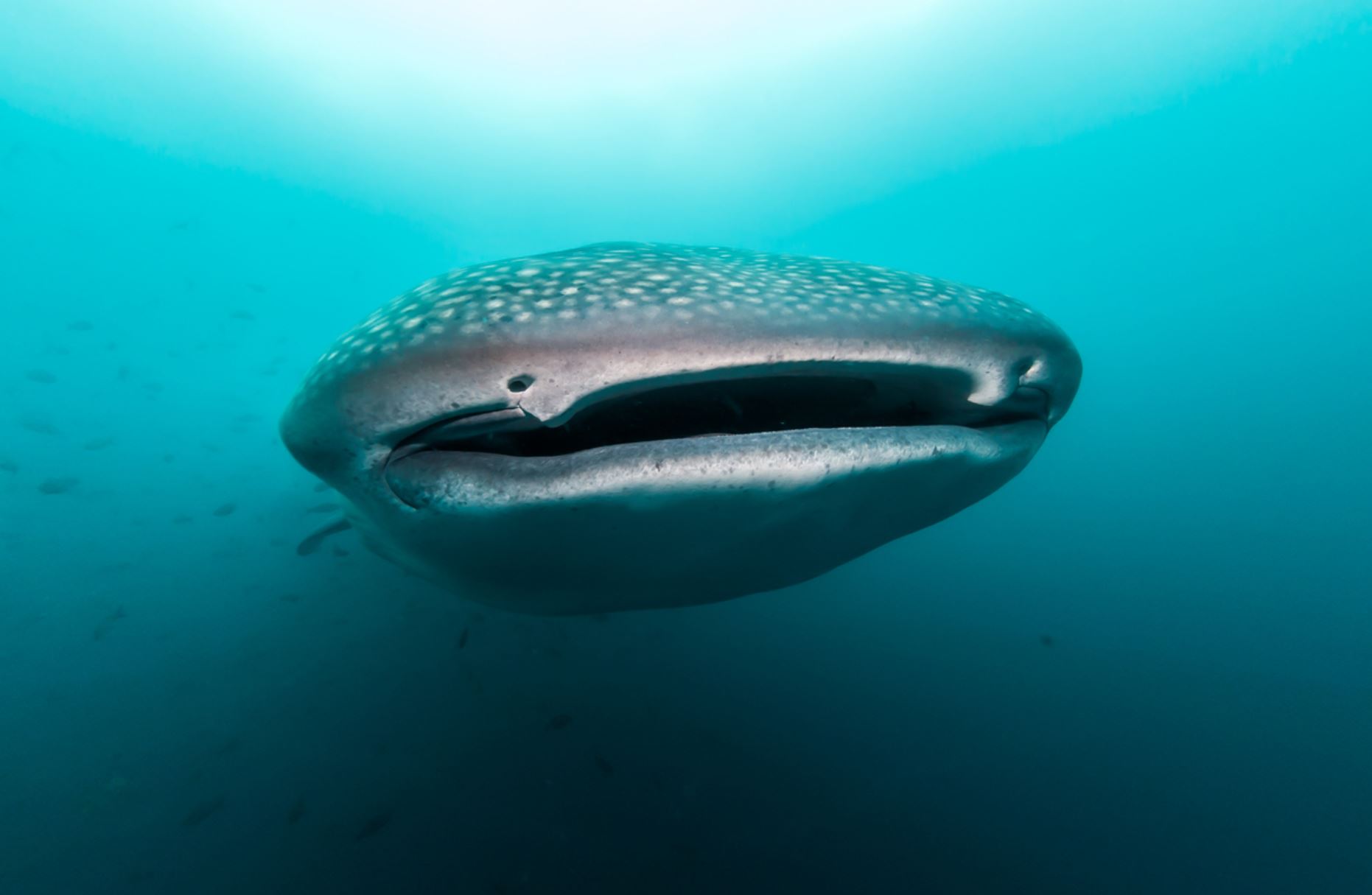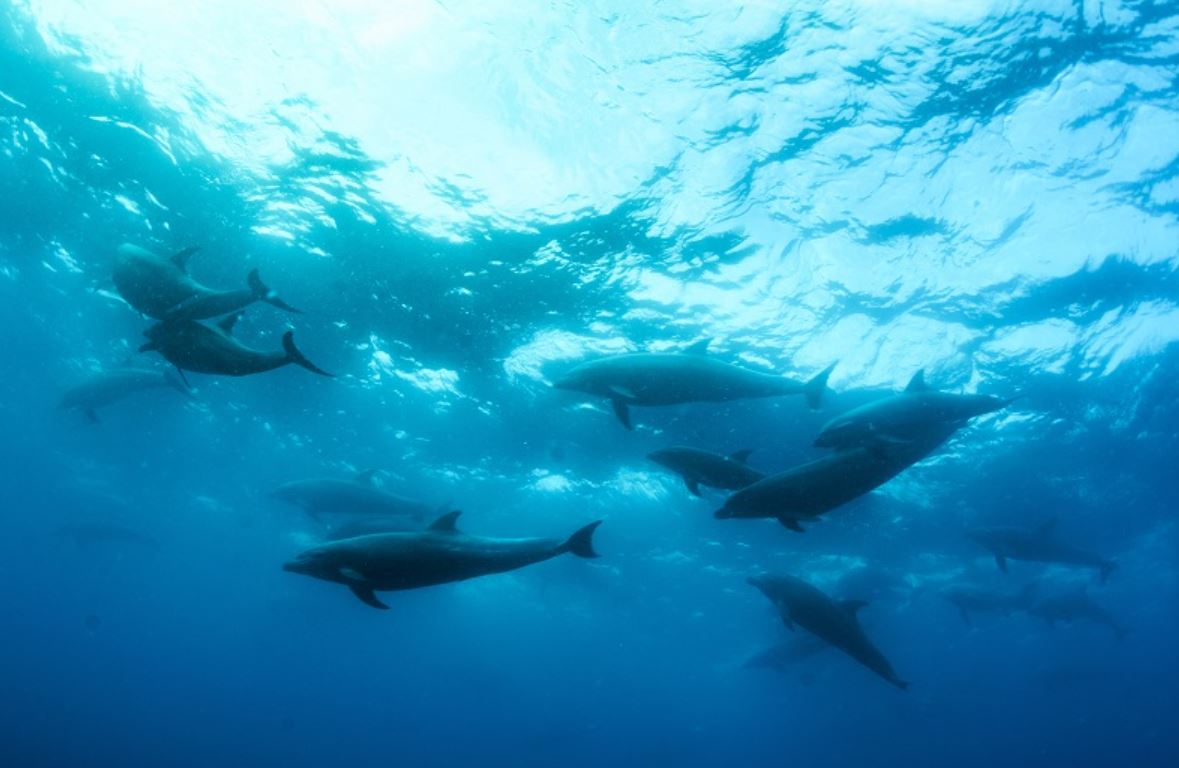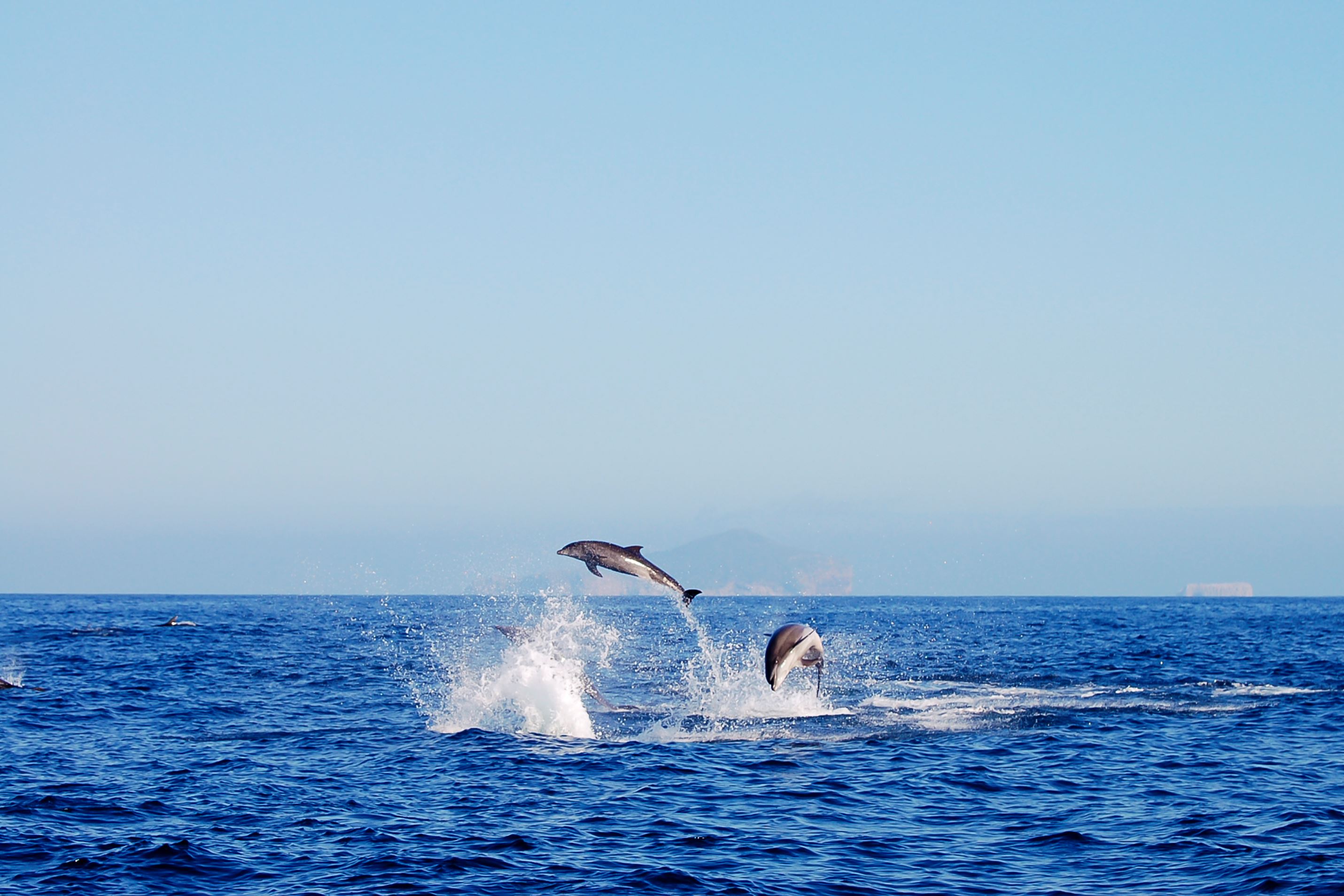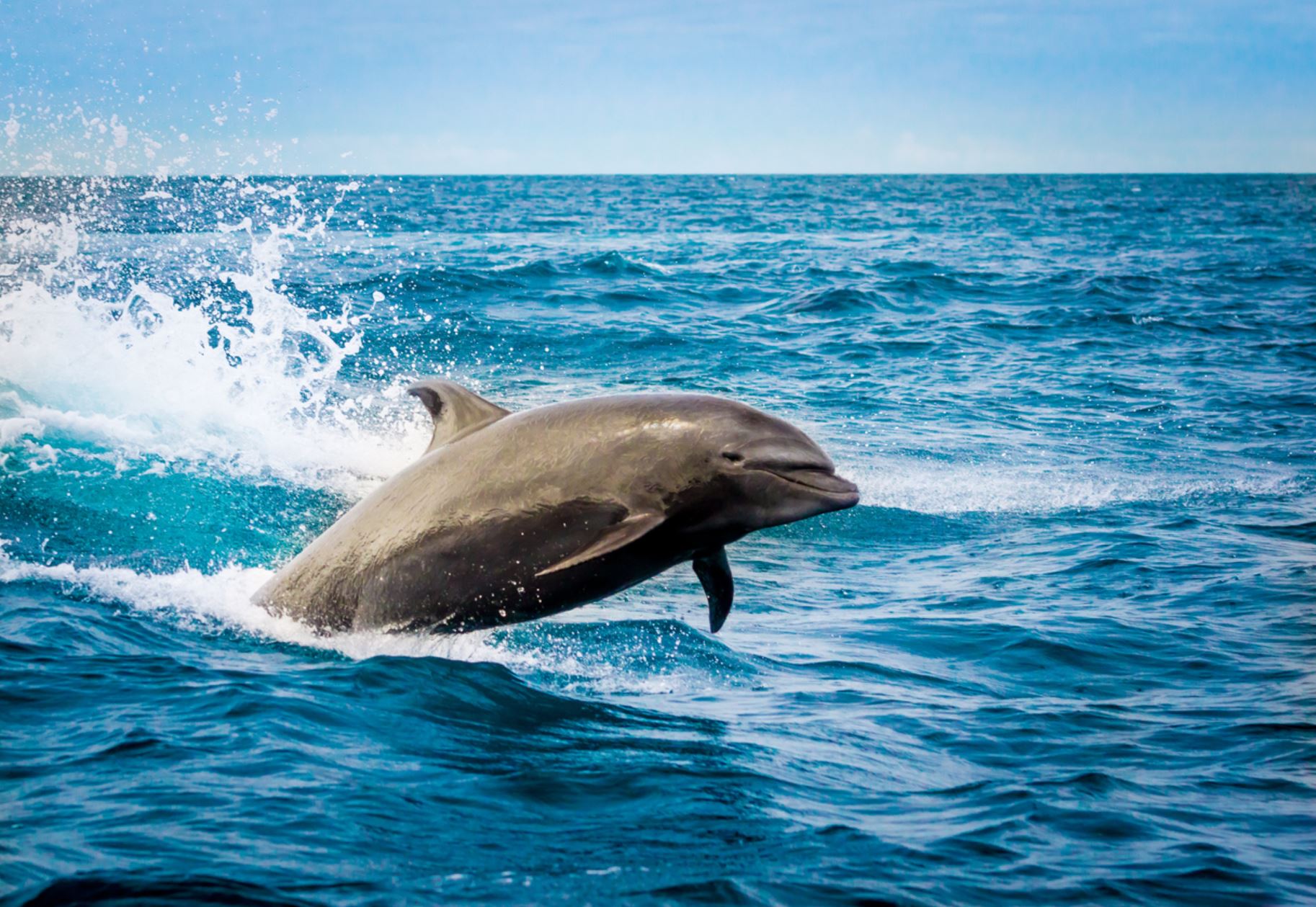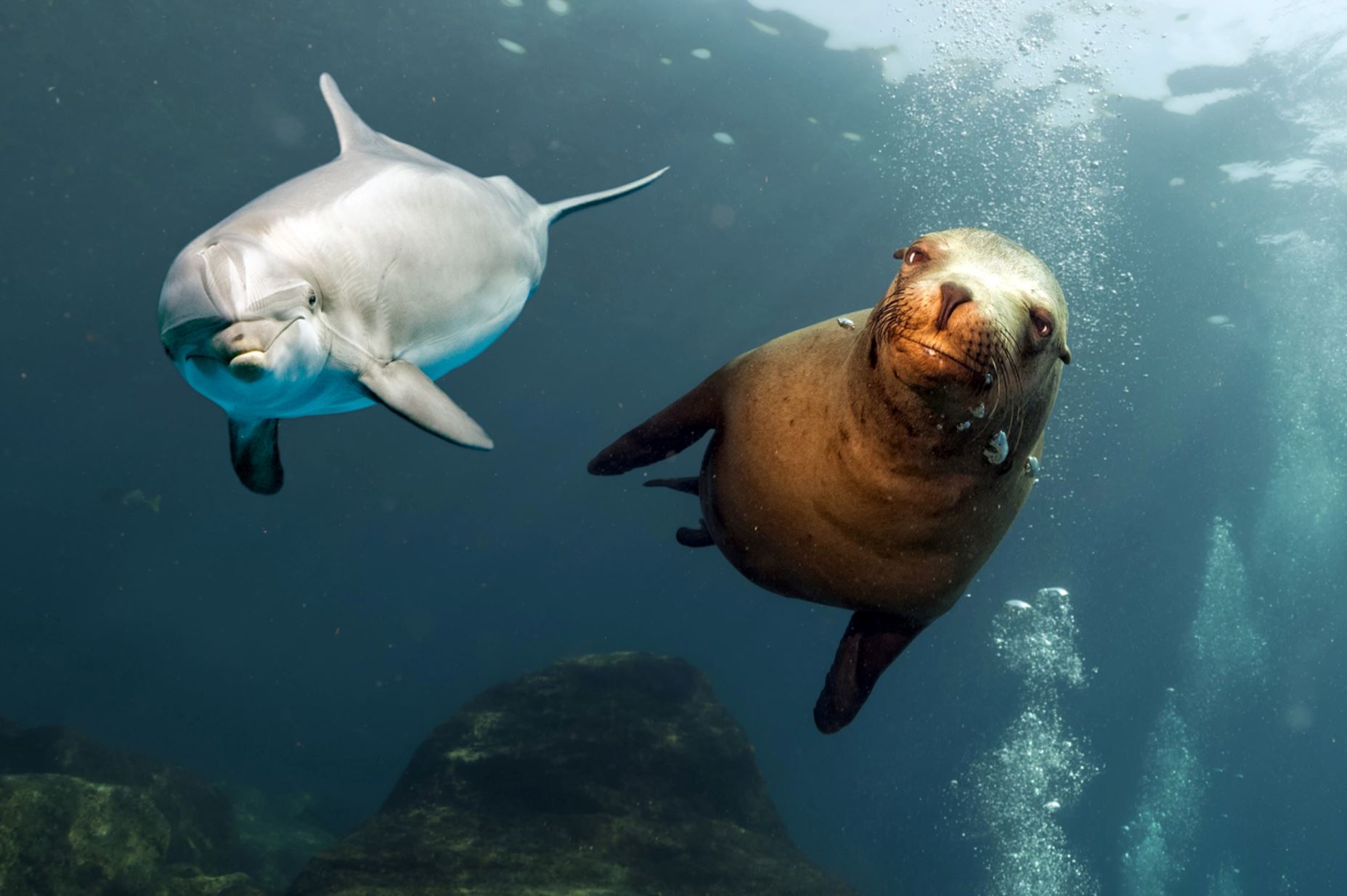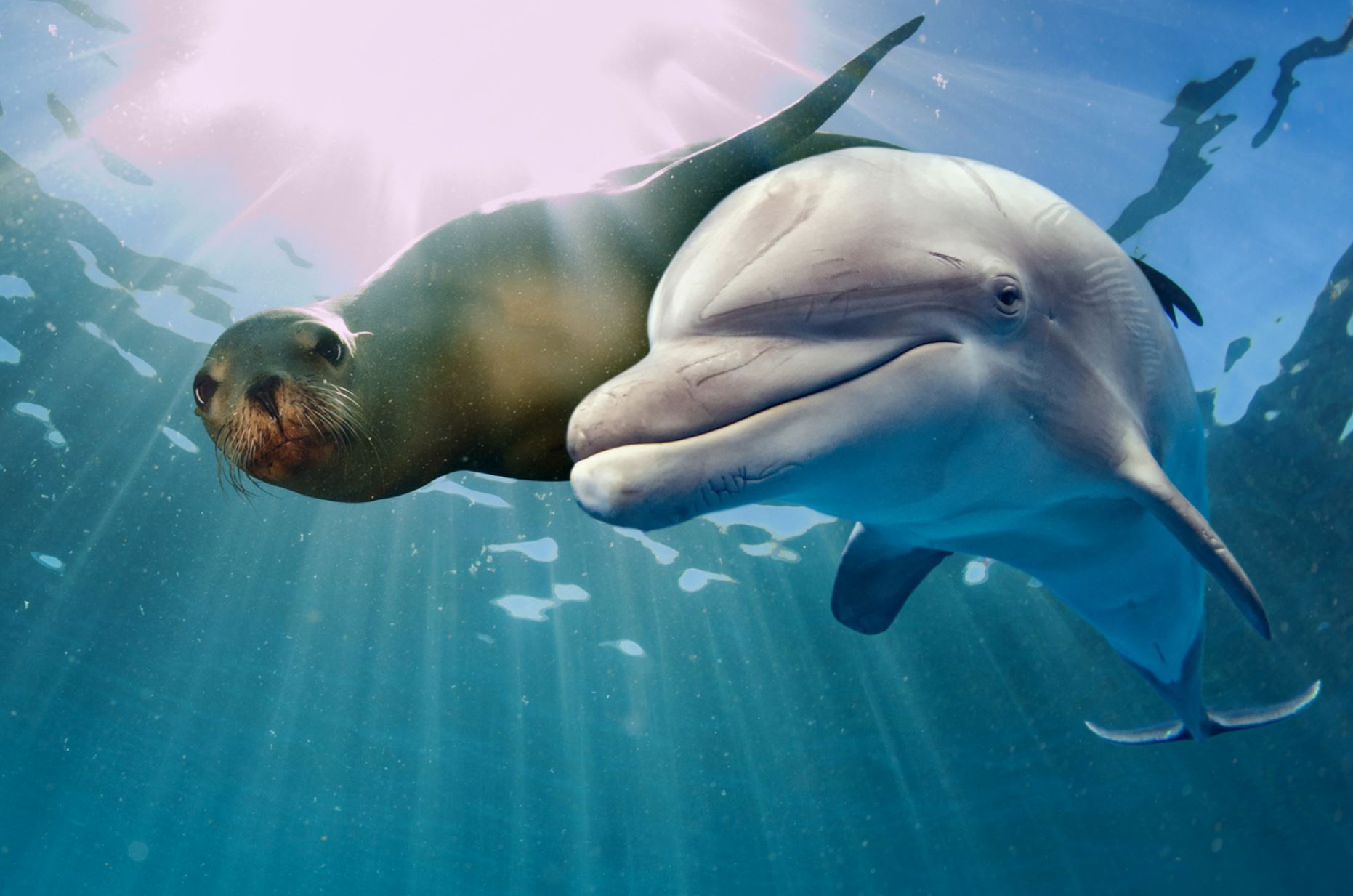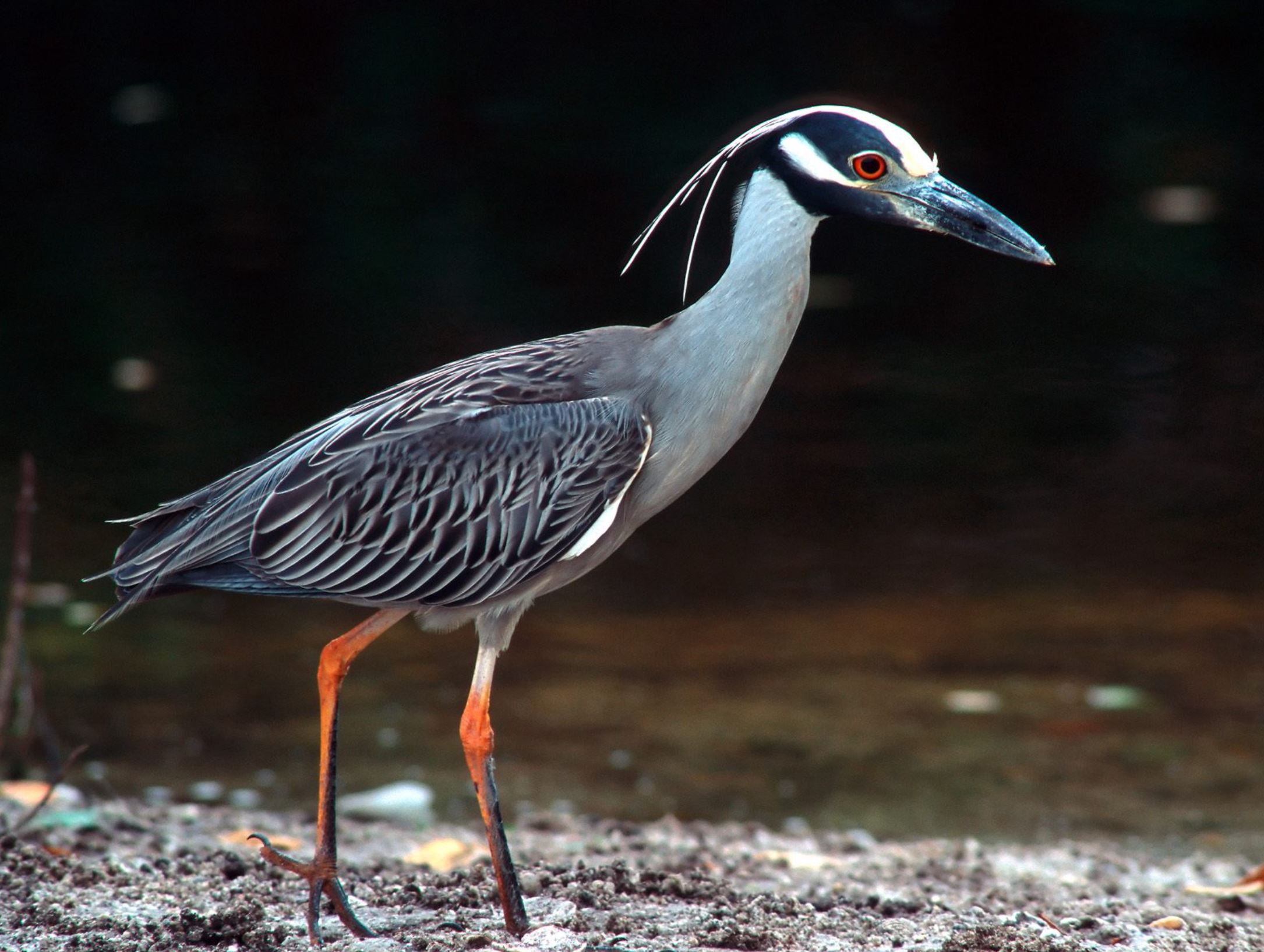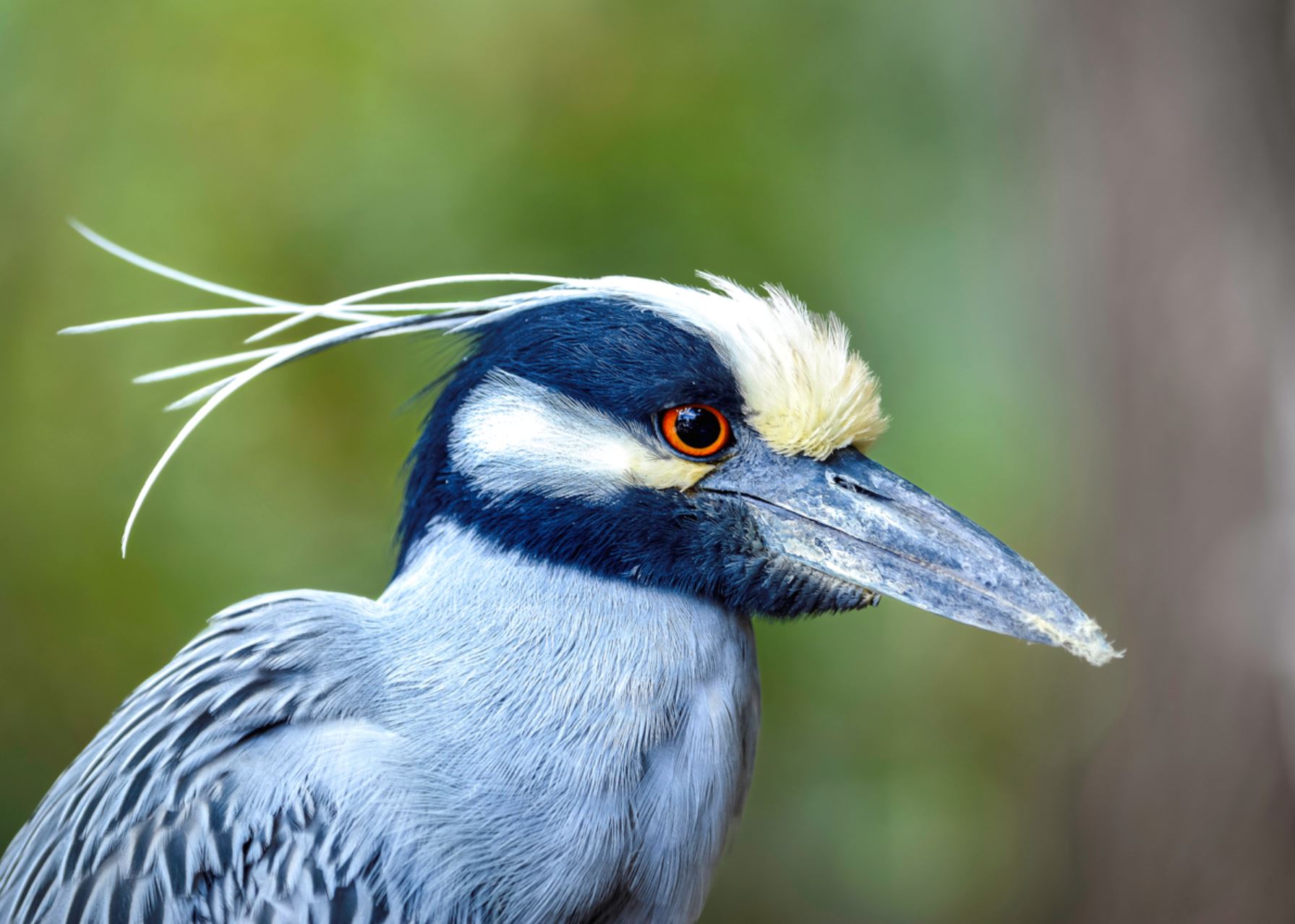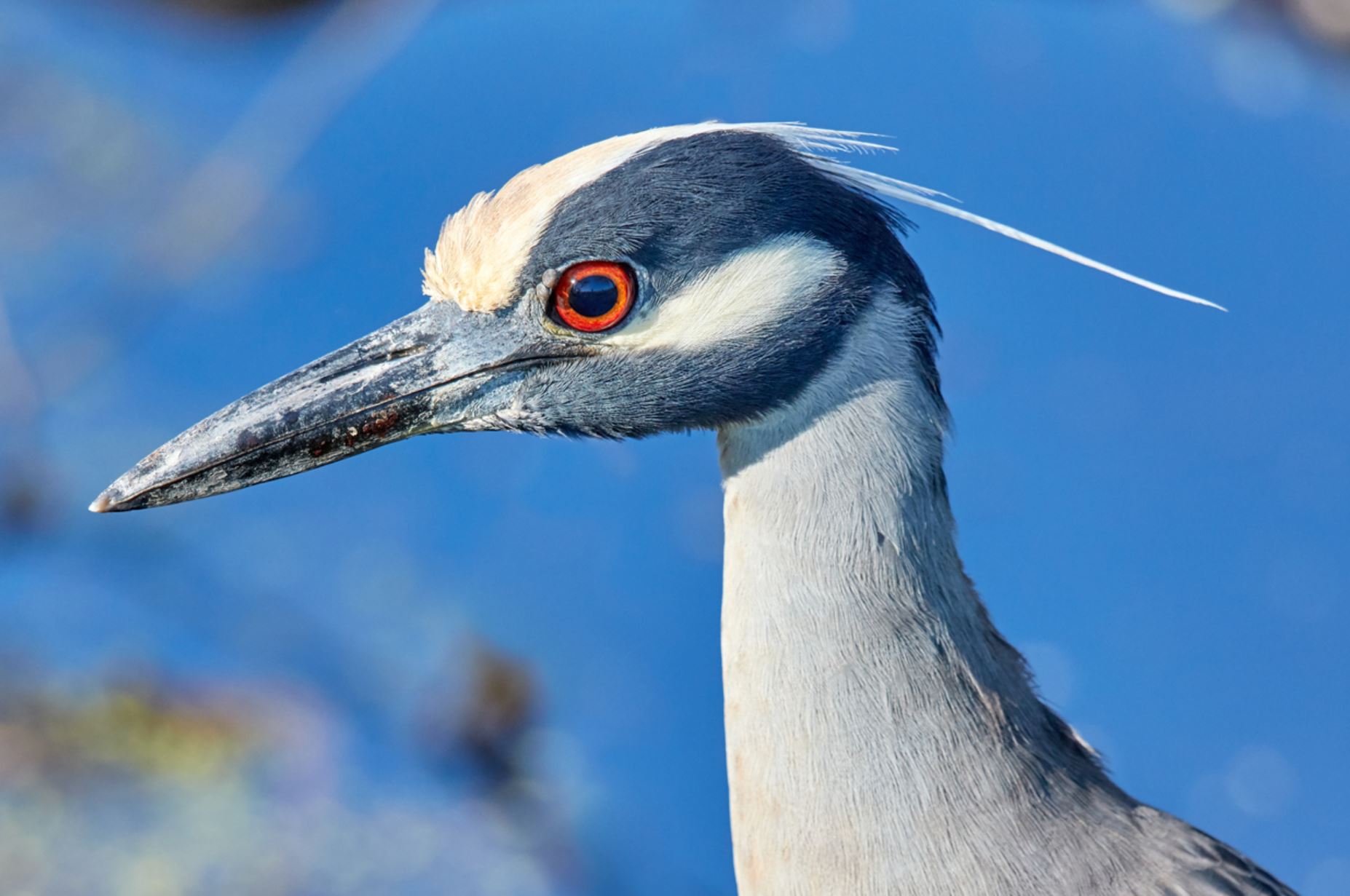Floreana
Animals/Wildlife




Landscape/Views




Snorkeling





Beaches





The first successfully populated island is located on the south east of the archipelago, and is formed by several eroded mountains. Today, less than 200 people populate the island.
Island of mystery. This island witnessed the visit of many sailors, whale hunters and many other adventurers that reached it in search of water, tortoises and even isolation. The dramatic story of the Baroness had place on its beaches and lagoon, and many travelers still today hear from strange events that took place here.
Post Office Bay: the messaging system of the pirates. This island still has a mailing system that was used back in the day by sailors and others that still today receive letters and post cards to be sent to all destinations by visitors that come to the location and leave one of their own.
This Island has very unique ecosystems all very different from each other that can be visited. The singular kinds of beach of different colors, the green and the white one, and the fresh water lagoon where flamingos can be observed during the hot season, gives this island a special place in the archipelago. Marine Turtles nesting, Sea Lions, and Blue-Footed Boobies are some of the highlights of the visit. On this location most flora and fauna are endemic even though there has been a populated town since 1832.
Charles Dawin Journey on Floreana. In this island, Darwin collects the Floreana Mockingbird, later to realize the difference in between the four species to be found in the archipelago and understand a pattern of evolution due to the adaptation differences from each other
Animals: Flamingos, red billed tropicbids, herons, hawks,turtles, sharks, stingrays
Plants: Scalesia Villosa, Lecocarpus Pinnatifidus, Nolana, Sea Grape.
Visitor sites:
Asilo de la Paz, Baroness View Point, Champion islet, Cormorant Point, Devils Crown, La Loberia, Post office Bay, Puerto Velasco Ibarra
Pictures
Highlights / Places to Visit
Asilo de la Paz
Asilo de la Paz (English: Haven of Peace is a location on Floreana island. It is the site of Floreana's first human settlement and is now among the island's most popular tourist attractions. The site has a maximum elevation of 450 meters above sea level. Asilo de la Paz contains an area of intact Scalesia forest that provides important habitat for multiple species of Darwin´s finch, including the critically endangered medium tree finch. A warbler finch (Certhidea fusca), previously considered extinct on Floreana, was reportedly heard at Asilo de la Paz in 2008, although this sighting is not universally accepted. Giant tortoises, previously owned as pets by the island's residents, roam a large enclosed area at Asilo de la Paz. These tortoises are a mixture of species from other islands, since Floreana's native tortoise, Chelonoidis elephantopus, has been extinct on the island since shortly after 1835.
Baroness View Point
Many people temporarily occupied Floreana Island, this place holds secrets that have not been solved.
The Baroness, as she called herself, arrived at the Galapagos Islands on Floreana Island on October 15, 1932 after learning in the European press of millionaires who usually sailed on to visit the first settlers.
The Baroness had an idea of building a luxury hotel that would receive the wealthy who in the future were attracted to visit this tropical paradise, so she announced it through the newspapers that this hotel would give it the name of Hacienda Paradiso.
HISTORY
It was the 1930s when Friedrich Ritter, a doctor from Berlin, and his lover Dore Strauch left their respective spouses and ventured to live on Floreana Island, looking for the solitude of that enchanted corner. At that time, the migration to the Galapagos Islands had only a few Ecuadorian government regulations, and several Europeans obtained permission to settle there. Shortly after their arrival, Mr. Ritter and Estruch discovered why their attempts to colonize Floreana failed, seeing little food and water. Because they were both vegetarians and therefore cannot fish or hunt. Instead of being distracted and reading something that the couple was passionate about, they had to work to survive by growing their own food, in the construction of houses, unfortunately they learned that as a couple they lack much to be compatible.
Their dream of loneliness and having an island for them soon disappeared with the arrival of the Wittmer family, they also came from Germany, they were named the Galapagos “Swiss Robinson Family". But the problems increased when soon after came the unusual threesome of Baroness Eloise von Wagner Bosquet and her two 'companions', including one Ecuadorian. Just two months after their arrival and two Europeans, the Baroness had the intention to build a hotel for millionaires that usually stopped by the islands.
From that moment the previously called "paradise" soon became a complete "hell". The three families could not get along and had constant confrontations for water that was not enough on the island, for territories and other matters. From one moment to the next there was a break between the “Baroness” and one of her lovers. This is how one day the Baroness's favorite lover and she disappeared from the island. There are confusing versions of what happened as well as rumors of murder, but in the end, their bodies were not found. Months later, his second lover leaves the island in a settler's boat, but he also disappears. Some argued that she boarded a boat to Tahiti with one of her lovers because she gave up on the plan for the hotel.
Another version and the one that would seem more logical is that La Baronesa was a very smart woman, but without money she used her seduction skills to enroll with European high society, as she needed money, the Japanese government offered her in exchange for traveling to the Galapagos with the excuse of the hotel; (for espionage services). Phillipson, one of his lovers, was a gigolo who has a deep relationship with the Baroness, he was the contact with the Japanese. Lorenz was a young man who was seduced by her charms and that the Baroness will treat him like her lover and employee to fulfill her needs. In addition, in the group they arrived with an Ecuadorian man who was hired in Paris to guide them in Galapagos. Let's add to this that Mr. Ritter cannot bear the presence of the baroness, because of this he did not lose the opportunity to discredit her with the press back in Europe.
Champion Islet
The Champion Islet, located off the north coast of Floreana Island, is one of the best places in Galapagos for snorkeling, diving and dolphin watching. It was named after Andrew Champion, a famous whaler. An impressive diversity of species awaits to be observed on land during a Zodiac cruise, like penguins, flamingos, blue-footed boobies, frigates, and the Floreana mockingbird, an extremely rare species with approximately 100 individuals left. But the major attractions can be found in the water: Galapagos sharks, sea lions, sea turtles, whales, starfish, giant mantas and many more amazing animals.
Difficulty: Moderate
Disembarkation: No Landing
Interactions: Snorkeling , Dinghy Ride
Highlights at Champion Islet
- Coral Wall
- Excellent Snorkeling
Blue-Footed Booby, Brown Pelican, Darwin’s Finches, Galapagos Dove, Galapagos Frigatebirds, Galapagos Green Turtle, Galapagos Lava Lizard, Galapagos Marine Iguana, Galapagos Mockingbird, Galapagos Penguin, Galapagos Petrel, Galapagos Racer Snake, Galapagos Sea Lion, Galapagos Sea Robin, Galapagos Sharks, Galapagos Shearwater, Galapagos Sting Rays, Red-Billed Tropicbird
Devil´s Crown
Devil’s Crown is nearby to Florean Island . It is near to the Punta Cormorant visitor site, and it is considered to be one of the best places to snorkel in the Galapagos Islands. The Devil’s Crown is recognizable for being a sort of circle of rocks that stick out from the water. They look a bit like a crown, hence the name given to this spot. The site is known to have been a volcanic crater. This makes it a superb place to snorkel and dive because marine life lives among the rocks that can be found there. Here we will cover everything you need to know about Devil’s Crown Galapagos including what to do there, how to visit, best time to go, wildlife and our own Insider recommendations for your Devil’s Crown tour.
Things to Do in Devil's Crown Visitor Site
Devil’s Crown snorkeling is among the best snorkeling in Galapagos. Aside from its fabulous opportunities for snorkeling, the other thing to do here is to go diving. Remember that if you want to dive here you will need to take a live aboard Galapagos cruise that is allowed to offer diving in the Galapagos – because not many are, and also note, not all of these boats will have Devil’s Crown on their itinerary.
At Devil’s Crown you can expect a very wet landing. This is because the site is off the coast and there is no land here. You’ll be getting out of your boat directly into the water – either by jumping or easing yourself in – whatever your snorkeling guide says.
Devil’s Crown can only be visited from a Galapagos island cruise. It used to be possible to visit on a day tour, but this is now no longer allowed. This means that if you are on a land-based tour to the Galapagos Islands you will not be able to visit this spot. Make sure your cruise tour does include this site in its itinerary.
La Loberia
The beach and the bay La Lobería are located at a short walking distance from the town Puerto Velasco Ibarra. The trail from the town to the beach leads through rocky and sandy areas. La Lobería is the main leisure area of the approximately 100 villagers that live on Floreana Island. It is possible to go swimming, snorkeling and kayaking. The beach’s name derives from the many sea lions (lobos marinos) that gather here. You can also observe marine iguanas.
Highlights: Sea lions
Activities: Easy hiking, snorkeling, swimming, kayaking
Tip:A lways keep your distance from the animals, especially the male sea lions as they can be aggressive.
Post Office Bay
In the north side of Floreana, there is the Post Office Bay. Its name gets in 1793, by the Captain James Colnett, who installed a wooden barrel that will serve sailors’ as a post office. Seamen will drop-off letters there, in other for another sailor, who would be headed back home, to take the letter with him and deliver it to the recipient. Nowadays, the tradition is still alive and tourist will leave behind letters and postcards, with the hope that other tourists will take them, for free, back to their country. The delivery time can take days, weeks or even up to years! However, there has been cases where the letter arrives back home before the sender does!
Here, it is possible to see Darwin finches, yellow warblers and lava lizards. There are great snorkeling opportunities to see green pacific sea turtles and playful sea lions on main beaches. Moreover, this island is best known for its endemic vegetation: Scalesiavillosa, Leococarpuspinnati dus and the Galapagos millwork.
- Disembarking: Wet
- Type of Terrain: Sandy
- Physical Conditions Required: Low
- Activities: 30 min hike / 1 hour snorkeling
- Highlights: Historical place, this island is best known for its endemic plant life: Scalesia villosa, Lecocarpus pinnati dus, and Galapagos milkwort. Snorkelers can practice on the main beach among playful sea lions.
Puerto Velasco Ibarra
Puerto Velasco Ibarra is a small village on Floreana Island, the first colonized island in Galapagos, in 1832. Here you can find the island's only hotel, Pension Wittmer. Members of the first family who lived in Galapagos still run the hotel, and most of the island's population of 120 residents live in this hamlet. It is a perfect place for long peaceful walks and wildlife-watching, as this tiny settlement is set in a sheltered bay, with a black-sand beach. Locals can also drive you into the highlands through the forest in a chiva, an open-sided bus.
Difficulty: Easy
Disembarkation: Dry Landing
Interactions: Hiking
Highlights at Puerto Velasco Ibarra
First Colonized Island
Animals:
Darwin’s Finches, Galapagos Dove, Galapagos Frigatebirds, Galapagos Giant Tortoise, Galapagos Lava Heron, Galapagos Lava Lizard, Galapagos Marine Iguana, Vermilion Flycatcher
Animals that can be seen on the island
Blue-footed booby
The blue-footed booby is native to the tropical regions of the Pacific Ocean and is part of the six species of boobies. There are about six thousand blue-footed boobies in the Galapagos, typically nesting on the rocky shores and cliffs of the islands. Half of the world’s population live in the archipelago.
Their clumsiness on the ground, lead the bobby to be named by the Spanish “bobo,” which means silly or stupid. The blue-footed booby has an aerodynamic shape and the extraordinary binocular vision make it one of the best fishing birds. It breathes by the corners of its beak and their nostrils are permanently blocked as they dive to feed. They can reach the speed of 90kmh (60mph) diving in water, and they can go down to depths of 25m (82ft).
In males, the brighter the blue color of the feet, the more reproductive success they may have. Female boobies lay between two to three eggs a year, creating high competition between the offspring and resulting in one survivor that portrays natural selection in every generation. Both take care of the nest for about 45 days and feed the chicks together, by regurgitation for approximate two months.
The boobies are opportunistic breeders, preferring the cold season to mate (June-August). Overall, they tend to be monogamous and their courtship ritual is one of the most entertaining to witness. The male offers a present, usually a rock or a branch, and then dances in front of the female showing the feet and making noises while standing with the beak up high and the wings wide opened with tips to the sky.
Males and females are very similar, differences are that females are slightly bigger and have a larger eye pupil.
- Animal Group: Seabirds
- Scientific Name: Sula nebouxii
- Animal Average Size: 81 cm
- Animal Average Weight: 1.5 kg
Where can you find with a little bit luck the blue footed booby in Galapagos:
Rábida island
Isabela island
Santa Cruz
North Seymour
Floreana
Brown Pelican
Pelicans are large, heavy waterbirds with short legs, webbed feet, and exceptionally long bills. The bill has a large, distensible pouch, used as a scoop-net to catch fish. In flight, pelicans hold their head and neck drawn back and have slow, rather ponderous wing beats. Their large wingspan makes them accomplished gliders. Pelicans are very ungainly on land, rarely walking far; however, they are comfortable around humans, especially around fishing boats or ports where they can get an advantage of the food available from fishermen.
The brown pelican is a common resident of Galapagos, an endemic species that goes by the scientific name of Pelecanus occidentalis urinator. Its population is estimated at a few thousand pairs that breed throughout the year, nesting in small colonies in low bushes and mangroves, occasionally on the ground, and laying up to two eggs that are incubated by both sexes. Males and females are alike, with brown plumage in their bodies and yellow heads. Their beaks are whitish gray with patches of red.
- Animal Group: Seabirds
- Scientific Name: Pelecanus occidentalis
- Animal Average Size: 105 - 152 cm
- Animal Average Weight: 3.17 - 3.7 kg
Places where you may see this animal:
Santiago island
Santa Cruz island
Santa Fé island
Floreana
Galapagos Dove
One of the more attractive and pleasant birds to encounter on the islands is the Galapagos Dove. The Galapagos Dove is a tame and well-mannered creature. It is reddish brown with black and white markings, touches of incandescent green, red feet and a bright blue eye ring. The Galapagos Dove grows to measure between 18 and 23 centimetres long. Its beak is curved downward, larger and more curved than most other doves.
The Galapagos Doves curved beak helps it feed mainly on seeds picked from the ground mainly from the Opuntia cactus. Cactus pulp forms part of their diet and is probably their main source of water.
The Galapagos Dove is endemic to the islands and is found in the more arid parts of the main islands. A process of evolution on Genovesa Island has softened the spines of cactus plants and thereby allowed the Galapagos dove access to pollinate the flowers. This has occurred due to the lack of bees that would normally perform this function.
The Galapagos Dove is most commonly seen on the ground where it forages for seeds and fruits. Even if disturbed it is reluctant to take to the air and if it does, it only flies for a short time.
- Animal Group: Landbirds
- Scientific Name: Zenaida galapagoensis
- Animal Average Size: 18 – 23 cm
- Animal Average Weight: 180 - 350 gr
Places where you may see this animal:
Isabela
Santiago
Rábida
Genovesa
Santa Cruz
North Seymour
Floreana
Española
San Cristobal
Galapagos Frigatebirds
The Great Frigate Bird resembles a huge blackbird that hovers lazily in the sky. Frigate birds belong to the family Fregatidae, which contains five species world-wide. In the Galapagos there are two species: the Great Frigate bird and the Magnificent Frigate bird. Of the two, the Great Frigate bird has the greater world-wide distribution, being found primarily throughout the tropical Pacific and Indian Oceans.
The Magnificent Frigate bird is found in the Caribbean and on the Pacific and Atlantic coasts of the Americas. The Galapagos population of Magnificent Frigate birds is considered to be an endemic subspecies.
In the Galapagos, the two species can be seen nesting side by side, but when Frigate birds are sighted in the air, they typically are Magnificent Frigate birds, as Great Frigate birds tend to forage much further out at sea. As with the three similar species of Booby birds, similar species of Frigate Birds avoid competition by feeding in different locations.
You can tell the two species of Frigate birds apart by their sounds – a Great Frigate bird makes a ‘gobbling’ noise like a turkey, while a Magnificent Frigate bird will make a rattling or drumming sound.
Great Frigate birds are large, with iridescent black feathers (the females have a white underbelly), with long wings (male wingspan can reach 2.3 metres) and deeply-forked tails. The males have inflatable red-coloured throat pouches, which they inflate to attract females during the mating season.
Both species of Frigate bird have extremely high wingspans to bodyweight ratios allowing them soar and to fly extremely well and with excellent control. Using this control, Frigate birds routinely steal food from other birds by grabbing them by their tail feathers and shaking them until they regurgitate their food.
However, Frigate birds are also capable of capturing their own prey. Since Frigate birds have only a small oil gland and very little waterproofing in their wings, Frigate birds cannot dive and must instead rely on their superb aerobatics to snatch flying fish out of the air.
- Animal Group: Seabirds
- Scientific Name: Fregata magnificens
- Animal Average Size: 215 cm
- Animal Average Weight: 1.1 kg
Places where you may see this animal:
Genovesa
North Seymour
San Cristobal
Floreana
Galapagos Giant Tortoise
The giant tortoise is one of the biggest living reptiles, and they have the longest life from all vertebrates, living more than 100 years. The oldest tortoise known on record was 152 years. No reliable data exists to tell the age of a tortoise; however, fungi found in the carapaces, together with blood tests can help determine an approximate age. There are now only 11 species, 4 less than when Darwin visited the islands. Currently, they live in 7 different islands of the archipelago. They have struggled through volcanic eruptions, fires, hunting and introduced species threats. There are about 15 thousand tortoises living in the islands.
Their first ancestor is thought to have first arrived in San Cristobal Island. All the species were before considered subspecies of Chelonoidis nigra, but today each one are plain species. Darwin noticed the difference in the shell shapes of the tortoises according to each island, reaching to the conclusion that they all changed from one single ancestor to the different environments of each island, although the saddle backed shape is thought to have evolved independently from the others.
How did the giant tortoises arrive and establish in the islands? The theory states that these giant reptiles were transported by massive floating platforms that were built naturally by heavy rains on the amazon that put down and stocked many trees together. Tortoises most likely walked on these platforms to cross a river, or to feed, or maybe by mistake and then later got carried with the river currents to the ocean and then to the Galapagos in a long journey in which most animals died. These tortoises were better prepared for the environment of the Galapagos and this journey than many other animals, having the ability to survive without much food or water. This allowed them to reproduce and spread around. Once on the islands, after consecutive similar events happening many times during a long period of time, they started developing adaptations to feeding and walking around the isolated different islands of the archipelago.
There are two carapace shapes: the dome, and the saddle-backed. All tortoises have adapted to the vegetation and landscape of their surroundings. Males are bigger than females, and also have a longer and thicker tail where they have their reproductive organ.
They can weight to 300k (660lb), are as large as 1.50m (5ft), and reach sexual maturity at the age of 20 to 25 years. They are herbivores and feed on more than 50 kinds of plants including a poisoned apple tree, endemic guava, opuntia and fruits. It takes them from 1 to 3 weeks to digest their food, and have inefficient digestive tracks. Their slow metabolism and water reserves allow them to live up to around one year without food or water. They spend more than 15 hours a day resting.
They reproduce at any time of the year, but prefer the wet season. Turtles lay from 4 to 15 eggs in the warm grounds of the lowlands. Hatching occurs mostly in the months of December to April. They can be seen usually in the highlands of the islands, taking refreshing mud baths and nesting in the lowlands on a hot day.
- Animal Group: Reptiles
- Scientific Name: Geochelone elephantopus
- Animal Average Size: 150 cm
- Animal Average Weight: 300 kg
Places where you may see this animal:
Isabela
Santiago
Santa Cruz
Floreana
Española
San Cristobal
Galapagos Green Turtle
Turtles are one of the most widespread species of marine turtle, found in tropical and subtropical waters throughout the globe. However, the Green Sea Turtle (Chelonia Mydas) is the only species of turtle that nests in the Galapagos Islands.Research has revealed that the nesting colony in the Galapagos is the largest in the East Pacific.
The Green Sea Turtle was so named because of the green colour of its body fat. The adult turtles algae diet is responsible for the colour in its tissues.
Green Sea Turtles body is wonderfully adapted to life in the ocean. Their shells are lighter and more streamlined than those of their terrestrial counterparts and their front and rear limbs have evolved into flippers making them efficient and graceful swimmers, capable of swimming long distances in a relatively short period of time. Green Sea Turtles have been known to move through the water as fast as 35 miles per hour. The Turtles sometimes emerge on to land to bask in the sun.
Green Sea Turtles are cold-bloodied. Adult green turtles are known to grow up to one and a half metres long. While individuals have been caught that reached weights of up to 315 kilograms (694 pounds), the average weight of mature individuals is around 200 kilograms (440 pounds). The largest Green Sea Turtle ever recorded weighed 395 kilograms (871 pounds).
The Green Sea Turtles shell is actually its skeleton. Unlike its cousin, the Tortoise, the Green Sea Turtle cannot retract its small head into its shell for protection from dangerous sea creatures.
Sea turtles have come up with an ingenious way to rid their bodies of the salts they accumulate from the seawater in which they live. Just behind each eye is a salt gland. Their salt glands help sea turtles to maintain a healthy water balance by shedding large ‘tears’ of excess salt. If a sea turtle appears to be ‘crying’ it is usually not cause for alarm, as the turtles are merely keeping their physiology in check. It is not because they are upset or sad.
Green Sea Turtles spend most of their life in the ocean. The males never leave the ocean, but the females come ashore to nest and lay eggs on several of the islands.
At night, the females dig pits on the sandy beach with their back flippers. They lay about 100 eggs and then they cover their pit. Green Sea Turtles leave the island and go back into the sea never returning to see their eggs. After the baby green sea turtles are about 6 months old, they start to eat algae and seaweed.
- Animal Group: Reptiles
- Scientific Name: Chelonia mydas
- Animal Average Size: 150 cm
- Animal Average Weight: 68 – 250 kg
Places where you may see this animal:
Santiago
Bartolomé
Santa Cruz
Santa Fé
Floreana
Galapagos Hoary Bat
This is the larger of the two resident Galapagos bat species and it can be found throughout the Galapagos archipelago, with recorded populations on Santa Cruz, San Cristóbal, Isabela, Santiago, and Floreana Islands.
Male and female Red bats have different migrating routines. Female bats are usually found in warmer climates during the month of June. Males are mostly found in the Highlands of Santa Cruz or Isabela. Due to the difference in migrating patterns, it makes it difficult for them to breed because they are constantly quite far apart.
The Hoary Bat is so-called because its long, dense grey-brown fur is tipped with white - making the bat look like it as a covering of frost, or hoar. It’s one of the more attractive bat species, with this dense fur covering giving it an almost “cuddly” appearance!
Hoary bats don’t roost together in colonies, instead they prefer to roost in dense vegetation on their own, hanging upside down under the tree canopies. In the Galapagos they are best seen on the inhabited islands where, like the smaller Red Bat, they will hunt around the streetlights that attract their insect prey. If you are enjoying an overnight stay before or after your cruise on either San Cristobal or Santa Cruz you may well have the chance to observe these creatures as you walk in the evenings.
might have. When they are on the ground and can not move, do not touch them or try to help them. Red Bats are liable to bite and cause infections. If a person comes into contact with one and is bitten, this person needs to seek medical attention as soon as possible.
- Animal Group: vesper bat family, Vespertilionidae
- Scientific Name: Lasiurus cinereus
- Animal Average Size: 13 – 14 cm
- Animal Average Weight: 26 gr
Places where you may see this animal:
Highland of Santa Cruz
San Cristobal
Isabela
Santiago
Floreana
Galapagos Lava Heron
The lava heron or Galapagos heron inhabits the intertidal zone and the mangrove areas, feeding at the open shoreline by slowly moving in the shallow waters or even diving into them. Apart from crab and fish, it also eats insects, lizards, and eggs. Its dark shades of gray help them to blend in with the rocks in order to hunt.
Males and females look similar, their feet, head, and eyes get brighter tones in courtship time and it is an opportunistic breeder. The mating months are September to March where females and males create a loud sound, show aerial displays and chase other herons in order to get a monogamous partner. They lay from 1 to 3 eggs in random safe areas of the lowlands around mangrove trees, that take around 22 days to hatch. They protect their territory by chasing intruders and making loud noises.
Due that their meals are on the ground, this bird prefers to walk instead of flying. They can be spotted walking or jumping along their feeding areas, found in all islands.
- Animal Group: Shorebirds
- Scientific Name: Butorides Sundevalli
- Animal Average Size: 45cm
- Animal Average Weight: 190-235 g
Fernandina
Isabela
Santiago
Santa Cruz
Floreana
Española
San Cristobal
Galapagos Lava Lizard
Lava Lizards, scientifically known as Microlophus albemarlensis, are found on the Galapagos Islands. They are cold-blooded omnivores found in large groups moving around in the sun on top of the black lava that covers most of the islands. This movement in the sun keeps them warm, and gives them their name: Lava Lizards.
Galapagos Lava Lizards are small reptiles of 6-12 in (15-30 cm) long with tapering tails, slim bodies, pointed heads, long toes, and scaly skin. Their physical appearance, including their markings and color, varies based on where they live. Lava Lizards are of seven distinctive subspecies, out of which six species are found among six different islands with just one species inhabiting one island alone. They are commonly sighted all year-round and are usually active during the day. When mature, males have an intense coloring of a yellow, brown, grey-black speckling throat and a short crest of spiny scales along the back, whereas females have red or orange cheeks. Lava Lizards are unafraid of humans, so if you are ever lucky enough to see one in real life, you might be able to get your very own photo of these amazing reptiles!
- Animal Group: Reptilia
- Scientific Name: Microlophus albemarlensis
- Animal Average Size: 15 – 30 cm
- Animal Average Weight: 250 g
Isabela
Santiago
Santa Cruz
San Cristobal
North Seymour
Santa Fé
Floreana
Española
Galapagos Marine Iguana
The marine iguana is the only marine species of lizard in the world; it has changed its behavior, diet and physiology through natural selection during thousands of years.
There are seven subspecies, most of them developed in different islands. They have black bodies that sometimes especially during mating season and in different times on distinct islands, can have some colorful patches with green, orange, grey and yellow tones.
Marine Iguanas are ectothermic animals, same as all reptiles. As a result, they need to thermo regulate their activities in order to survive, by behavior. They need to warm up with the sun to the ideal temperature of 35.5C to successfully perform an activity such as feeding, or to even move from one place to another. Their actions are dependent on the water temperature and climate, for example entering the ocean to feed they can lose up to 10C (mainly in the night).
Marine Iguanas must constantly warm up in daylight by lying flat, in order maximize how much heat they are receiving, also marine iguanas need to cool off when the sun is too strong by avoiding direct rays on their body. These animals are capable to even slow down their metabolism and heartbeat, in order to optimize their energy consumption. Typically, marine iguanas feed once a day, but depending on their size and needs they can do it every two or three days.
Sexual maturity is reached after 8 years and they can lay between one to four eggs, breeding season is usually in the months of November and December.
Marine Iguanas can be seen on the majority of the Galapagos shoreline as they feed on algae that grow in all intertidal zones of the archipelago. They are able to feed on almost all kinds of seaweed with the exception of the brown one ( it makes them sick). They prefer shallow water or exposed sea weed in order to feed without the necessity of diving, thus saving body temperature. However, it needs to be clear that marine iguana can dive as deep as twelve meters and hold their breath for about one hour if needed.
Their flattened tails help them to swim efficiently. These iguanas have developed a special gland to secrete the salt they ingest by feeding, such gland is located by the ear and is connected to the nose rich from where they expel a salty solution. Such salty solution is expelled by sneezing.
- Animal Group: Reptiles
- Scientific Name: amblyrhynchus cristatus
- Animal Average Size: 70cm
- Animal Average Weight: 13kg
Fernandina
Isabela
Santiago
Bartolomé
Santa Cruz
Santa Fé
Floreana
Española
Galapagos Petrel
Galapagos petrels are seabirds endemic to the Galapagos Islands, though they can be found foraging as far as western Central America and northern South America, feeding mostly on squid, fish and crustaceans. They spend most of their time out at sea but during the breeding season, which starts in late April, they can be found in the humid highlands of several islands.
Galapagos petrels look very similar to Hawaiian petrels, especially when seen at sea. They are medium-sized with long wings, grey-black underparts and white foreheads. Their legs and feet are pink with black webbing. They have short, hooked bills, with tubular nostrils that meet at the top – a feature of all petrel species. Their tails are wedge-shaped and white in colour.
The petrels tend to return to the same nesting site and mates every year. Due to the rocky nature of the Galapagos landscape, they usually nest in burrows or natural cavities on slopes. Once the eggs, between two and four, are laid, the pair take turns to incubate them with the male taking the first shift so that the female can replenish her energy. Their chicks hatch after around two months and are fed by both parents via regurgitated food. Galapagos petrels usually forage around the east and north of the Archipelago. During the breeding season they can be found in the highlands of Santa Cruz, Floreana, Santiago, San Cristobal and Isabela islands, between 300 and 900m above sea level.
- Animal Group: seabird
- Scientific Name: Pterodroma phaeopygia
- Animal Average Size: 50 cm
- Animal Average Weight: 1,5 – 2,5 kg
Isabela, Santa Cruz, Floreana, Santiago, San Cristobal
Galapagos Racer Snake
Racer snakes on Galapagos are constrictors and only mildly venomous. They are known to prey on lava lizards, geckos, insects, iguanas, mice, rats and hatchlings of several bird species. They are not at all aggressive towards humans and could not do much harm if they were to attack after being threatened. Racers tend to be dark brown with stripes or spots.
There is some confusion over the number of species of racer snake found in Galapagos due to poor research. The latest research suggests that there are: the Galapagos racer (Pseudalsophis biserialis) from San Cristobal and Floreana – though it is locally extinct on Floreana and now only found on nearby islets; the Espanola racer (Pseudalsophis hoodensis) from Espanola and adjacent islets; Santa Cruz racer (Pseudalsophis dorsalis) from Santa Cruz, Baltra, Santa Fe and adjacent islets; Fernandina racer (Pseudalsophis occidentalis) from Fernandina, Isabela, and Tortuga; banded racer (Pseudalsophis slevini) from Pinzon; and the striped racer (, ) from Baltra and Santa Cruz.
It is the Fernandina racer which has been observed hunting for marine fish from rock pools and the shallows around Fernandina. The British biologist Dr. Godfrey Merlen was the first scientist to ever see this behaviour happening as he noted up to 15 individual snakes slithering around the lava rock pools around Cape Douglas. This is a unique behaviour of terrestrial snake not observed anywhere else in the world. The racers on Fernandina were also the stars of BBC´s Planet Earth II where they were filmed hunting juvenile marine iguanas.
Racer snakes can be found in Galapagos on most of the major islands, though they are now locally extinct on Floreana. The snakes are found throughout the year, but unlike many other Galapagos animals they are shy of humans and will hide away making them reasonably tough to spot without looking for them specifically. They are diurnal, most active around dawn and dusk, and often rest around midday. The native snake population has been decimated by introduced species such as cats, pigs and feral goats which forage for their eggs.
- Animal Group: snakes
- Scientific Name (depending from the islands): Pseudalsophis biserialis, Pseudalsophis hoodensis, Pseudalsophis dorsalis, Pseudalsophis occidentalis, Pseudalsophis slevini, Pseudalsophis steindachneri
- Animal Average Size: 80 cm bis 1,20 m
- Animal Average Weight: 8 – 10 kg
Racer males can be found in Galapagos on most of the major islands!
Galapagos Sea Lion
There are two species of sea lions in the Galapagos: the most common one is the Galapagos sea lion (Zalopus wollebacki) and the other one is the fur seal (Arctocephalus galapagoensis). Both are endemic to the Galapagos and are believed to have traveled south from North America and northern locations.
The Galapagos sea lion is one of the most emblematic animals of the Galapagos, with a hight of 1.50m to 2.50m (60 to 100 inches) and can weigh up to 250k (550lb). These sea lions are different from their relatives in California, being smaller and more sociable. They have external ears and the capacity of using their strong frontal fins to gallop inland and climb the rocky shores of the islands. The Galapagos sea lion, prefers the beach to the rocks and form colonies on them.
This species presents sexual dimorphism, which means they have physiological differences between the genders. Males are usually three to four times bigger than females and are usually darker in fur tones, additionally, the adult males present a bump in the head known as sagittal crest. Sea lions are fully developed at the age of ten years old but are sexually active at six years old. Females live up to 24 years and males usually about 18 due to the extra energy expense during all the reproductive life.
When forming a colony, only one Alfa male will reproduce and take care of the whole group, in some areas like San Cristobal you can observe colonies of more than 300 in a single beach. During mating season (July to December) the males fight for territory and for reproduction. This can be an extreme show of strength and speed.
Females have one pup a year that takes 11 months to be born. The pup lactates from the female every day, after she returns from fishing, for as long as two years, sometimes competing with the previous year new born. Sea lions, do not synchronize their breeding, this results in one of the reasons for the decreasing numbers.
Sea lions feed mainly on small fish, sardines, squid and other mollusks. Data has revealed that they can dive down to 200 meters and hold their breath for more than 20 minutes.
Their natural predators are sharks and orcas, whales very rarely fish sea lions in the Galapagos. The biggest colony of sea lions of the archipelago is in Puerto Baquerizo Moreno and San Cristobal. Here these animals cohabit with humans, preferring the populated beach, to the isolated ones of the island.
The fur seal is smaller than the sea lion, about 1.5m (5ft). This subspecies is very shy and rare to see. They prefer the rocks, to the beach and they have nocturnal habits. Fur seals are less in numbers when compared to the sea lion, as they were heavily hunted back in the day by the first colonizers.
- Animal Group: Mammals
- Scientific Name: Zalophus wollebaeki
- Animal Average Size: 150 - 170 cm
- Animal Average Weight: 60 - 100 kg
Fernandina, Isabela, Genovesa, Santiago, Rábida, Santa Fé, Daphne Major, North Seymour, Mosquera, Floreana, Española, San Cristobal.
Galapagos Sea Robin
The Galápagos sea lion (Zalophus wollebaeki) is a species of sea lion that breeds on the Galapagos Islands and, in smaller numbers, on Isla de la Plata (Ecuador). Being fairly social, they are often spotted sun-bathing on sandy shores or rock groups or gliding gracefully through the surf. Their loud bark, playful nature, and graceful agility in water make them the "welcoming party" of the islands. They are the smallest sea lion species and leave very often up to 400 m down the water.
- Animal Group: Otariidae
- Scientific Name: Zalophus wollebaeki
- Animal Average Size: 30 cm
- Animal Average Weight: 500 – 750 g
Isabela, Floreana
Galapagos Stingrays
Seen from the side, this animal is perfectly flat, with pectoral fins that extend to the head. The eyes are located at the sides of its head and with breathing cavities near. The diameter on average is from about 30 cm to less than 1 m. Stingrays are close relatives to sharks, with the common factor that both are cartilaginous fish that swim in warm waters of tropical oceans.
They will have one baby per year, and when the baby is born it will have to fend for itself. The females keep the egg and the juvenile in their uterus (ovoviviparous) from 2 to 4 months until the youngster is big enough to be born. No parental care is given to the newborn, it must be ready to feed and protect itself. Cartilaginous fish tend to mature at a slow rate, some studies say that they enter maturity when they are 20 to 30 years old.
Stingrays can spend most of their time buried on the seafloor and they have electrical receptors in their skin to help them read electrical charges in the ocean when looking for food and for orientation. Their favorite food is worms, fish, mollusks, crabs, and shrimp that they get by scooping through the ocean sand.
There are also other species in the ray family that can be spotted in the Galapagos: manta rays (the biggest of all, measuring about 4 m across its fins), golden rays, and spotted eagle rays.
- Animal Group: Marin Life
- Scientific Name: Dasyatidae
- Animal Average Size: 30 cm - 2 m
- Animal Average Weight: 7,6 kg
Places where you may see this animal in Galapagos:
Wolf, Darwin, Fernandina, Isabela, Genovesa, Santiago, Bartolomé, Rábida, Chinese Hat, Santa Fé, Santa Cruz, North Seymour Plaza Sur, Floreana, Española, San Cristobal
White tip Reef Shark
This species is recognized by its broad head and slender body, and it is one of the smallest sharks of its species. Its most outstanding feature is the white tip in the dorsal and tail fin. In length, it can reach up to 244 cm (96 in). Its habitat is around coral reefs of Asia, Africa, and Central America and can be easily spotted in shallow-warm waters as well as other places in the Pacific.
It mainly feeds on crustaceans such as crabs, lobsters, fish such as parrotfish, snappers, squirrelfish, and the occasional octopus and eel which they hunt in groups. It is a nocturnal hunter, when the prey is asleep and easier to catch. During the day, it remains in groups that spend most of the time resting motionless on the bottom of the ocean floor.
It will breed every other year, where the female will choose between as many as 5 males. Ten to thirteen months later, the female will give birth to around 6 pups. Youngsters will reach sexual maturity after 8 years and will grow slowly in length.
Whitetip reef sharks are fearless of humans and do not tend to be aggressive or territorial. When snorkeling they can become curious and approach swimmers; however, caution with wildlife is always advised.
- Animal Group: Marine Life
- Scientific Name: Triaenodon obesus
- Animal Average Size: 1.2 - 1.6 m
- Animal Average Weight: 18.3 kg
Galapagos Shearwater
Very small black-and-white shearwater of warm tropical waters. Often in flocks, sometimes of thousands, resting on the water and in feeding flocks with Brown Boobies, Black Terns, and other shearwaters. Flight quick and low, with hurried wingbeats and only short glides.
Animal Group: seabirds
- Scientific Name: Pterodroma phaeopygia
- Animal Average Size: 33 cm (Wingspan up to 74 cm)
- Animal Average Weight: 170 – 200 g
Isabela, Santiago, Santa Cruz, San Cristobal, Floreana
Galapagos Short-eared Owl
The Galapagos short-eared owl is a sub-species of the short-eared owl, a bird which found on all continents except Antarctica. Galapagos short-eared owls are endemic to the Galapagos Islands and, as is frequently the case with Galapagos endemics, their coloration is darker and they are smaller than their mainland counterparts.
Their name arises from their small ear tufts. They have a wingspan of 85-100cm and are silent fliers. The sexes are alike, though the females are generally larger than the males. Immature plumage resembles that of the adults.They are found in open areas of grassland or lava rock, and hunt by flying low over these areas, feeding on rats, lava lizards, and birds. Most owls hunt at night, however the Galapagos short-eared owl has adapted to hunt in the daytime as well, to avoid competition with the Galapagos hawk.
Animal Group: Owl
- Scientific Name: Asio flammeus
- Animal Average Size: 42 cm/16 inches
- Animal Average Weight: 300 - 500 g
Isabela, Santa Cruz, Genovesa, Floreana
Great Blue Heron
The great blue heron is the most solitary and mysterious bird of the Galapagos. They are generally seen wading ashore pounds or ocean entries, spearing fish with their sharp beak.
This bird is native to the Galapagos and many other American regions. Their size is about 1.4m (4.5ft), one of the largest herons on the islands, living up to 15 years. It breeds at any time of the year and lays 2 to 6 eggs usually on mangrove branches or rocky patches, where they can be safe from predators. They incubate for about a month and two months later, chicks can survive on their own.
They are carnivores and feed mainly on small fish, but can also feed on crabs, rodents, insects, lizards, marine turtle hatchling, and other small birds. In the Galapagos they are rarely hunting birds; they usually fish in shallow water and prefer to do it at dawn or dusk.
Animal Group: Shorebirds
Scientific Name: Ardea Herodias
Animal Average Size: 97–137 cm
Animal Average Weight: 2100 – 2500 g
Places where you may see this animal in Galapagos: Fernandina, Isabela, Santa Cruz, Floreana, San Cristobal
Galapagos Flamingo
The Galapagos flamingo is a large species of flamingo closely related to the greater and Chilean flamingo. It was formerly considered conspecific with the greater flamingo, but that treatment is now widely viewed as incorrect (for example, by the American and British Ornithologists’ Union) due to a lack of evidence.
It is also known as the Caribbean flamingo, inhabitants of salty lakes where they can find their food between the mud with their special curved beaks. Their plumage is pink thanks to their shrimp diet which is high in carotenoids. The more shrimp they eat, the pinker they become, having some specimens a paler tone.
They reproduce all year long by not having a specific mating season. Their nest is built high up on mud walls or columns in order to protect the egg from floods that may occur on the ground. Both parents take care of the egg, which will hatch in about 35 days and is born with gray to white plumage. Chicks are fed with pigeon-like milk containing prolactin that is high in nutrients and red and white cells until they can feed on solids.
A flamingo lifespan can reach up to 50 years.
- Animal Group: Landbirds
- Scientific Name: Phoenicopterus ruber
- Animal Average Size: 120 - 145 cm
- Animal Average Weight: 2.2 - 2.8 kg
Places where you may see Flamingos in Galapagos: Floreana, Isabela, Rabida, Santiago, Santa Cruz
Mobula Rays
There are various ray species that can be spotted in Galapagos, all quite striking for different reasons. Spotted eagle rays have a black top side with luminescent-looking white dots, manta rays can have a width of up to eight metres and you might even miss the golden rays as their sandy coloured topsides are fantastic camouflage against the sea floor.
Rays are cartilaginous fish that are closely related to sharks. They have a very flat, circular body shape and a long tail. Manta rays are even named after their flat bodies as manta translates to ‘carpet’ in Spanish. They are very graceful swimmers and instead of swimming side-to-side like sharks, rays move in an undulating top-to-bottom motion. So, when they are swimming, their fins look like wings during flight. Their flattened bodies also allow rays to hide against the sea floor. For example, stingrays can wait underneath a thin layer of sand whilst waiting for their prey to arrive.
Fish reproduction varies a lot. Rays lay eggs but carry them within their bodies for roughly a year. Once the eggs hatch, rays expel them from their body. This process is known as ovoviviparous.
Animal Group: Marine life
Scientific Name: Myliobatiformes species
Animal Average Size: 1 - 8 m
Animal Average Weight: up to 1300 kg
Places where you may see Mobula Rays in Galapagos: Isabela, Santiago, Marchena, Mosquera, Floreana
Red-lipped Batfish
The red-lipped batfish or Galapagos batfish (Ogcocephalus darwini) is a fish of unusual morphology found around the Galapagos Islands and off Peru at depths of 3 to 76 m (10 to 249 ft). Red-lipped batfish are closely related to rosy-lipped batfish (Ogcocephalus porrectus), which are found near Cocos Island off the Pacific coast of Costa Rica. This fish is mainly known for its bright red lips. Batfish are not good swimmers; they use their highly adapted pectoral, pelvic and anal fins to "walk" on the ocean floor. When the batfish reaches maturity, its dorsal fin becomes a single spine-like projection (thought to function primarily as a lure for prey).
- Animal Group: Marine life
- Scientific Name: Ogcocephalus darwini
- Animal Average Size: 25 cm
- Animal Average Weight: 300 - 400 g
Places where you may see Red-lipped Batfishs in Galapagos:
Isabela, Floreana, San Cristobal
Vermillion Flycatcher
The little vermilion flycatcher is an endemic species to Galapagos and is closely related to the vermillion flycatcher found on the mainland Americas. The males have a striking red plumage, with black wings and eye markings. The females are much harder to spot with their comparatively drab grayish colour and peach-coloured breast. The vermilion flycatchers of Galapagos are slightly smaller and duller than their mainland counterparts, however in Galapagos the male vermilion flycatcher is the only truly bright land bird.
Like all flycatchers, they feed on a variety of insects, often snatching them and feeding on the wing. Their typical habitat is Scalesia, Tournefortia, and Zanthoxylum forest; these are the primary forests that have largely disappeared from the inhabited islands due to clearing for agriculture.
Vermilion flycatchers are monogamous and territorial. They reach sexual maturity at two years and they display to potential mates by flying straight up in the air while chirping steadily. They breed during the warm season (December – May), building a cup-shaped nest high up in a tree, using mosses and lichen as nesting material, and laying three eggs each year.
The little vermilion flycatcher has had a confusing taxonomic history. They were first discovered in Galapagos during Charles Darwin’s voyage on HMS Beagle, and from Darwin’s specimens two endemic subspecies were identified: P.r.nanus, found on all islands but San Cristobal, and P.r.dubius, found only on San Cristobal. The subspecies P.r.dubius has not been recorded since the 1980s and is now considered extinct. Recently the little vermillion flycatcher was recognised as a full species P. nanus. Average Lifespan: 5 years
- Animal Group: Birds
- Scientific Name: Pyrocephalus nanus
- Animal Average Size: 13 cm
- Animal Average Weight: 12 g
Places where you may see Vermilion Flycatcher in Galapagos: Isabela, Santiago, Santa Cruz, Floreana, San Cristobal
Whale Shark
The whale shark (Rhincodon typus), is a slow filter feeding (animals that feed by straining suspended matter and food particles from water) shark that is the largest living fish species, reaching up to 18 metres in length. Whale sharks are rare throughout Galapagos and mainly found in open water. They are grey-brown in colour fading to paler undersides and have a white spotted pattern.
As a filter feeder, it has a spacious mouth which can be up to 1.5 metres (4.9 feet) wide and can contain between 300 – 350 rows of tiny teeth. It has five large pairs of gills. Two small eyes are located towards the front of the sharks wide, flat head.
The Whale sharks skin can be up to 10 centimetres (3.9 inches) thick. The shark has a pair each of dorsal fins and pectoral fins. A juvenile whale sharks tail has a larger upper fin than lower fin while the adult tail becomes semi-lunate (or crescent-shaped). The whale sharks spiracles (mall openings on the surface of some animals that usually lead to respiratory systems) are just behind the eyes.
The whale shark is not an efficient swimmer since the entire body is used for swimming, which is unusual for fish and contributes to an average speed of only around 5 kilometres per hour (3.1 miles per hour).
The whale shark is believed to have originated about 60 million years ago. The name ‘whale shark’ comes from the fishes physiology; that is, a shark as large as a whale that shares a similar filter feeder eating mode.
The whale shark inhabits the world’s tropical and warm-temperate oceans. While thought to be primarily pelagic (open sea or ocean that is not near the coast), seasonal feeding aggregations of the sharks occur at several coastal sites such as Galapagos.
The whale shark is solitary and rarely seen in groups unless feeding at locations with an abundance of food. Males range over longer distances than females (which appear to favour specific locations).
- Animal Group: Marine life
- Scientific Name: Rhincodon typus
- Animal Average Size: 10 - 12 Meter
- Animal Average Weight: 15-30 Tonnen
Places where you may see Whale Sharks in Galapagos: Wolf, Darwin, Fernandina, Isabela, Santiago, Santa Cruz, Genovesa, Marchena, San Cristobal, Floreana, Española
Dolphins
Bottlenose Dolphin
While not native to the Galapagos, the bottlenose dolphin is a frequent visitor to the islands and the most commonly seen cetacean in the Galapagos. They have short beaks and curved dorsal fins, and their backs and sides are dark gray or black, with paler skin underneath. They often travel in large pods and can sometimes be spotted playfully riding the bow waves of ships and yachts. They can appear any time our boat is moving and often put on whimsical shows that delight travelers. Their distance from the boat varies: some will frolic right alongside the vessel, others will dance near the bow, while still others will execute flips off on the horizon. If you spot them at night, the swimming dolphins cause the ocean to shimmer with bioluminescence as they churn up thousands of miniscule phosphorescent organisms that glow when disturbed. An encounter with these highly intelligent cetaceans is one of the highlights of any Galapagos adventure.
Common Dolphin
The common dolphin looks similar to the bottlenose but has a longer beak, gray flank markings, an upright dorsal fin and a dark stripe that runs from the flipper to the chin.
Striped Dolphin
This striking creature is seen less often than bottlenose or common dolphins because it rarely bow rides. It is smaller than the bottlenose and larger than the common dolphin and can be identified by its more rounded dorsal fin and distinctive color pattern consisting of bold, thin stripes.
Animal Group: Marine life
Scientific Name: Tursiops truncatus (Bottenlose Dolphin)
Animal Average Size: 13 feet
Animal Average Weight: 300 kg
Places where you may see Dolphins in Galapagos: Wolf, Darwin, Fernandina, Isabela, Santiago, Santa Cruz, Genovesa, Marchena, San Cristobal, Floreana, Española
Yellow-crowned Night Heron
The Yellow Crested Night Heron, is a smaller heron, similar in appearance to the Black-crowned Night Heron. The Yellow Crested Night Heron grows to around 21 inches and has a wingspan of 44 inches. It is a fairly small, long legged, short necked Heron with a black bill. It is usually found around ponds, swamps and low-land forests. The Yellow Crested Night Heron is a stocky heron with a powder blue or grey body and brown-and-white mottled wings. Their face is black and white and their crowns/crests are pale yellow and sweeps back as a plume.
Yellow Crested Night Herons have eyes that are large and red and a heavy, black beak.
The Yellow Crested Night Heron is a very rare and elusive bird. To find this bird, like any bird, it is necessary to understand what its life is like.
When and where it will be is predictable, but sometimes it is just luck. The sun going down and coming up sets a timetable of activity. High tide and low tide can provide for many a time to eat or a time to build nests.
The Yellow Crested Night Heron is a difficult bird to see. It is called a Night Heron because of its nocturnal habits. It likes cool sleeping spots and nesting over still water. It seems to pick dark shade deep in the woods or caves at the edges of lagoons or in a gallery of trees that stand in water.
The Yellow Crested Night Heron lays pale blue-green eggs in a platform of sticks with a depression in the centre that islined with leaves . . . not easy to visit as it seems to prefer branches that protrude over water.
The Yellow Crested Night Heron feeds upon crayfish, mussels, frogs, snails and small snakes. Its yellowish green legs stand in the water about 2 or 3 inches deep to snatch small coral blue crabs. It throws them down its throat in a typical heron manner. Their common flight call is a high, squawking bark that sounds like ‘kowk’ or ‘kaow’.
- Animal Group: Birds
- Scientific Name: Nyctanassa violacea
- Animal Average Size: 21 in
- Animal Average Weight: 650 – 800 g
Places where you may see yellow-crowned Night Heron in Galapagos: Fernandina, Isabela, Santiago, Genovesa, Santa Cruz, Floreana, San Cristobal
Location
Mr. Frobeen can give you precise information about the ships.
Mr. Frobeen will be happy to advise you by phone at +49 (0)7633 9399360 or via email info@frobeen.de
If you want to book, what are the payment methods?
The reservation is gratis as an option.
If you want to make an fixed booking, there is to pay a deposit of 20%.
The remaining payment is due 4 weeks before departure. In individual cases, such as diving cruises, other rules apply. Information on request.
- Your payments are insured against bankruptcy!

